There is an old Portuguese adage putting Porto into context: “While Lisbon is being beautiful, Coimbra is studying, Braga is praying and Porto is working”.
Although I had visited Porto on a previous family trip, I had no memory of the Portuguese city, which made it an ideal destination for a friend’s trip. However, I had a feeling I was going to enjoy Porto; a guaranteed crush with its good and positive vibes between its dazzling colours and its messy azulejos.
I felt as if I was back in time a few years earlier when I wandered around Rio de Janeiro. It’s no coincidence that Porto reminds me of Brazil, it has a timeless, magical charm and aura that Portugal has brought to the New World.
So, whether it’s melancholy in the rain or awakening in the blazing sun (even in September), Porto is full of activities and must-sees. Despite a long and crowded list of things to see, we still had time to enjoy this last holiday of the summer of 2021.
Indeed, I am usually on the go, listing everything there is to see, and collecting as many memories as possible of a place. However, for the past few months, I’ve been giving myself more freedom when I travel, I take the time to appreciate the place, even if my list has not been entirely checked off. So I can get away from the daily frenzy and enjoy my holiday in a positive state of mind. Well, during this trip, we didn’t just sit on a deckchair in the sun and read a good book either, as we walked almost 100 km in 5 days (I still curse the hills of Porto)!
Therefore, in this article, I present you with 8 steps not to be missed during a stay in Porto.
The map drawn up by the Routard is perfect to show the city of Porto, and it represents, in a large width, all the places that will be presented to you later.
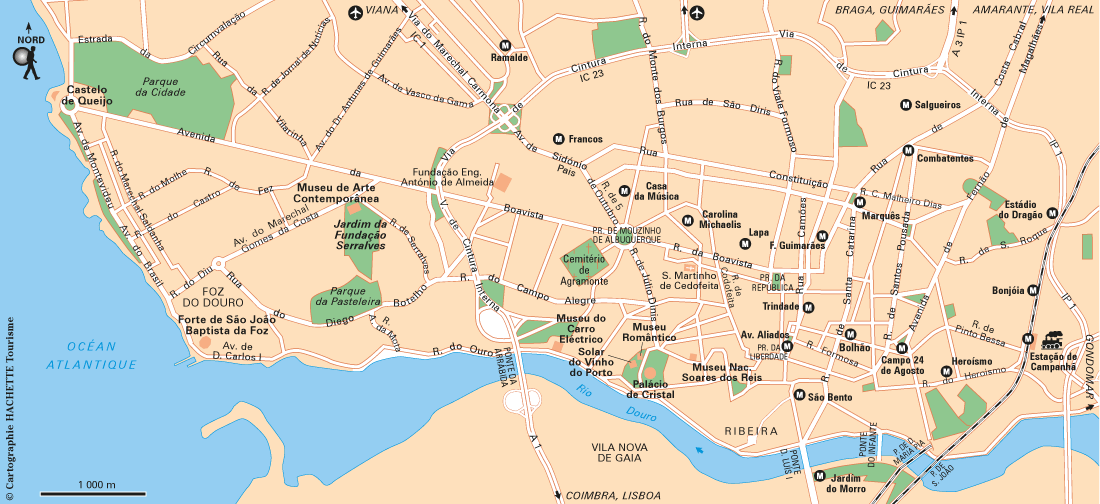
Stroll and feel the spirit of Porto
The city of Porto is best experienced by those who discover it while strolling through its historic centre. As an appetizer, I suggest you start with the Clerigos Tower (Torre Dos Clerigos), which is one of the symbols of Porto. The Church of the Clerigos (Igreja dos Clerigos) and the tower are perfect examples of Italian Baroque architecture and were built in the 18th century.


Due to the health pandemic in 2021, we had to book a time in advance, so we had to wait an hour before we could climb the tower to enjoy the 360° view of the city. If this happens to you too (remember to book your ticket online here), you’ll have plenty to do, either by wandering off into the historic centre or by staying in the square to enjoy a typical Portuguese dish: pastel de Bacalhau (a kind of fried cod cake).
Indeed, the Casa Portuguesa do Pastel de Bacalhau is a famous place to taste this and combines this icon of Portuguese gastronomy with Serra cheese (also typical of the Iberian country). A bit expensive, 5 euros, (for what it is), we decided to take only one.
This was a good decision, as we are not fans of this food, which will surely delight the taste buds of other visitors. But we couldn’t leave (even though it was our first hour in the city) without tasting some specialities!
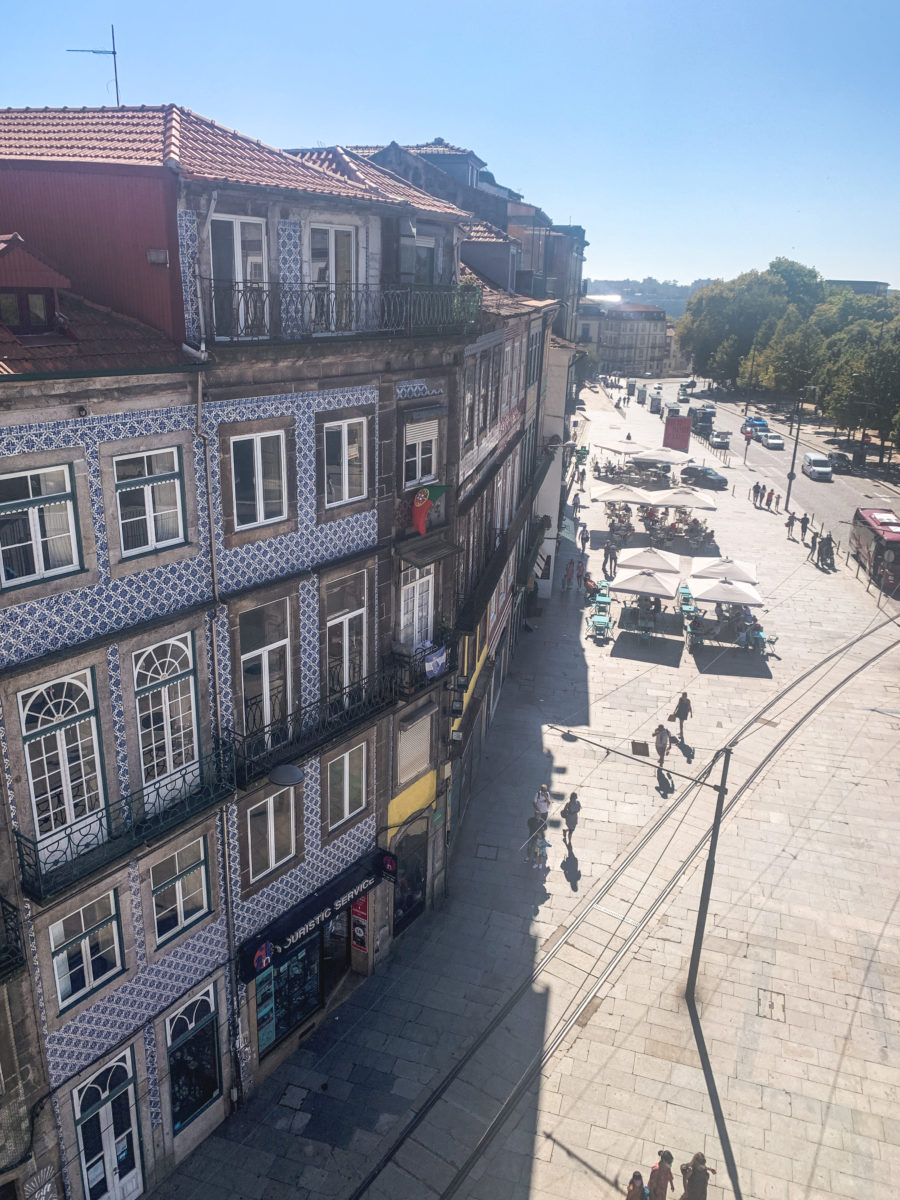
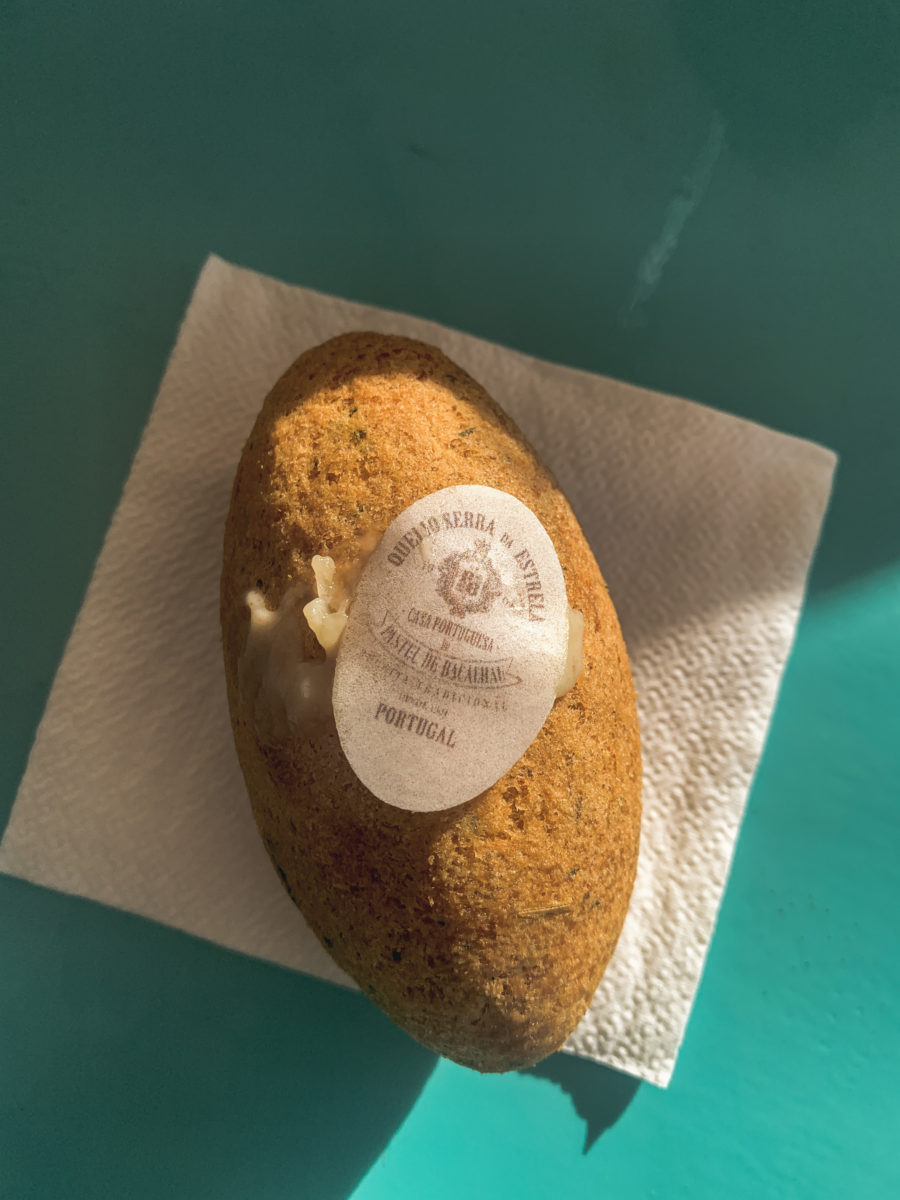

After this short break, we finally discovered the Clerigos Tower. The visit begins with a stroll through the church, which is very beautiful. However, what I particularly enjoyed was climbing a tower to discover distant horizons (in Innsbruck or Brno, I love climbing these old towers full of charm and secrets).
Well, distant horizons, it was especially to see Porto from the top, since the Tower is the highest in Portugal at 76 meters. 200 steps will take you to the top (with an intermediate floor).
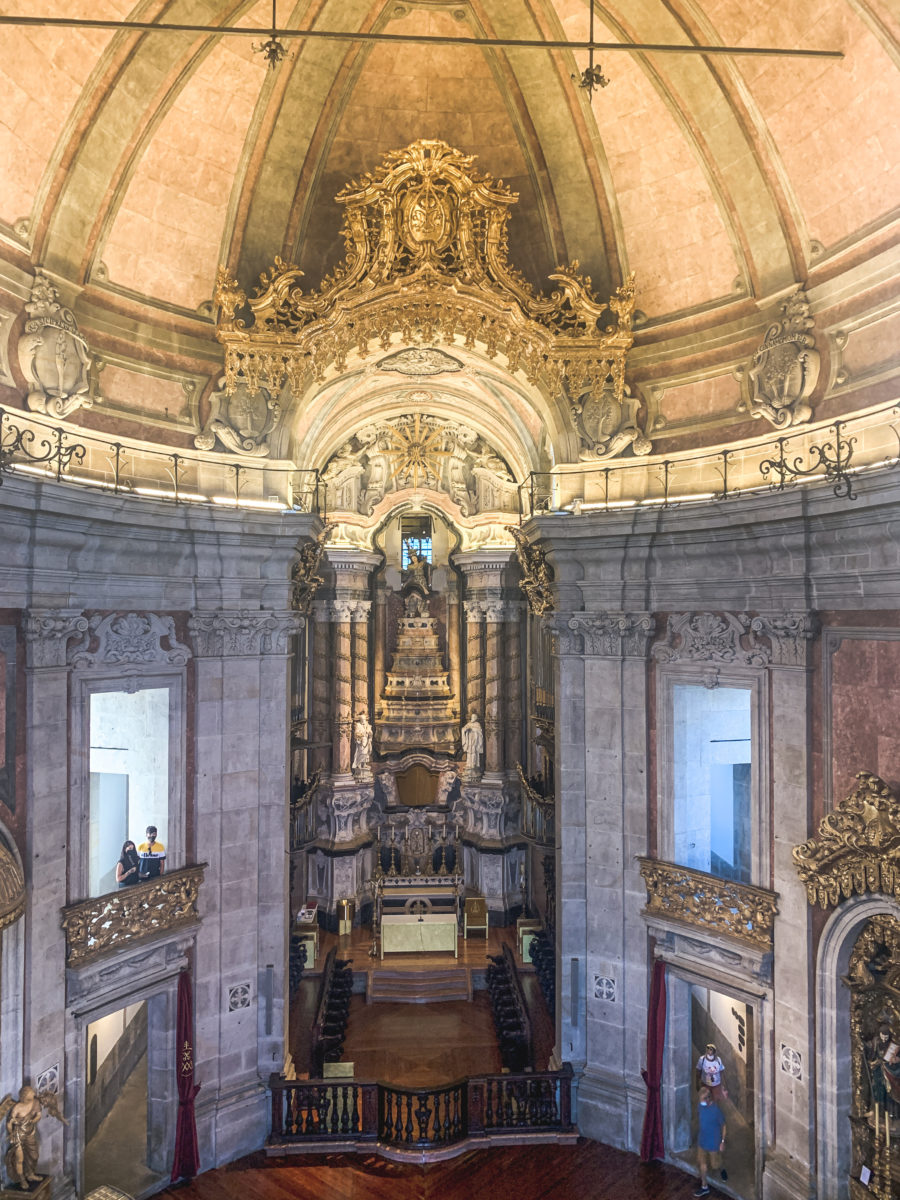
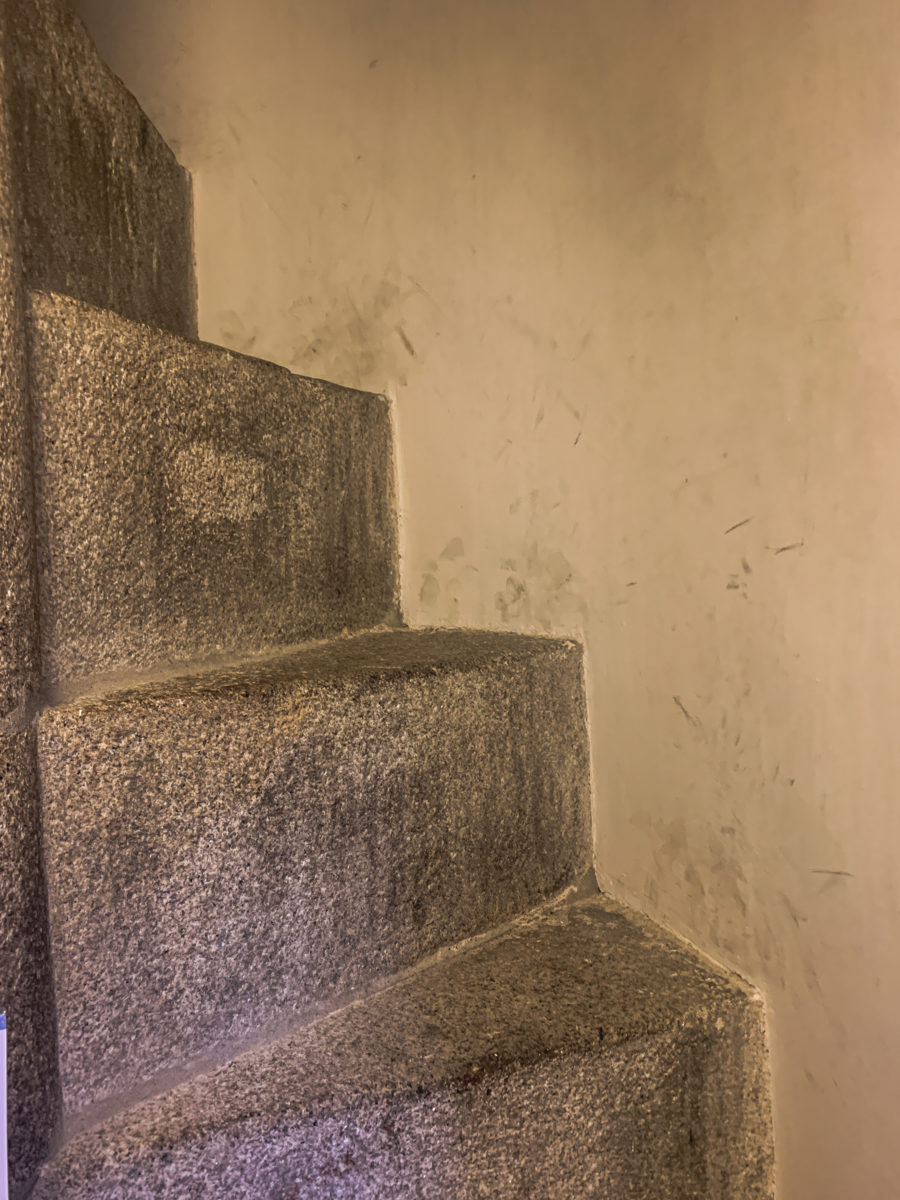
Each time I imagined myself in an adventure like Fort Boyard (but without the beasts, fortunately), we also discovered nearly 50 bells that make up a large carillon. And then, the view is worth it. We got to know the city, its different districts, its organization, its ochre roofs, the Douro River, and the Port wine cellars in Vila Nova de Gaia, in short, in one glance, we had a panorama of the places that we were going to explore later on.
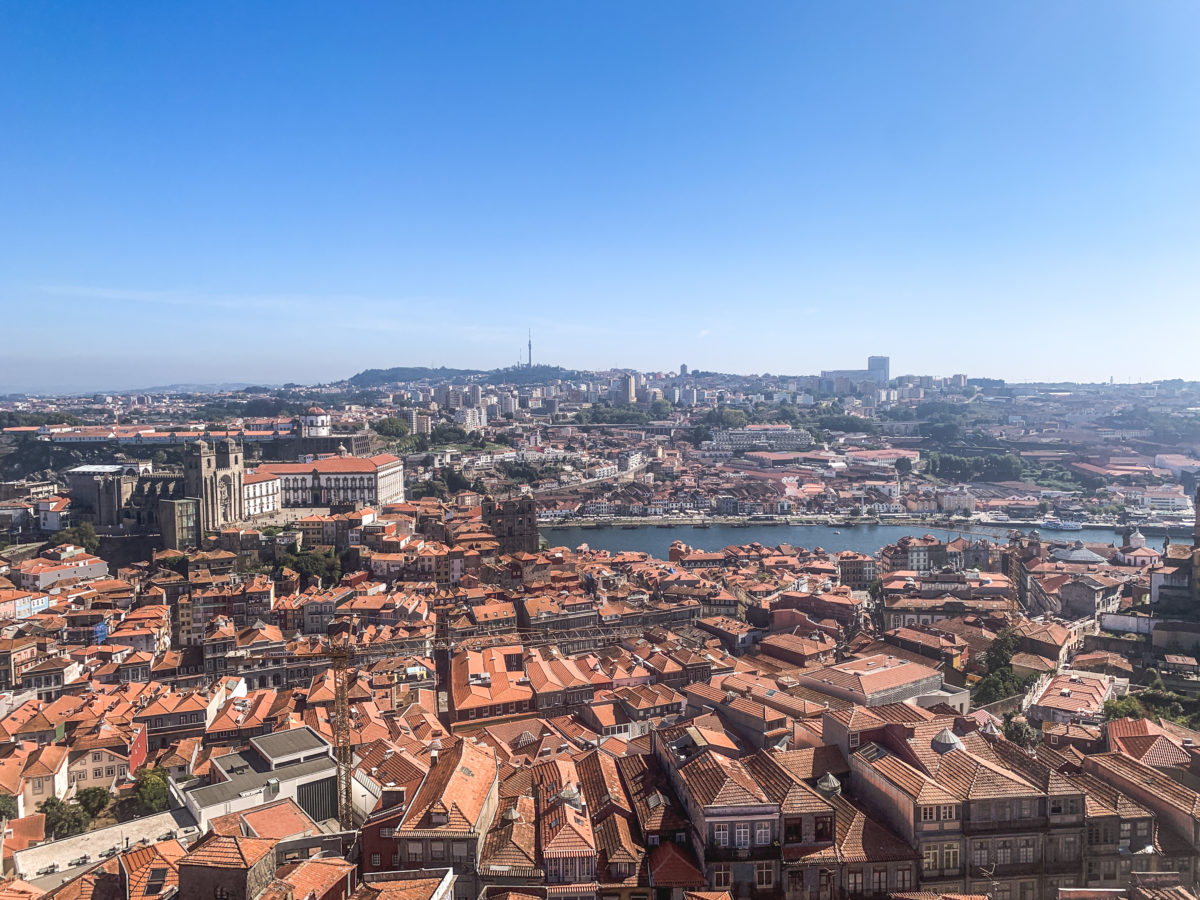
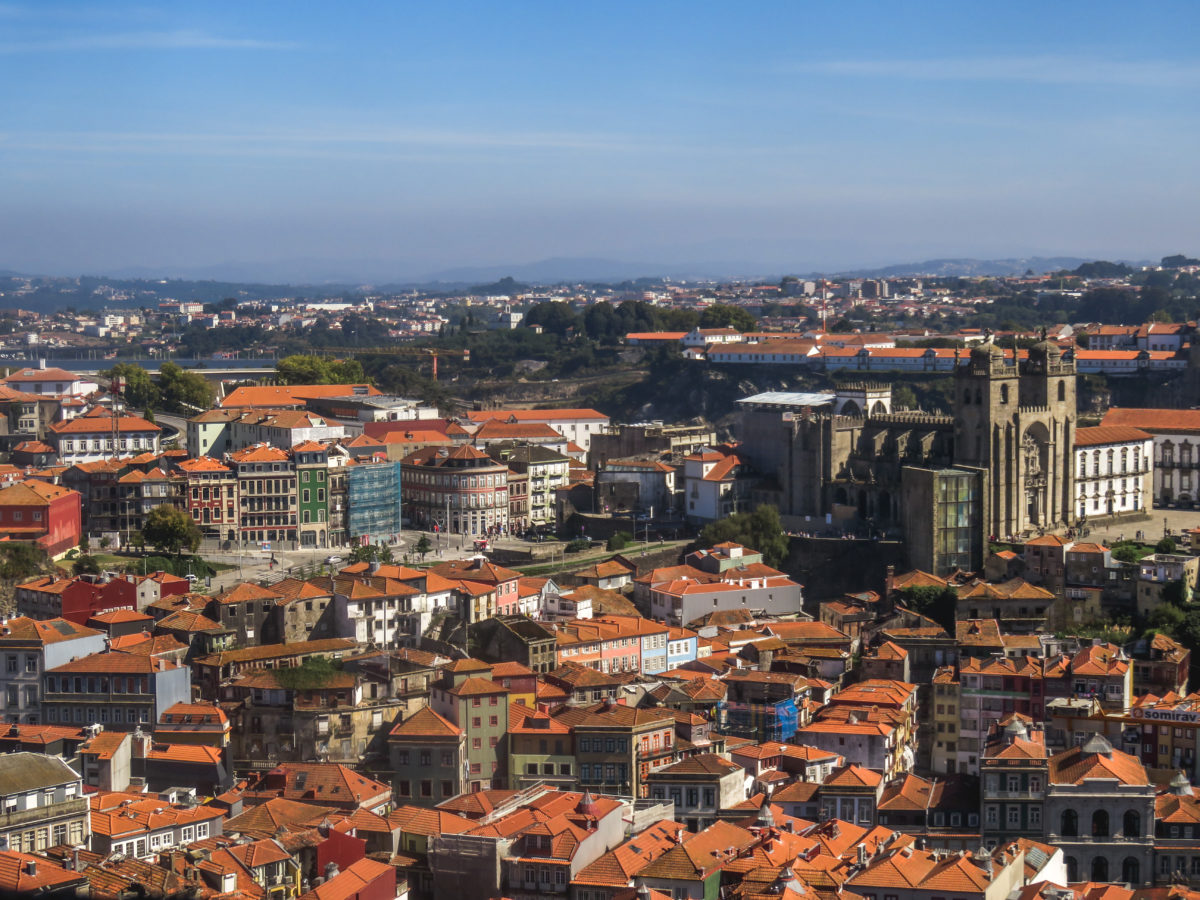
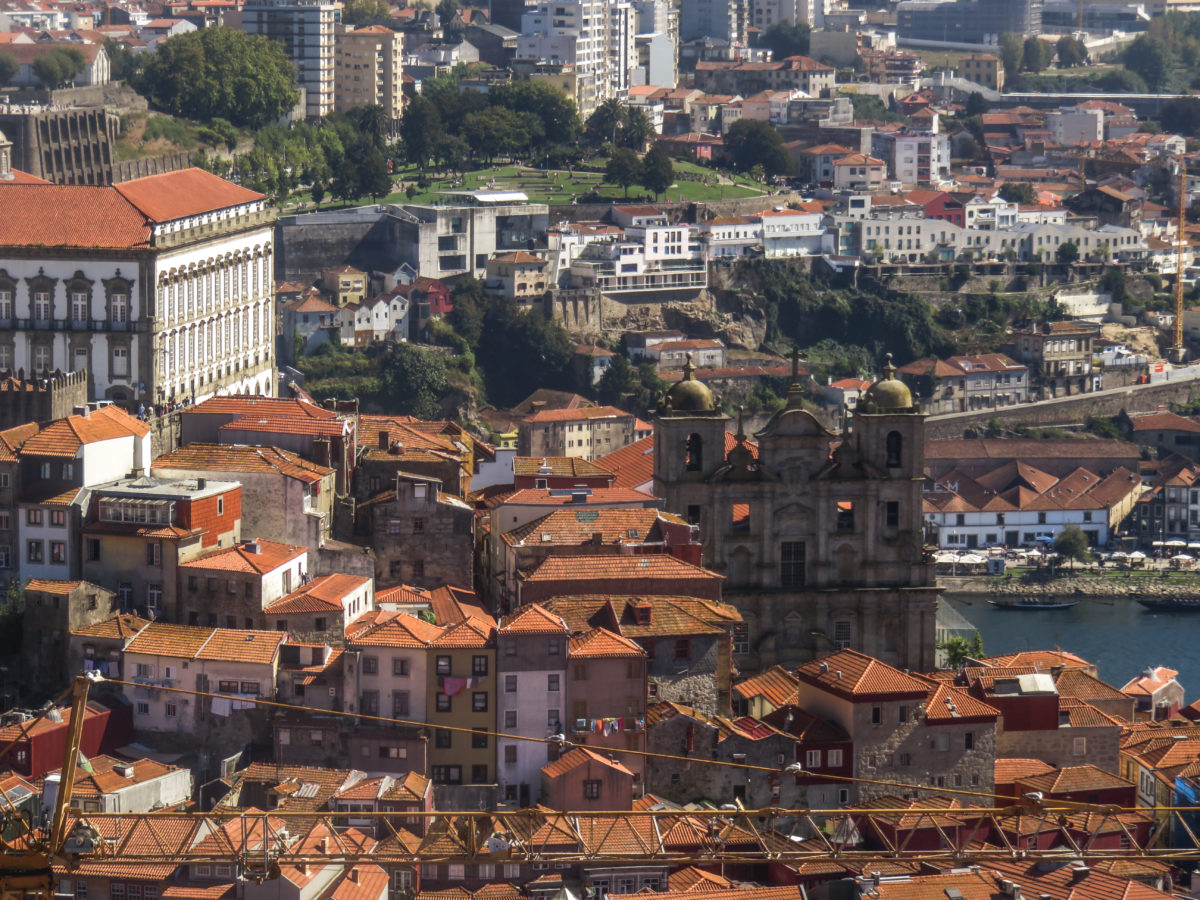
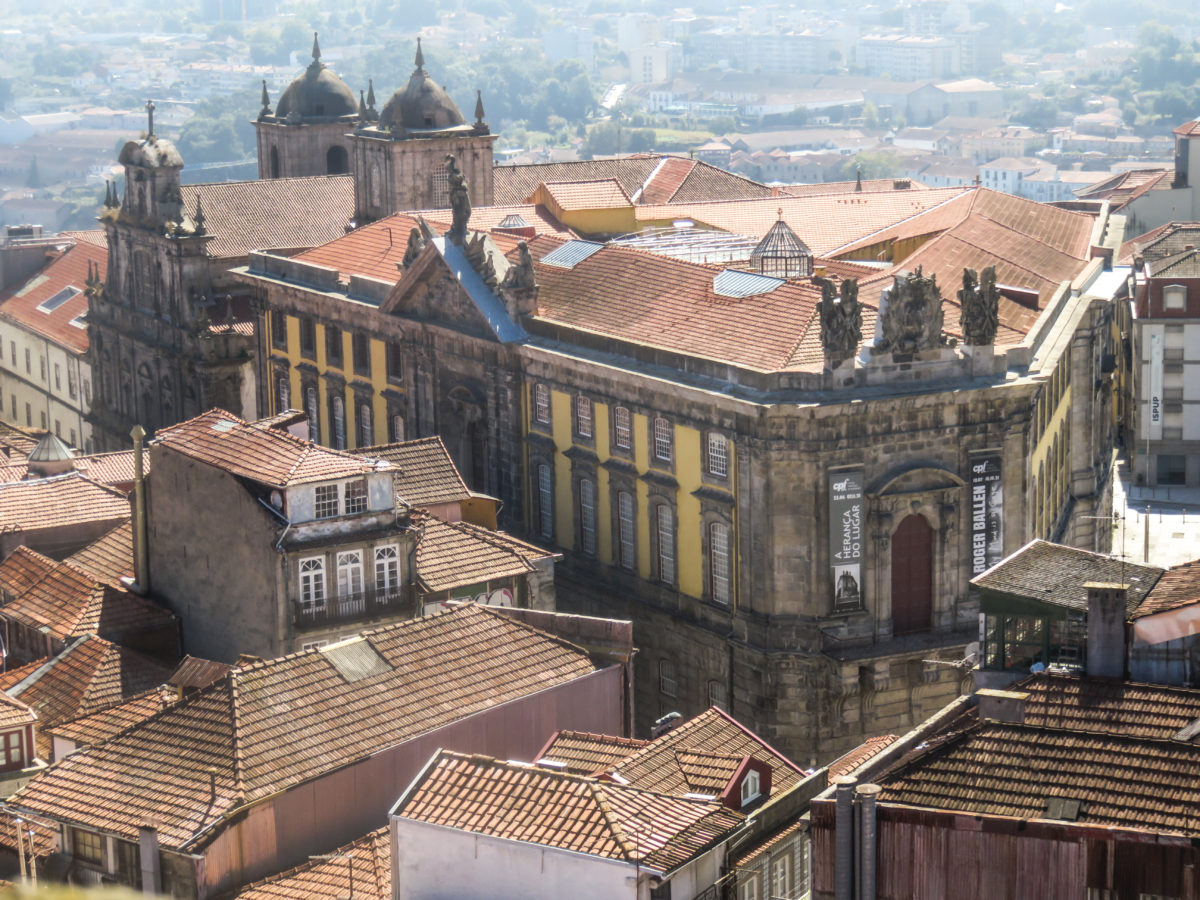
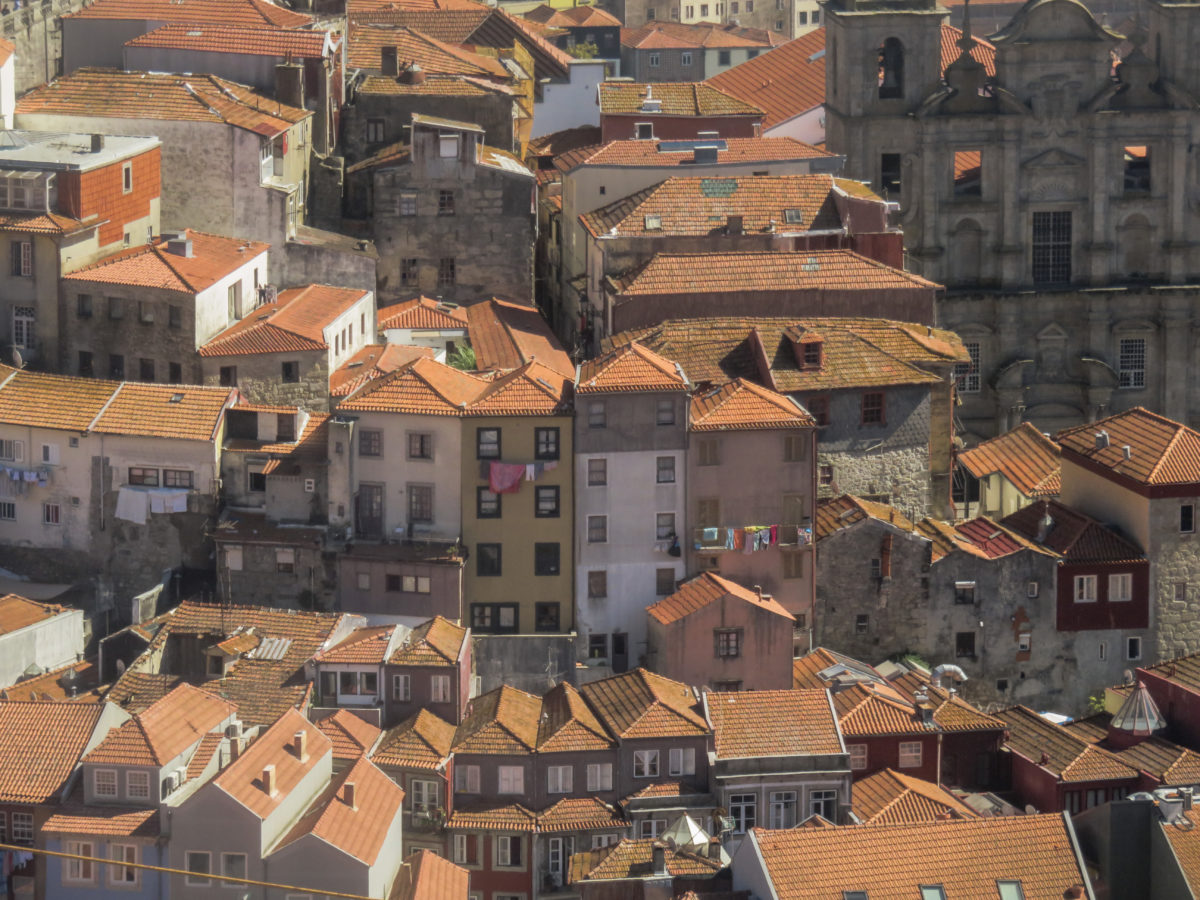
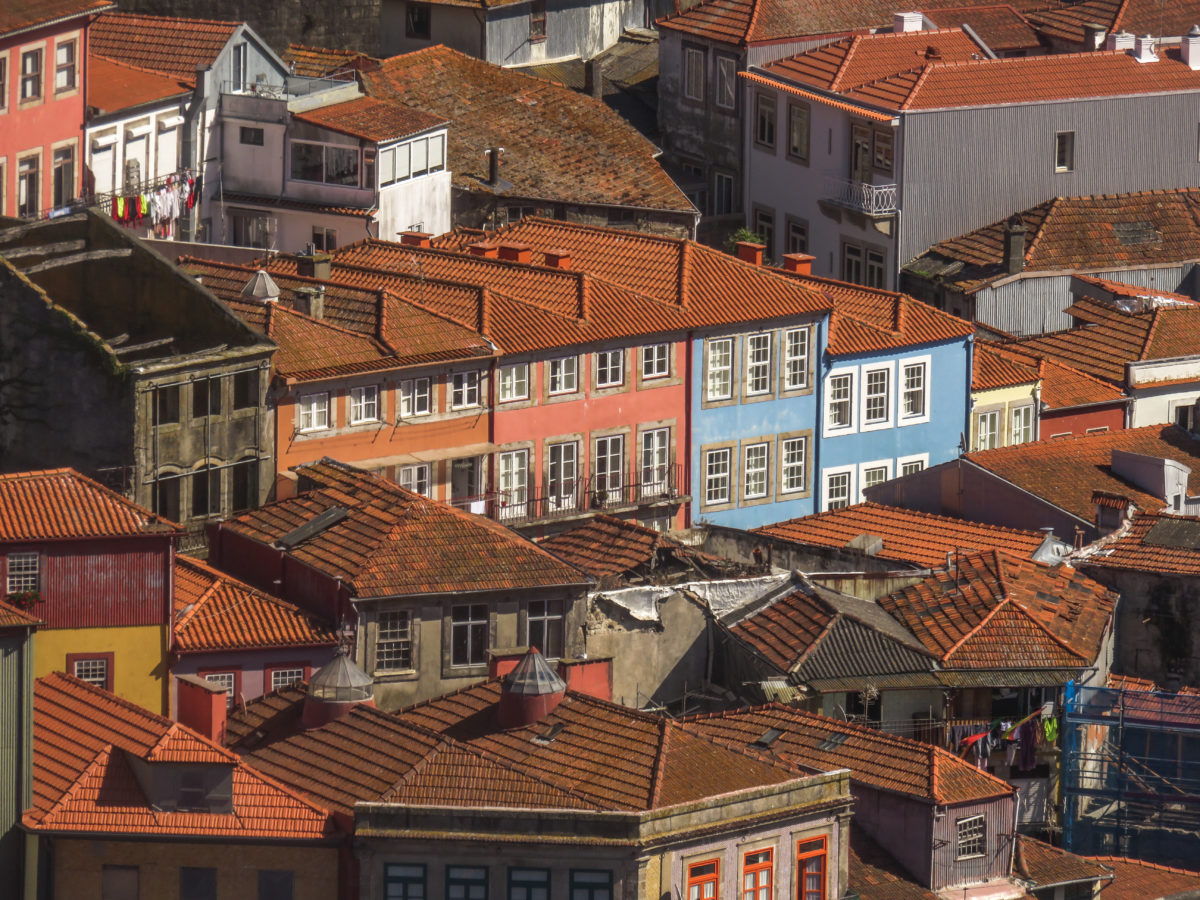
After this visit, we let ourselves be carried away by the various historical streets of Porto, which led us to the authentic district of Miragaia. You’ll find out soon enough with this article, but there is no set plan of what to do or what to see before something else.
Just let yourself be carried away by the good vibes of Porto (or its delicious aromas, better than pastel do bacalhau, but shhh). Therefore, take the time to venture into the alleys where the laundry hangs nonchalantly in the windows, from where some residents may sometimes greet you warmly.
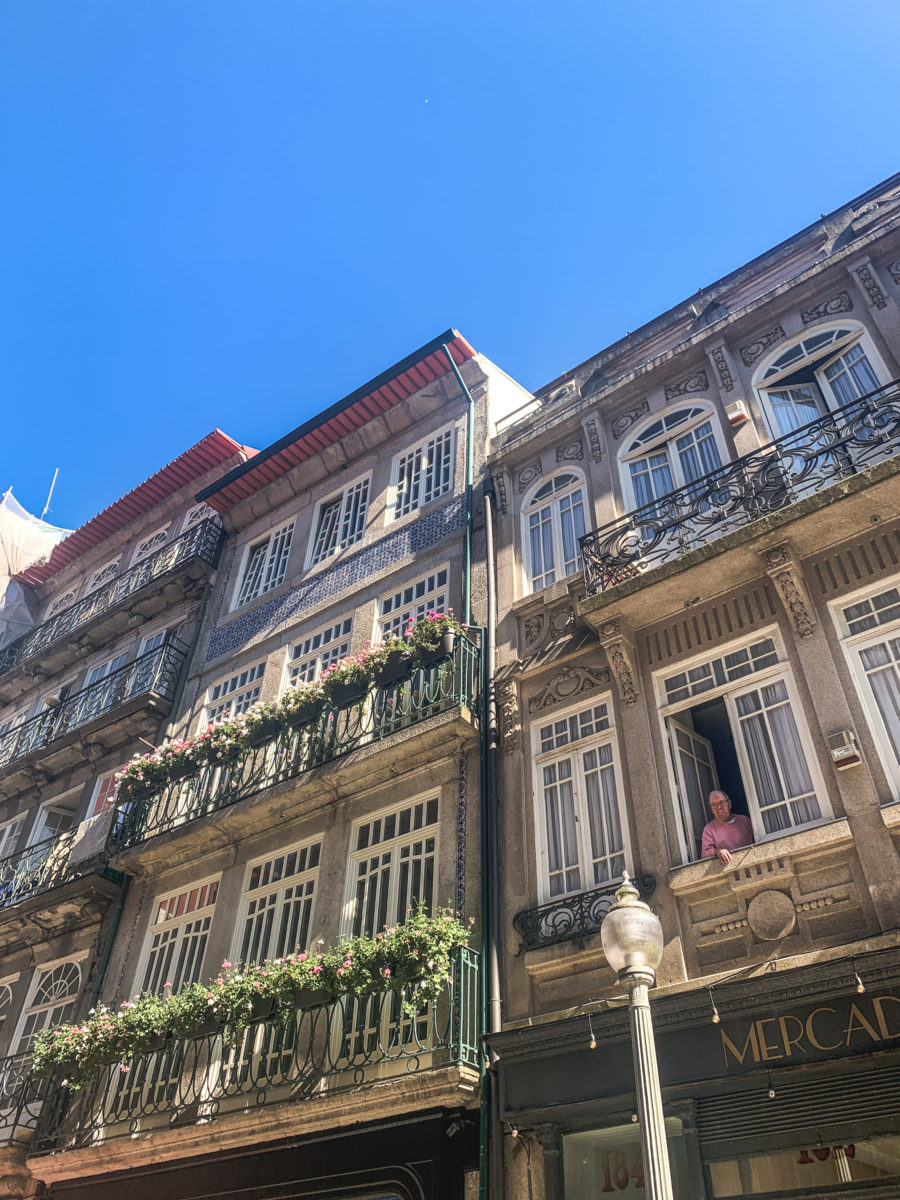
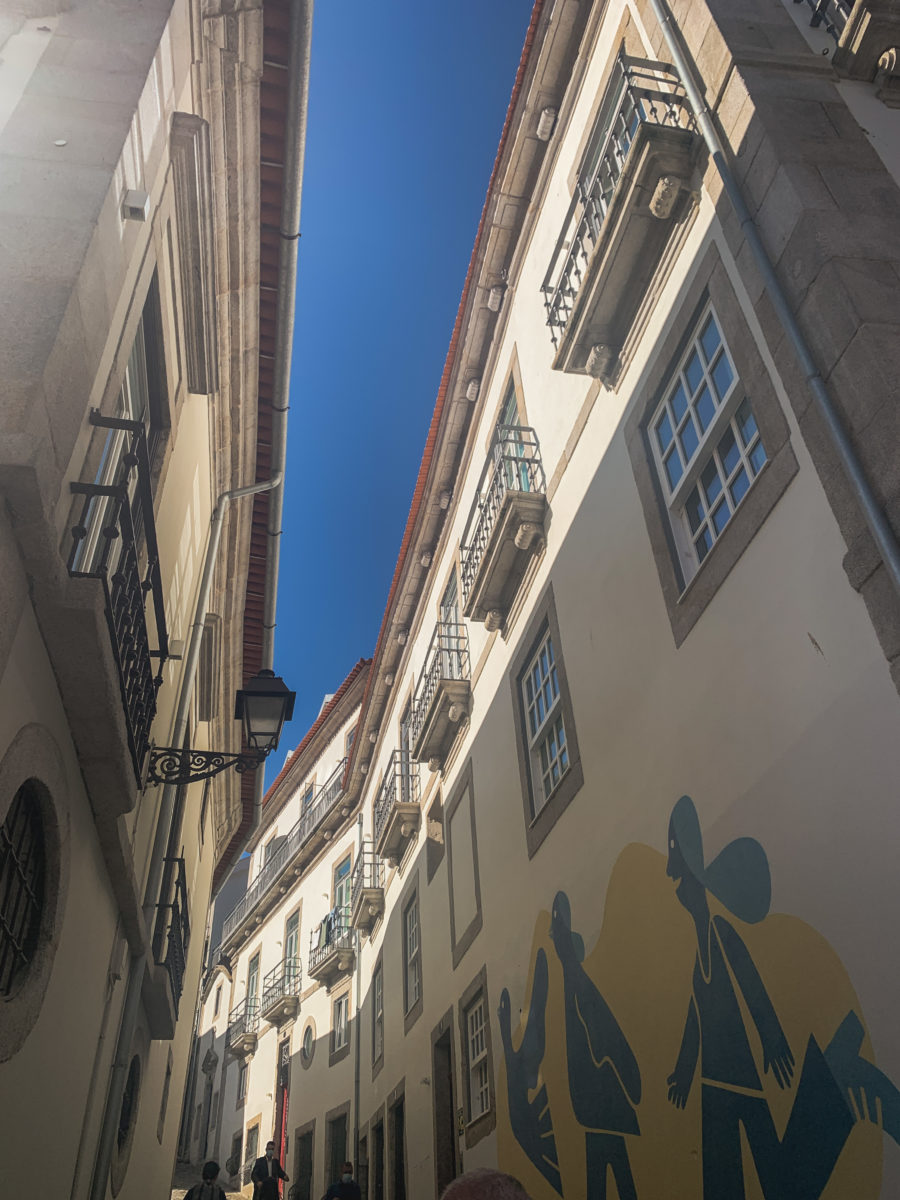
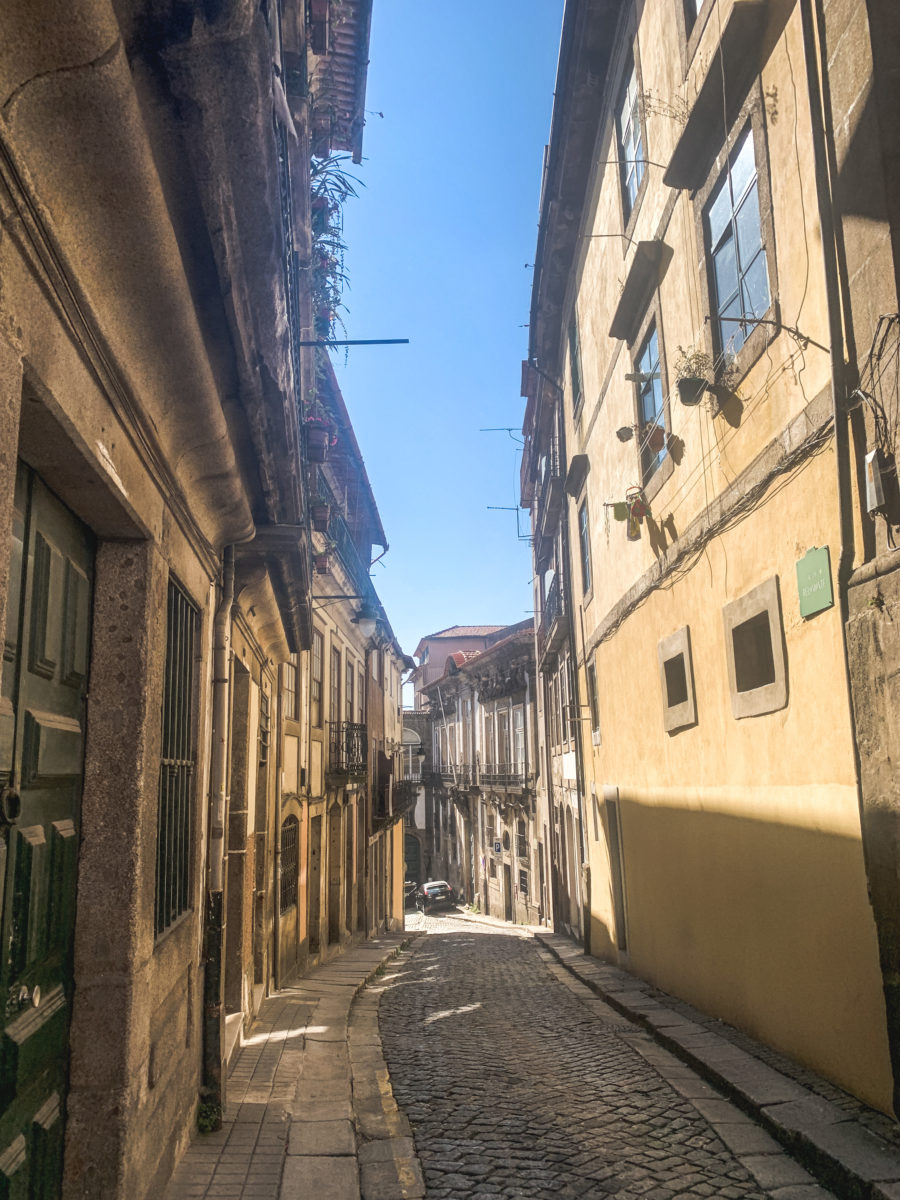

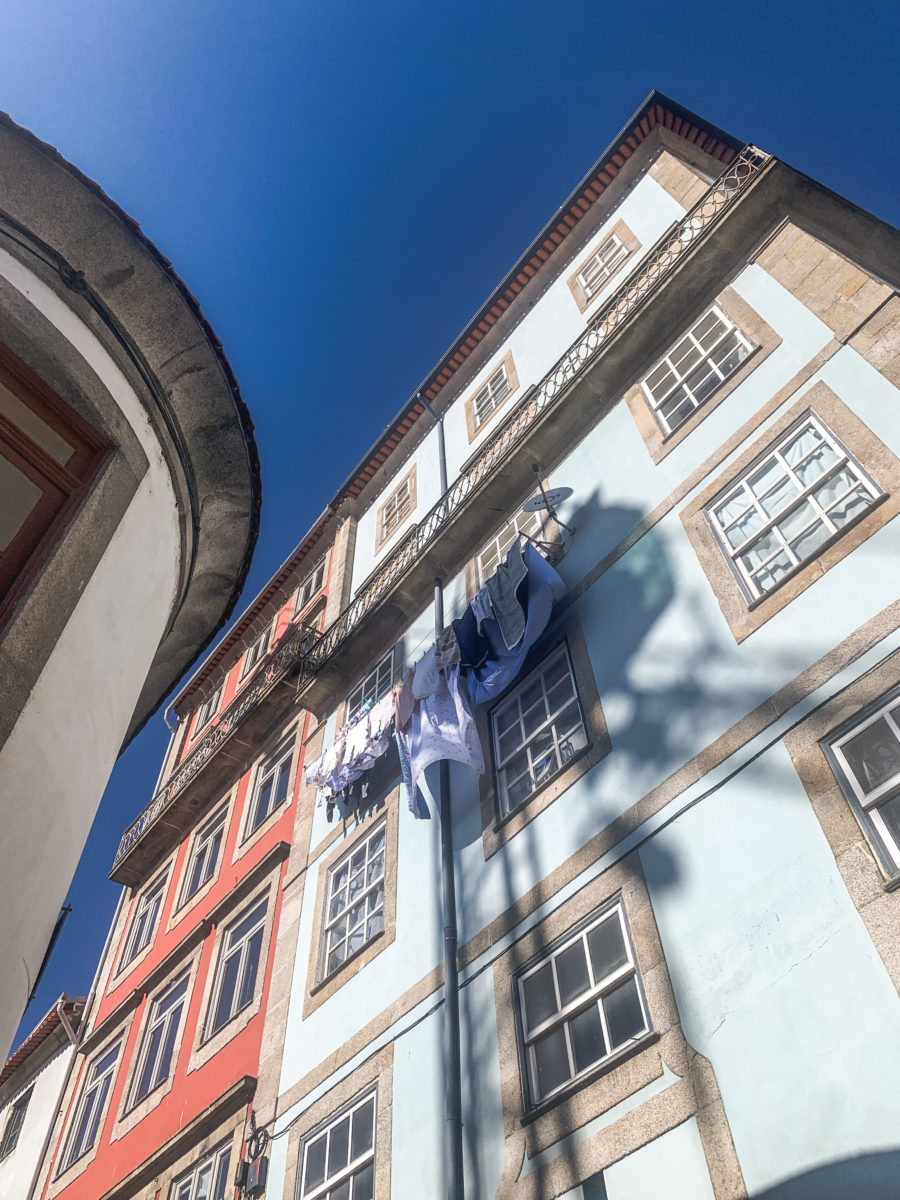
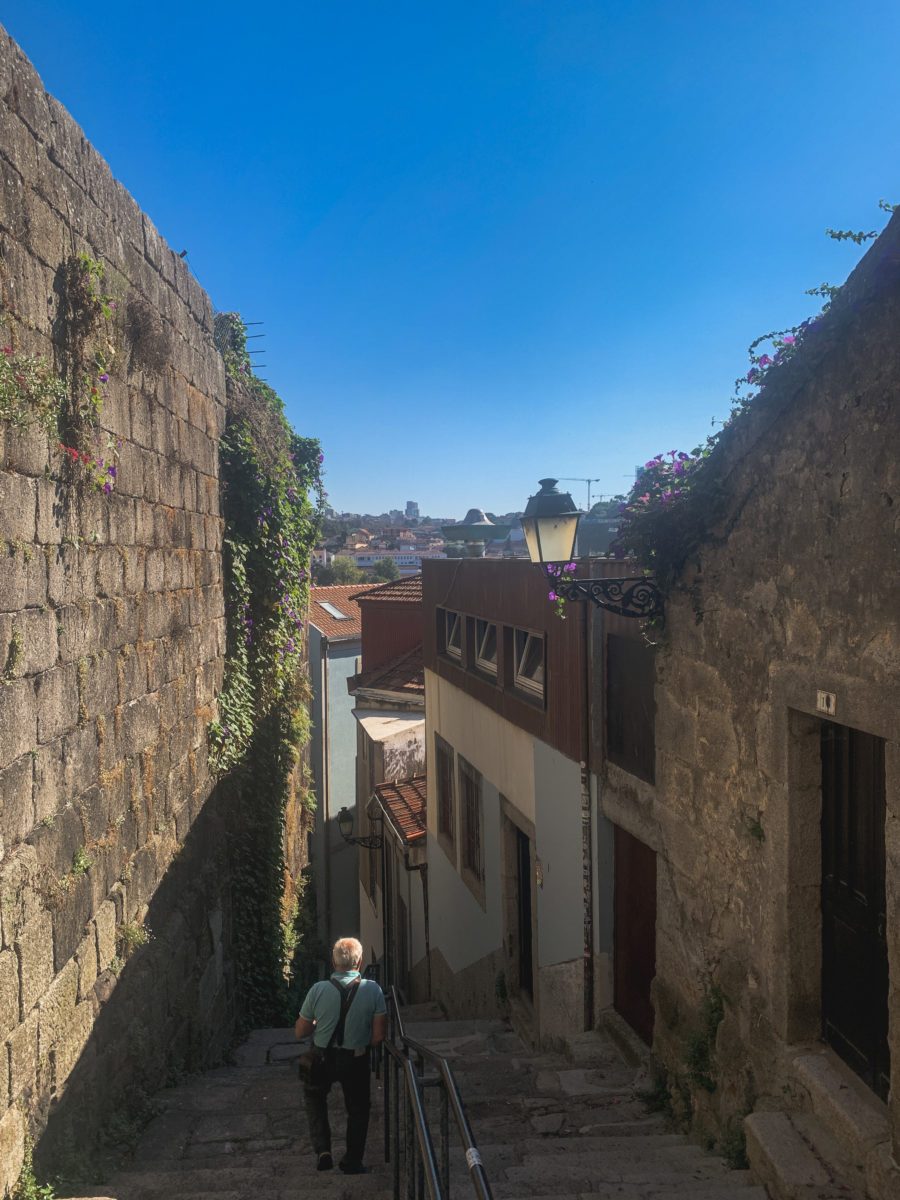
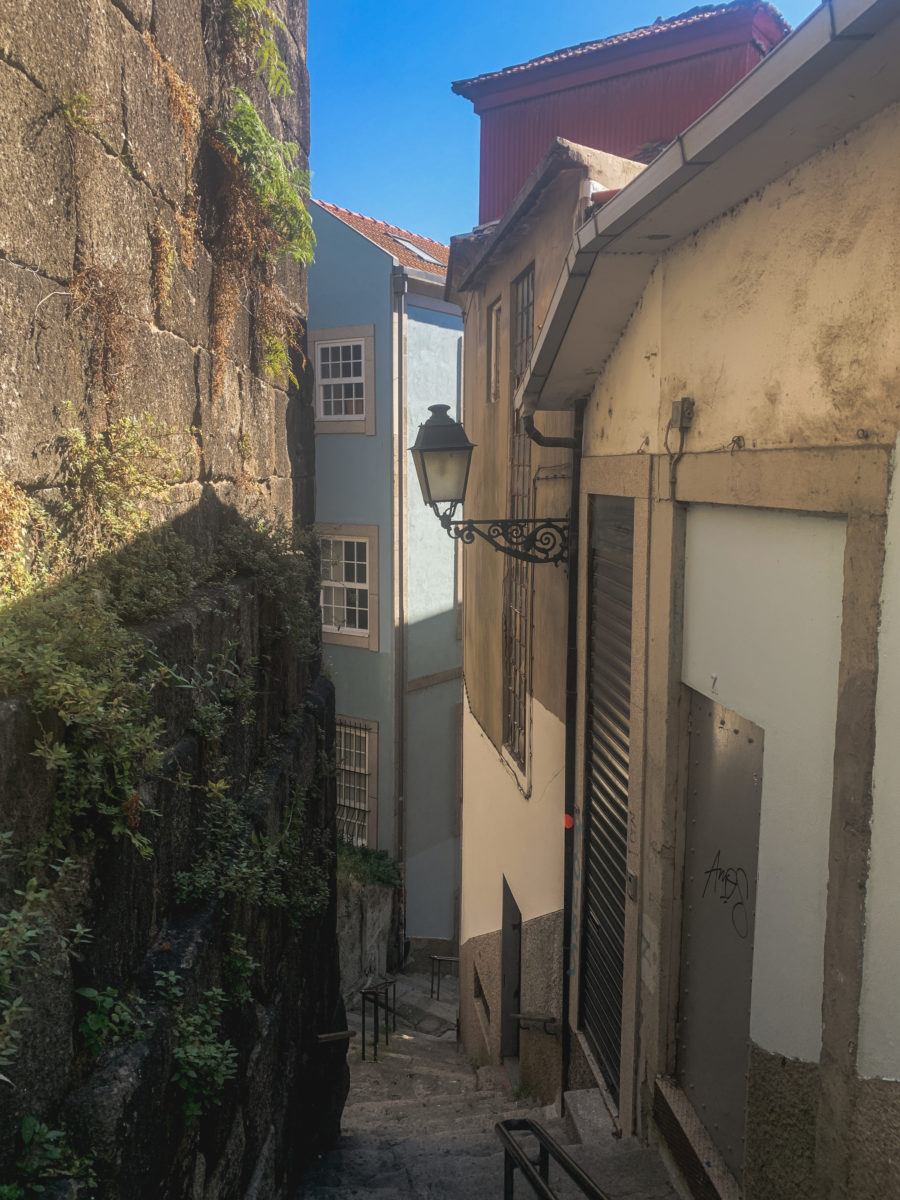
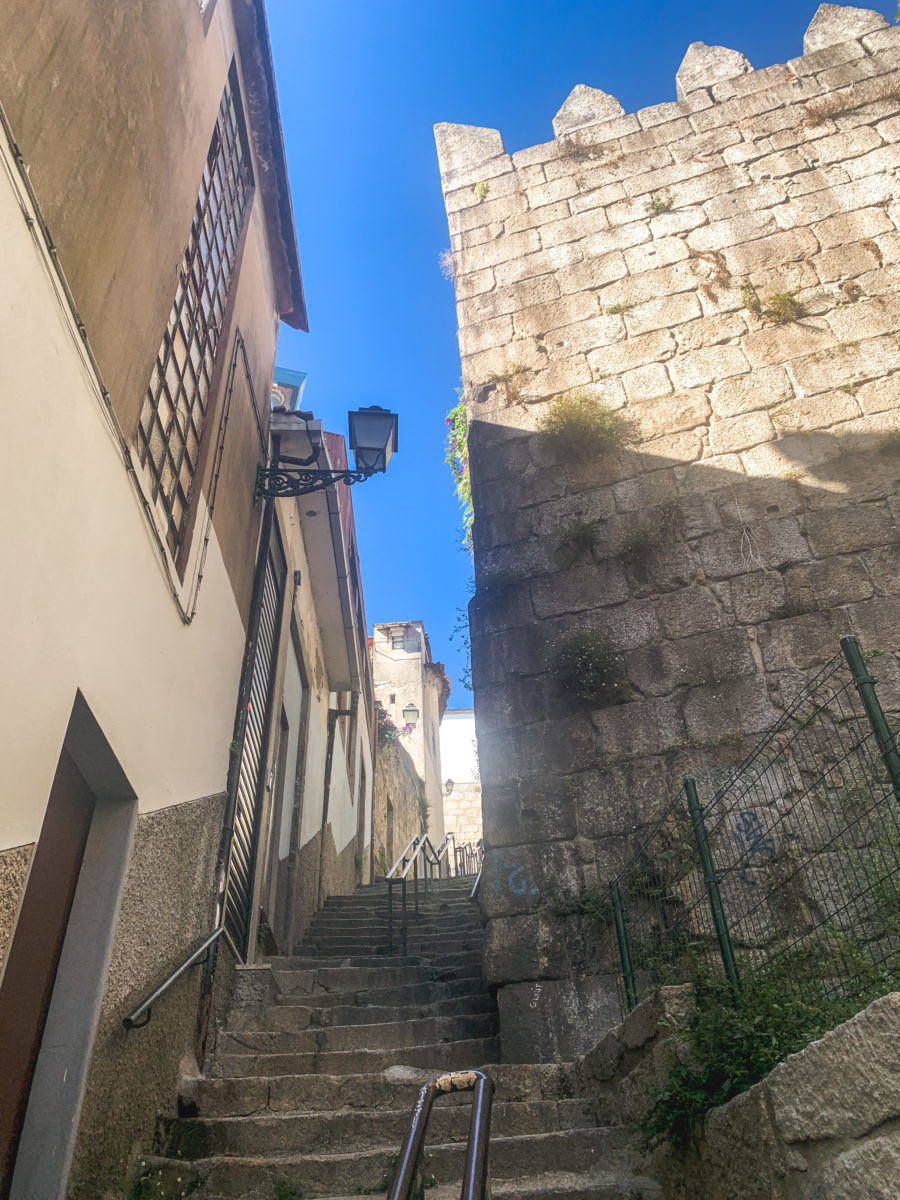
This area of Miragaia is perfect for escaping the many tourists who mainly wander around Ribeira, the historic centre. We wandered there as I wanted to have an apéritif at the Garden Of Virtues (Parque das Virtudes), a terraced garden with a breathtaking view of the Douro at sunset. However, we didn’t discover an idyllic place (lots of needles and rubbish on the ground), and probably didn’t understand where the official entrance to this Garden was. It is however at the Passeio Virtudes (just at the top of the Garden) that the inhabitants gather. The atmosphere here is warm and inviting for a drink.
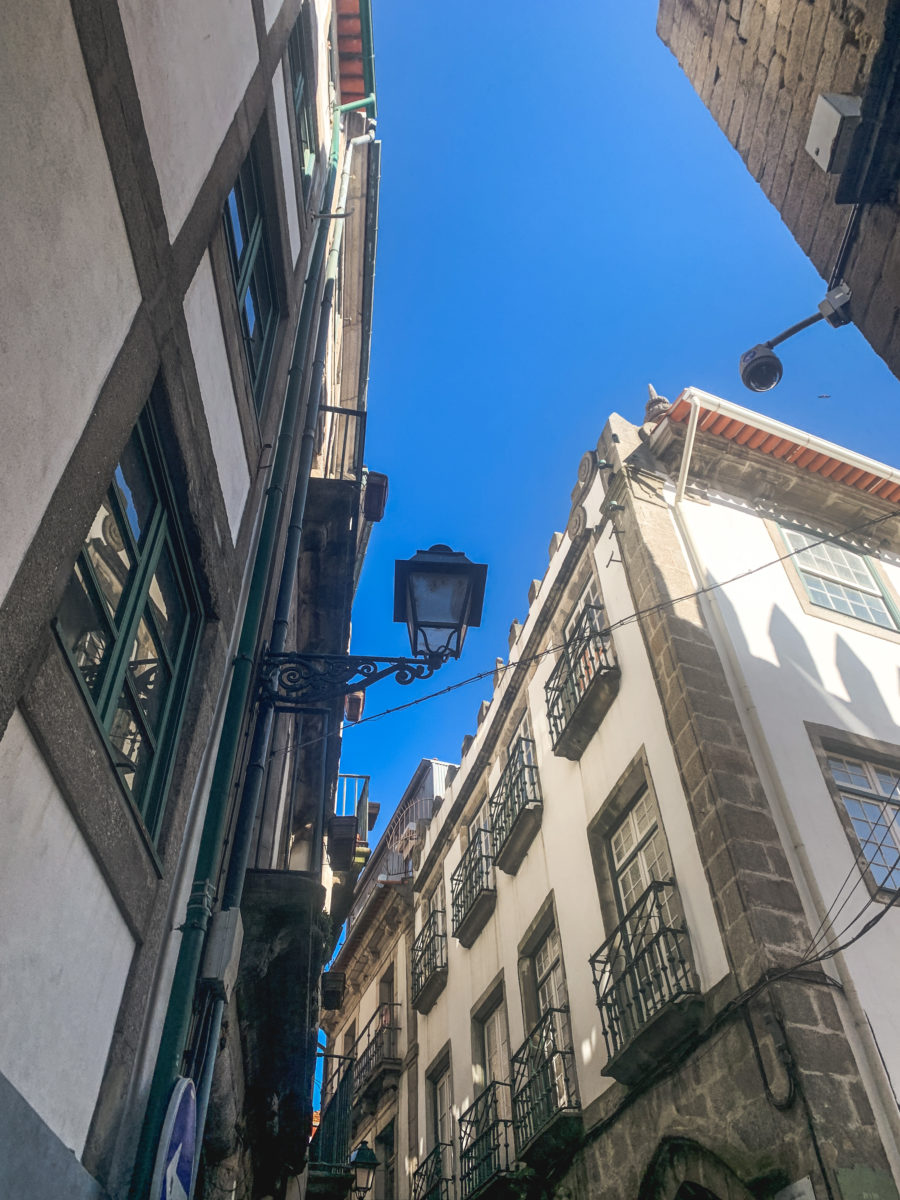
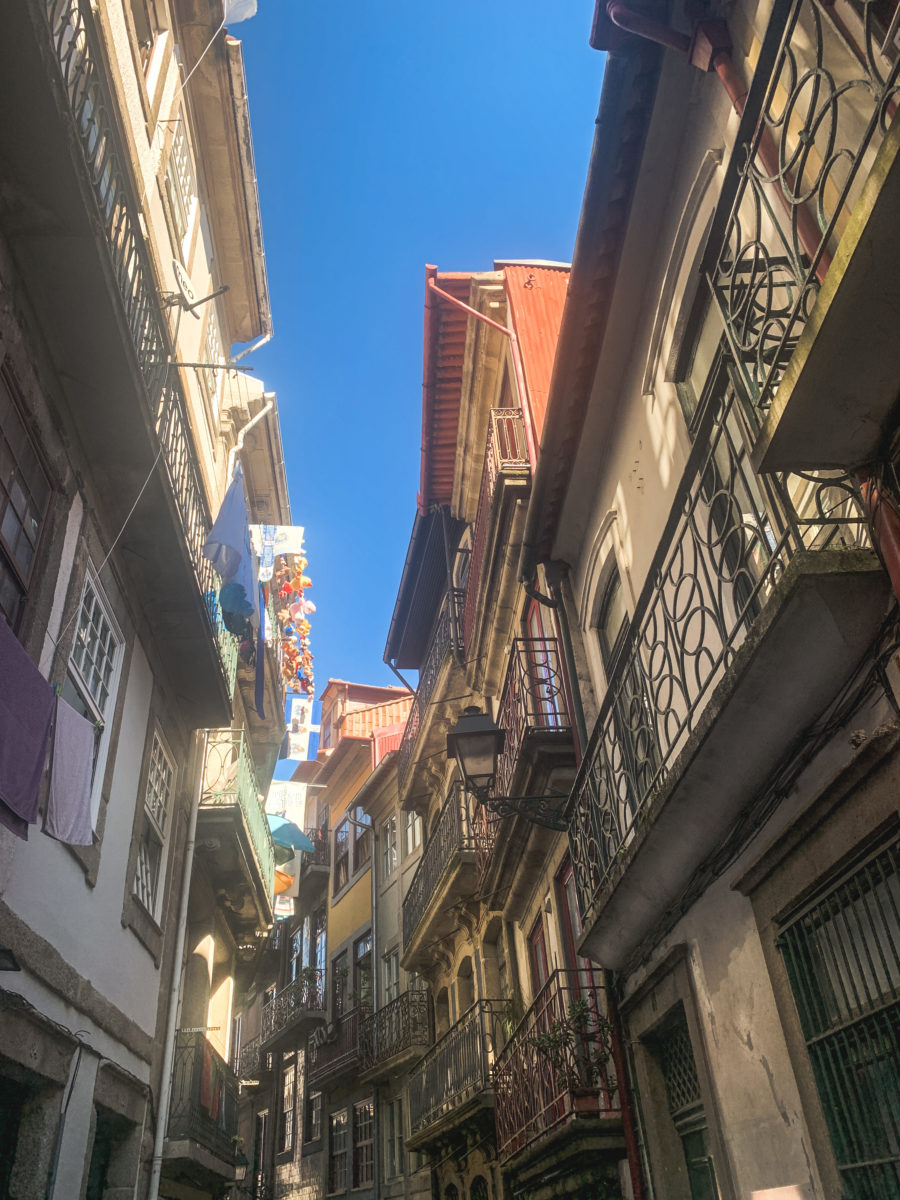
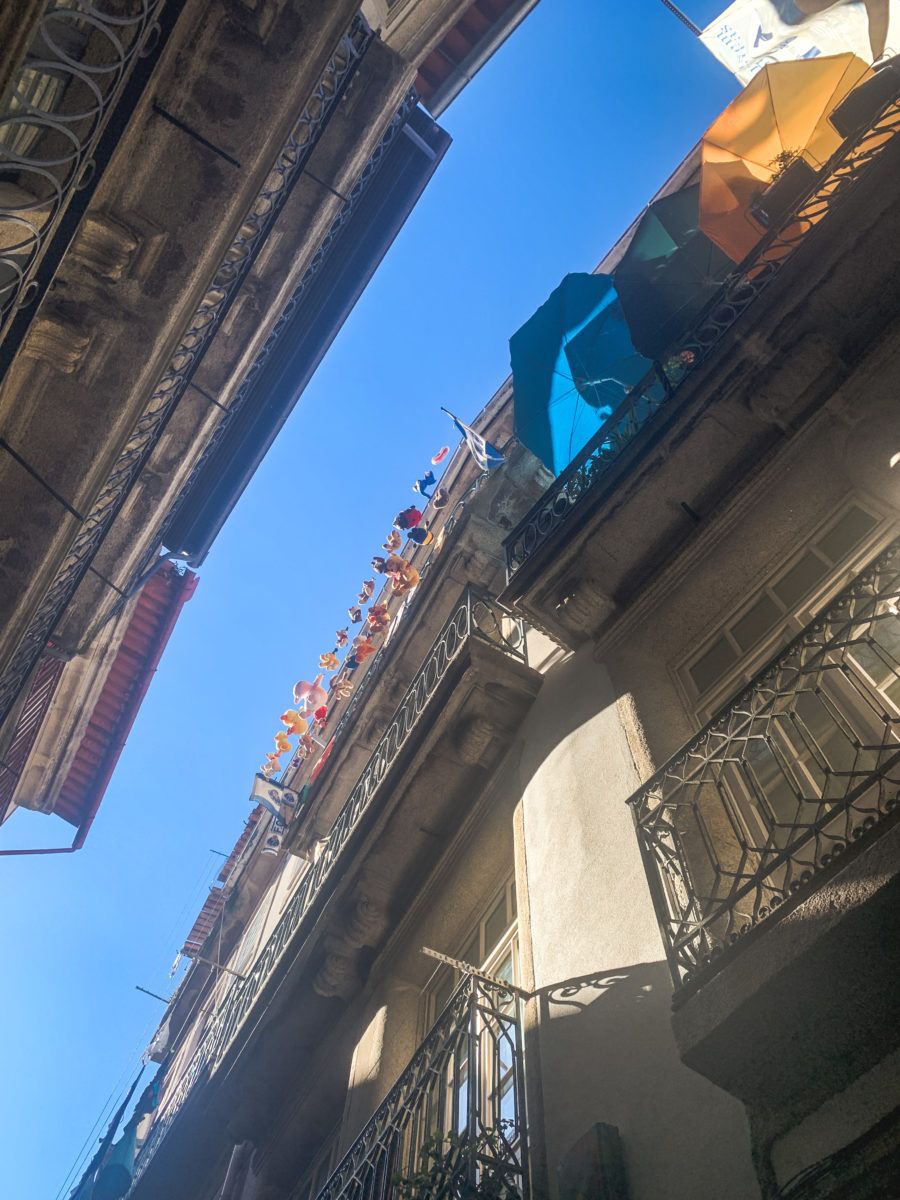

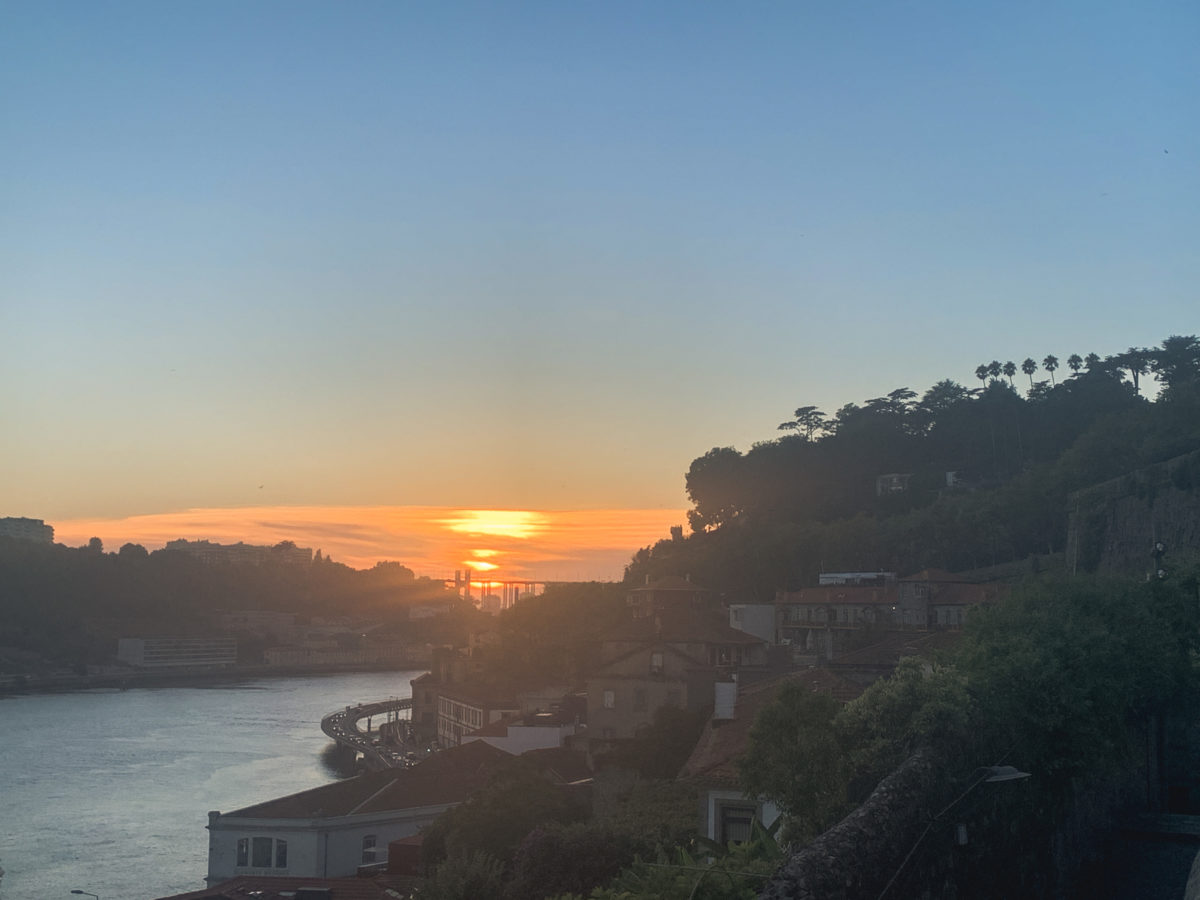
Armazém‘s antique shop is a mishmash of antiques, but it’s also a warm place to have a drink and play table football.

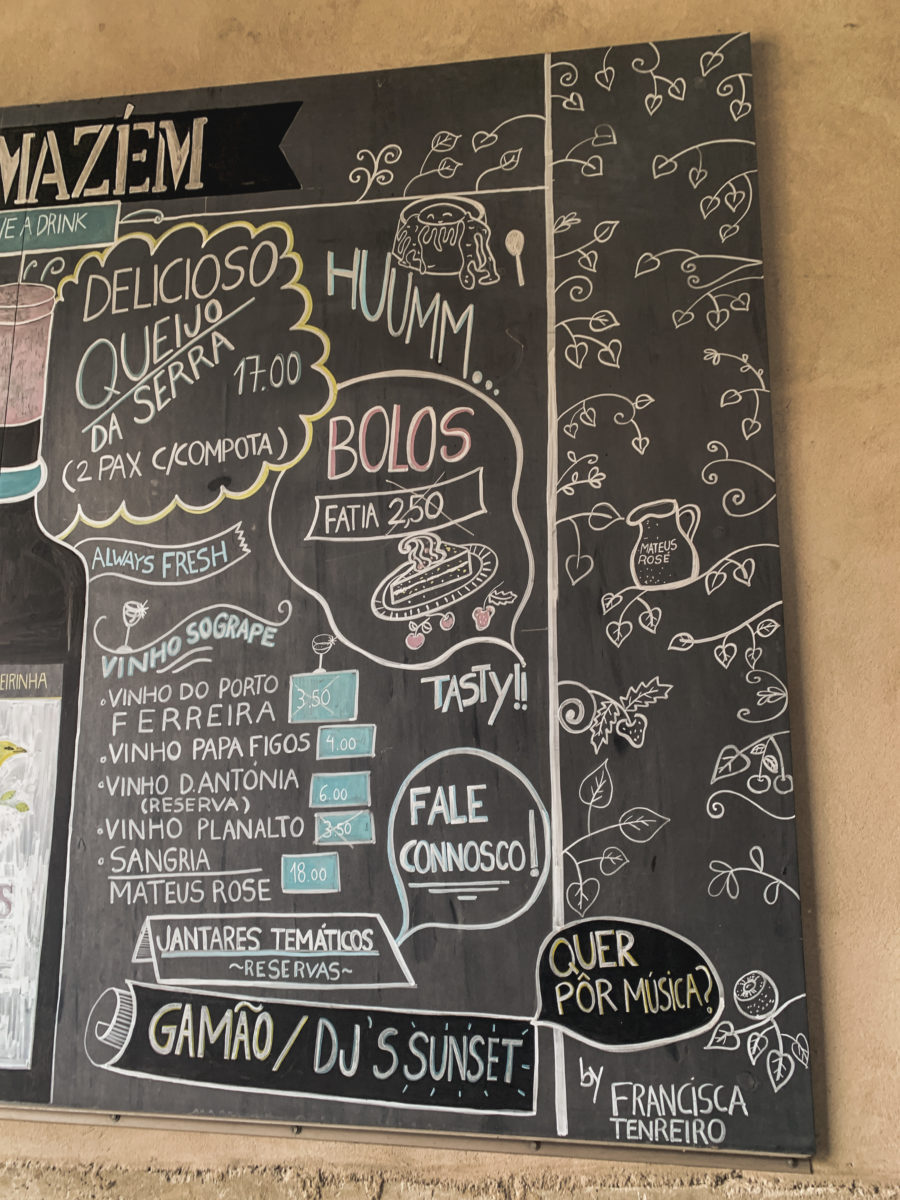
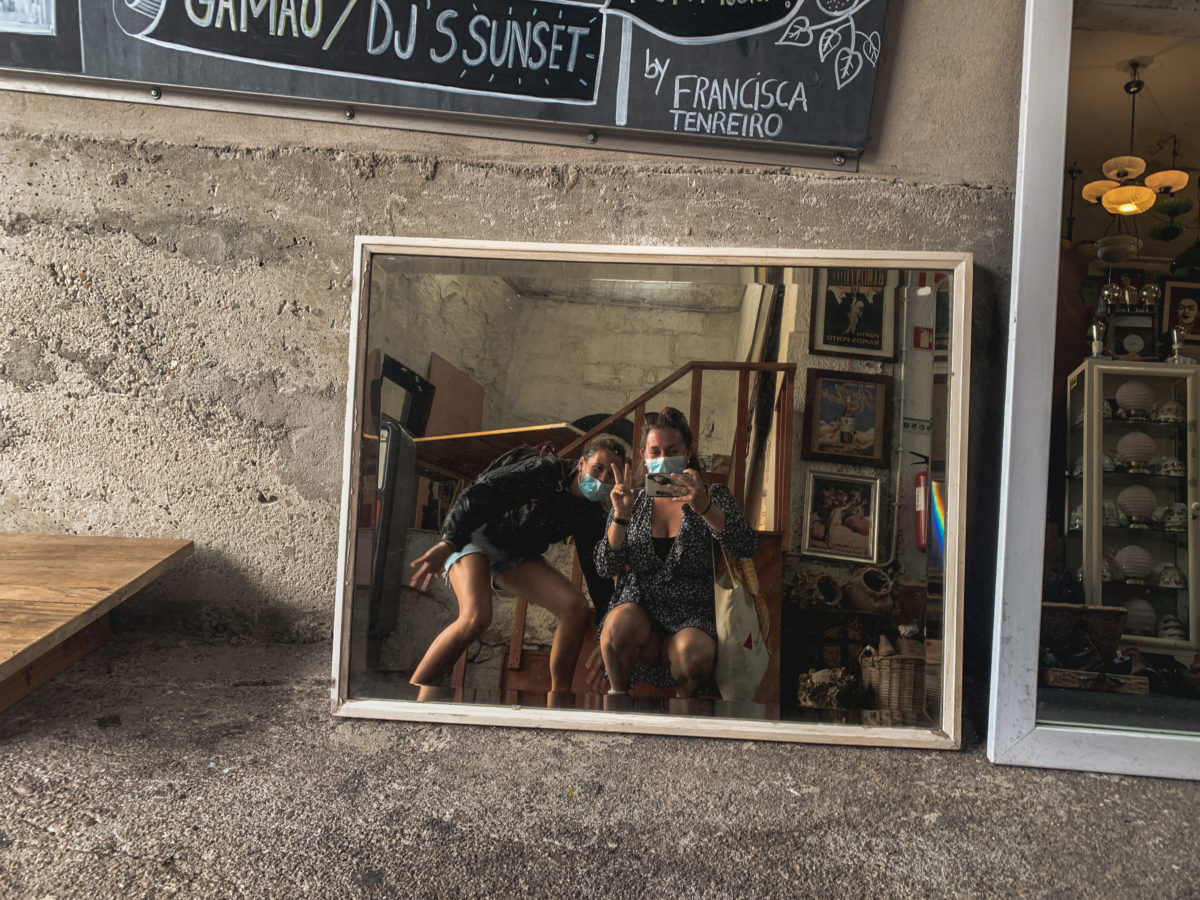
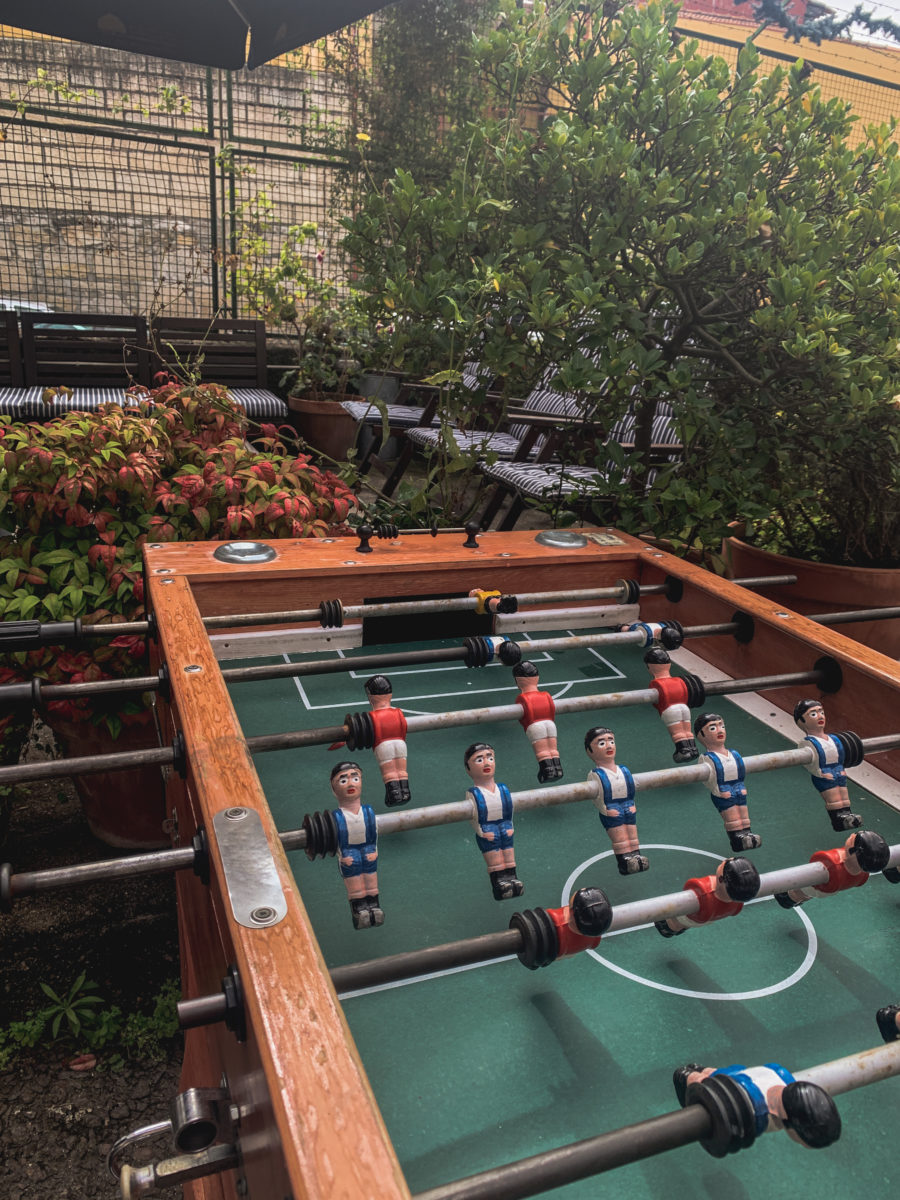
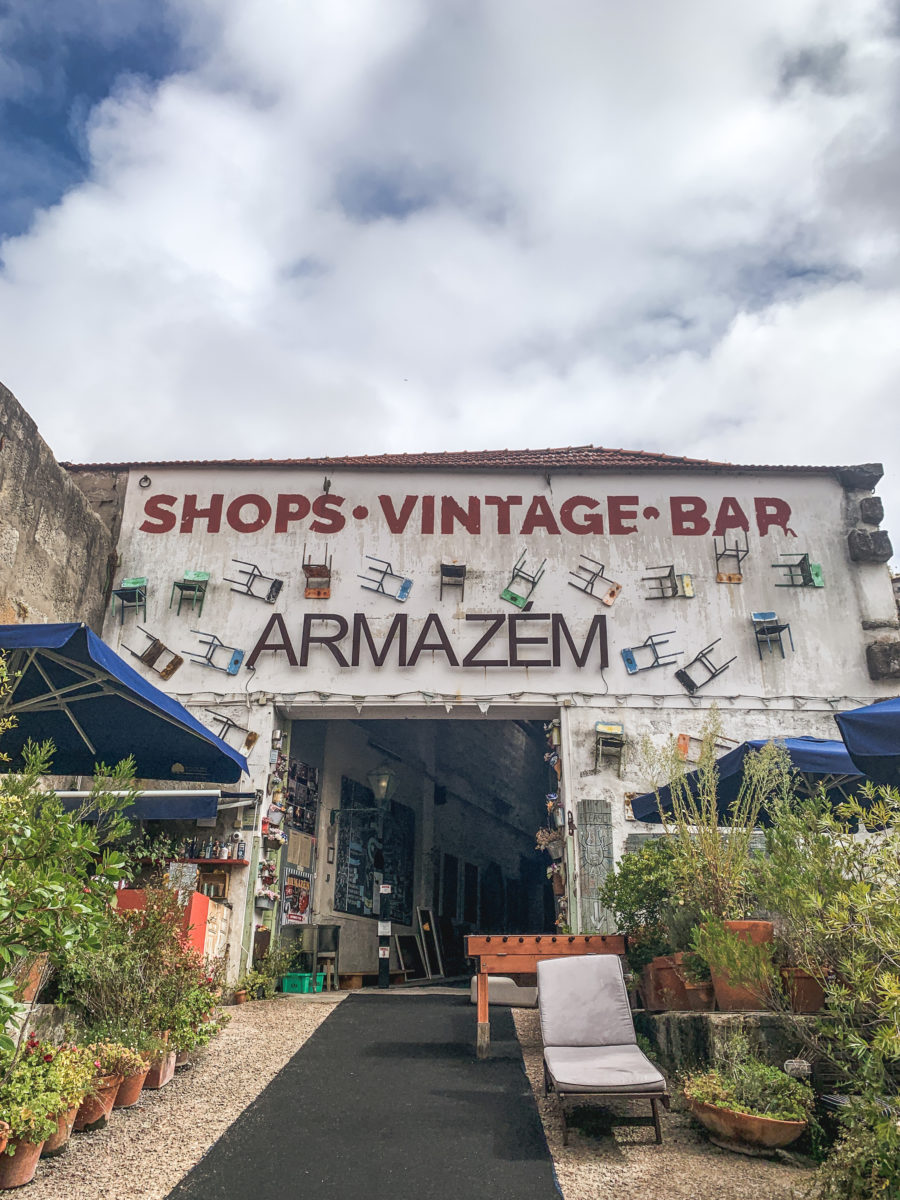
The next day we explored Ribeira and its many sprawling streets. Listed as a UNESCO World Heritage Site since 1996, this is the liveliest part of the city! Pick a street at random, and you’ll find a new and amazing place each time, including the Sé Cathedral, resplendent at sunset, or the Douro quays, where you can enjoy the colourful facades and the Dom-Luis Bridge, Porto’s other landmark over the Douro.
Porto’s cathedral, the Sé, shines on its “hill”. Another important aspect to consider in Porto is the fact that the city is on a slope. You will be doing a lot of sport when you walk around its many corners.
The view from the cathedral is also magnificent over the ochre roofs of the city. The cathedral is the oldest religious building in the city (it was built in the 13th century). Its cloister is magnificent, but we didn’t go inside, too enchanted by the view outside, with the golden lights of sunset, over the bustling Portuguese city. But don’t hesitate to venture in.
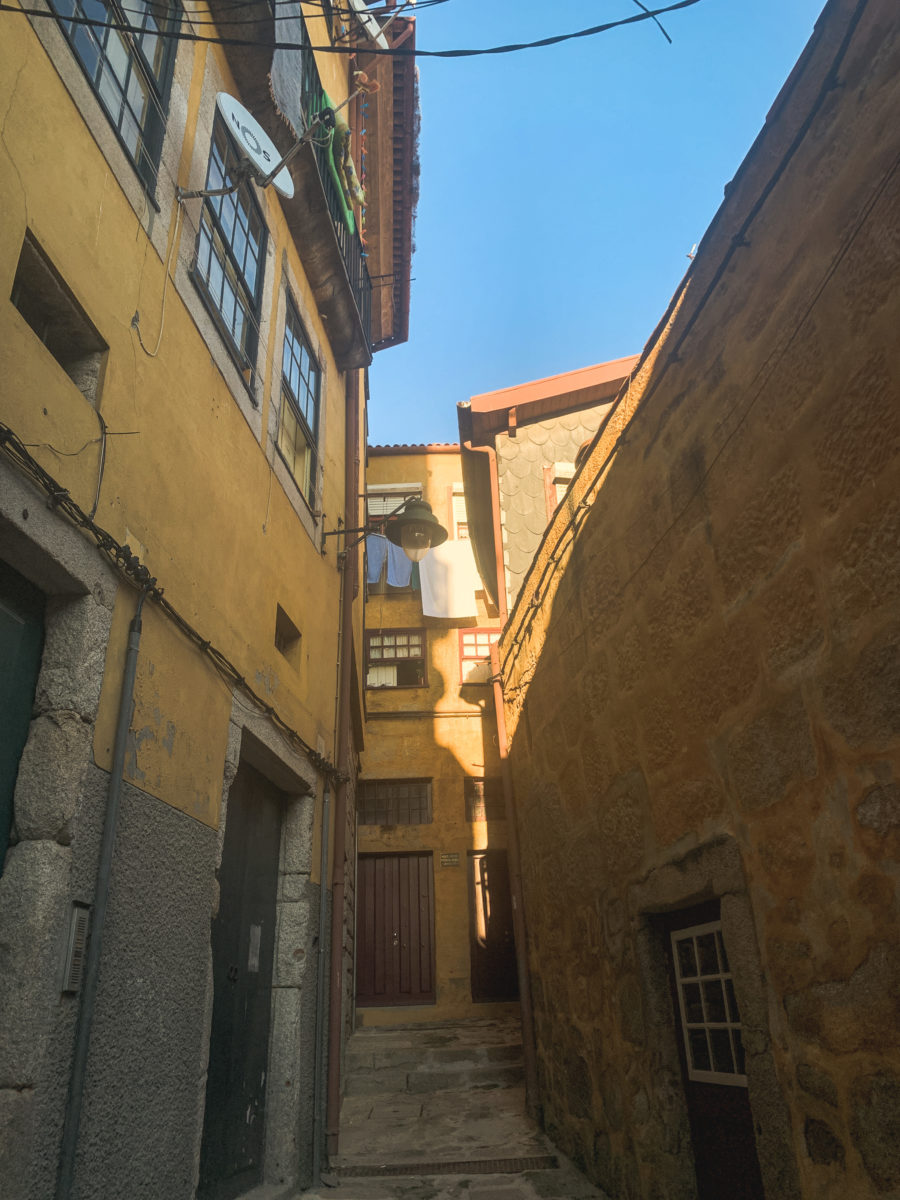
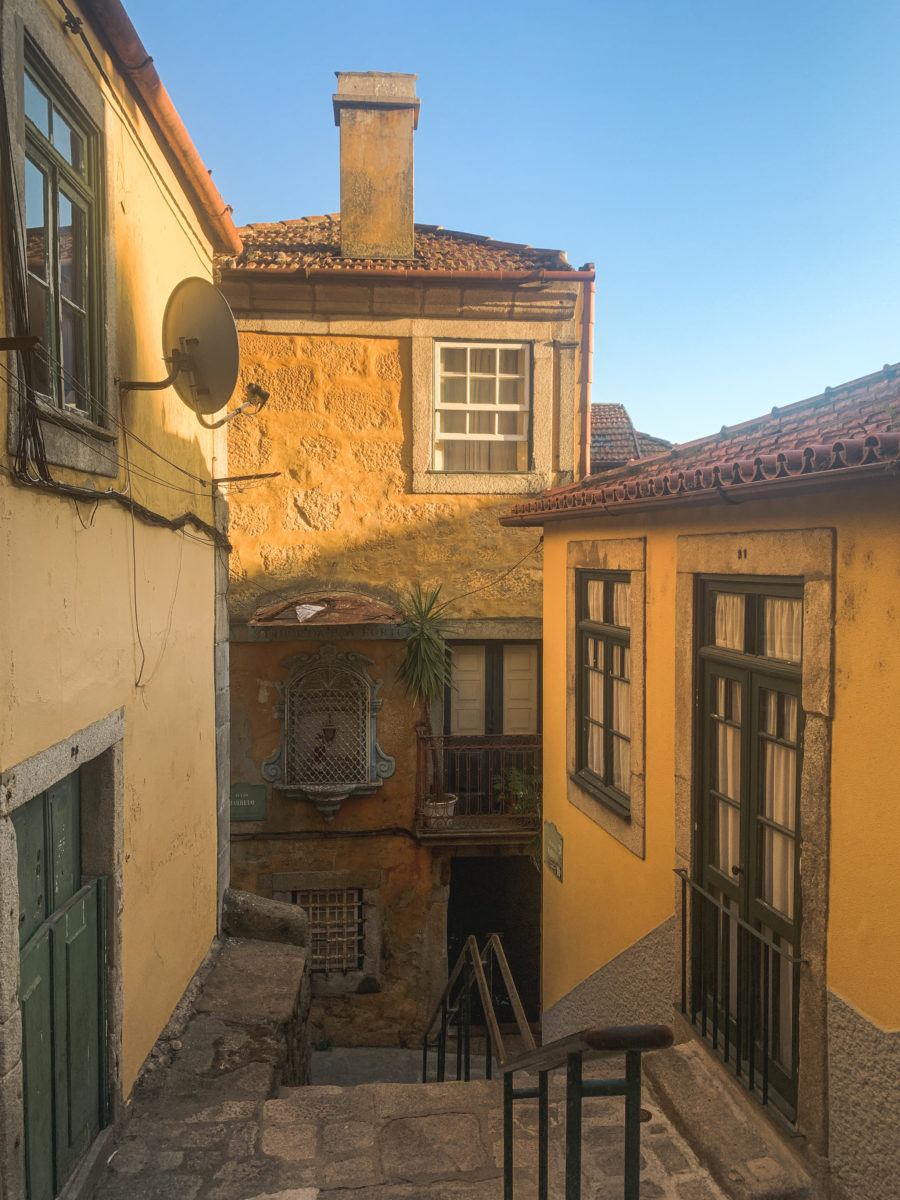
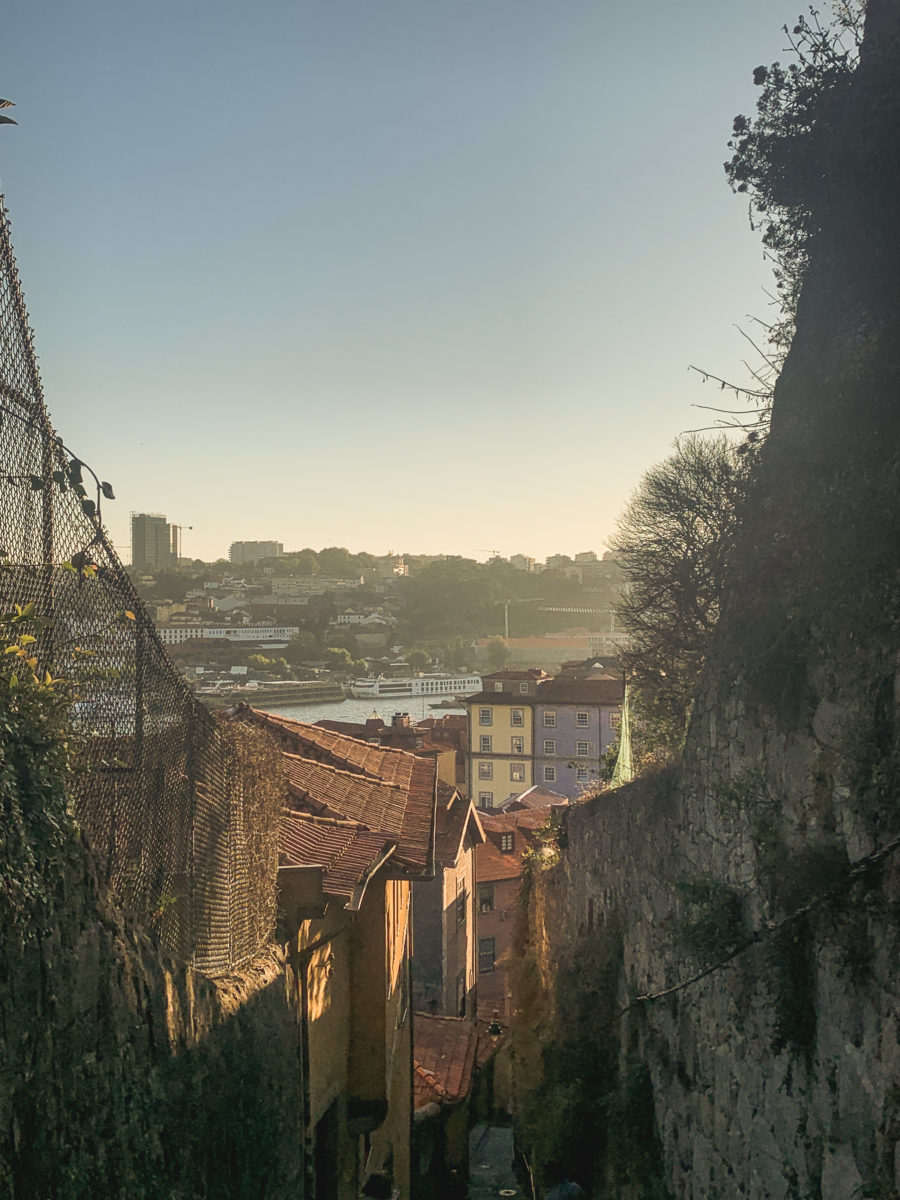
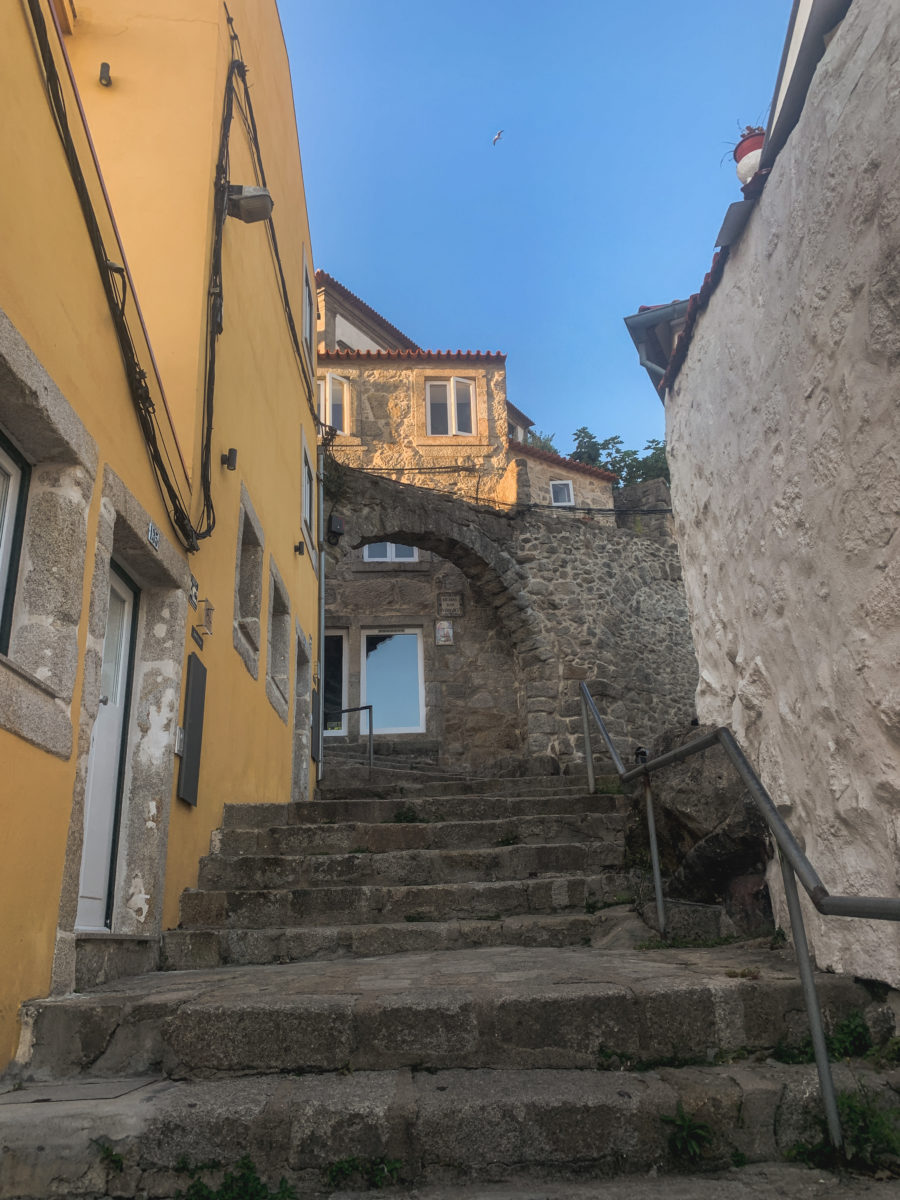
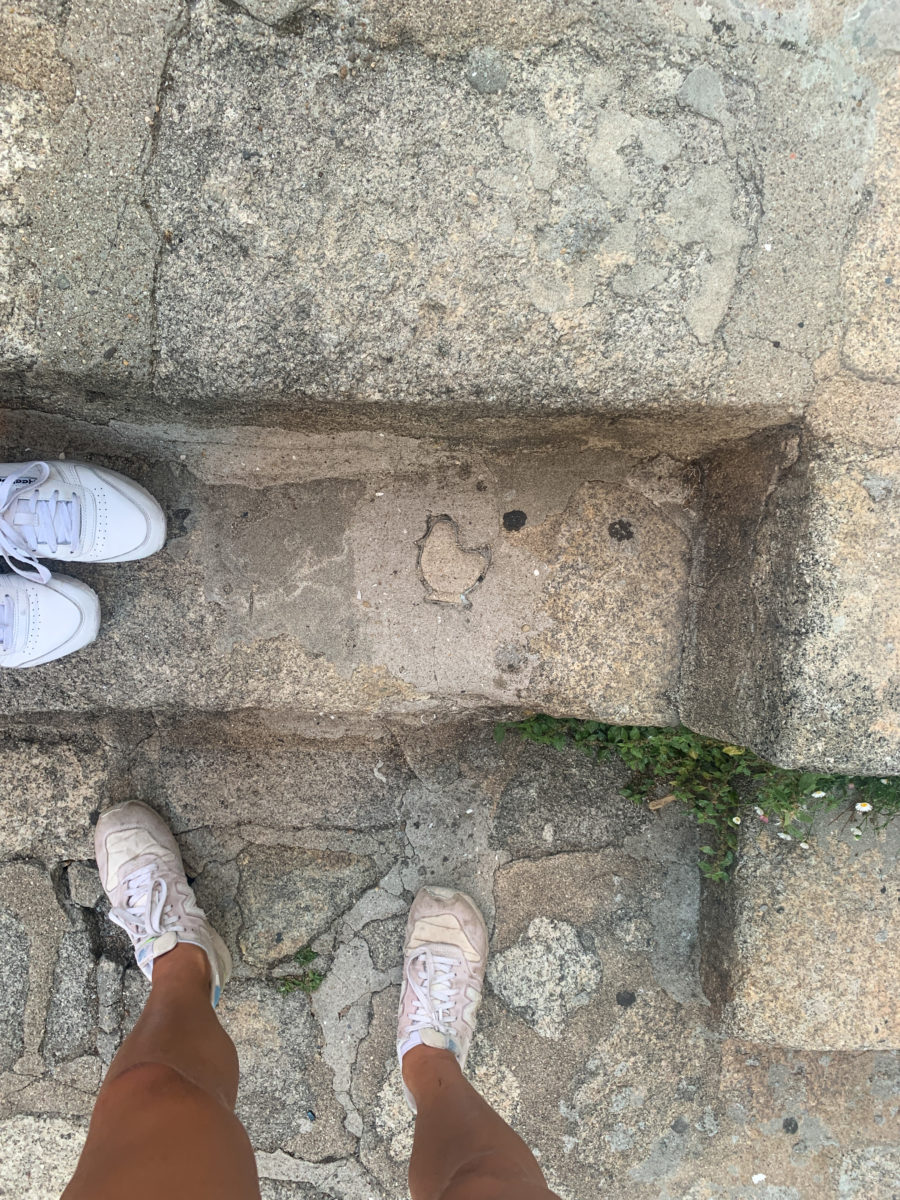
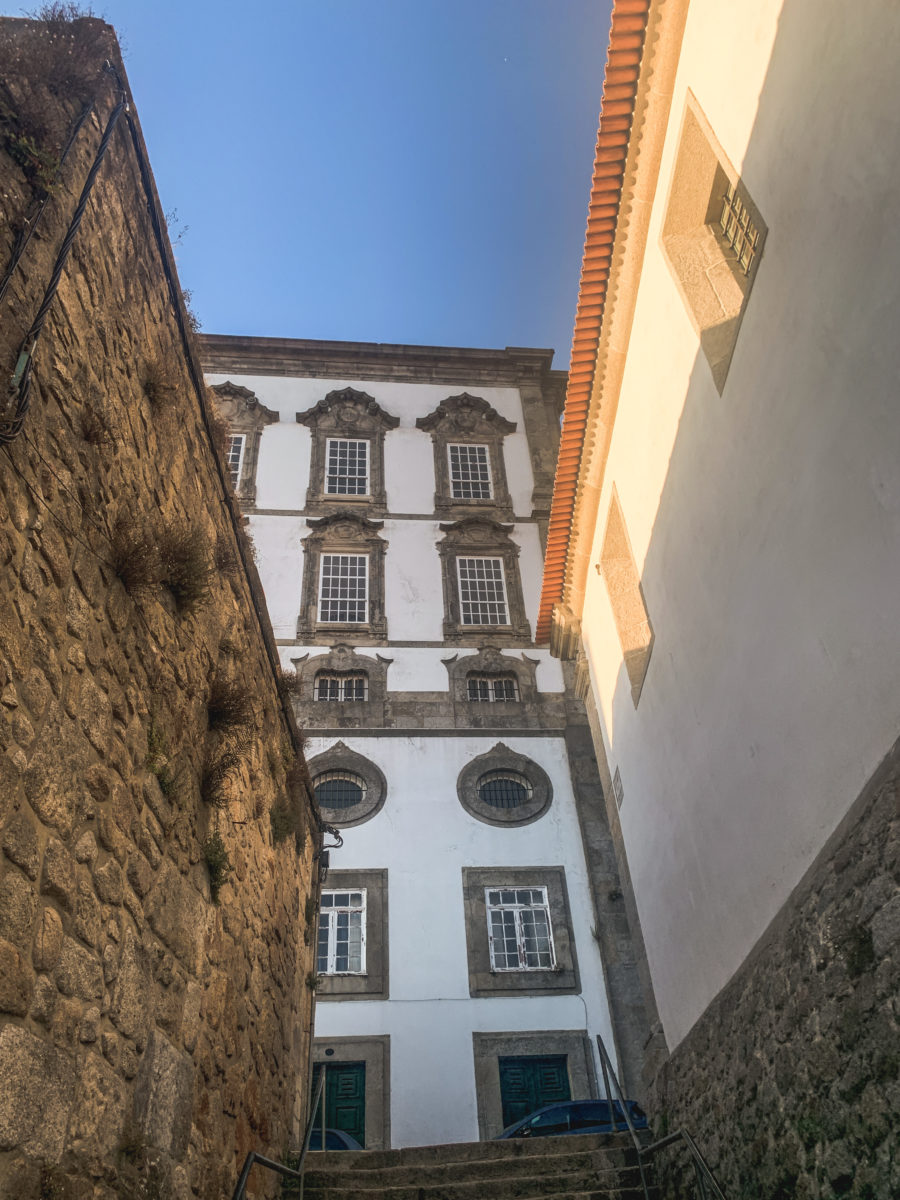

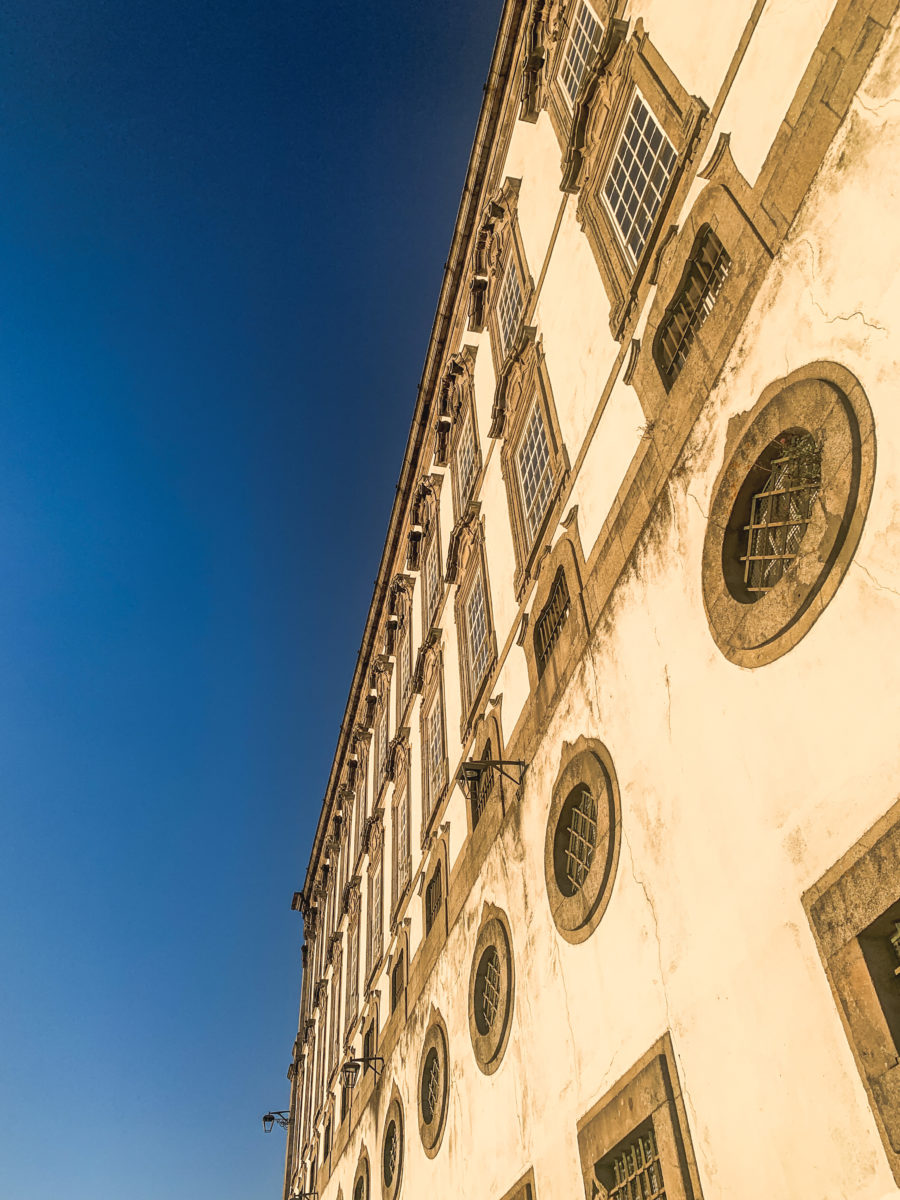
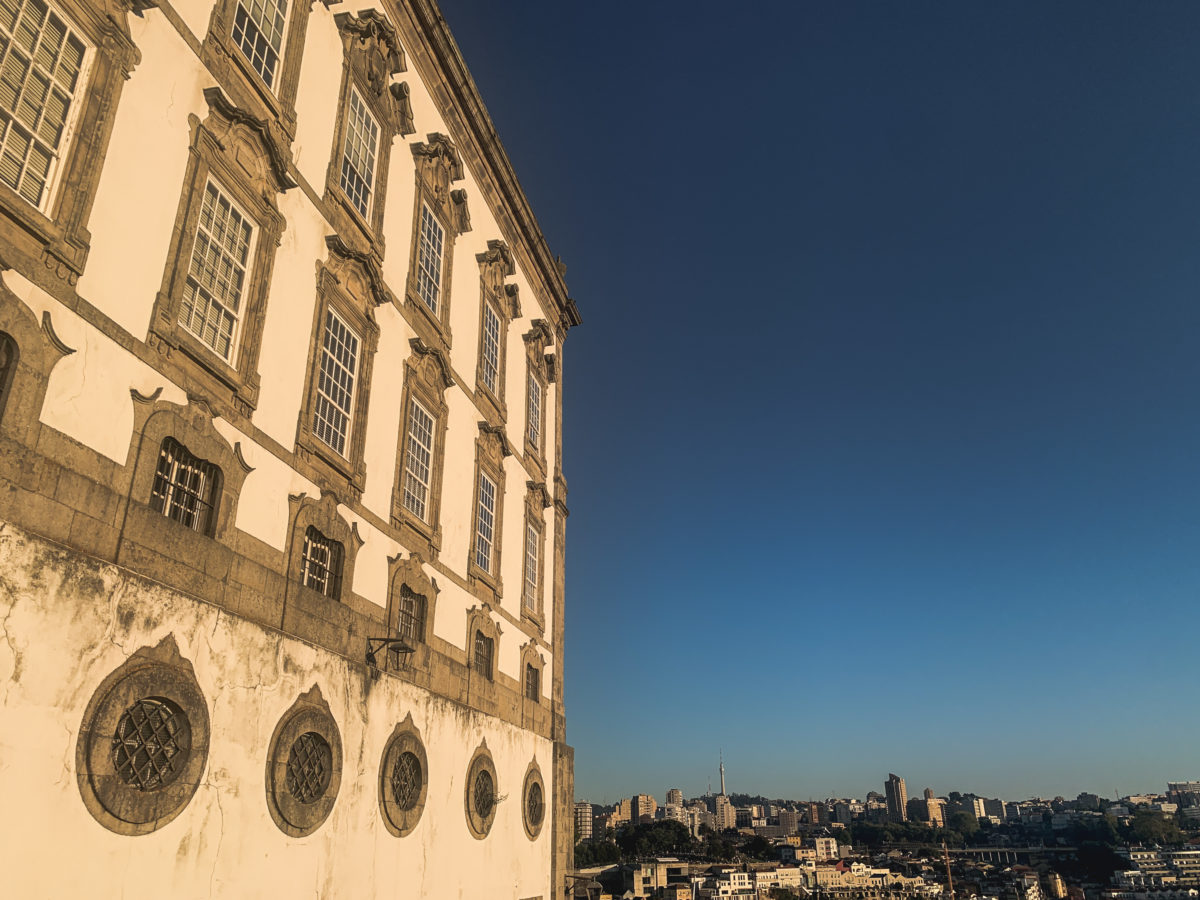
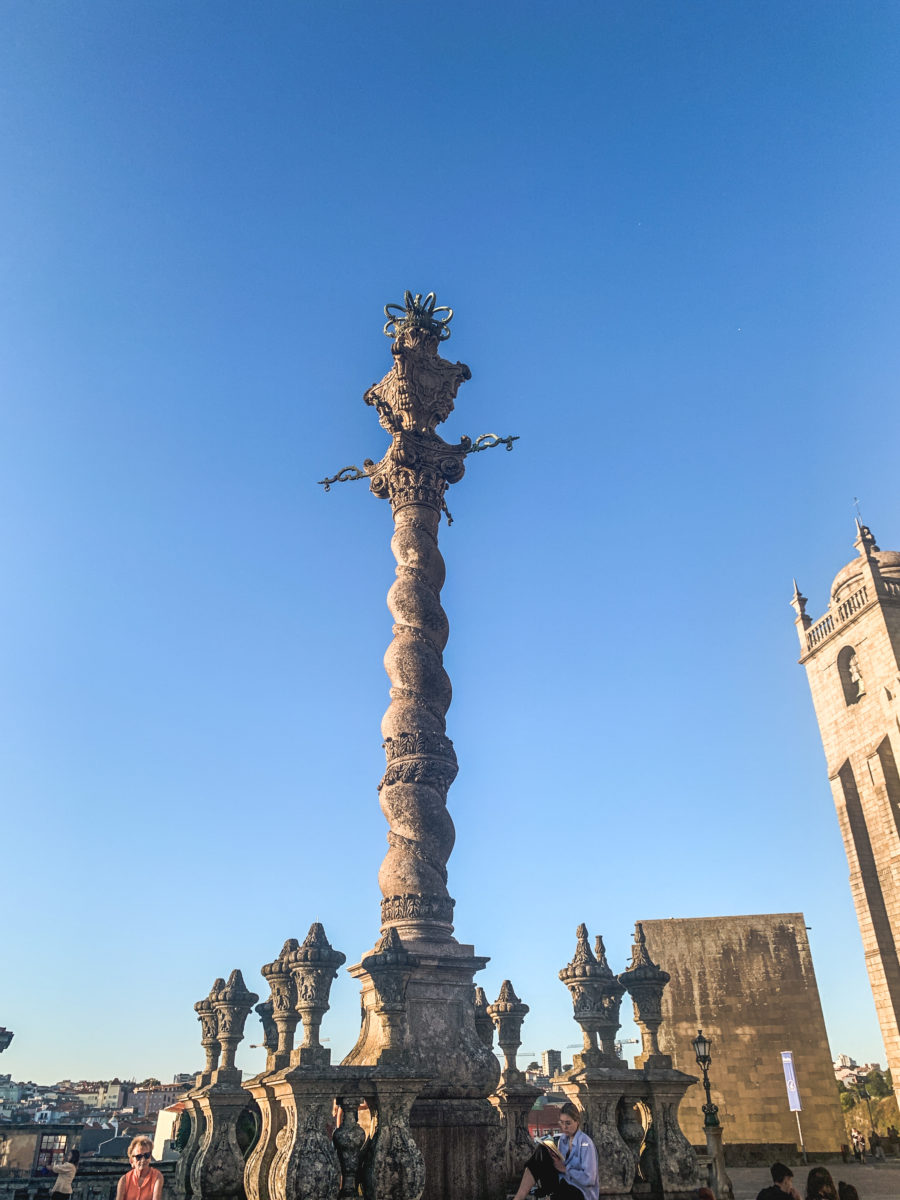
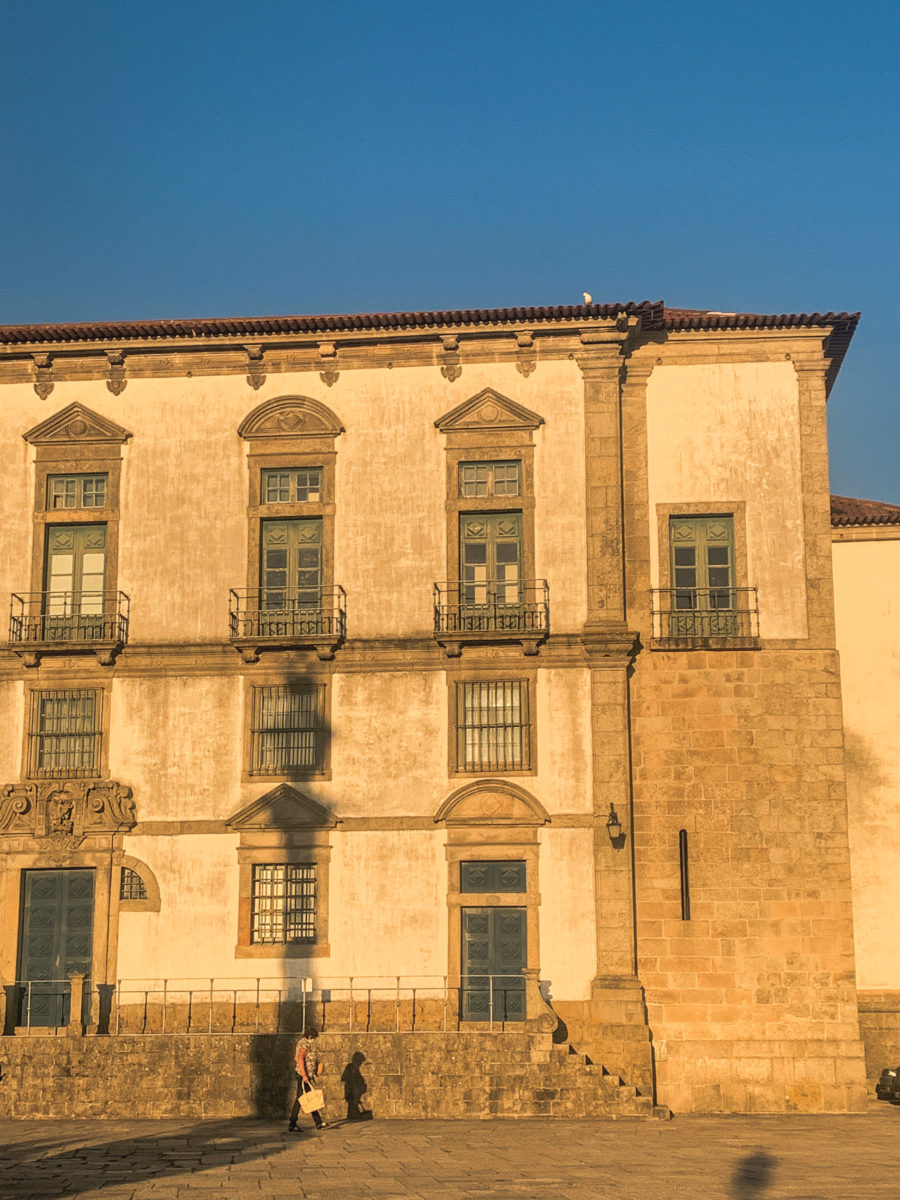
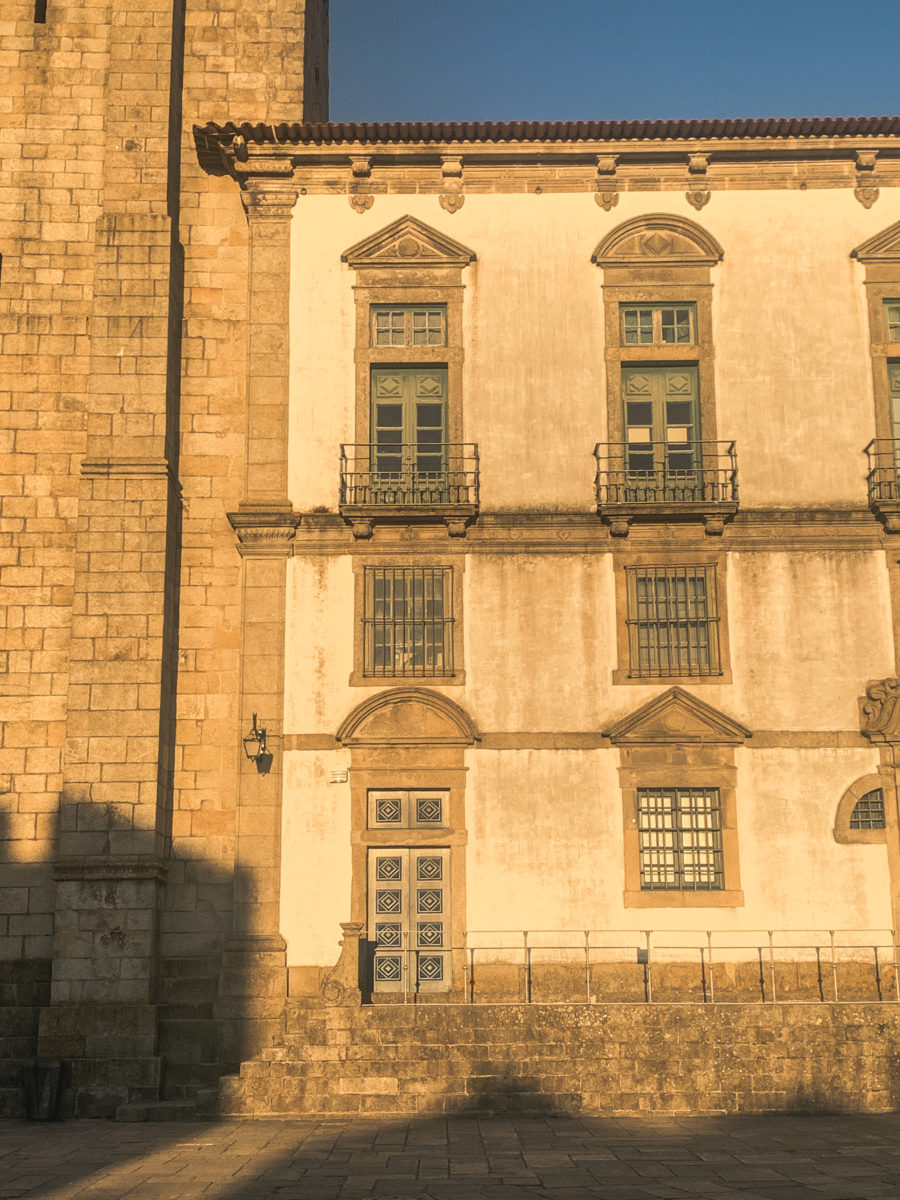
Afterwards, take a random alley and let yourself be guided to the Douro. If you pass by the Largo da Pena Ventosa, tell me in the comments if you have also come across the (numerous) cats living there and above all what you think of this corner, which is like Porto: a place full of colourful old houses.

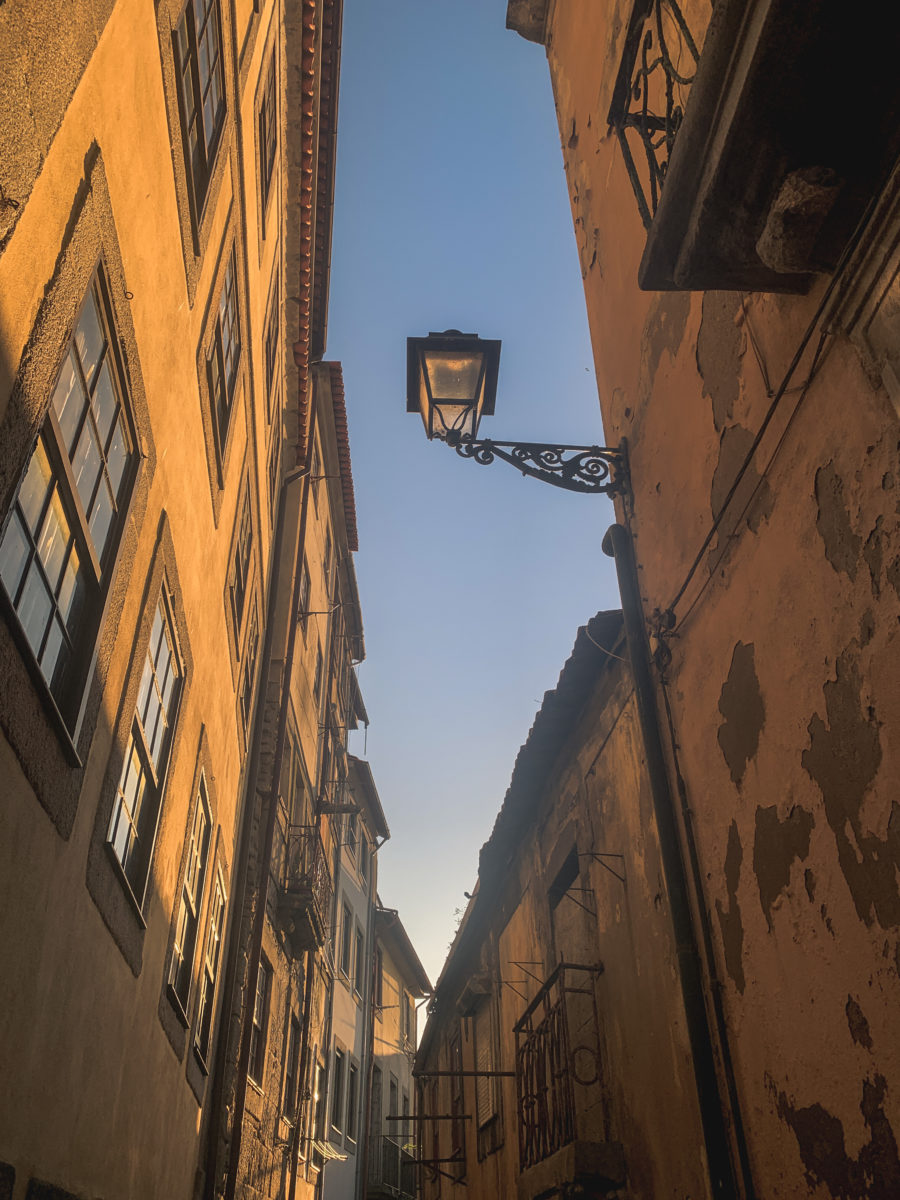
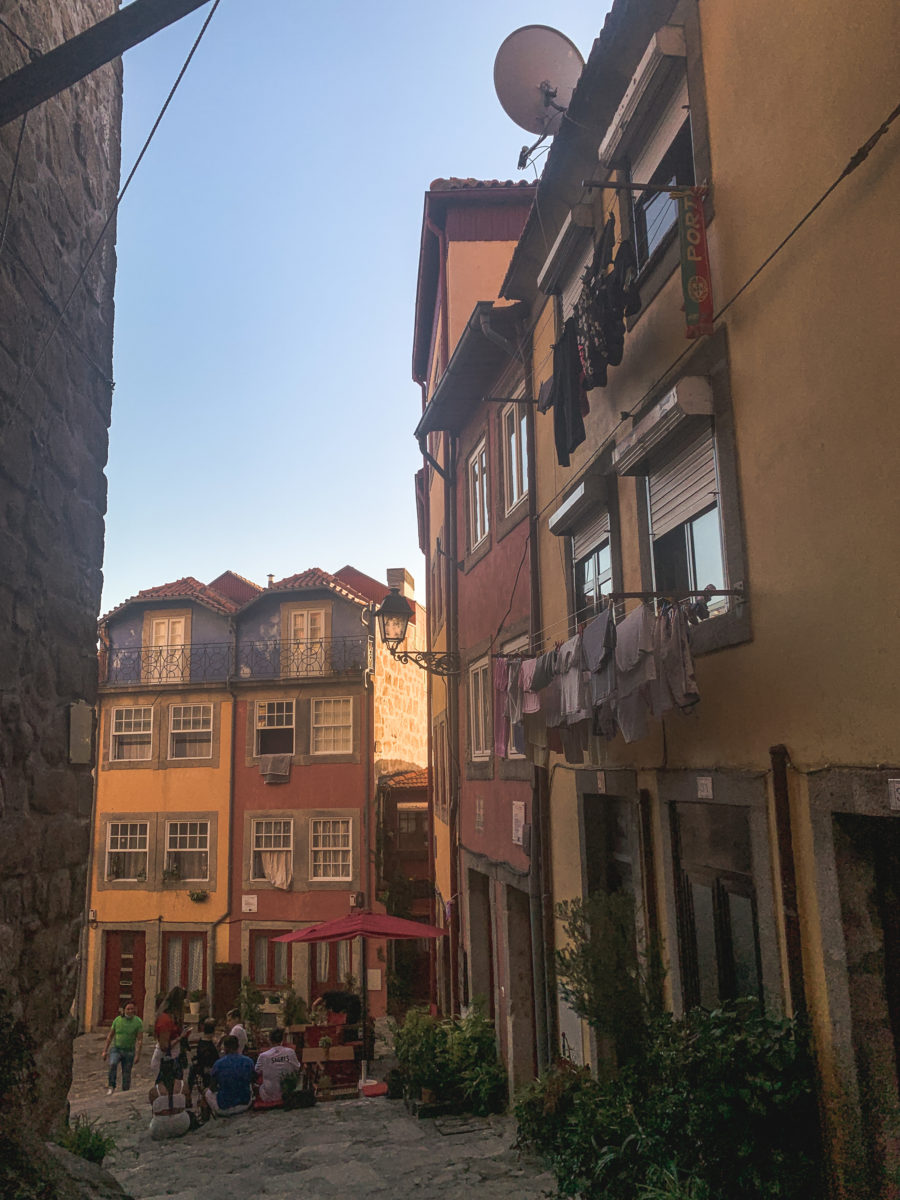


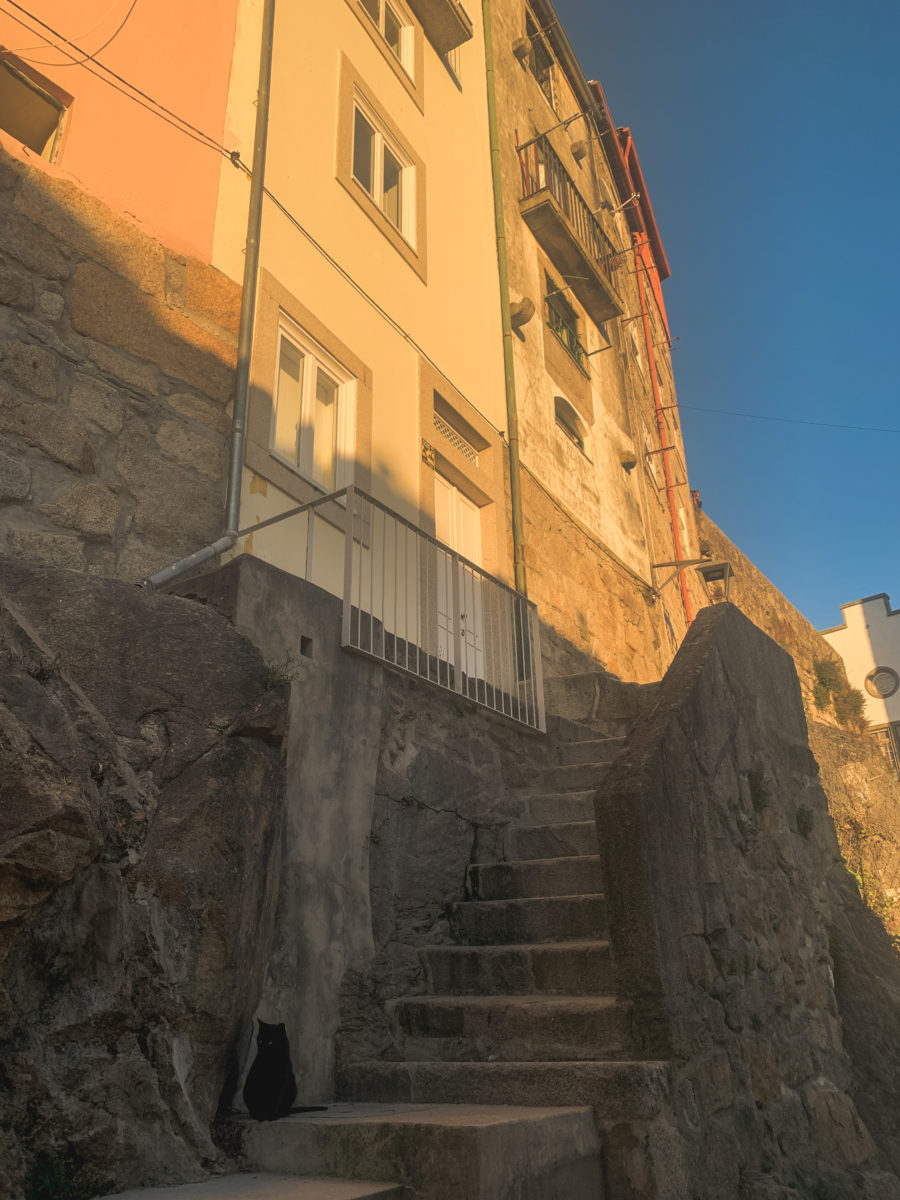
Then, following the haunting cries of the seagulls, it is instead a gentle clamour that emerges from the Douro bank. There, one can feel a carefree atmosphere, ready to embrace whatever the day or evening offers to everyone, according to their desires. Mine were varied:
- Tasting port wine ? Before I had an official visit –> No
- Getting lost in the centuries-old streets of Ribeira? The Douro enchants and fascinates me, and it’s hard to leave it, so no;
- Taking part in a river tour? No, that’s for another day…
Other ideas come to mind, and yet I breathe and sit on a terrace and observe, with the complicity of my friend, what surrounds us (of course the sangria has been ordered).
A feeling of peace embraces me, that of being exactly where I was meant to be. I can only describe what Porto made me feel with this sensation, as it seems beyond words. Is this what it means to take the time to live? I, an epicurean, who is always rushing in my daily life? At this moment, I am no longer juggling multiple tasks, I am simply in Porto.
I realize that Porto has touched me, enveloping me in a simple and joyful aura, that of rediscovered simplicity. The kind that lets you appreciate or rediscover the present moment. I, therefore, advise you to take the time to stroll along the banks of the Douro, following the rhythm of the sounds and scents that come to you, in a magnificent setting where improbable buildings of disparate colours line up. A surprisingly harmonious ensemble
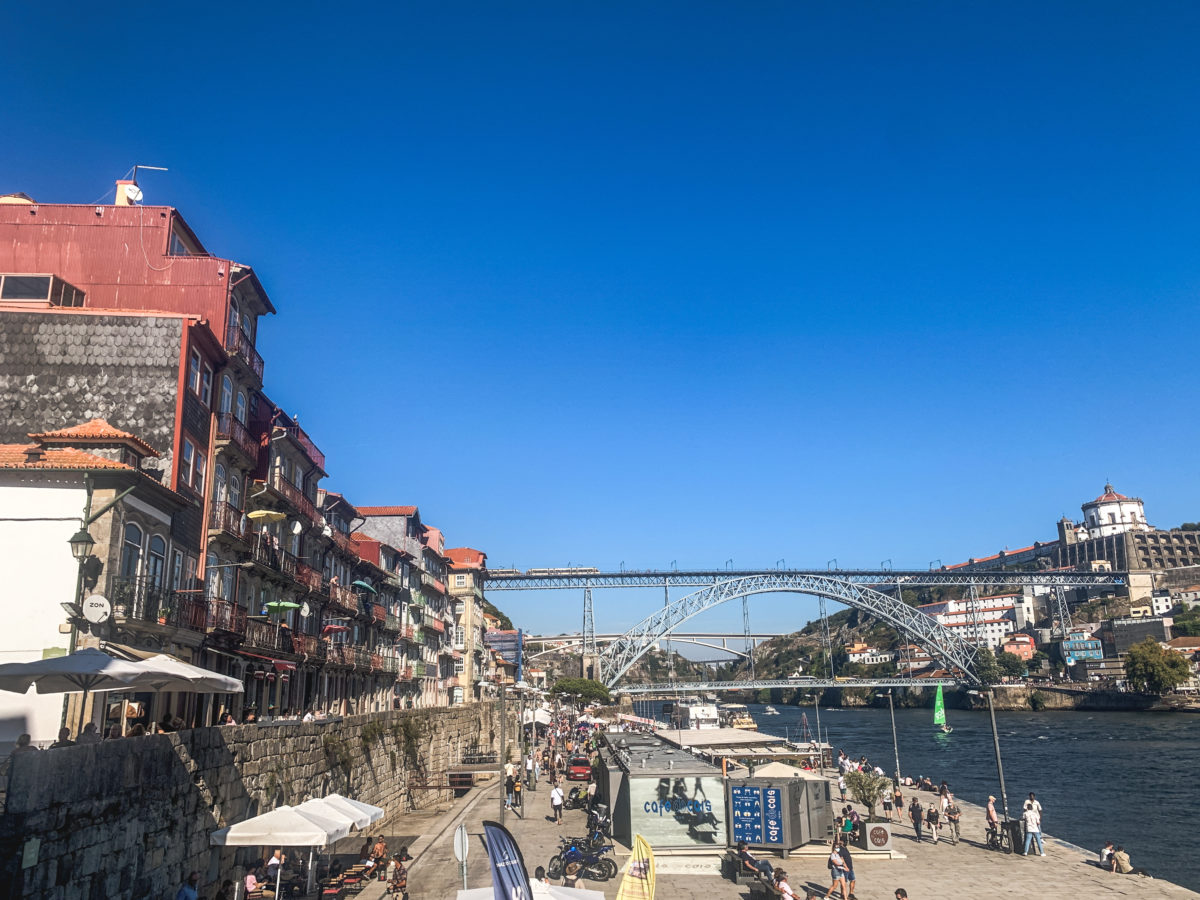
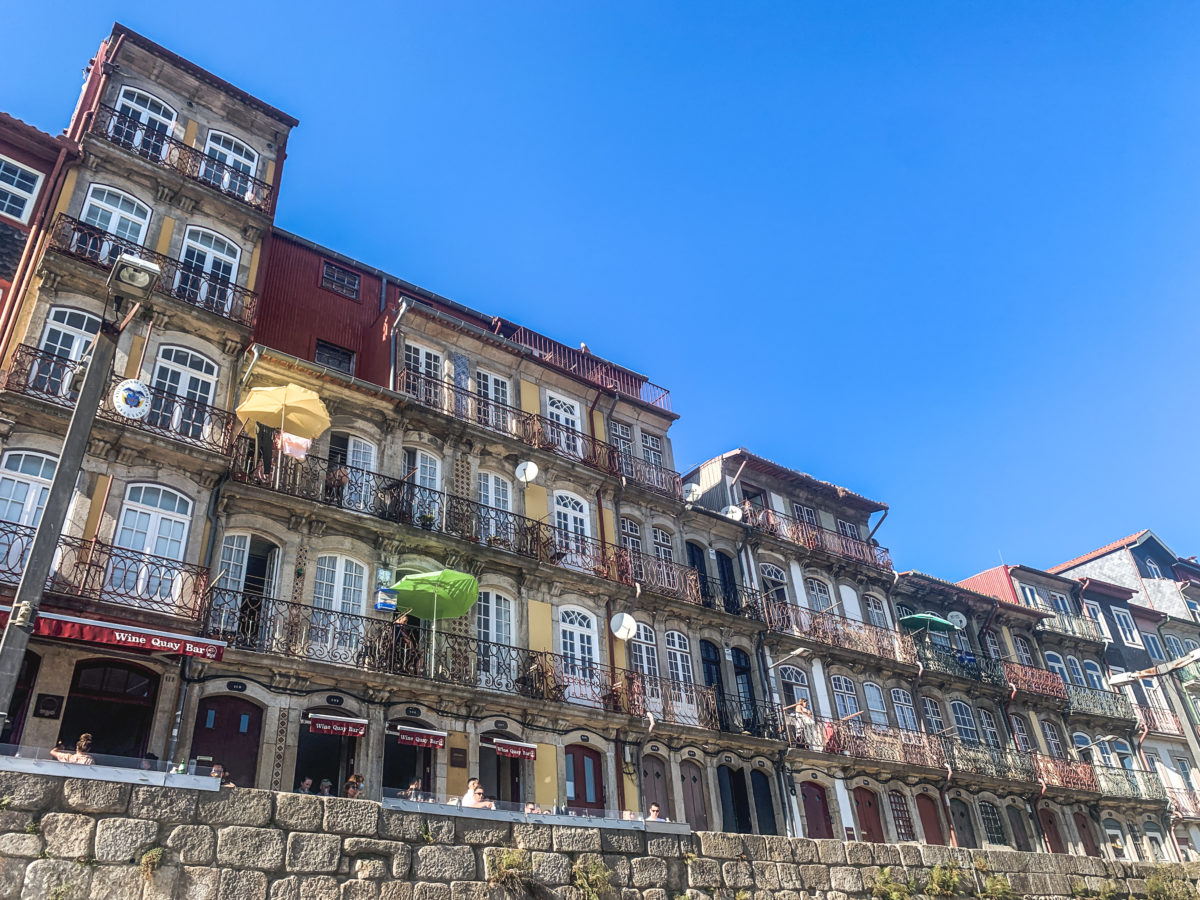

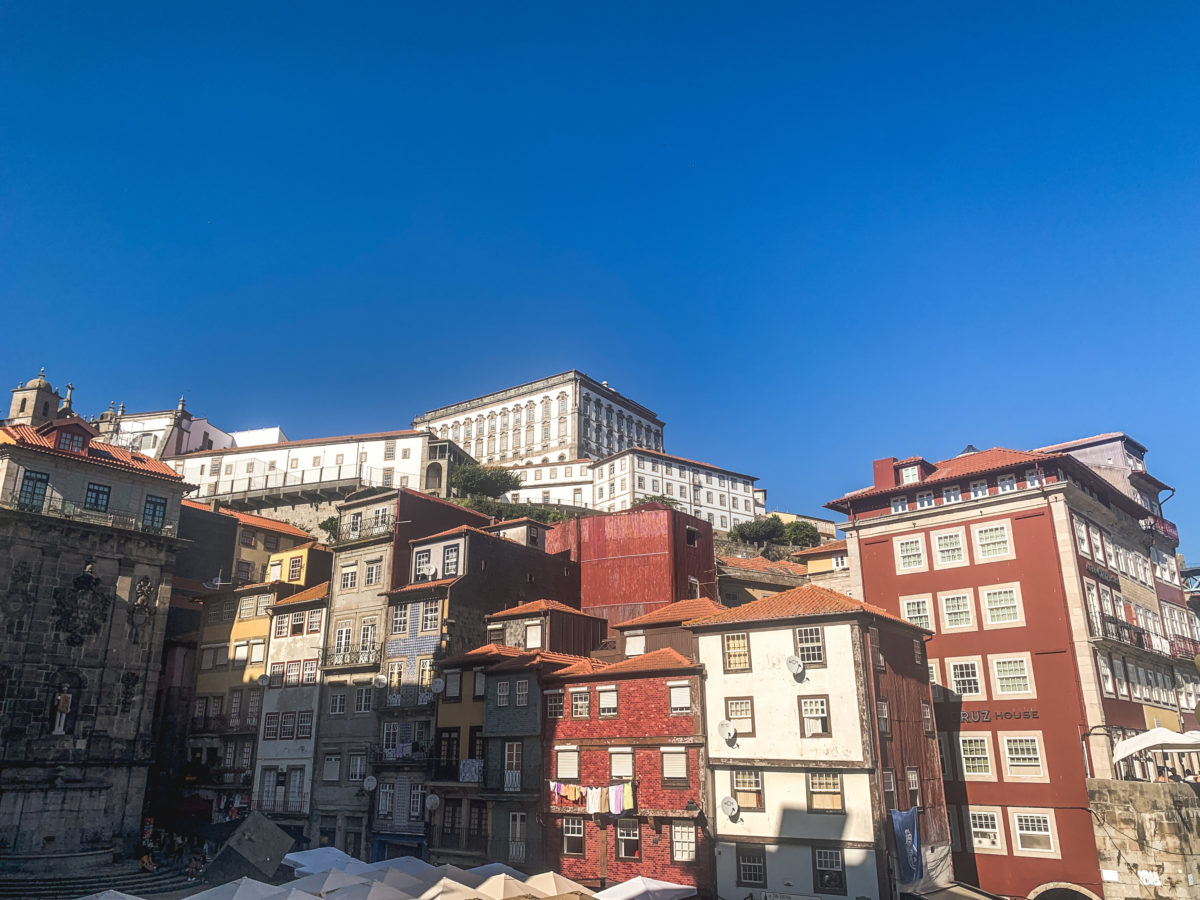
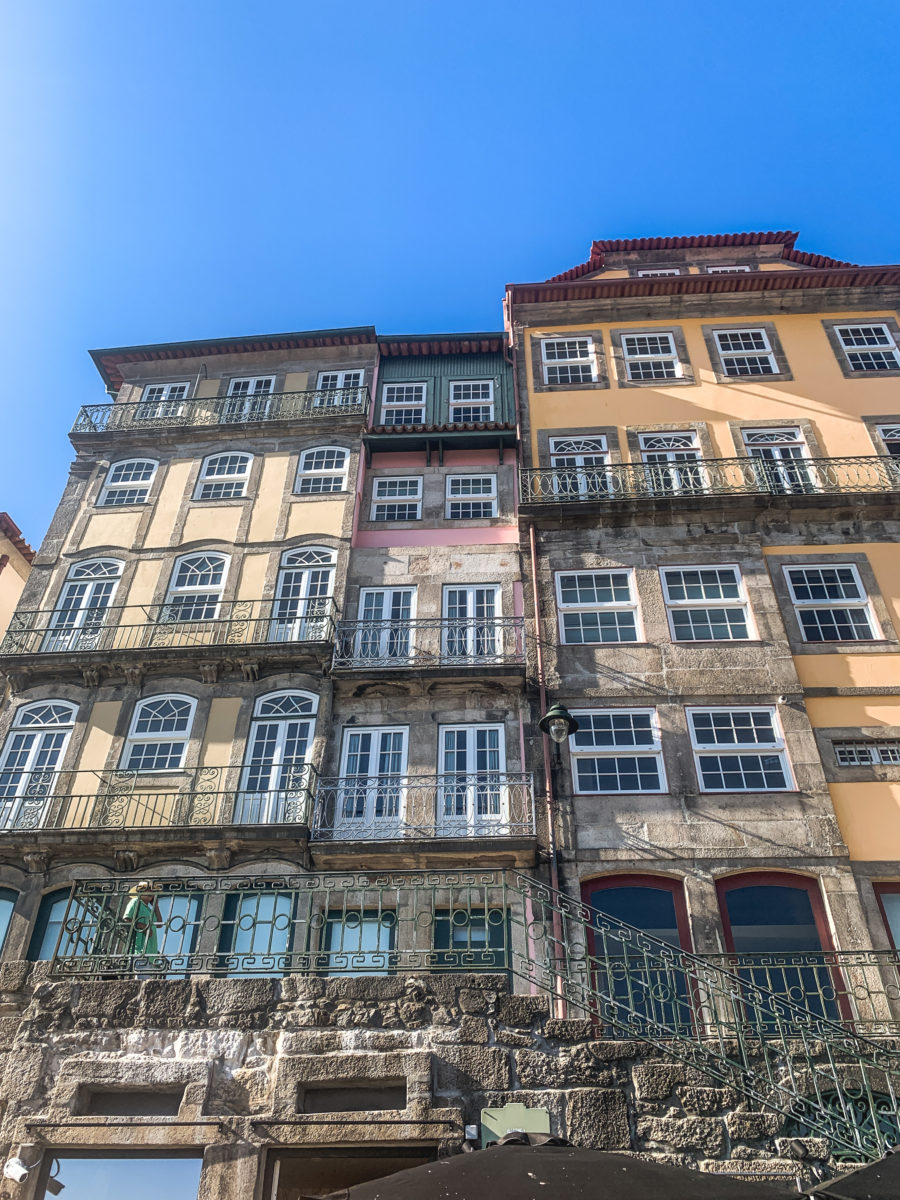



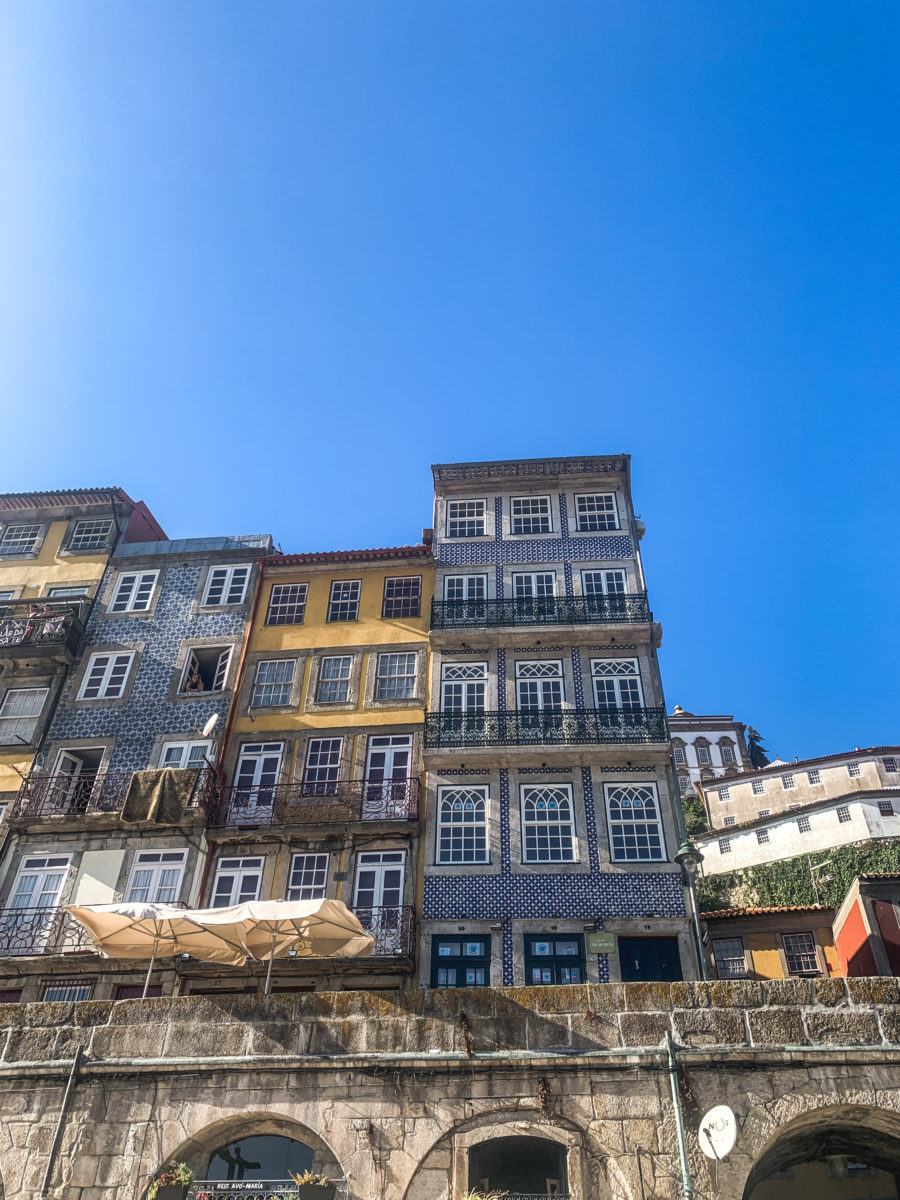
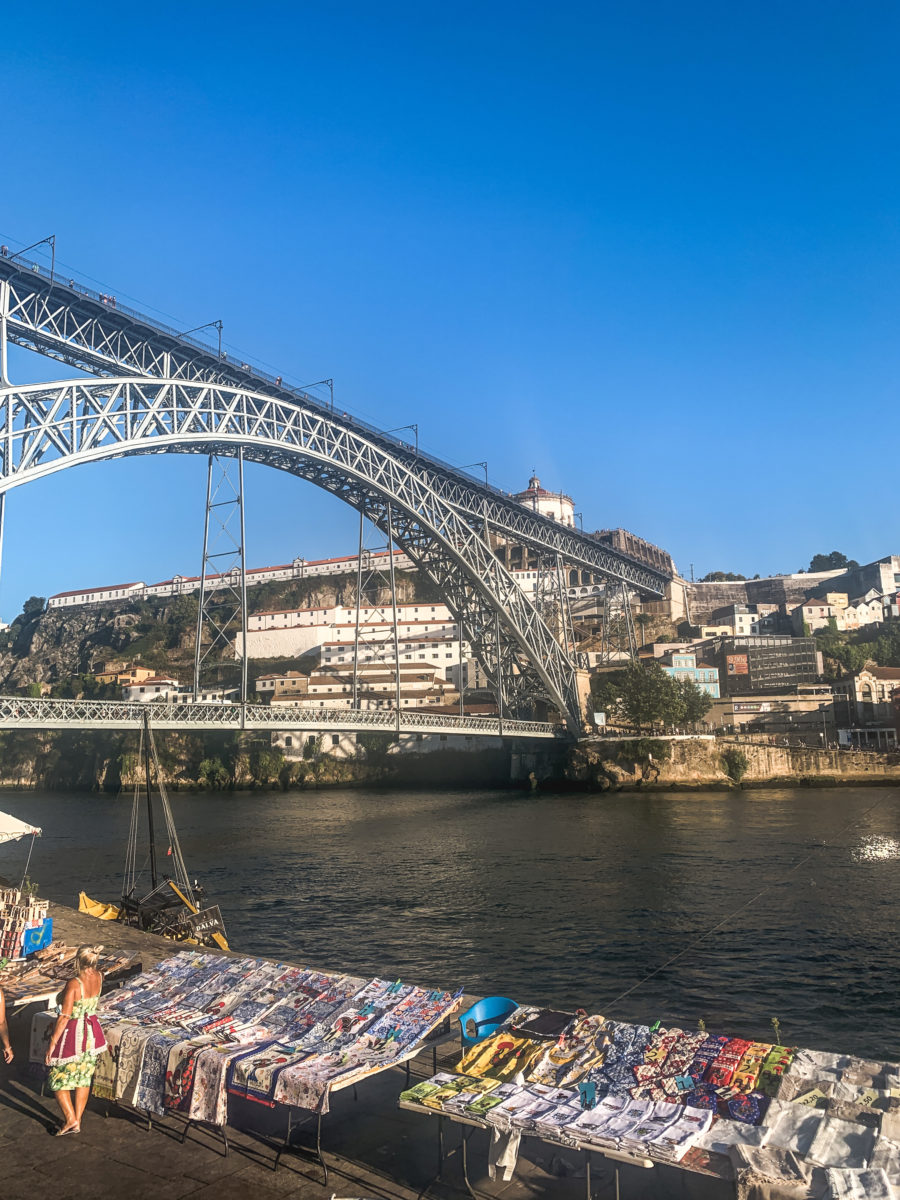
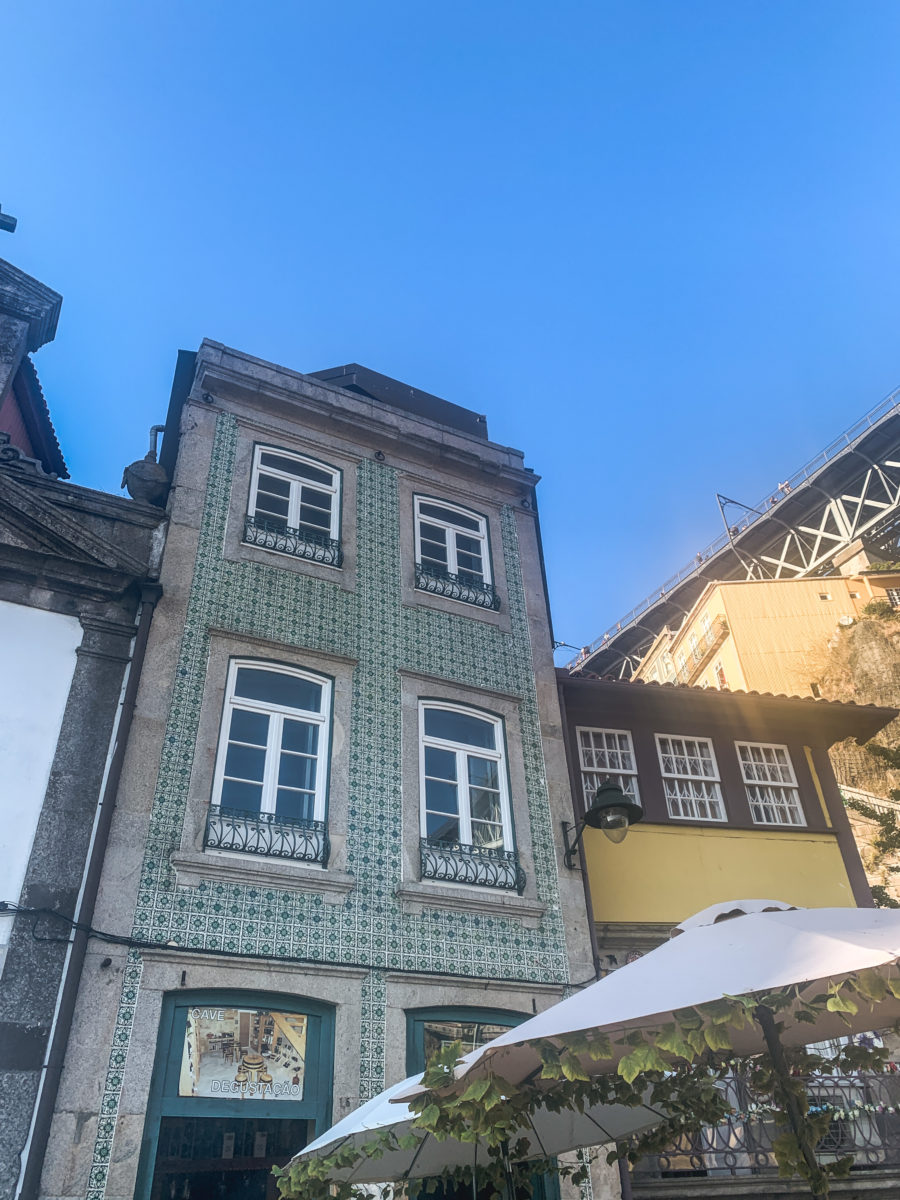
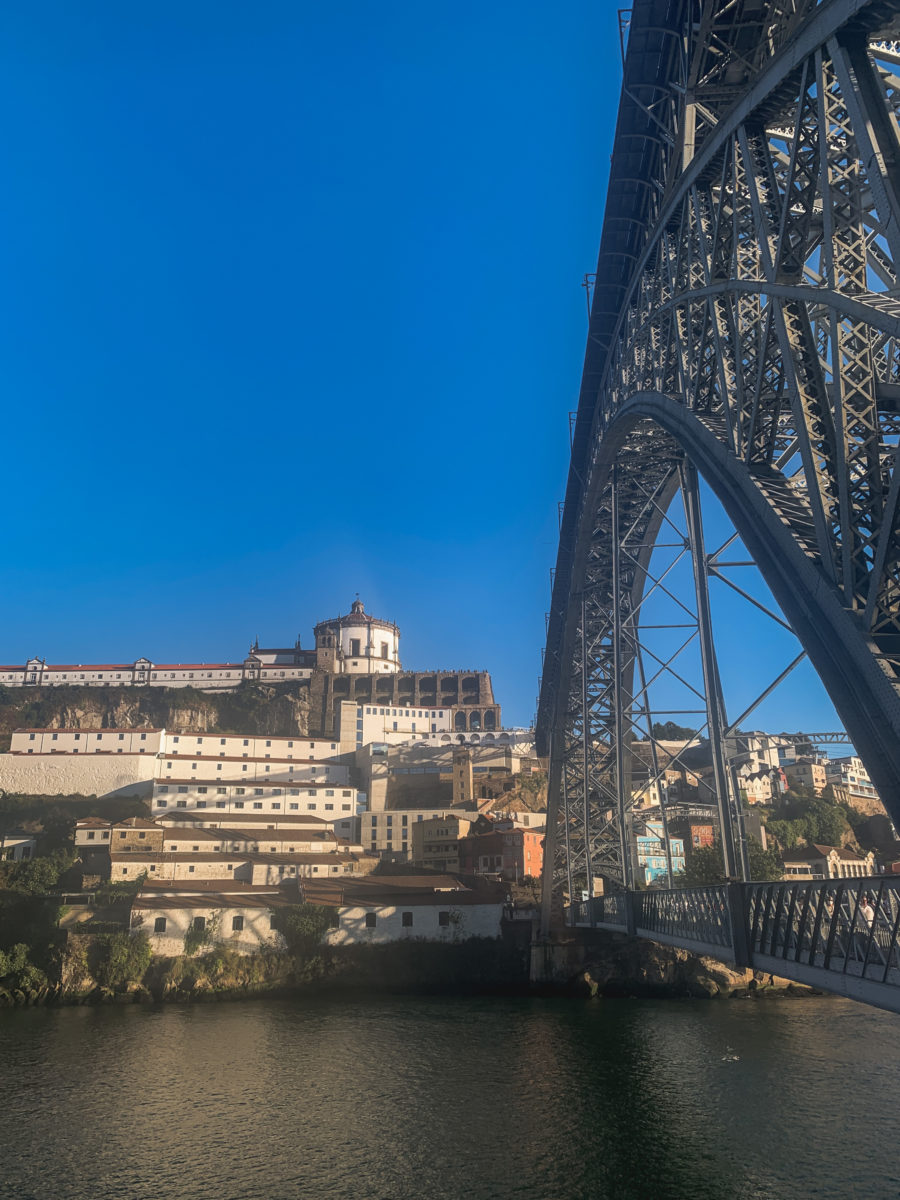

Time for shopping?
Porto is also full of shops, but two streets are dedicated to shopping: Rua Santa Catarina in the east of the city and Cedoifeita, just below the lively (especially for going out) Baixa district. We stayed in Cedoifeita in a lovely Airbnb, I’ll tell you more about it at the end of this article.
Santa Catarina is the pedestrian shopping street par excellence and its particularity lies in the fact that it seems to be frozen in another time (like the whole city of Porto). A time dedicated to the ’60s and ’70s thanks to its retro signs.
Do not hesitate to take a side street to emerge at the famous Mercado do Bolhao. Under renovation in 2021 (it dates back to 1914), it had temporarily moved to the basement of a large shopping centre. The authenticity wasn’t quite the same, but it was still worth a visit. Returning to the city centre, we passed by the market under renovation, which stands out for its architectural appeal and will undoubtedly be magnificent once the work is completed. I am already looking forward to returning and sharing more about it in a new article on the beautiful Porto.
Enjoying Porto’s azulejos
Portugal has a considerable passion for tiles and Porto in particular. This stems from King Manuel I of Portugal, who brought tiles from Seville, Spain, to Portugal during the 15th century. Azulejos were very common in the areas of the Iberian Peninsula dominated by Islamic expansion during the Middle Ages. The word azulejo comes from the Arabic word ‘al zellige’ which means ‘polished stone’.
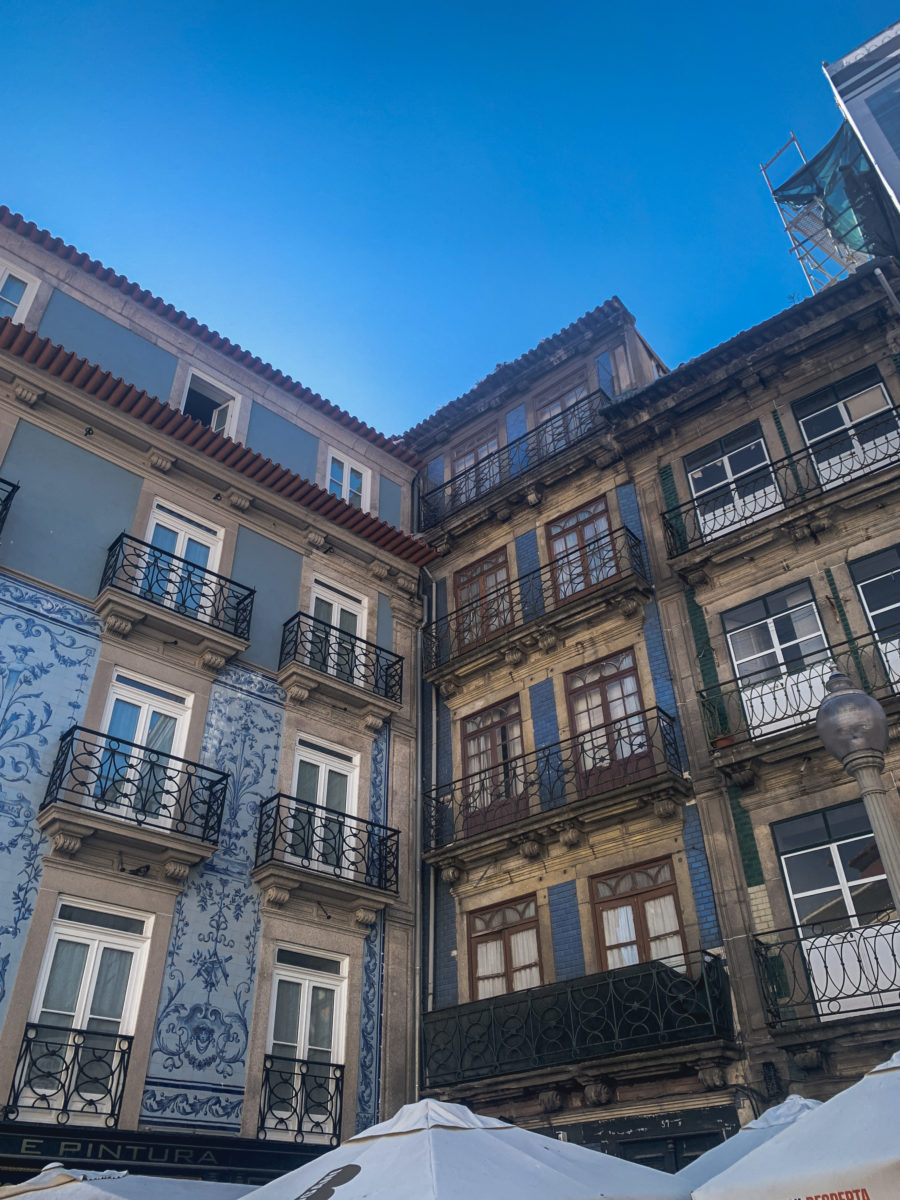

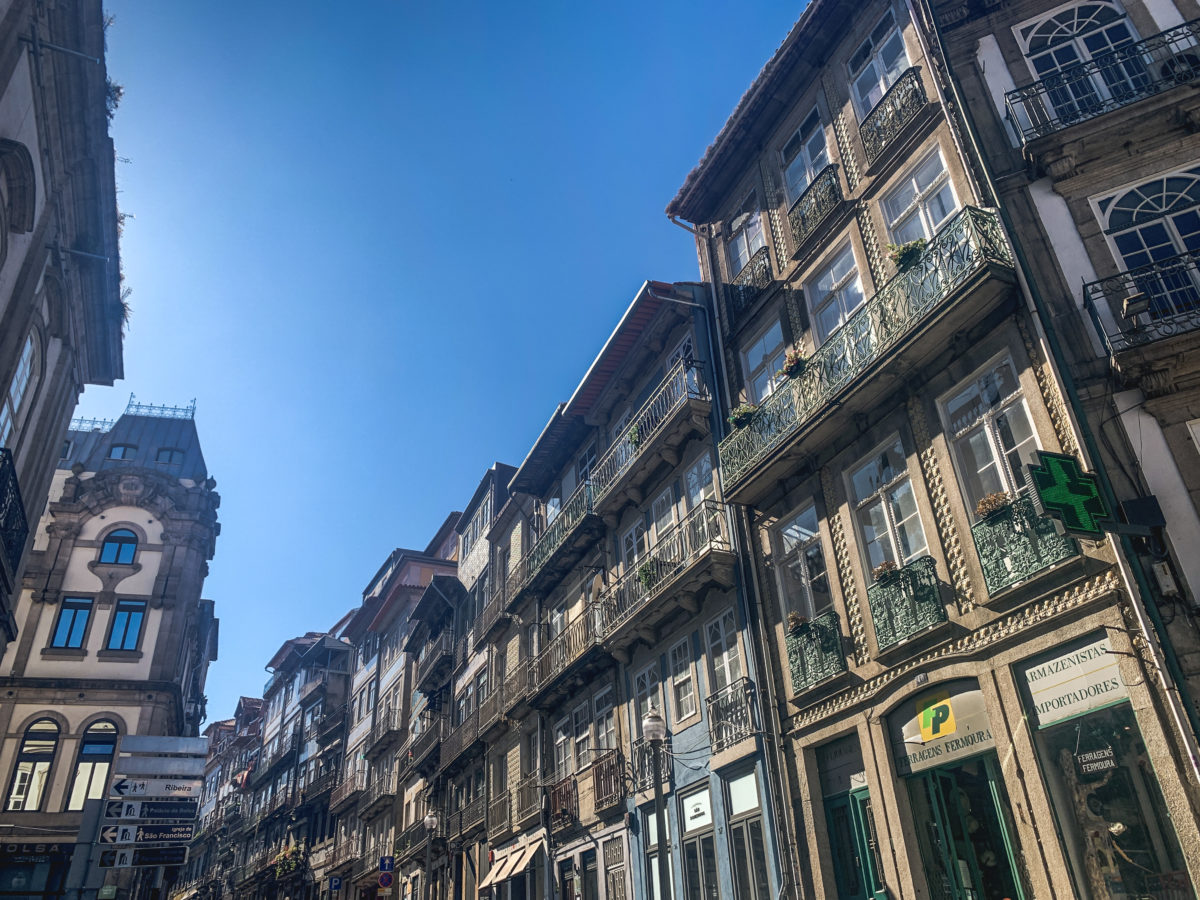
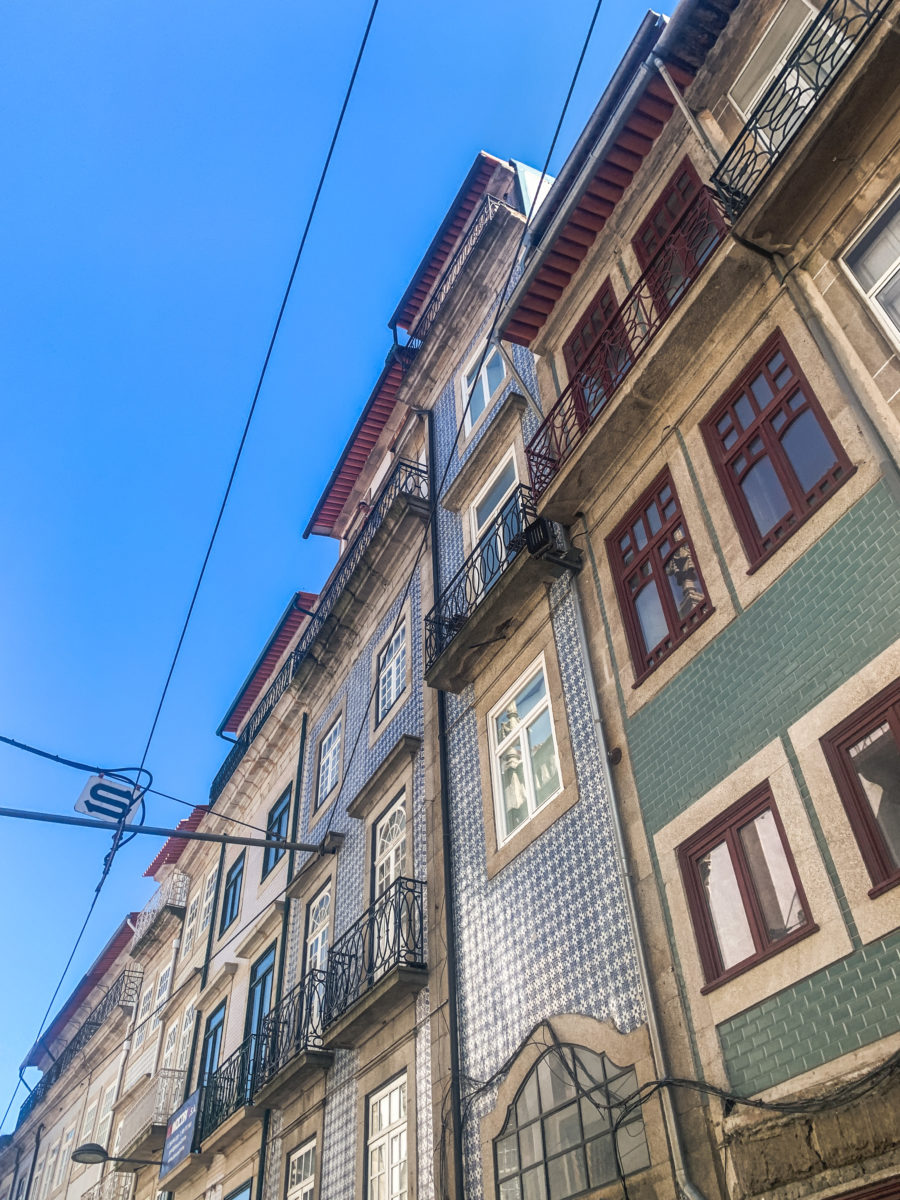

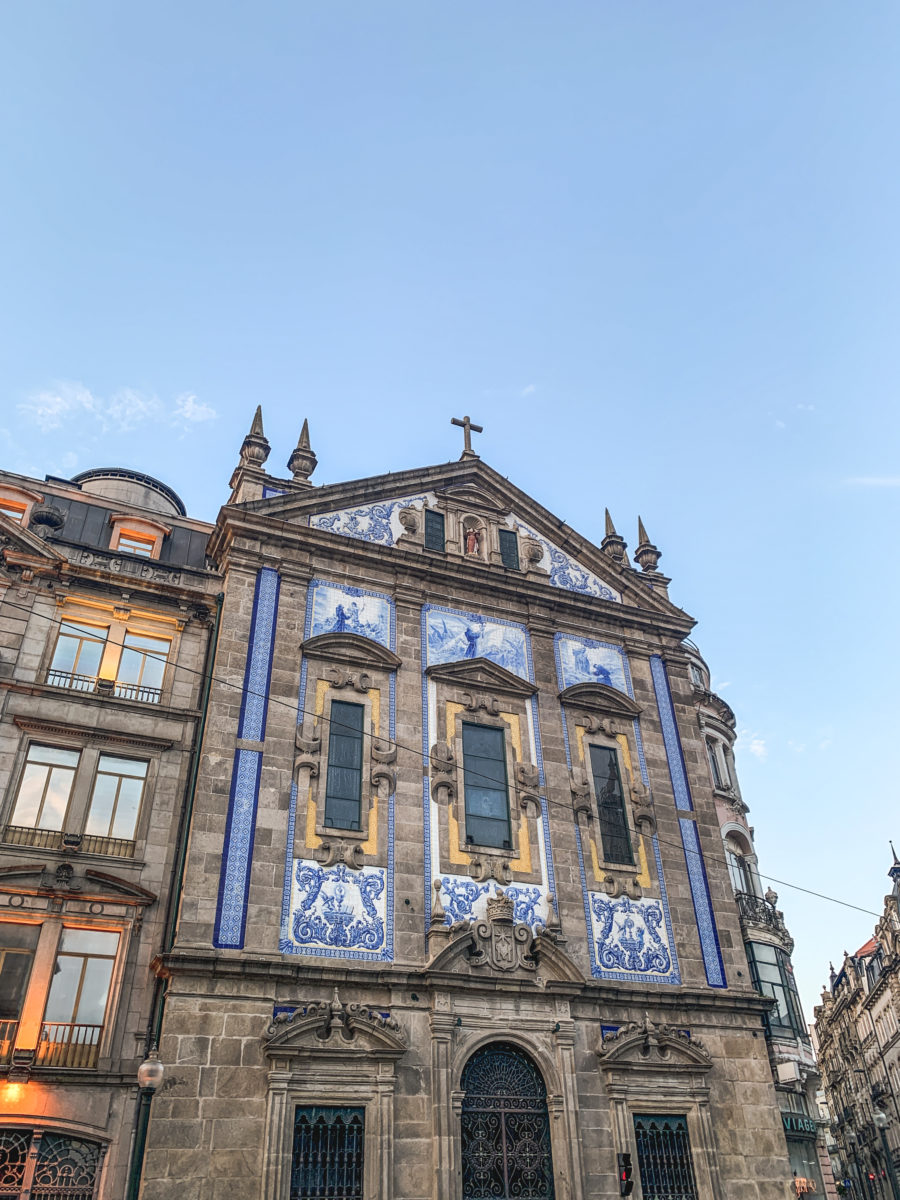
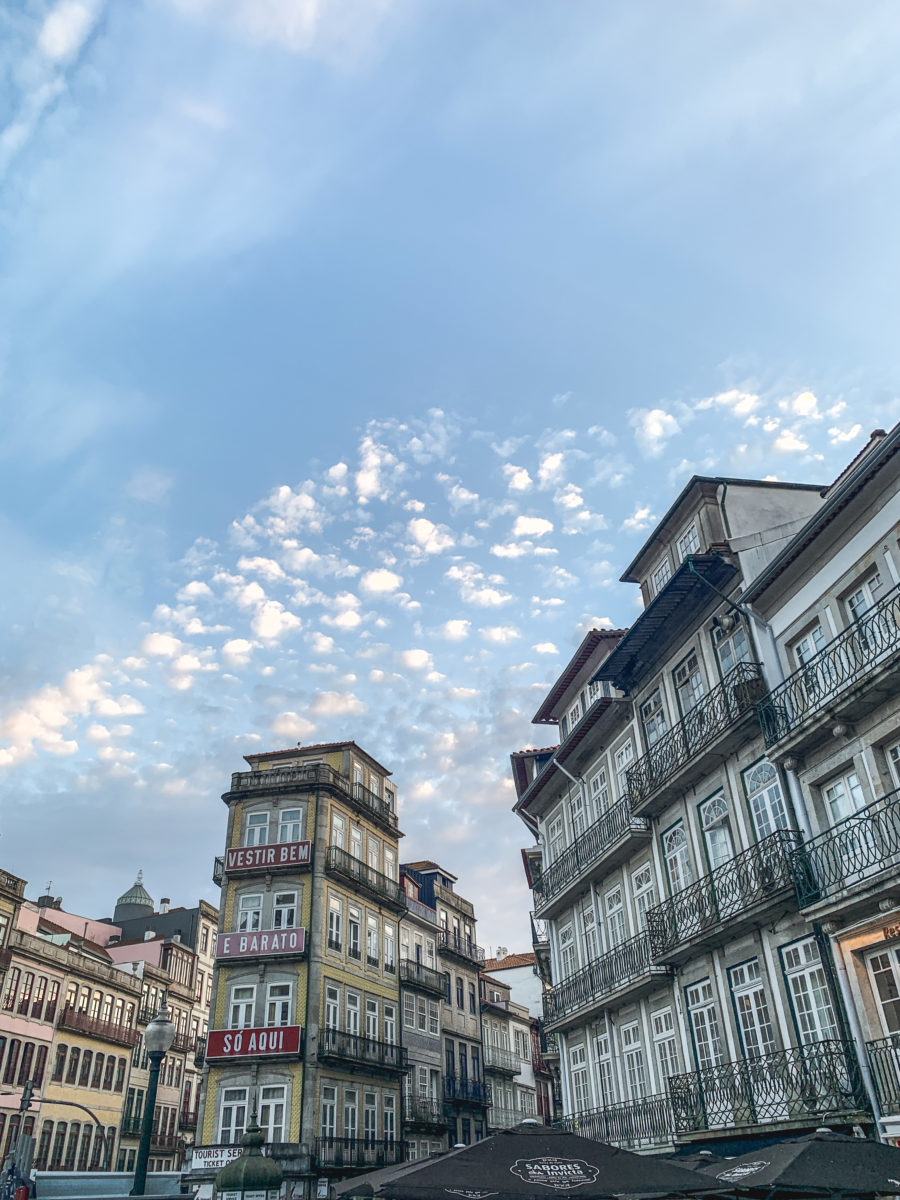
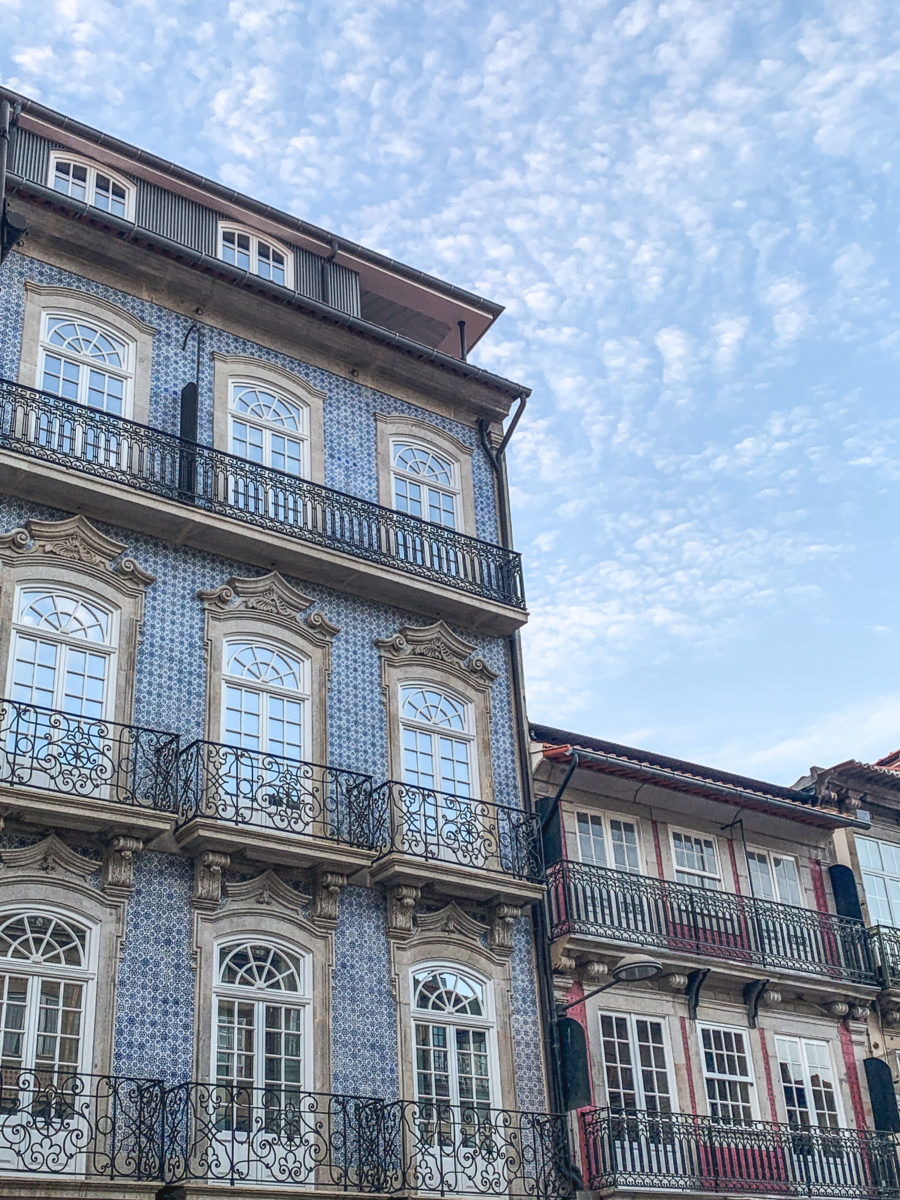
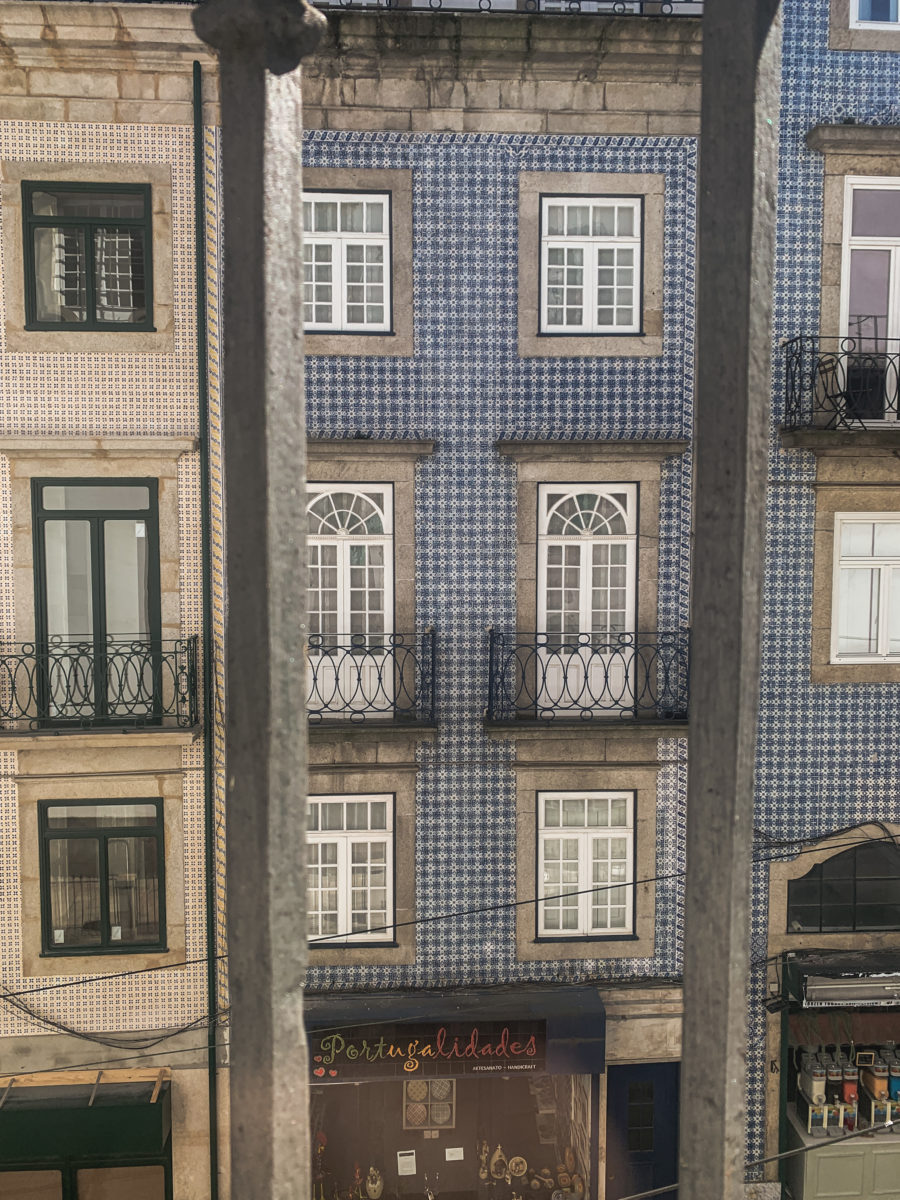
Azulejos are coloured ceramic tiles (often blue) that depict different designs (floral, scenes of life, etc.) and are mainly found on the facades of churches, on houses or in unlikely places. Hunting for azulejos is definitely a nice activity to undertake in Porto. So, I am not going to tell you all the places that have them, but it is worth mentioning 4 unmissable places related to tiles. But if you decide to cheat, I advise you to visit this site, Os Azulejos do Porto, which lists them all!
The first is the Carmo Church, in the Cedoifeita district. We passed by it every day, and whether the weather was brilliant or a fog came in, the beauty of the façade fascinated me. In fact, the side façade is covered over its entire surface with azulejo tiles and represents a huge panel full of details about the foundation of the Carmelite order. This façade has been equipped with these tiles since 1922.
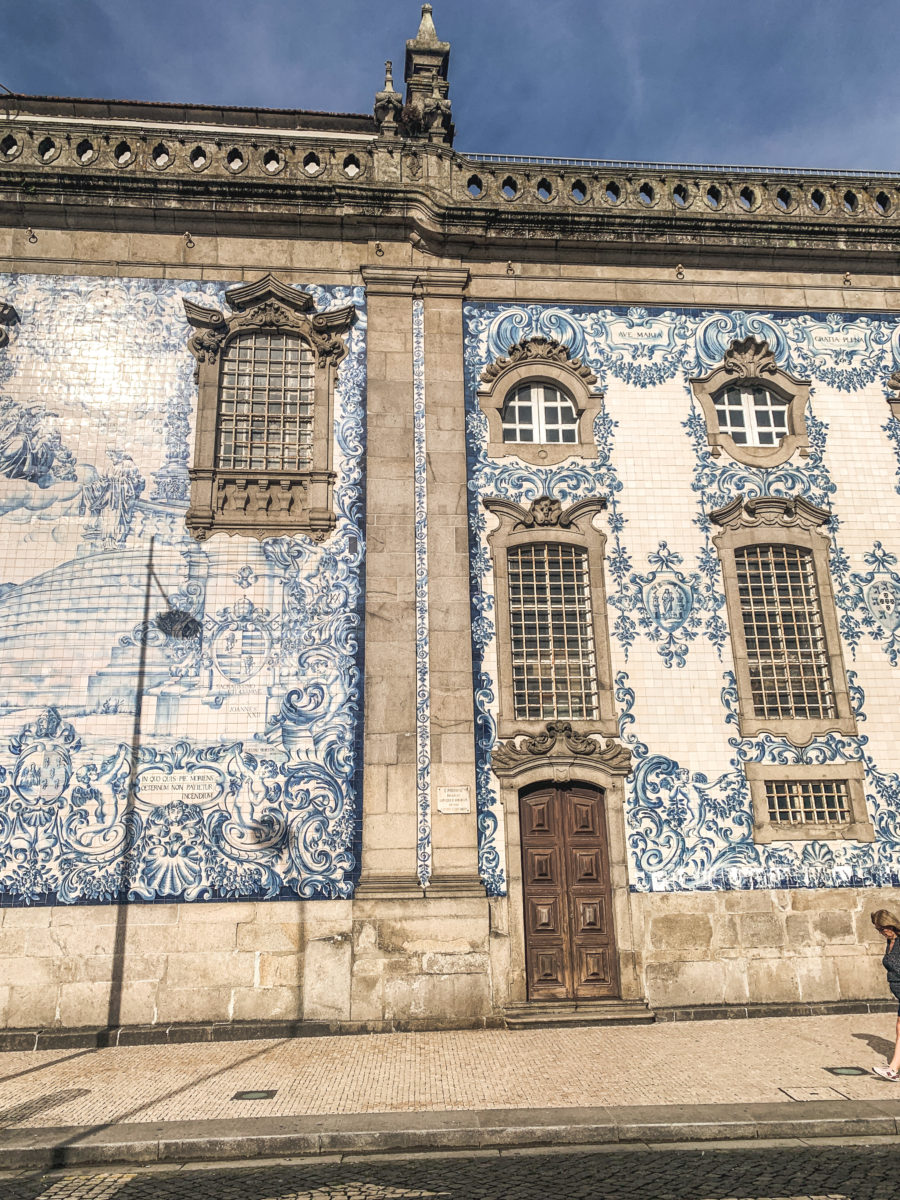
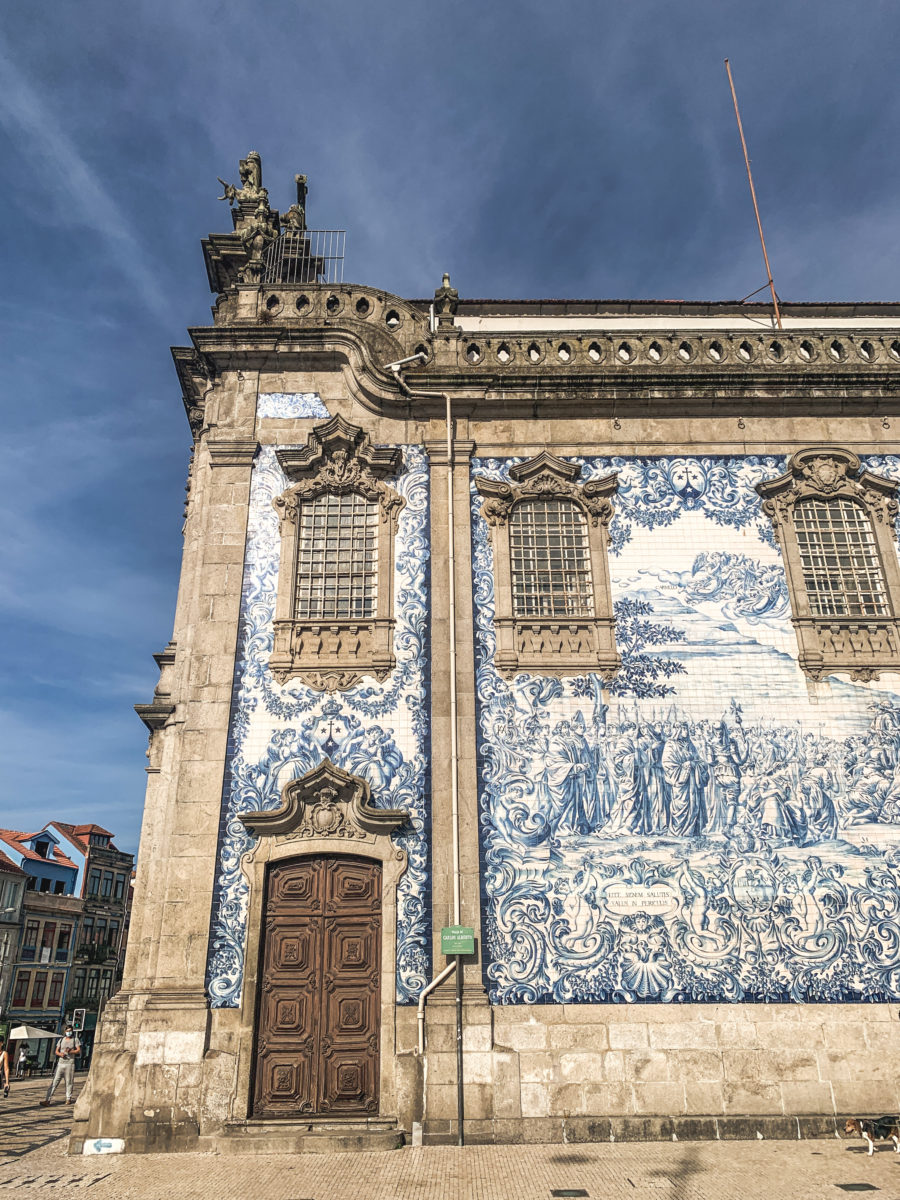
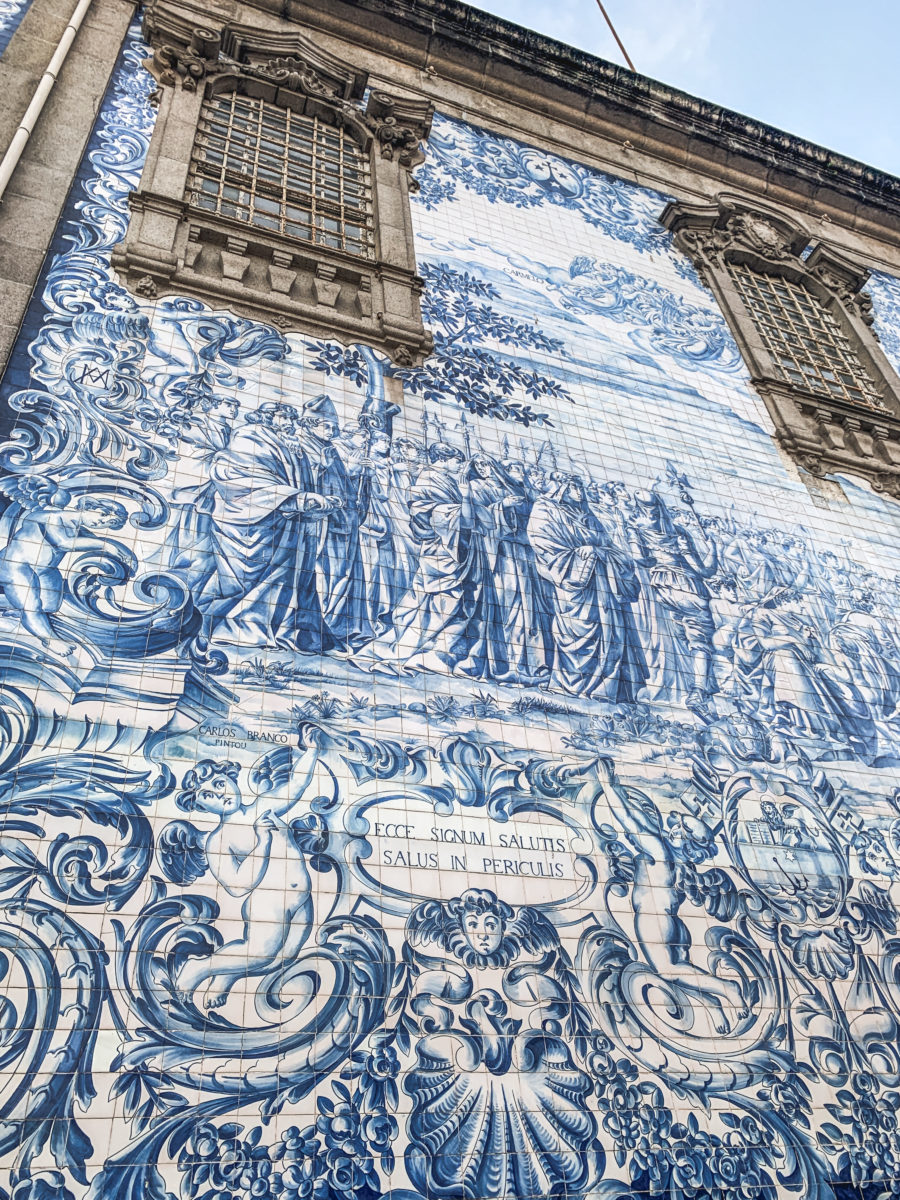
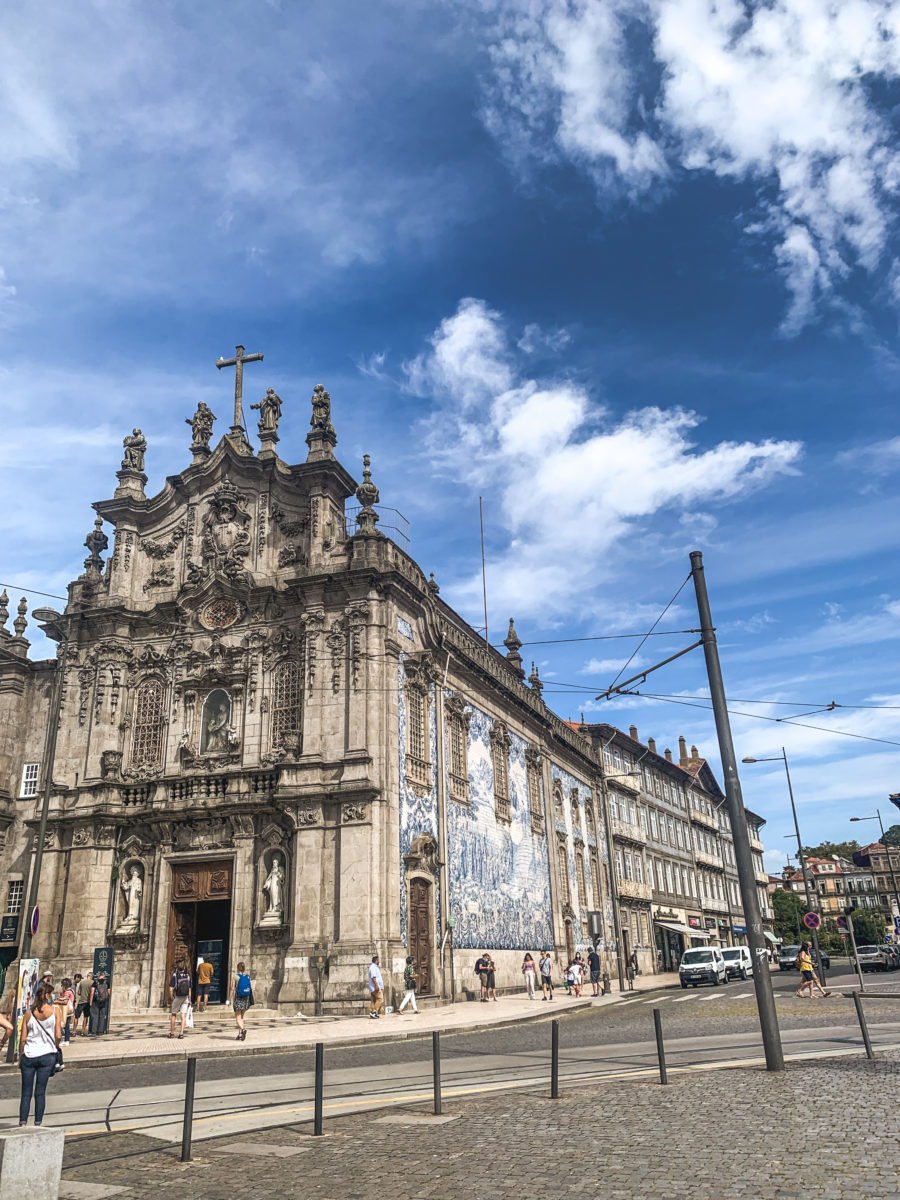
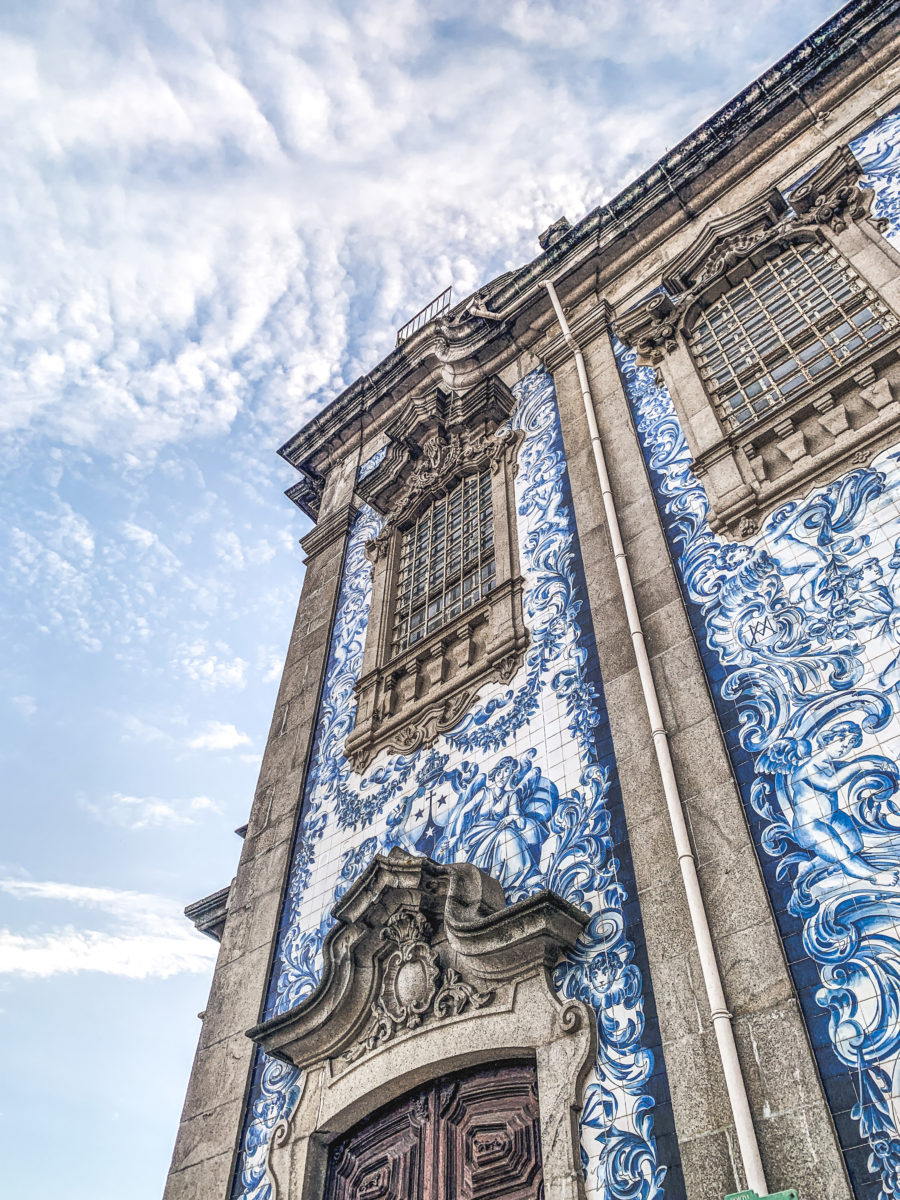
Perhaps the most famous is the São Bento station, especially its hall. As you enter the station, you will be overwhelmed by almost 20,000 azulejo tiles, the work of Jorge Colaço. Covering an area of 551 m2, this hall is truly unique as all the tiles tell a story, as if we were transported back in time.
Jorge de Colaço wanted to represent important moments in Portuguese history (mainly the foundation of the Portuguese kingdom and the Portuguese overseas empire) as well as moments of daily life in the north of Portugal. However, in the São Bento station you can also find the seasons of the year, professions and azulejos of Muslim inspiration.
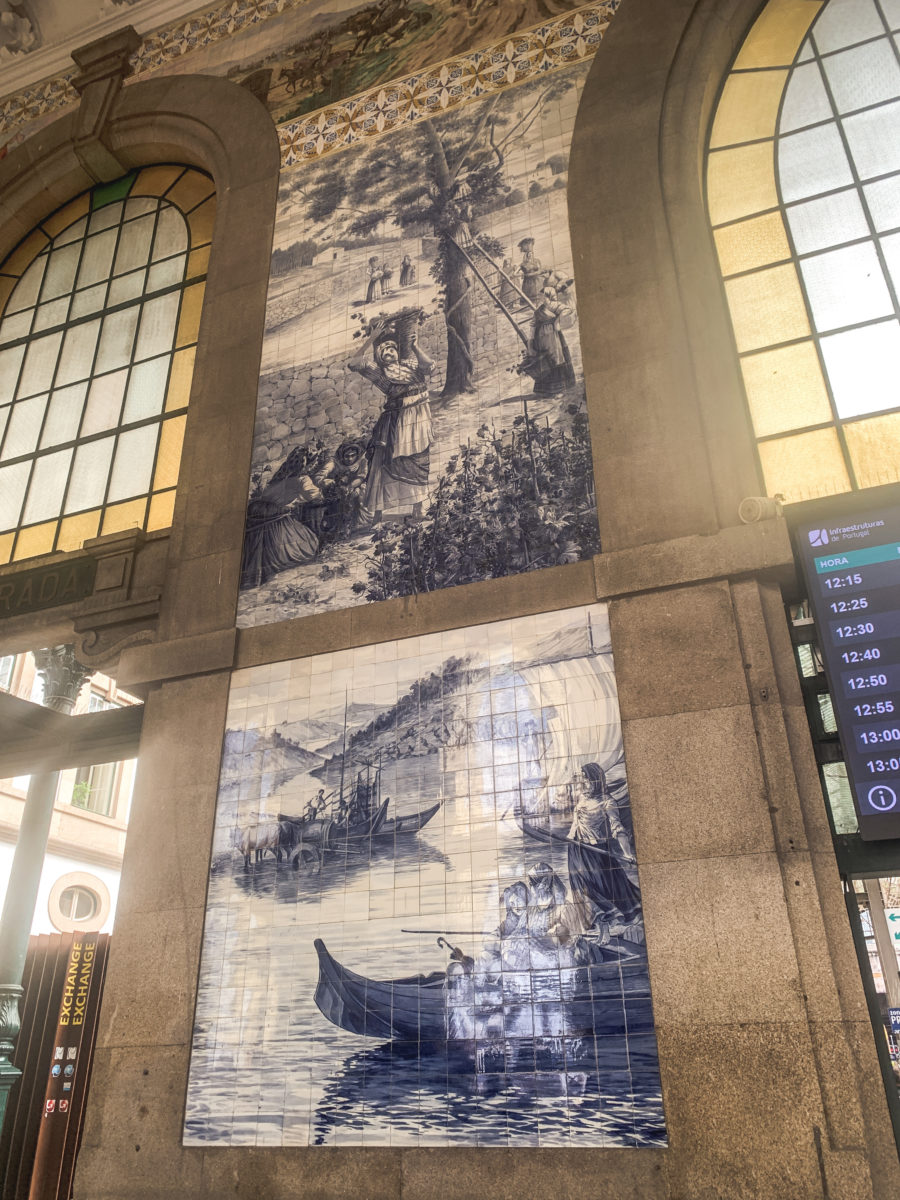
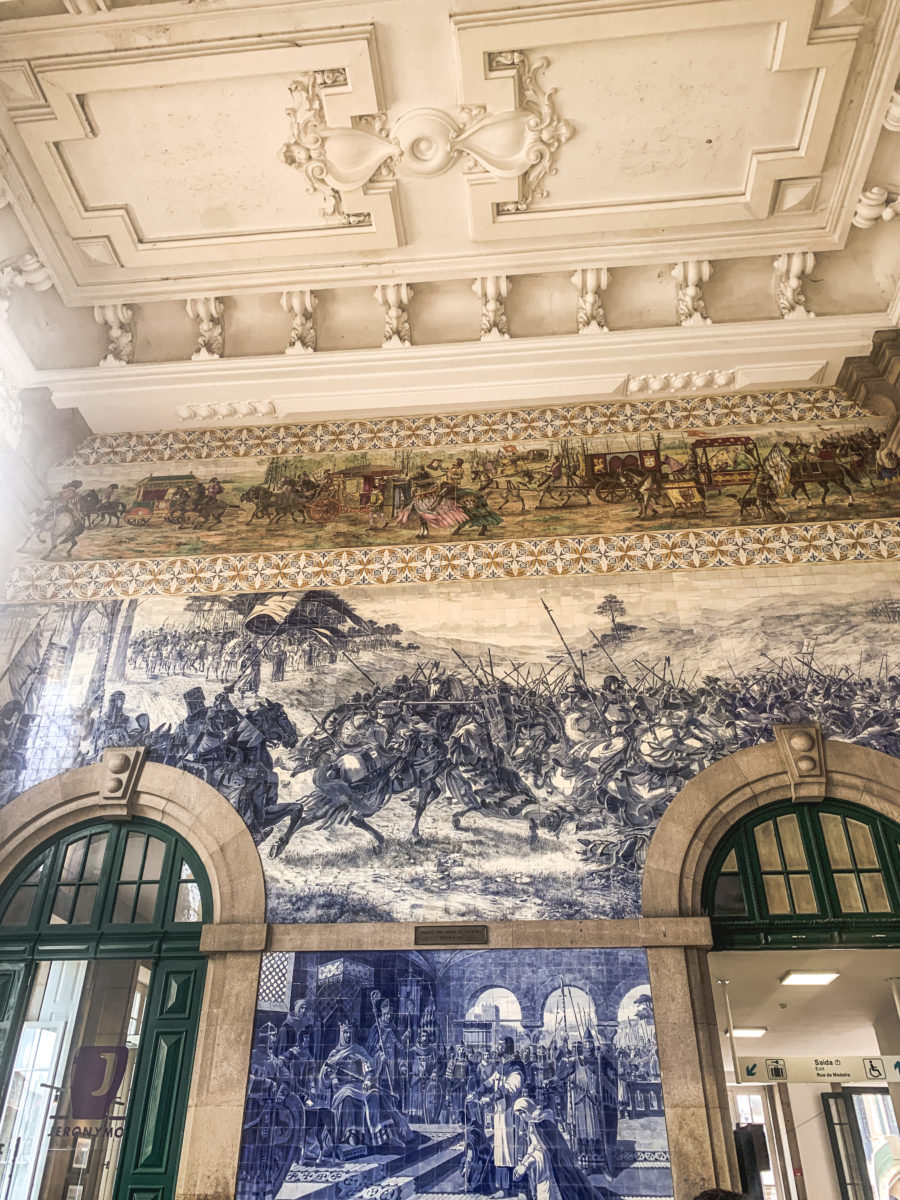
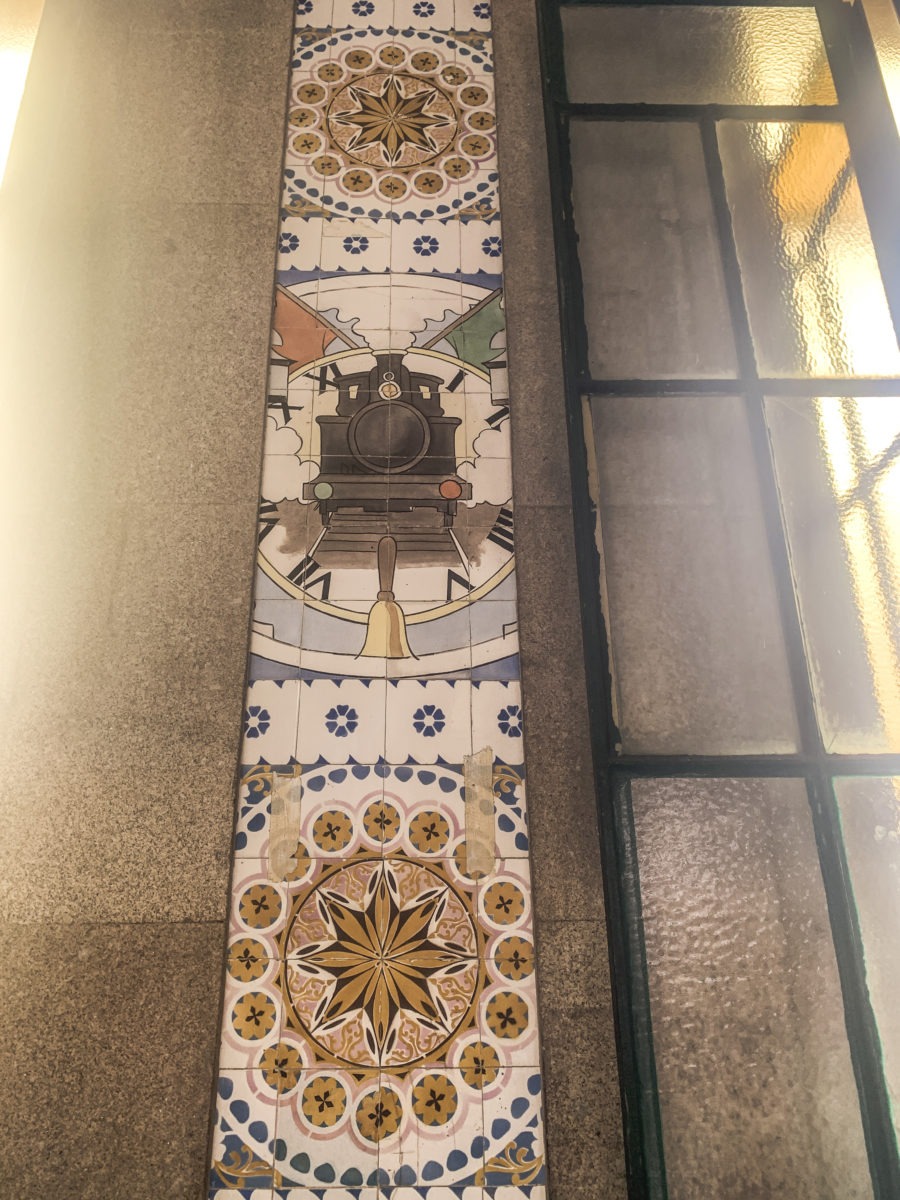
Not far from the station, in fact towards the last place not to be missed, you cannot miss the Santo Ildefonso Church, another work by Jorge de Colaço (I am still talking about the tiles only). Some 11,000 tiles cover the façade and the sides of the bell towers. They represent the life of Saint Ildefonso and the Gospel. However, they were not placed until 1931, although the church was built much earlier (around 1709).
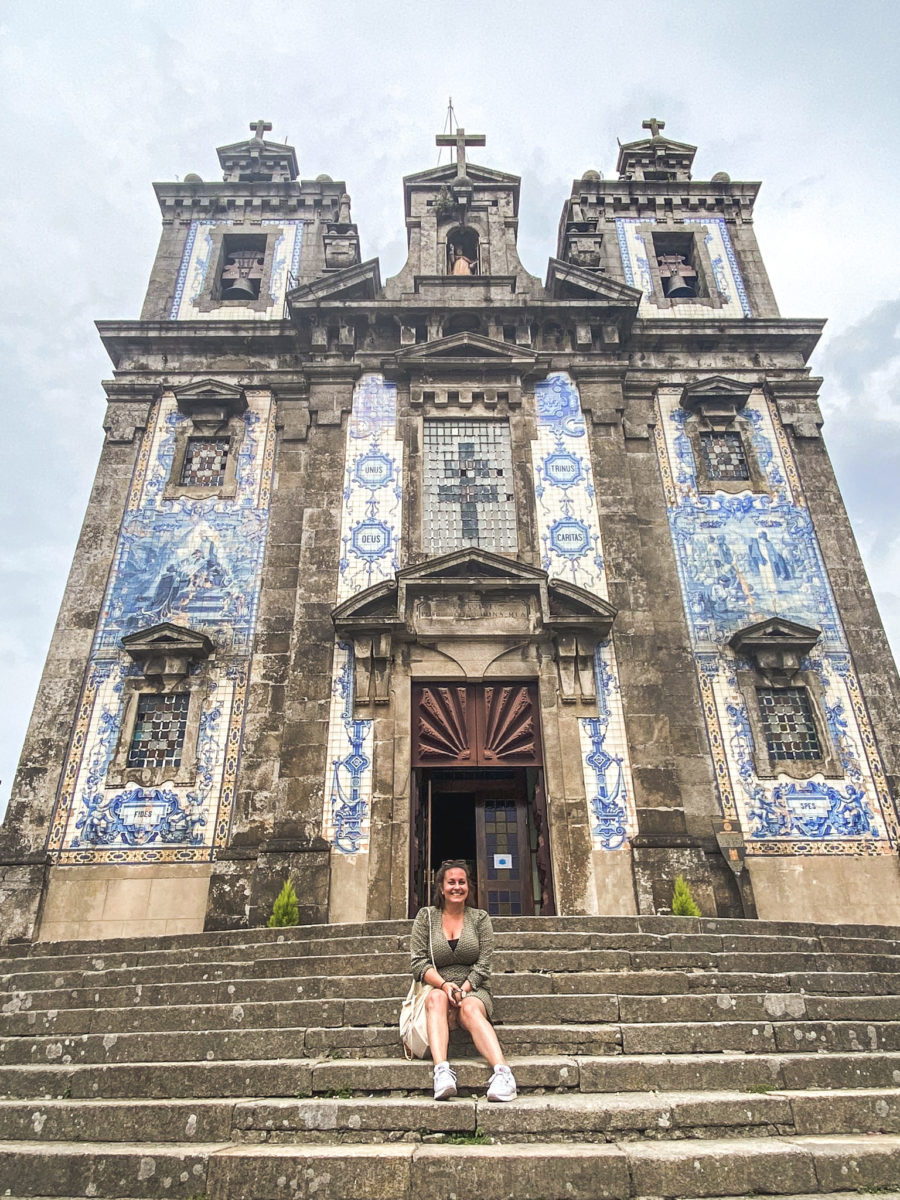
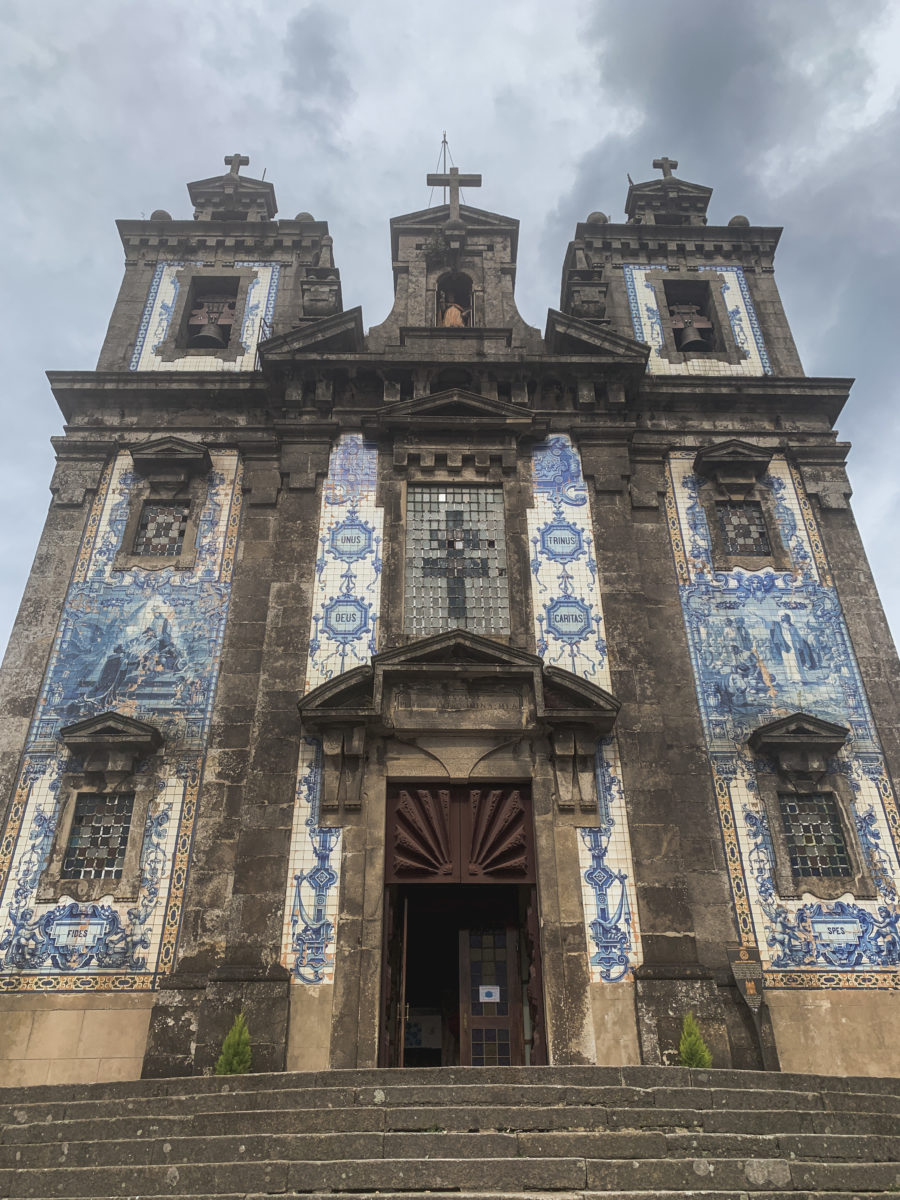
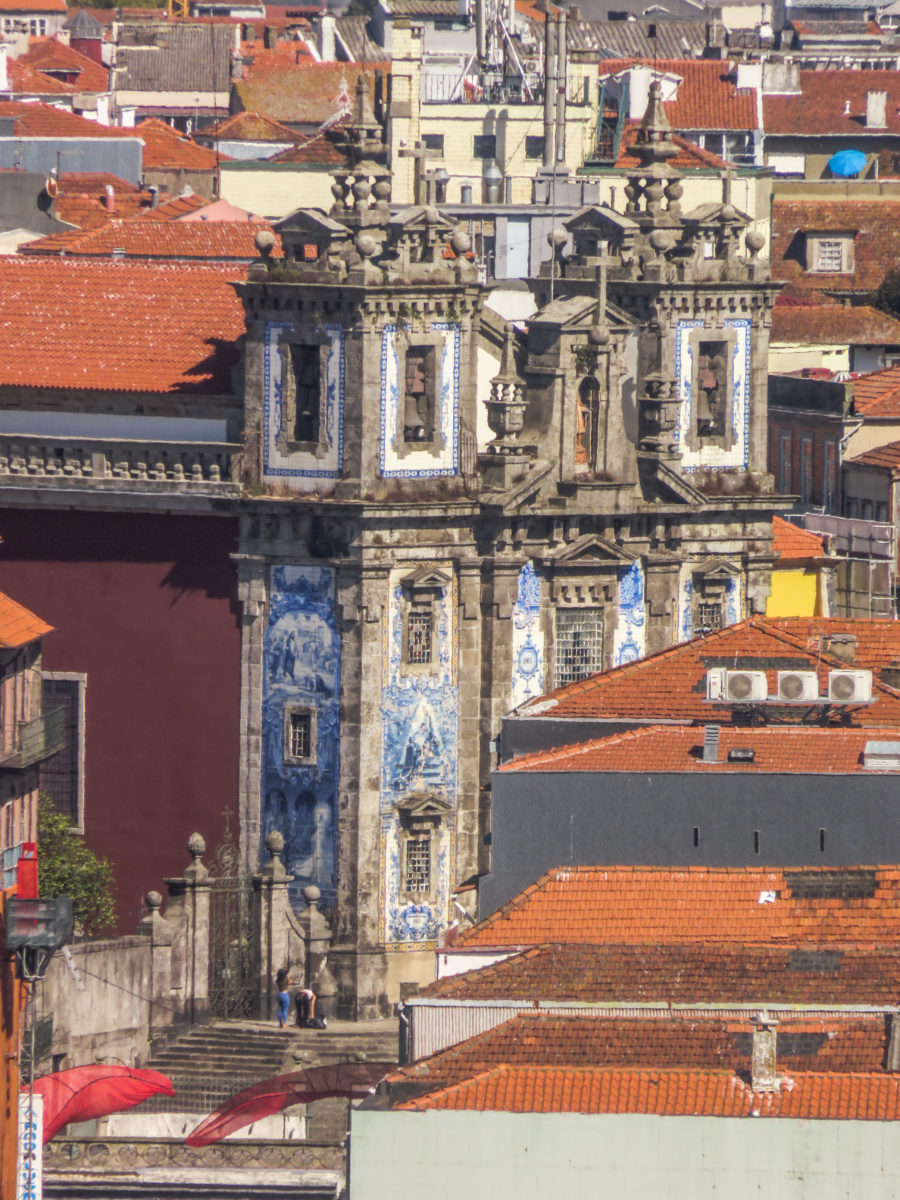
And finally, go to Capela das Almas de Santa Catarina (remember, the pedestrian street where you can go shopping). 16’000. That’s the number of tiles that cover almost the entire surface of this chapel of souls. Like the Igreja do Carmo, the theme of these tiles is religious. Indeed, the paintings represent the life of Saint Catherine (Santa Catarina) and Saint Francis of Assisi, since the chapel is dedicated to them.

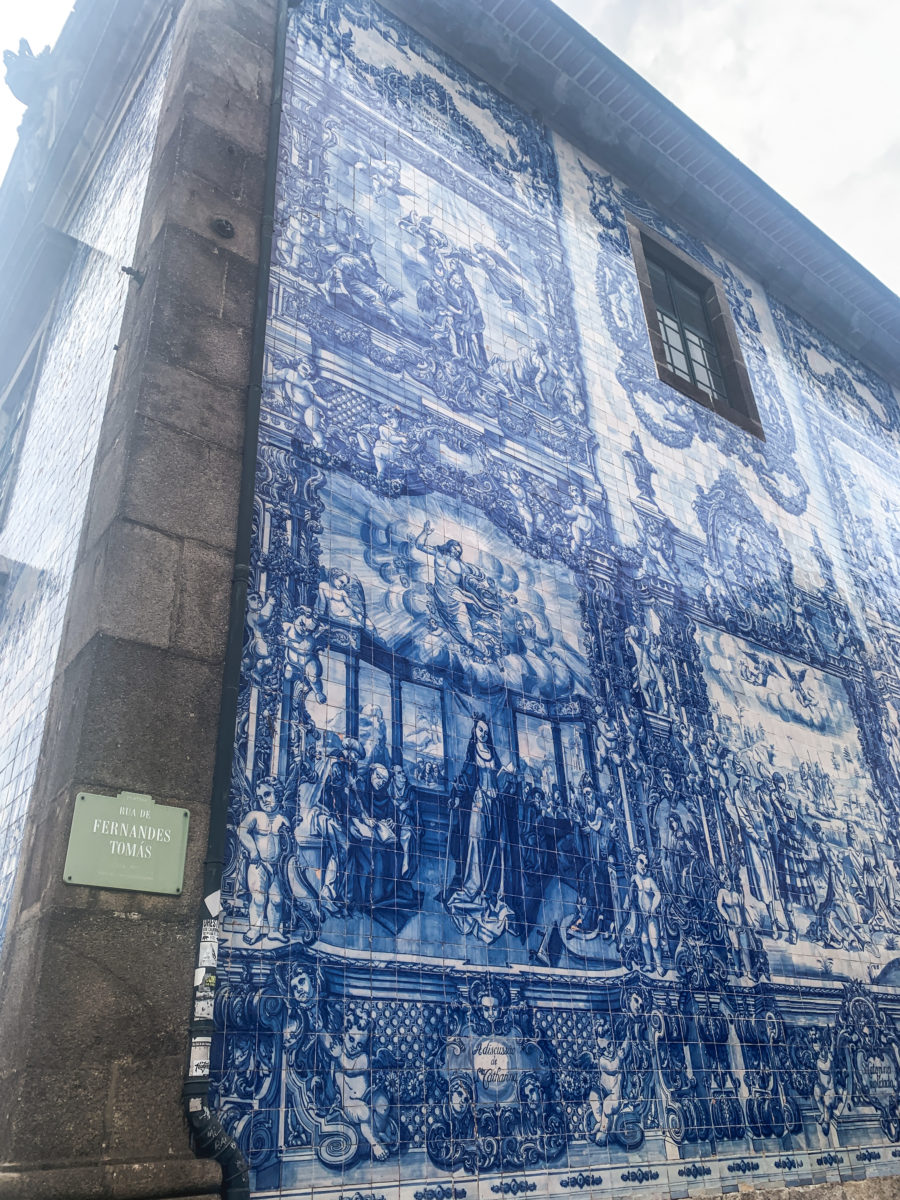
Take part in a port wine tasting
Whether you like wine or not, it’s a must if you want to get a detailed feel of Porto. Fortunately, I’m rather fond of it. To do this, you’ll have to cross the Dom Luis towards Vila Nova de Gaia.
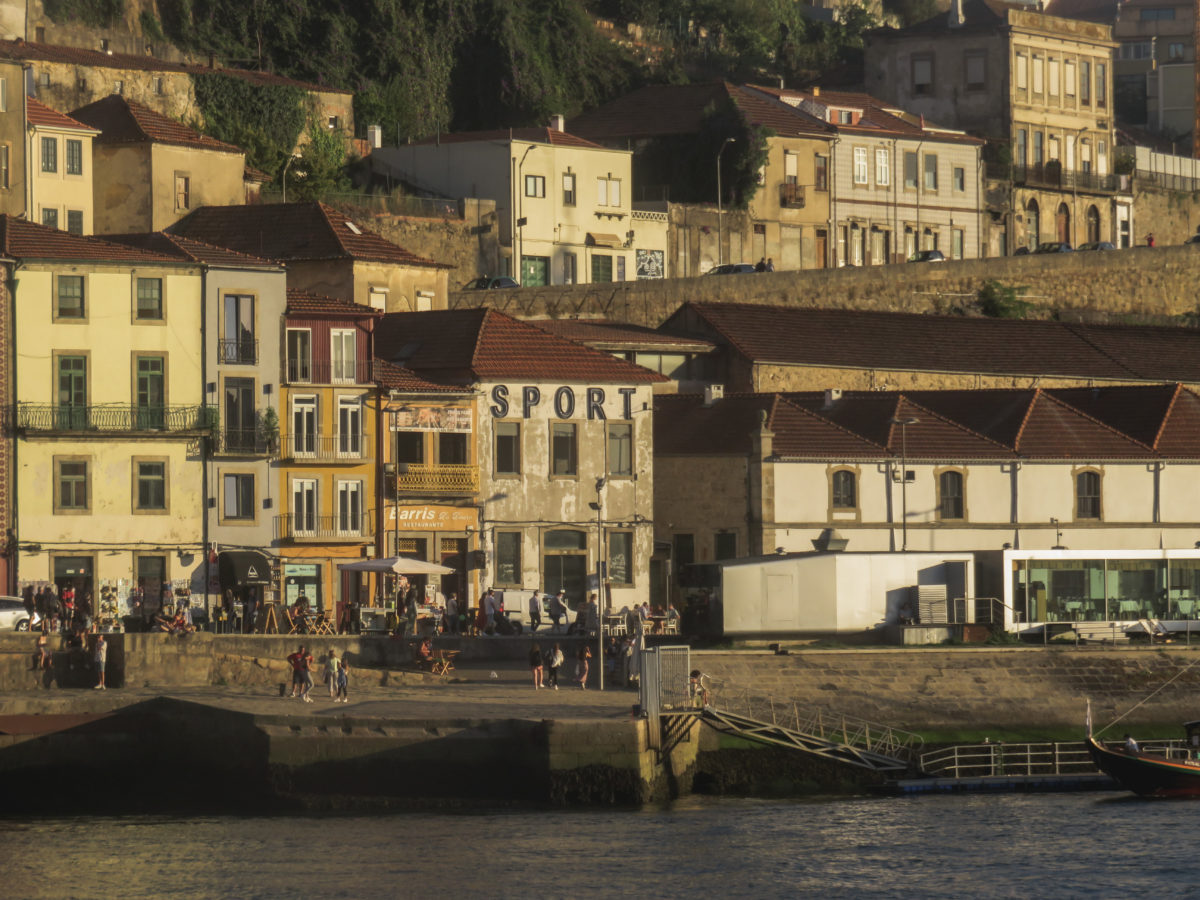
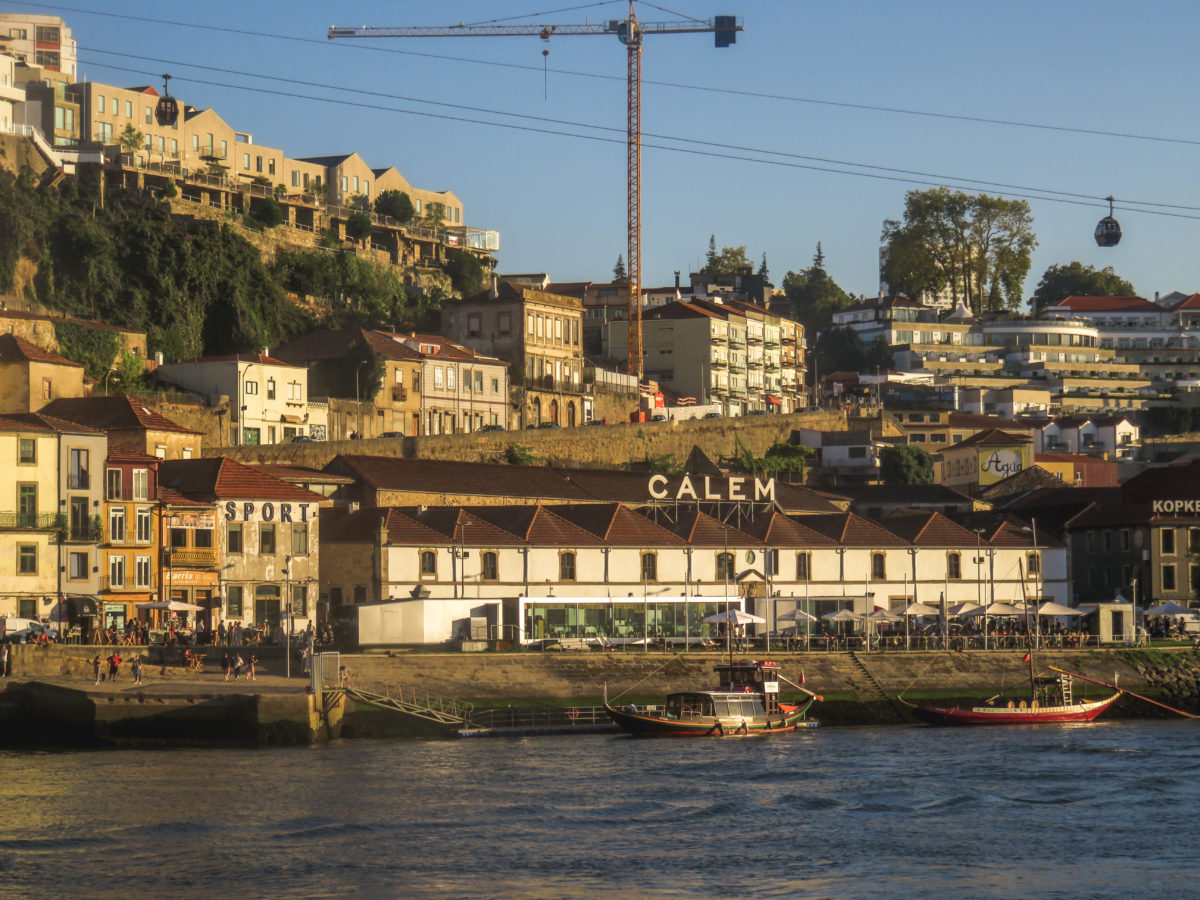
On this side of the Douro, cellars are everywhere. It is therefore difficult to know which one (or ones, no judgement will be made, cheers…) to choose, so many renowned and well-established companies in the port trade are involved. Authenticity is certainly a key consideration, but so is price. Without spoiling you, these visits are not cheap, especially for what you are offered accordingly.
I had seen an offer combining Fado (the Portuguese folk songs) and port wine tasting, at the Porto Calem winery, which I knew instinctively was where we were going to visit. However, when we bought the tickets online, for a visit in French (we would have preferred in English, but the time available did not suit our programme), it was impossible to select this offer (nor in the other languages, the reservation is made on the spot, which we learnt when we went there). Discovering Fado will be an activity to undertake on a future trip to Portugal.
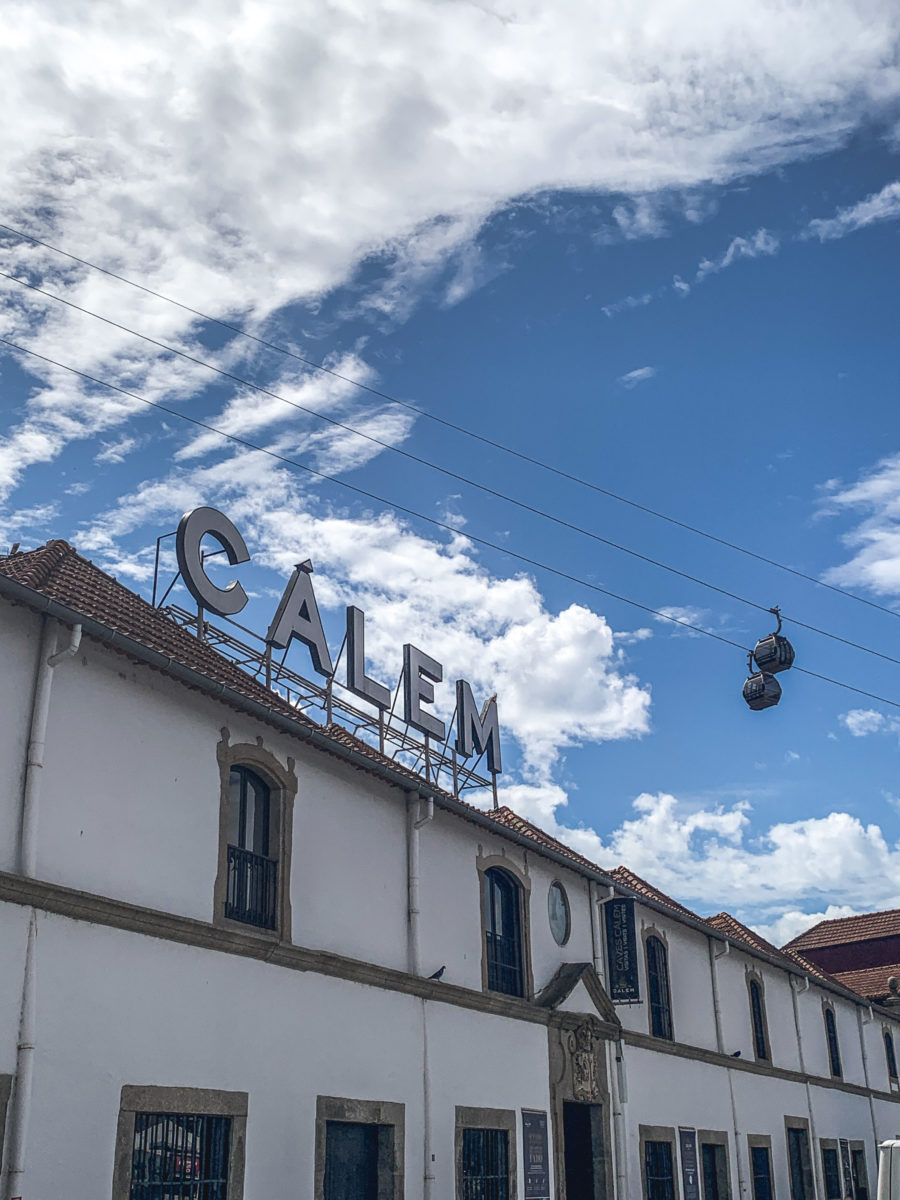
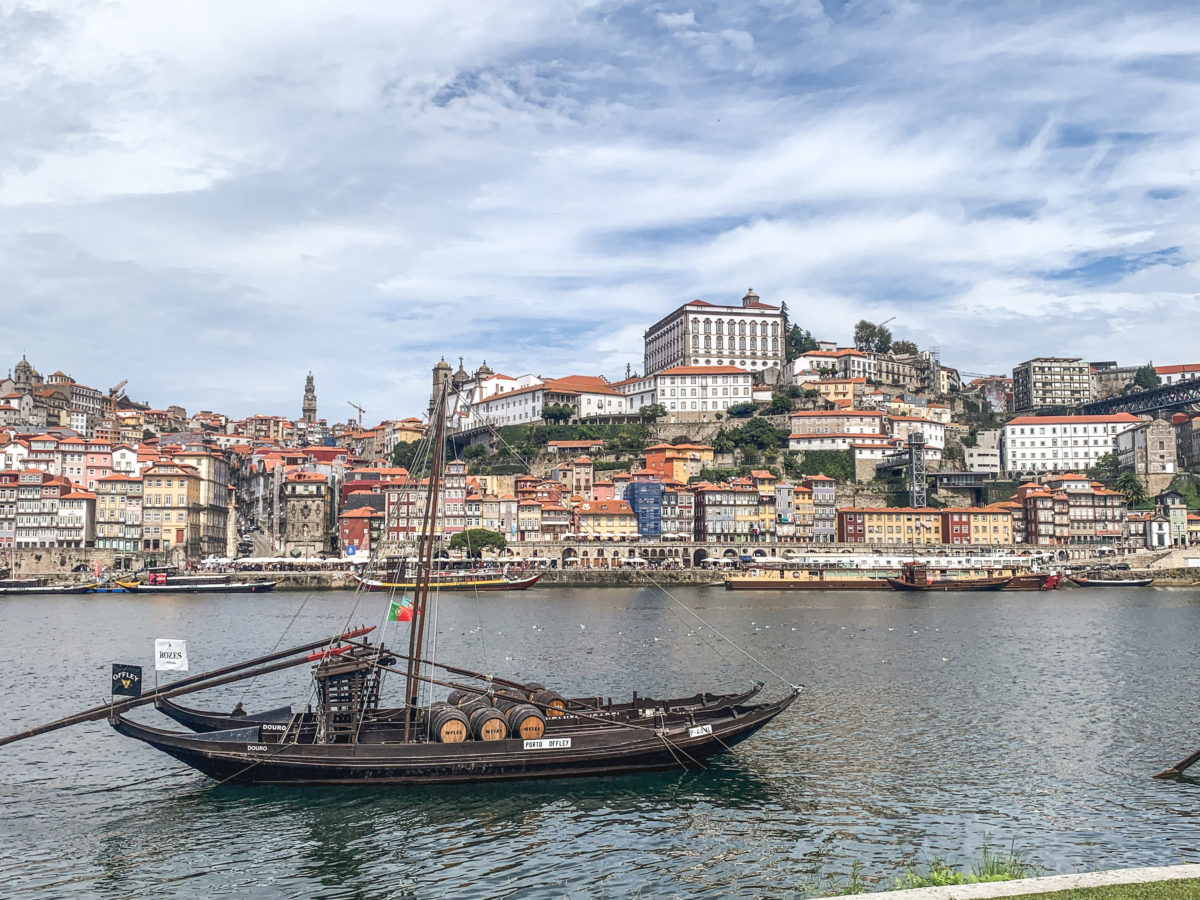
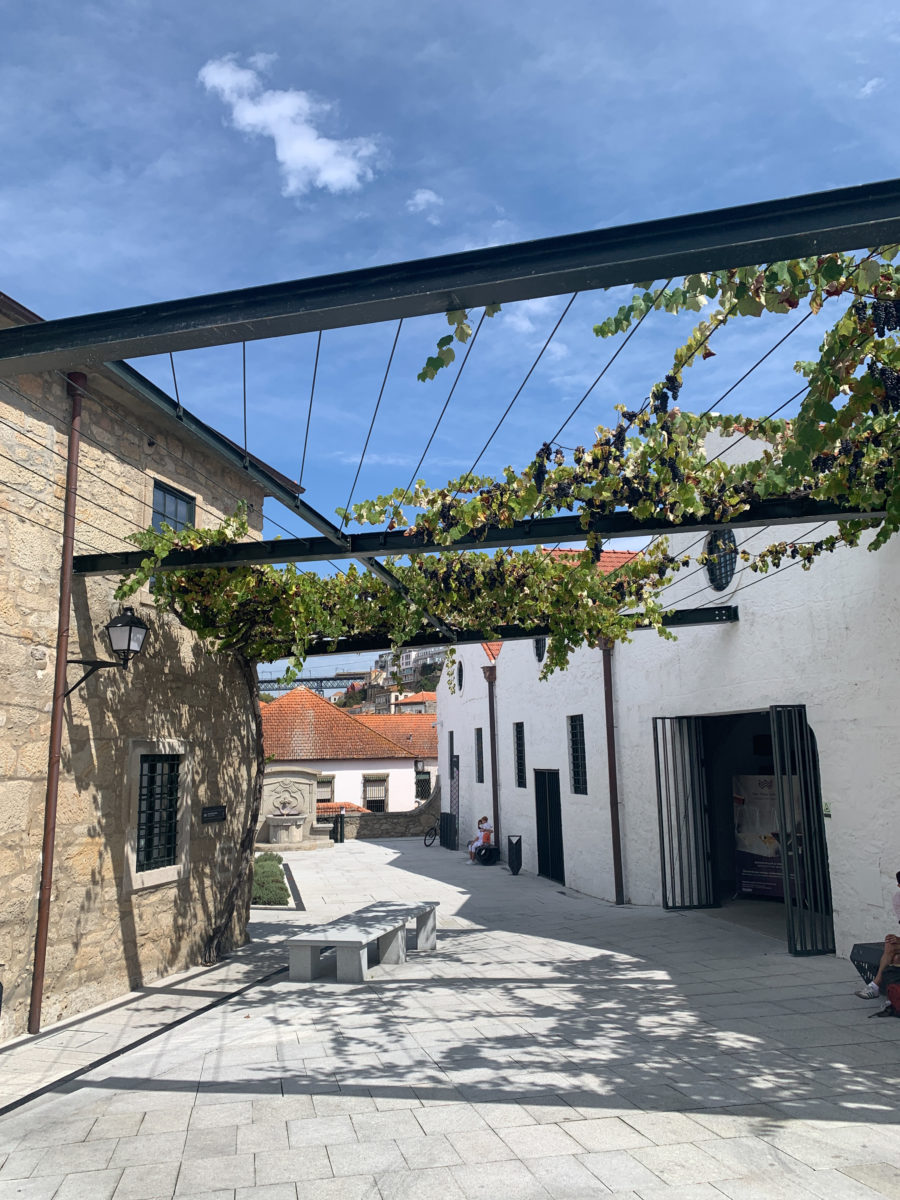
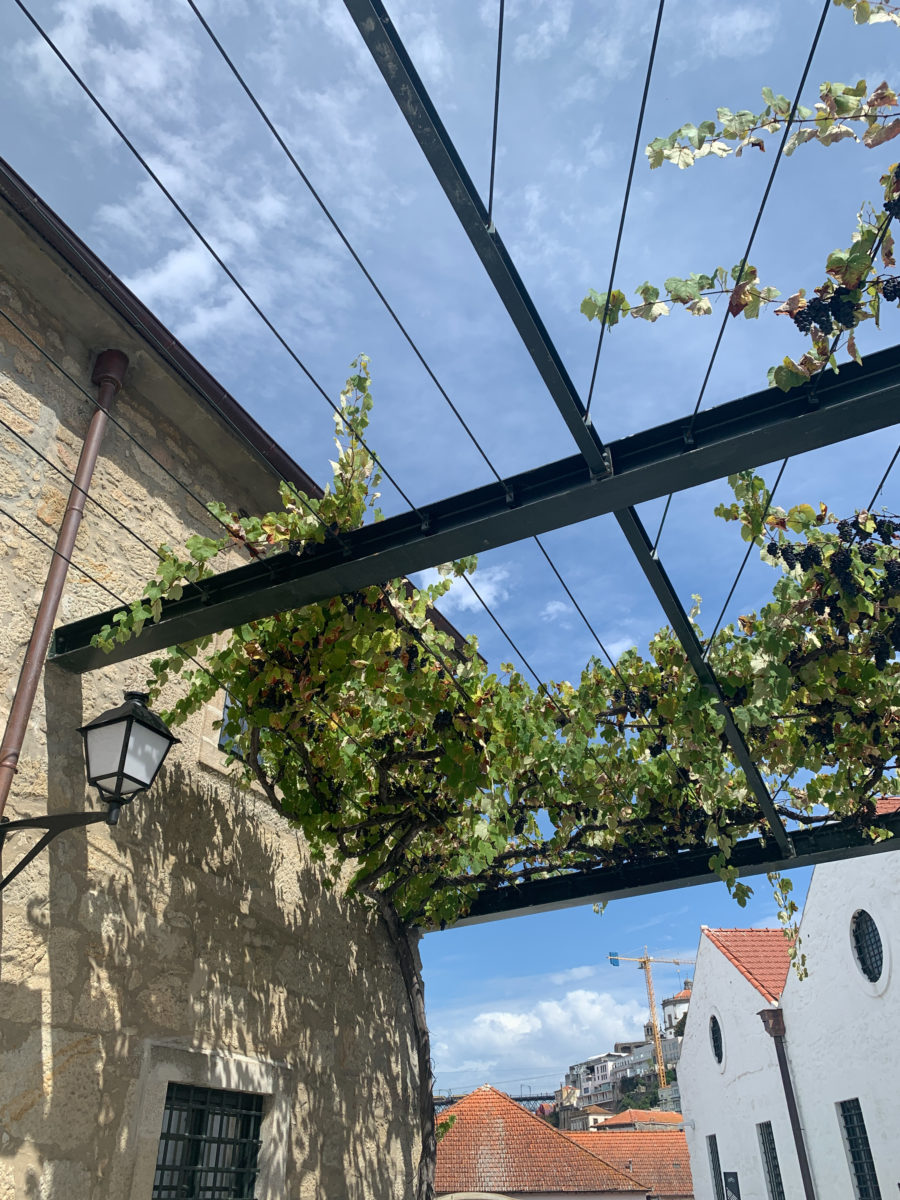
So, the visit to Porto Calem was very interesting, although quite short (30 minutes max). Due to the pandemic, it is actually no longer possible to discover the museum by yourself, so it is compulsory to participate in a guided tour. I think that the speech is quite well polished, but I discovered many instructive aspects and was very impressed with the barrel cellar.
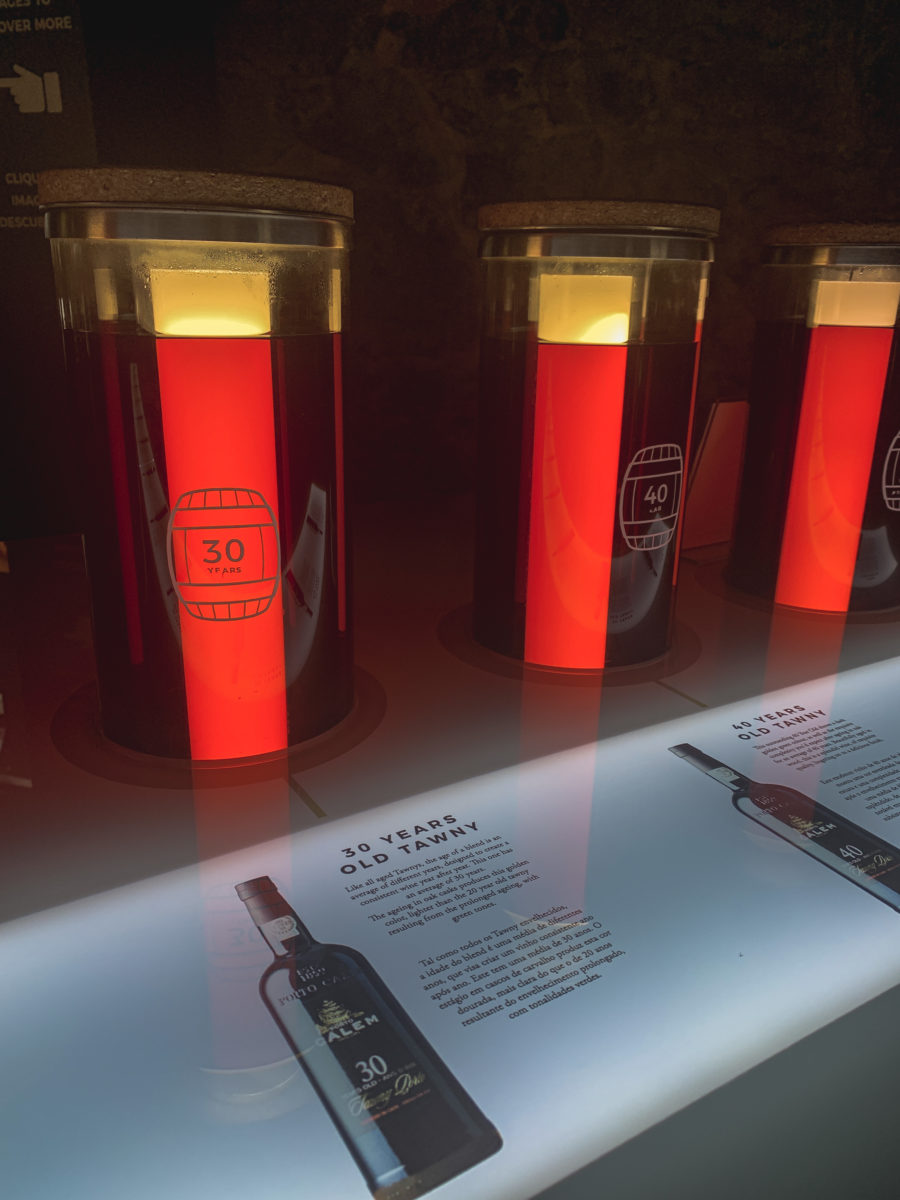
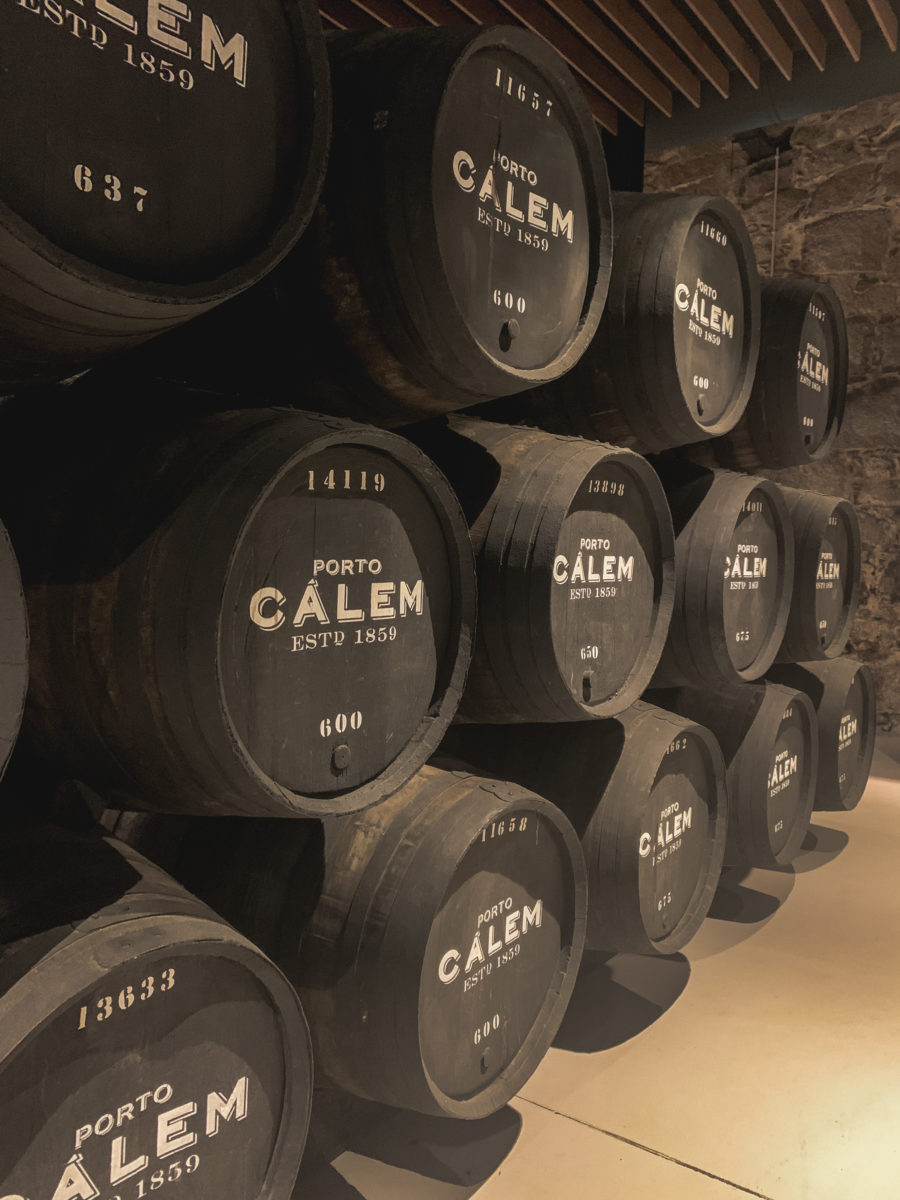
To make the experience complete, a trip to the Douro vineyards would be even better, as the grapes come from the Douro Valley, about 100 km from Porto. The landscapes presented here are quite appealing, but not enough to take away the title of the most beautiful vineyard in the world from Lavaux (ok, that’s just my chauvinistic opinion). In the past, the grapes were transported to Vila Nova de Gaia by traditional boats (yes, the ones you will see moored at the docks).
The most important part of the visit is the end with the tasting. Depending on the package you choose, you will have the opportunity to taste between 3 or 5 wines. We opted for the light version.

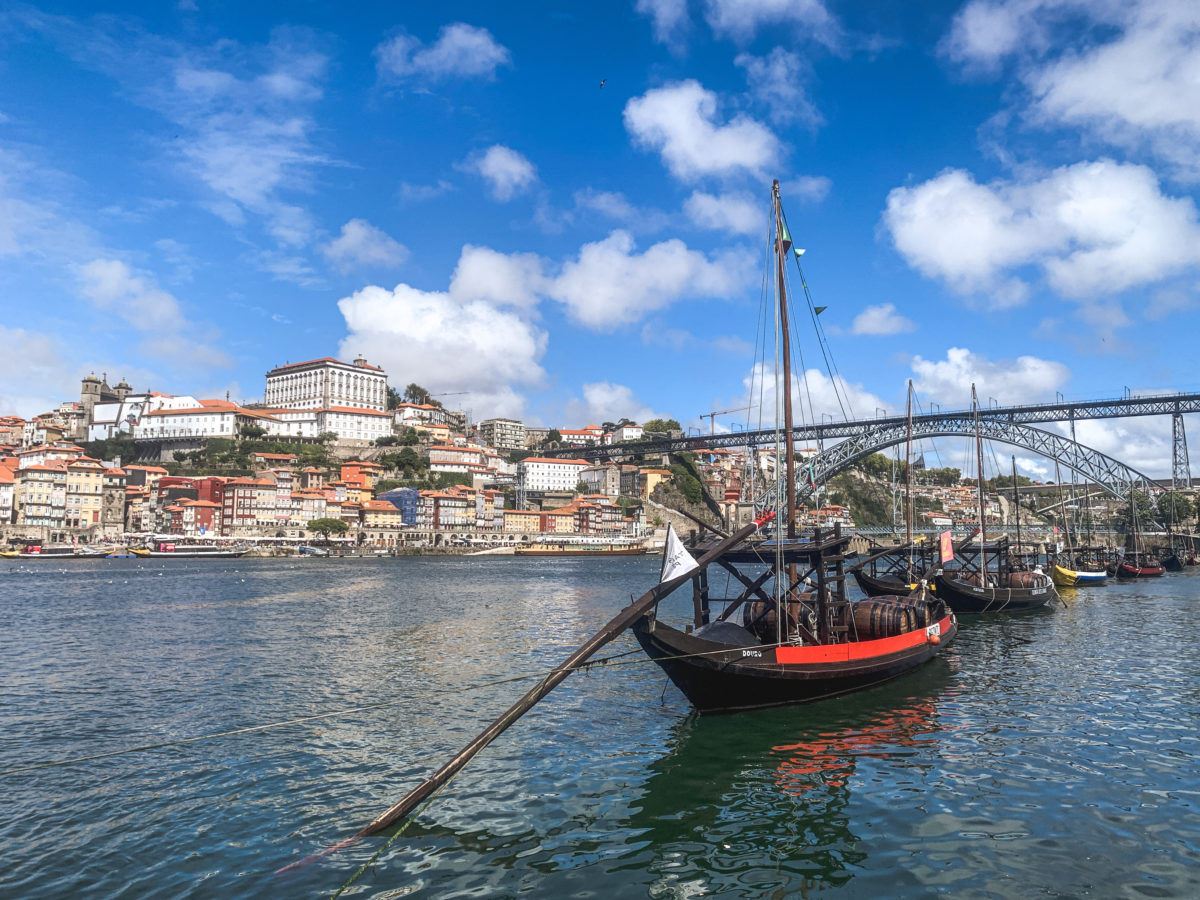
We were also advised to visit the Sandeman cellars, which is one of the oldest houses, established since 1790 in Porto. We will just go to their official shop in search of a gift for my friend’s parents. Finally, the duty-free shop at Porto airport has many bottles if you don’t have time to visit an official winery (for approximately the same price).


Meet the ocean and ride the wave in Porto
One of the main attractions of Porto is its maritime side and the fact that it is open to the Atlantic Ocean. I was going to go surfing, as I’ve had this sporty craze for some time. Porto is not particularly known as a surfing destination in Portugal, but it has developed in this direction. To do so, we went to the beach of Matosinhos!
We chose to go there by taking the mythical tram 1 which goes along the Douro river to the ocean. This tram runs every 30 minutes, so be prepared to wait at the Infante stop (a stone’s throw from the Ribeira quay) or the Passeio Allegre stop (a 10-minute walk from the ocean). Tourists almost scramble to find a seat on the right side and some are left behind, as the number of people on the tram is limited.
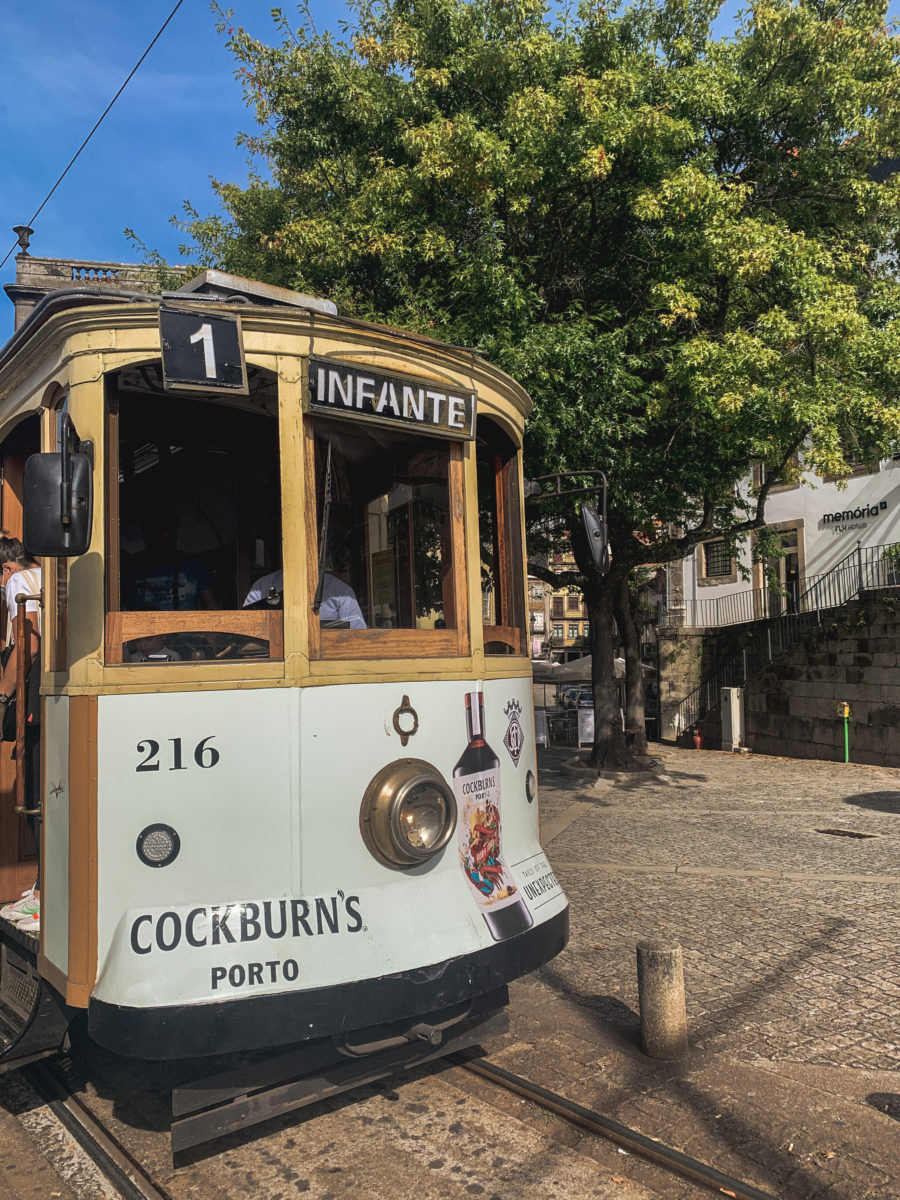
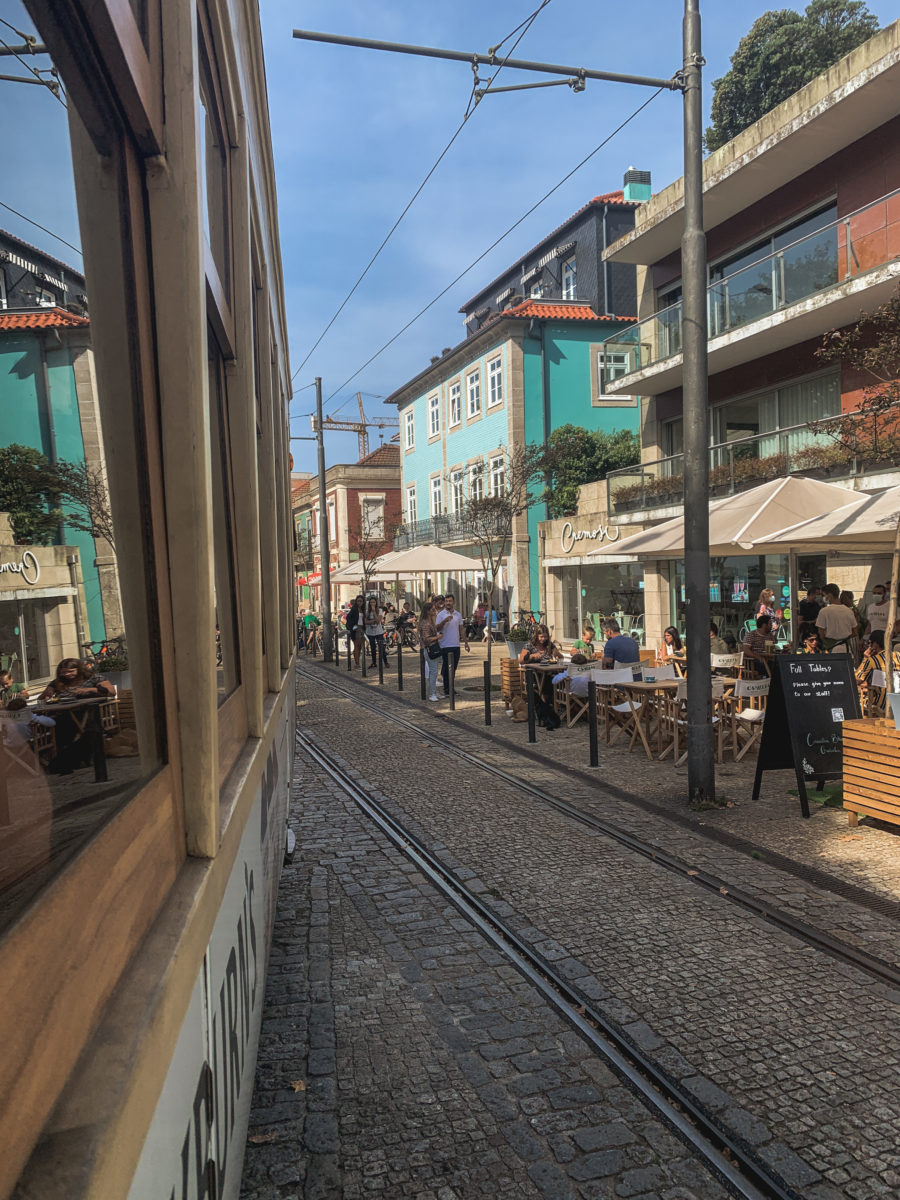

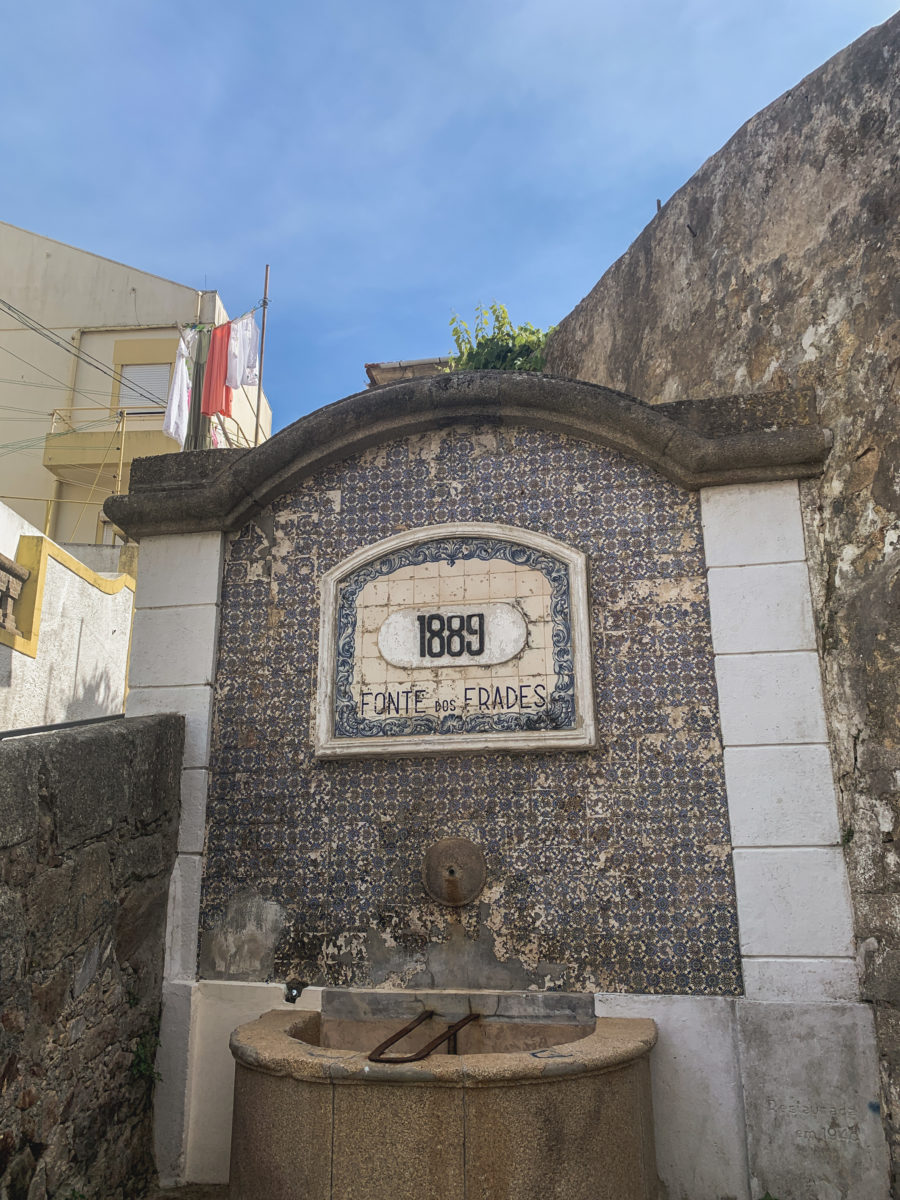

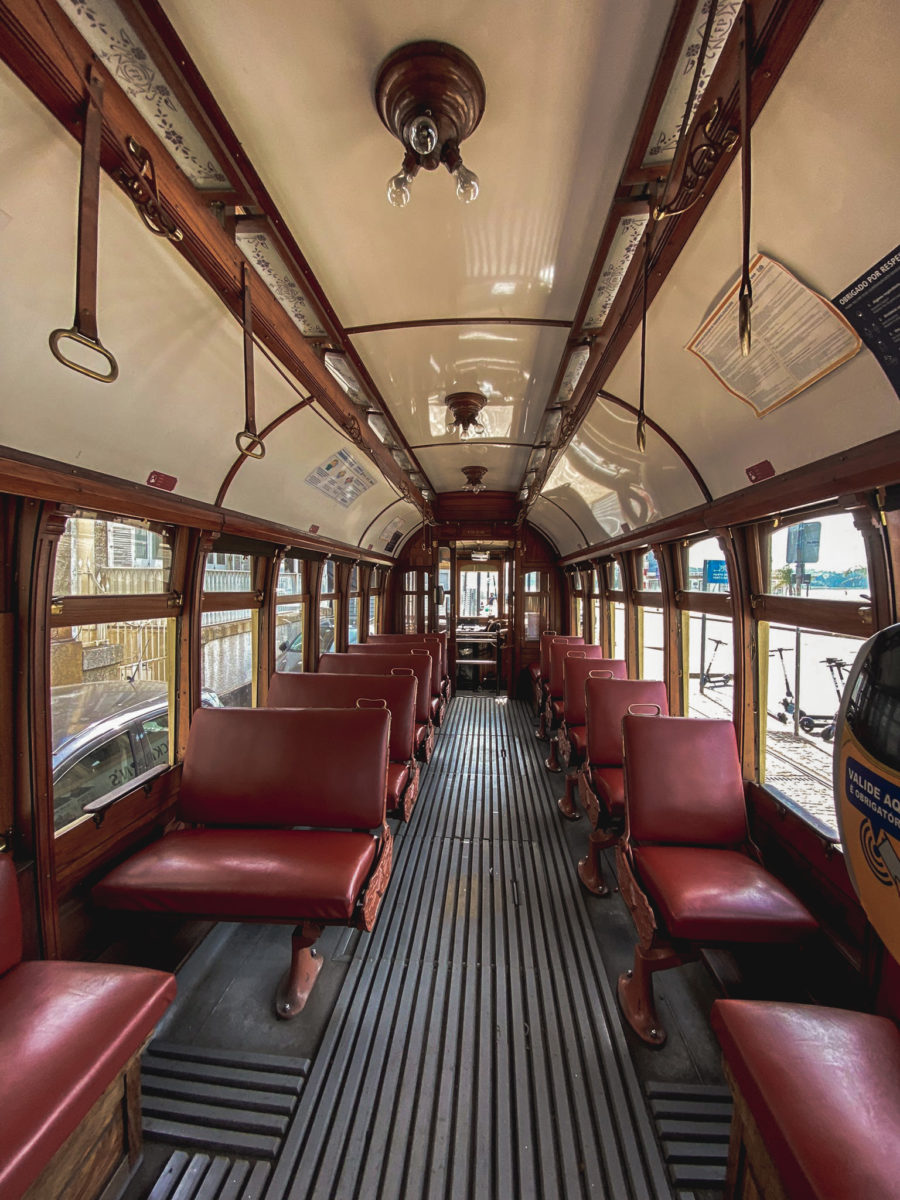
We managed to get a seat, but not on the right side (the one along the ocean). Not really important to us, we were just happy to be able to sit and watch the quays of Porto all the way to Passeio Allegre.
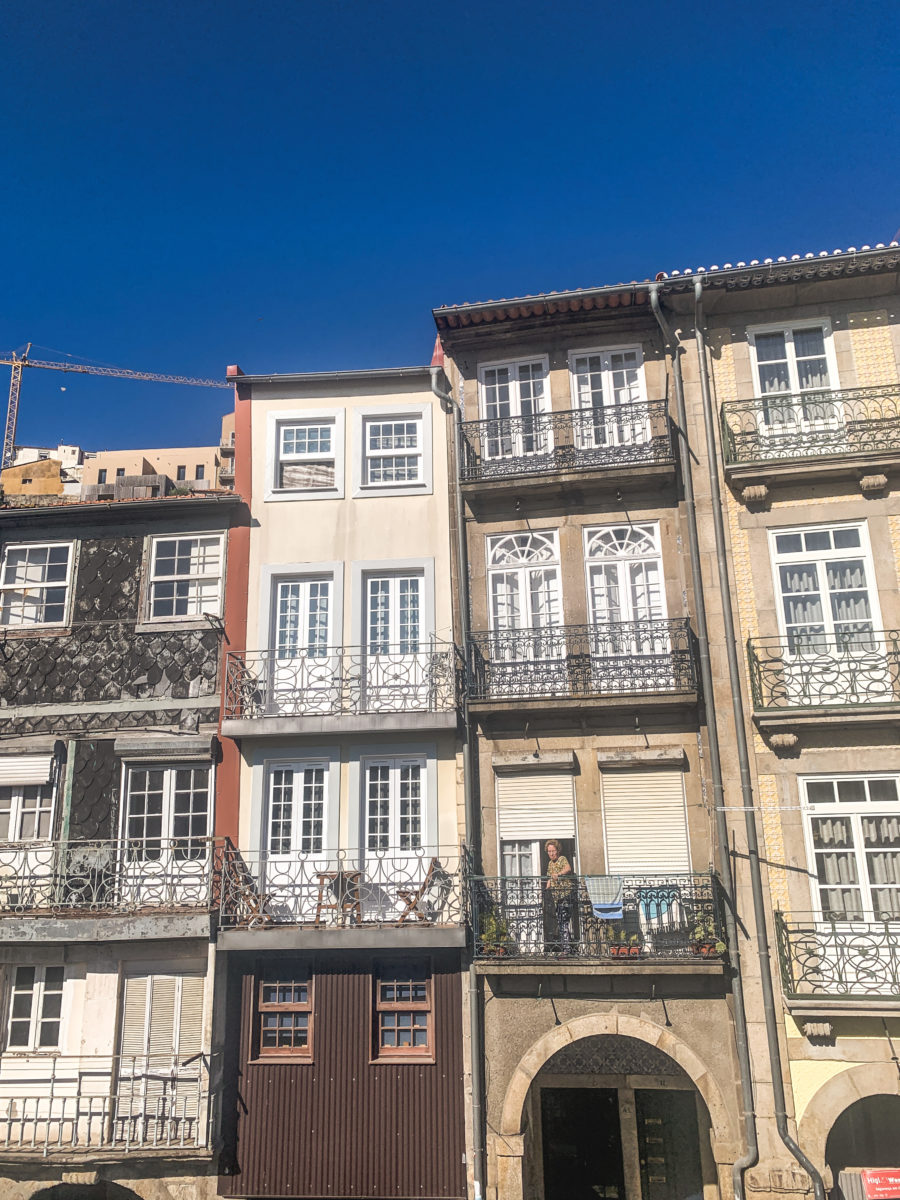
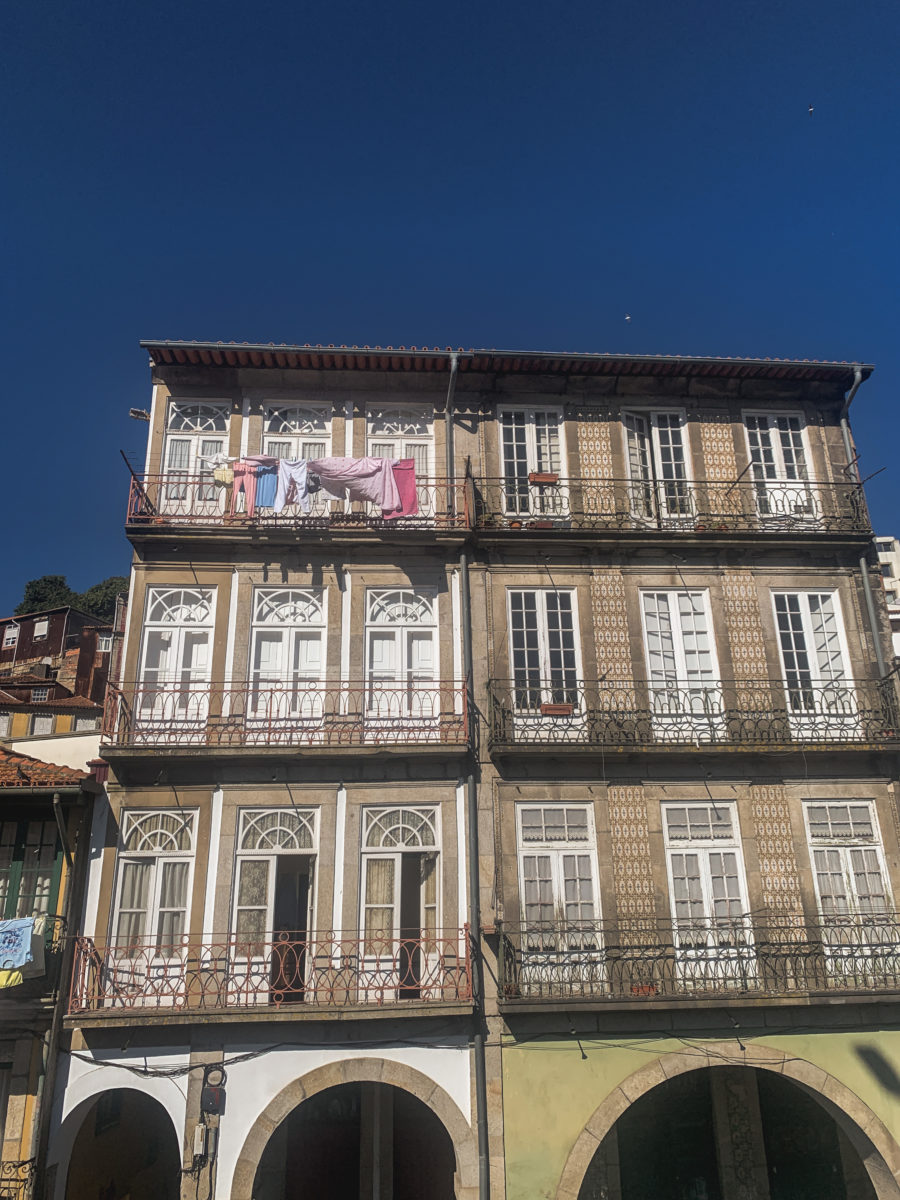
When we arrived at the ocean, we took a bus to the Fundacao de Serralves contemporary art museum (well, several buses, since we took the wrong direction…). This little round trip will be told to you in the next chapter. However, we returned to the ocean at Av. do Brasil, in the town of Foz do Douro, in order to walk up the ocean to the beach to surf.
The route to the beach is about 3 kilometres long. All along the way you can swim as there are many beaches, both sandy and rocky, that stretch to Matosinhos. You will pass a very famous place which is the Pergola of the Avenida do Brasil, especially at dusk!

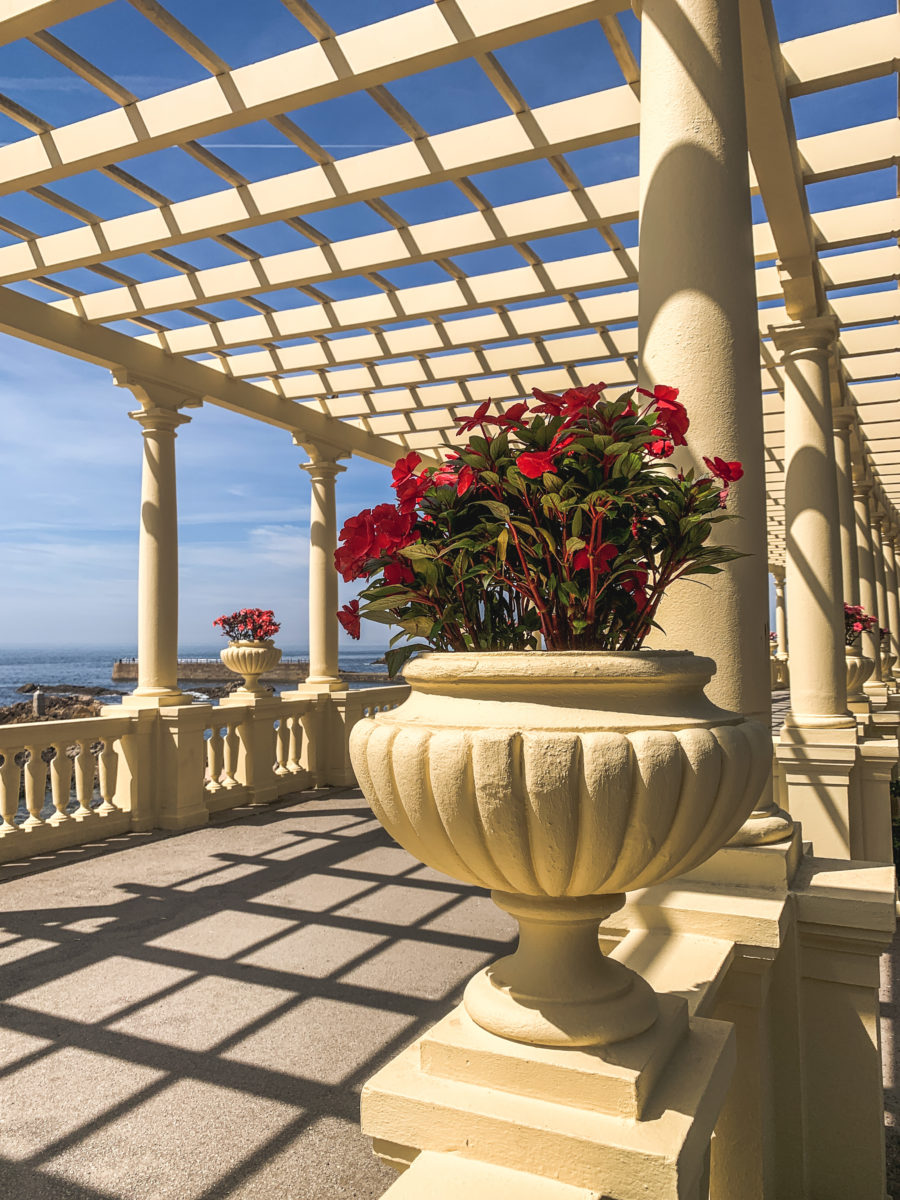
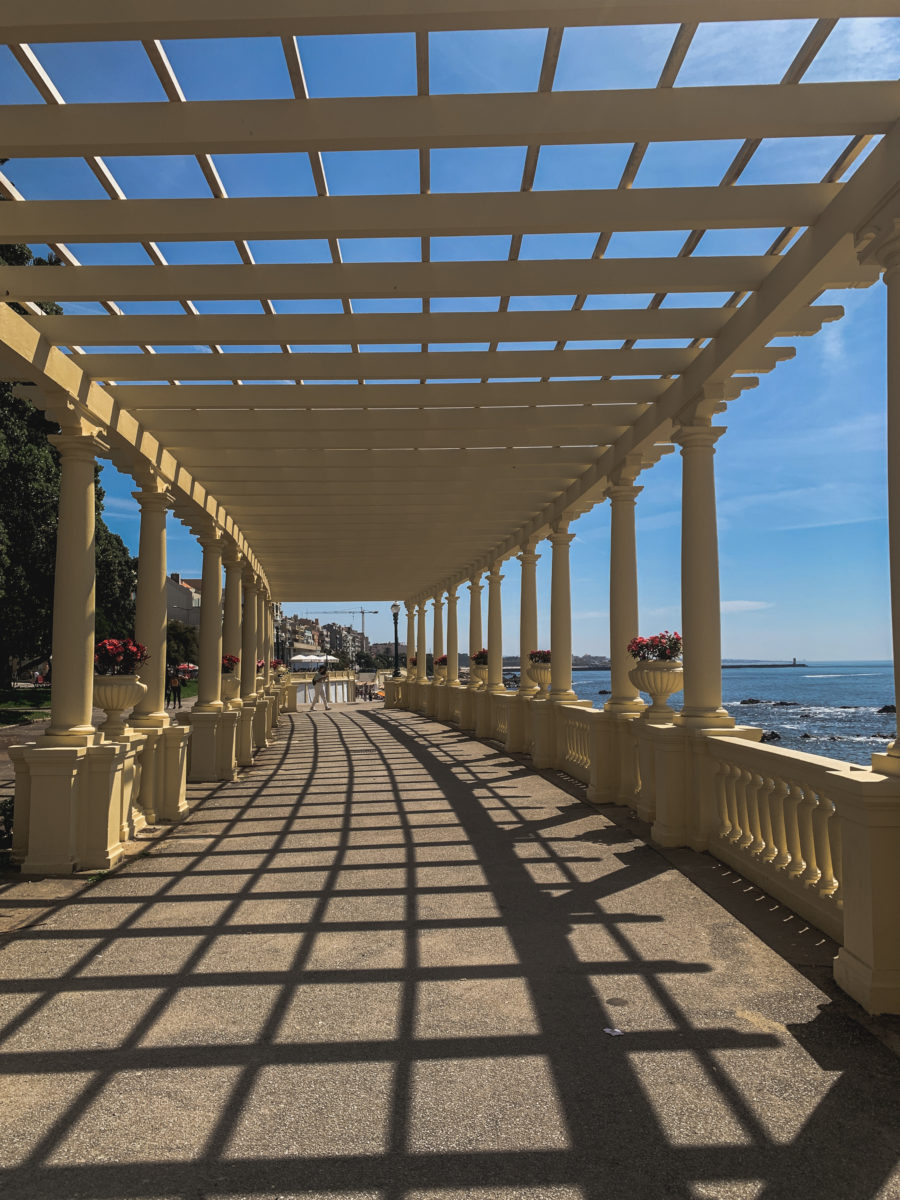
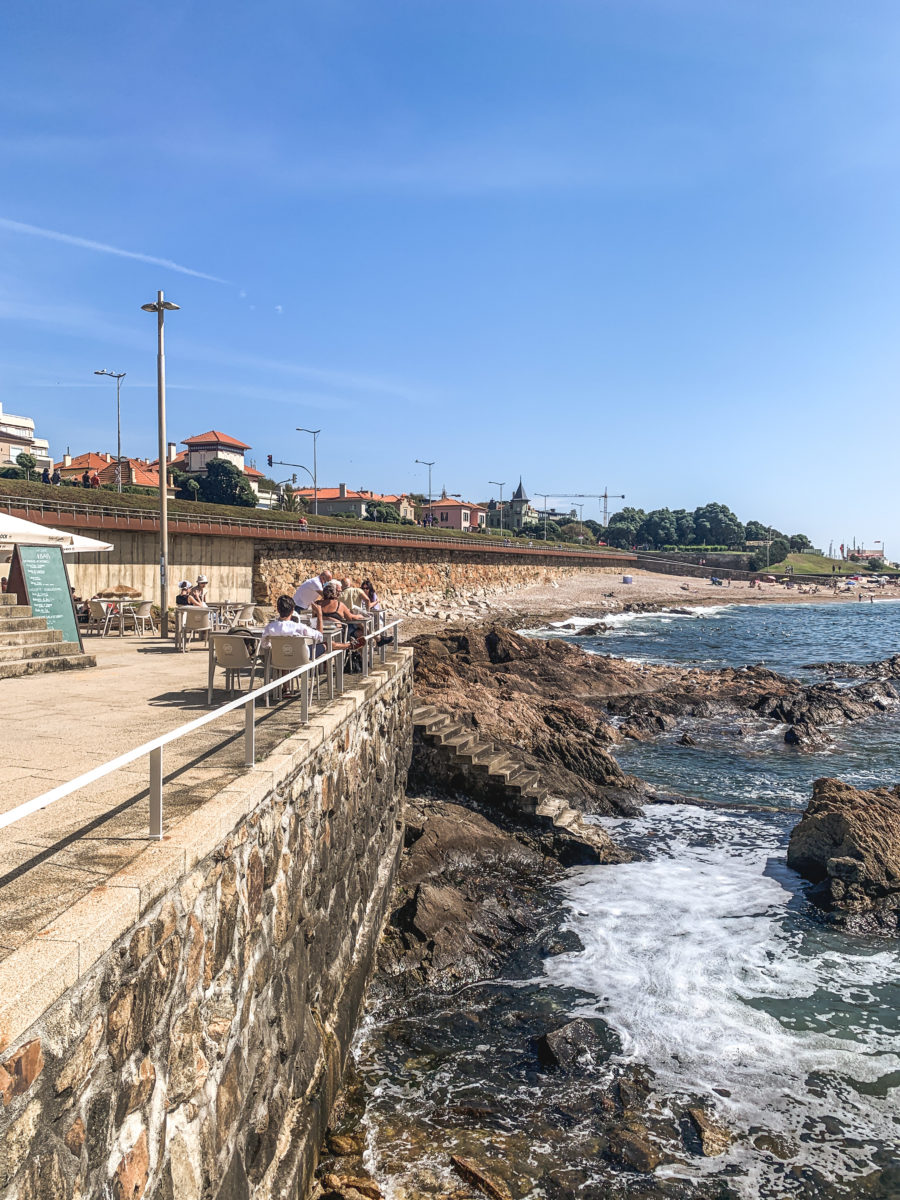
Also, don’t hesitate to discover the Castelo do Queijo (of cheese), which is a fort located just before the beach of Matosinhos. Its name comes from its appearance, which has been altered to resemble a wheel of cheese. It dates from the 17th century and is listed as a monument.
Finally, you will arrive at the beach of Matosinhos. It is a long, wide strip of sand, which was teeming with locals and tourists who also came to surf. Not wanting to take a lesson, we simply headed for the first shack that rented boards by the hour. Of course, they also give lessons, as do many other institutions in Matosinhos. You’ll be spoilt for choice!
For 20 euros, we rented a board and a wetsuit, to wade for more than 2 hours in the Atlantic Ocean. Wading is the right word to describe my first surfing experience, but it was a good place to learn the sport and to swallow a mouthful of water!
Indeed, the entrance to the water is simple with a long sandy bank that descends gently into the depths – enough to get us away from the swimmers to go catch some waves.

Exhausted by this water adventure, we return to the city centre by taking a bus next to the Cheese Castle.
Enjoying the omnipresence of art (especially street art) in Porto
Art is represented in many ways, and in Porto its most comprehensive form is street art. Porto is a university city, but also a historical area. The mix of young life and old architecture is a source of artistic inspiration.
In all our kilometres travelled (I remind you about 100!), we were lucky enough to come across some well known works, but also some nice less recognized works that populate the walls of the city. So, I don’t really have any specific places to refer you to, but keep your eyes open, as every corner of Porto is full of details. Also, head to Vila Nova de Gaia (where the wine cellars are) or click here for some addresses where you can admire some of Porto’s art.
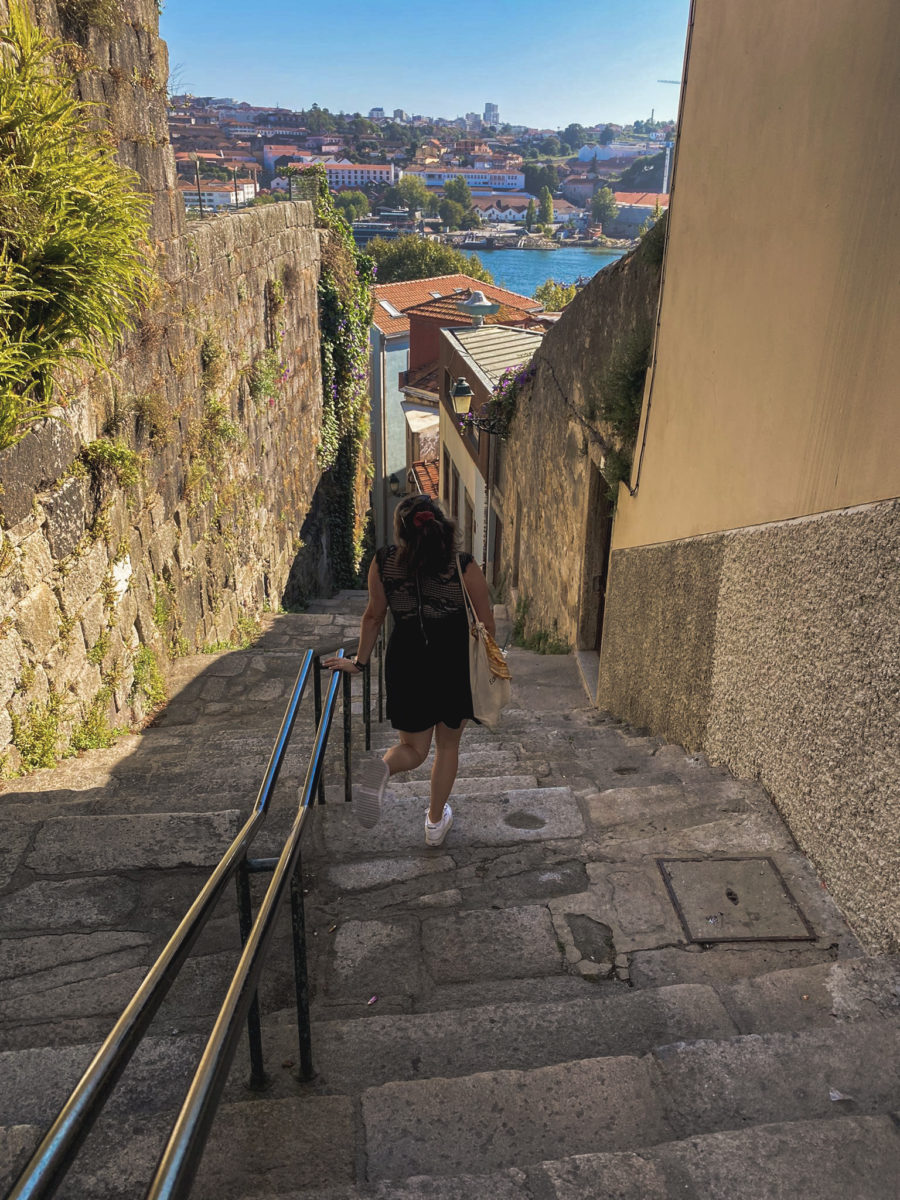

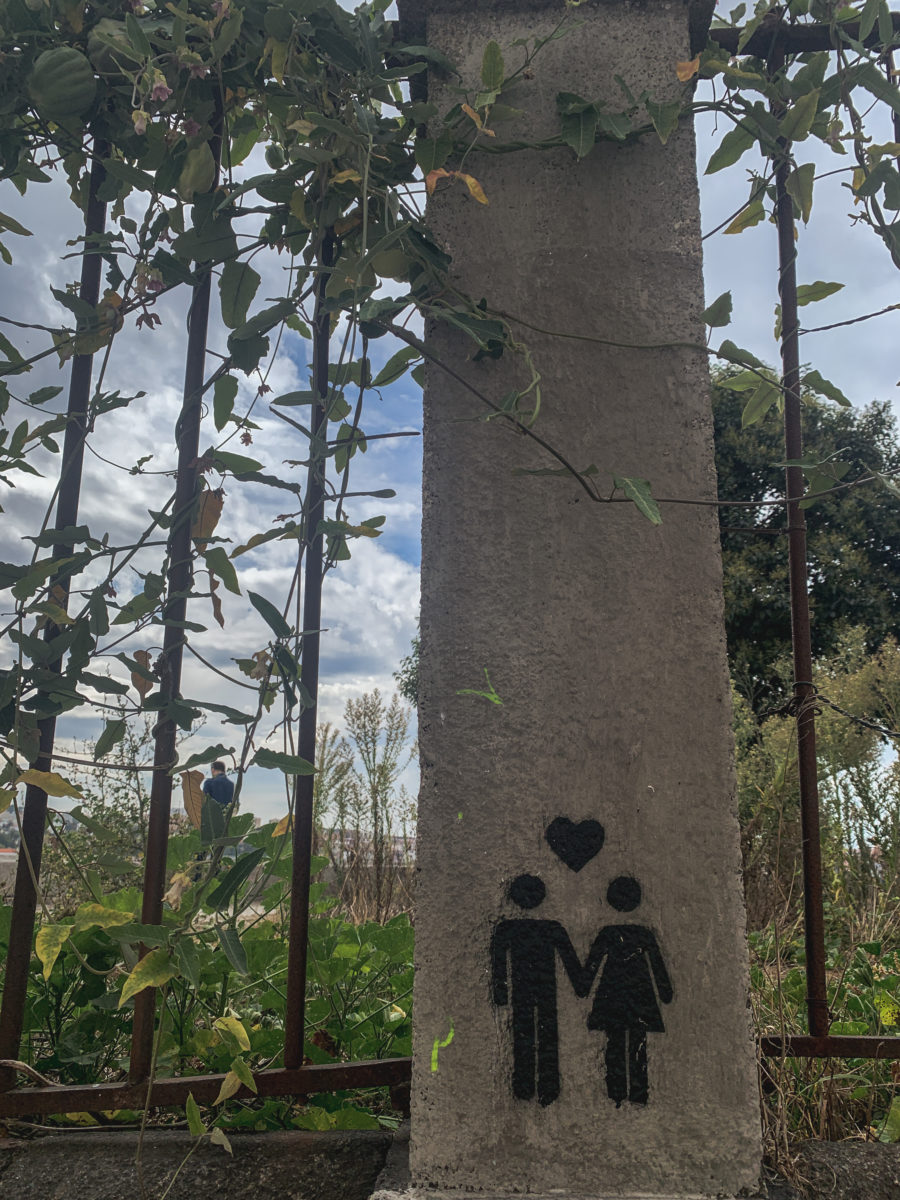
As I said, art is expressed in many forms. If, like me, you like architecture and buildings that are a bit out of the ordinary, or if contemporary art doesn’t scare you, head for the Fundacao de Serralves contemporary art museum.
A little away from the city centre, there is an 18-hectare park with contemporary works and an art nouveau house that you can visit. We went there to discover the Treetop Walk, which promised an adventure in the heights.
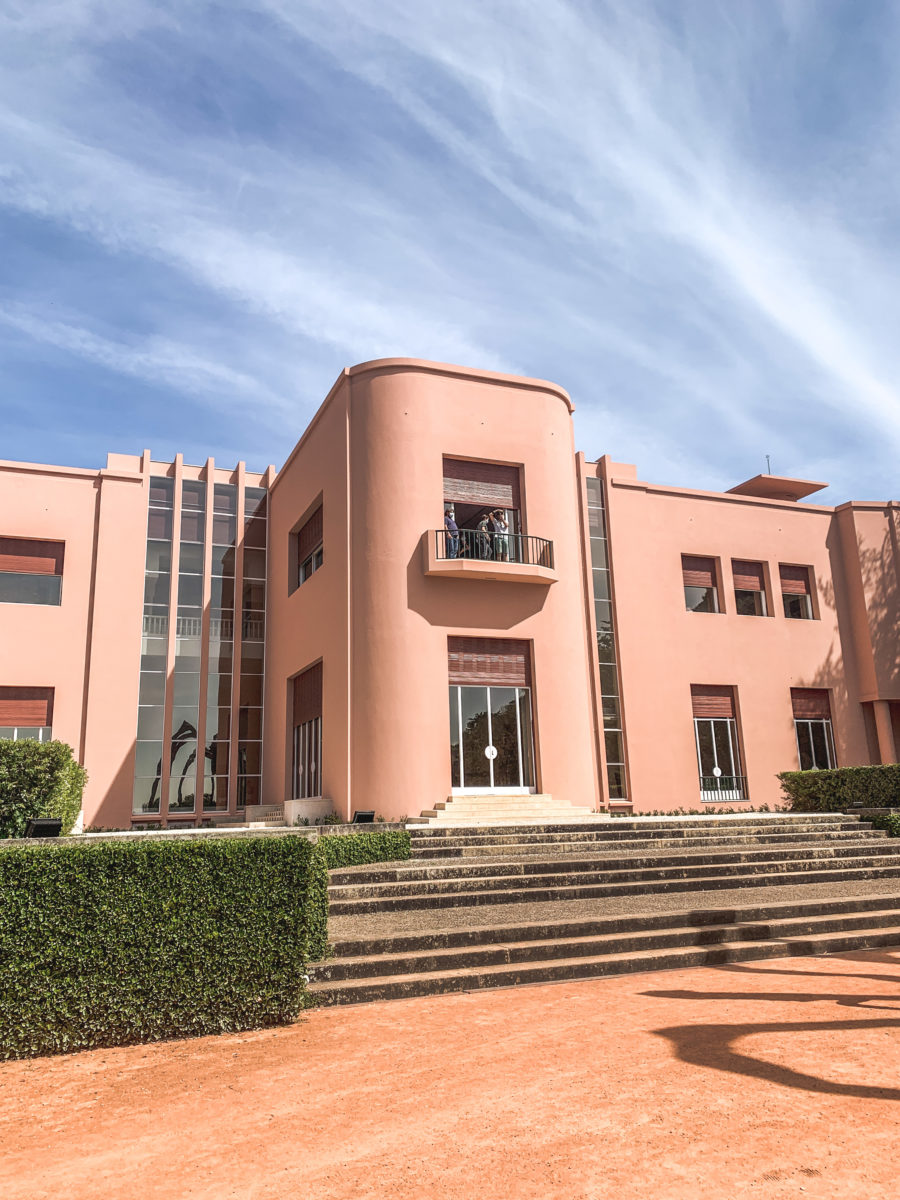
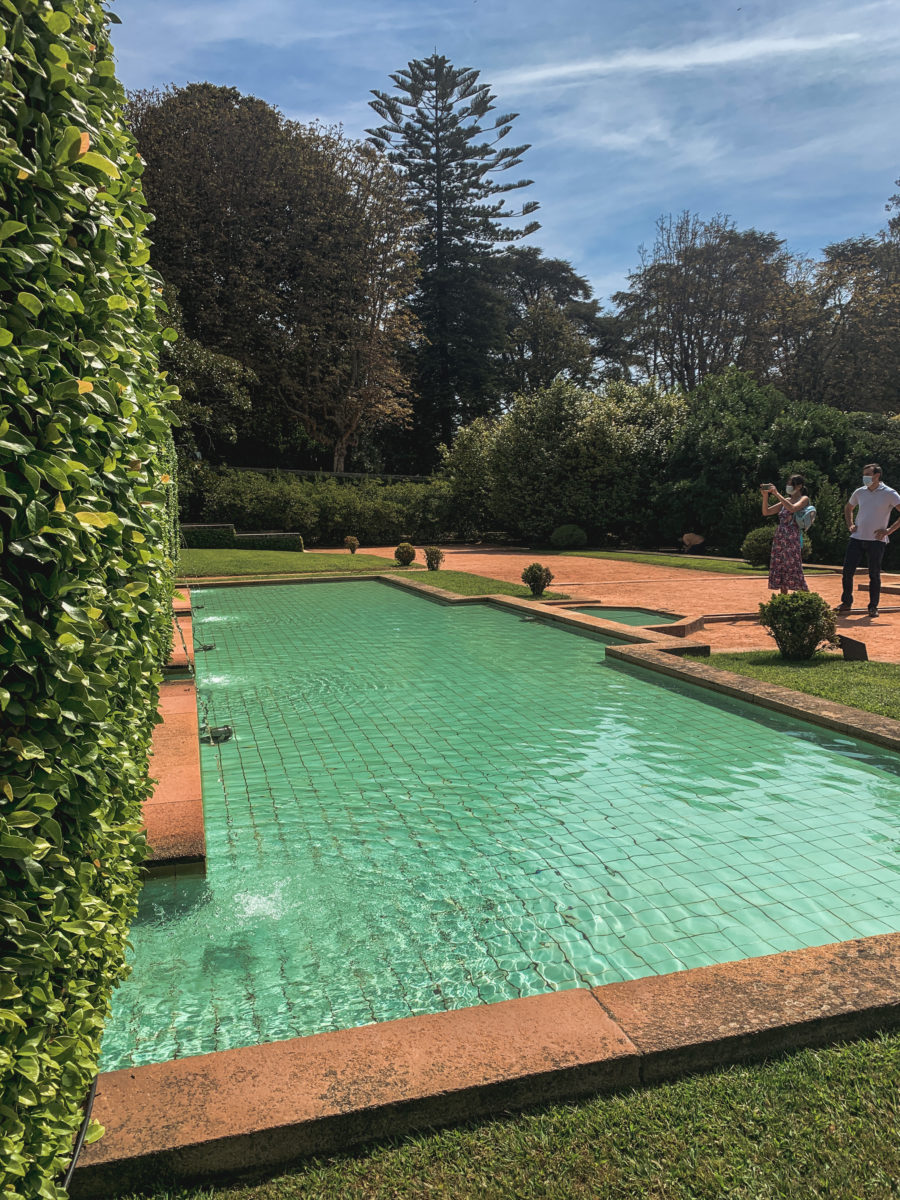
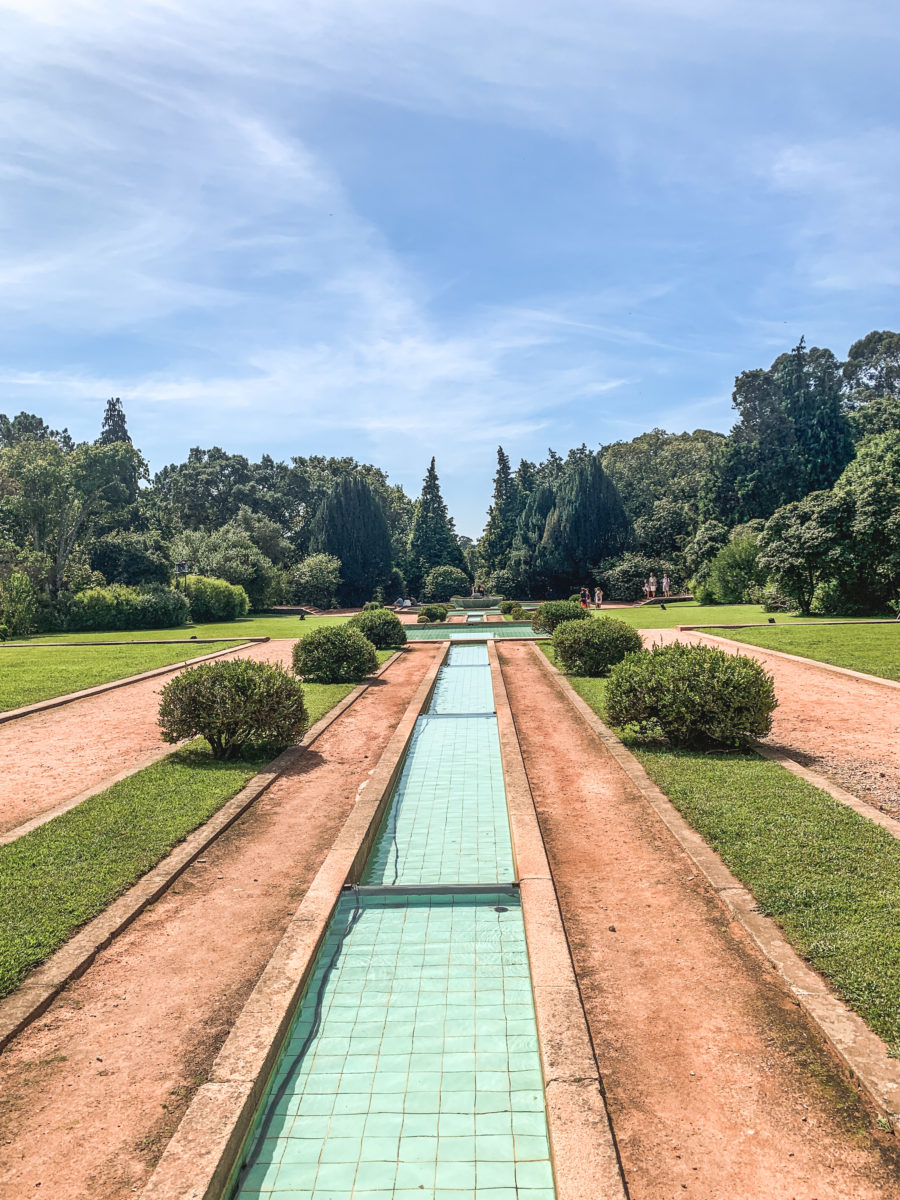
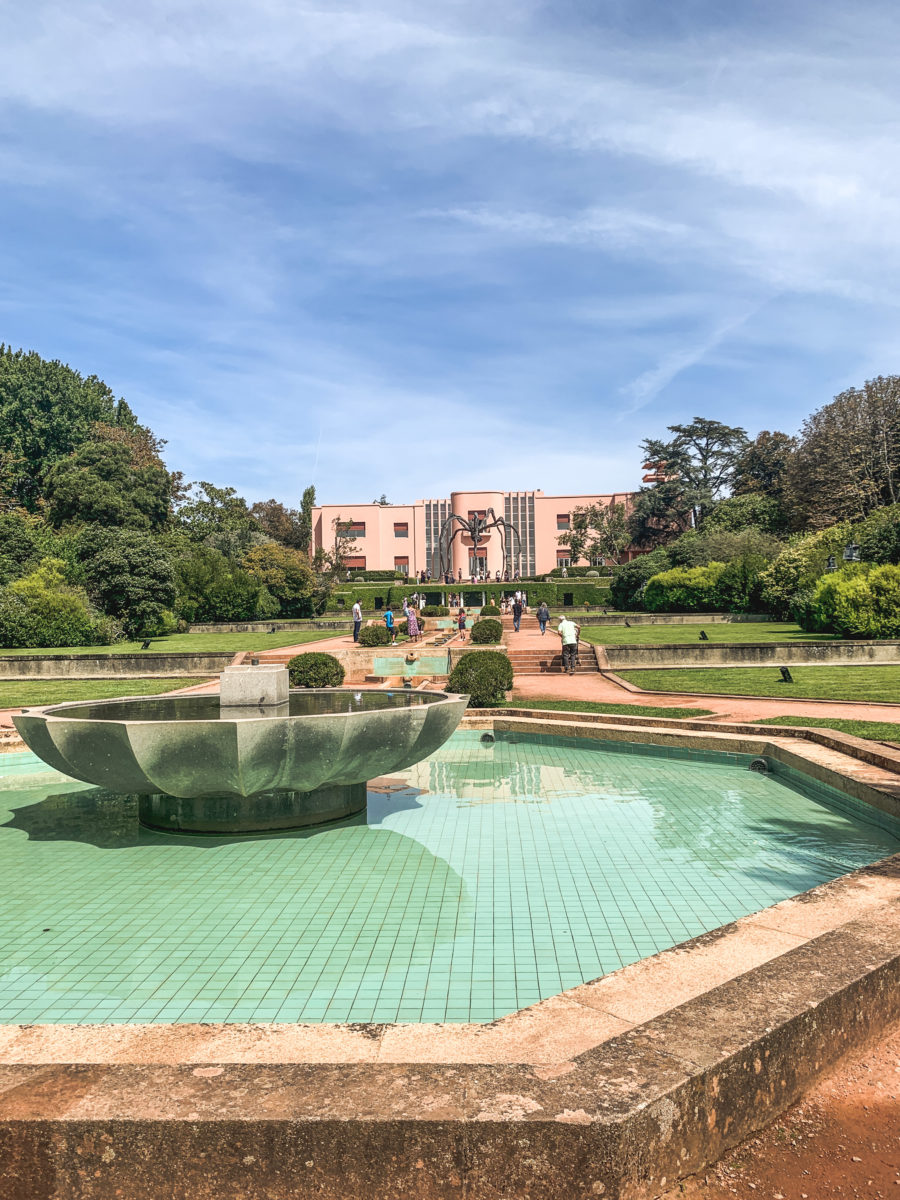
Identified as strategically relevant, the walkway was created next to the tree canopy, high up, and offers breathtaking opportunities to observe and study the biodiversity of Serralves Park. That’s how they sell it, however, in the end it’s just a wooden path through the trees of a few hundred meters. Really not that great, as I was kind of expecting to get some written information about biodiversity (especially for having paid 12 euros…)!
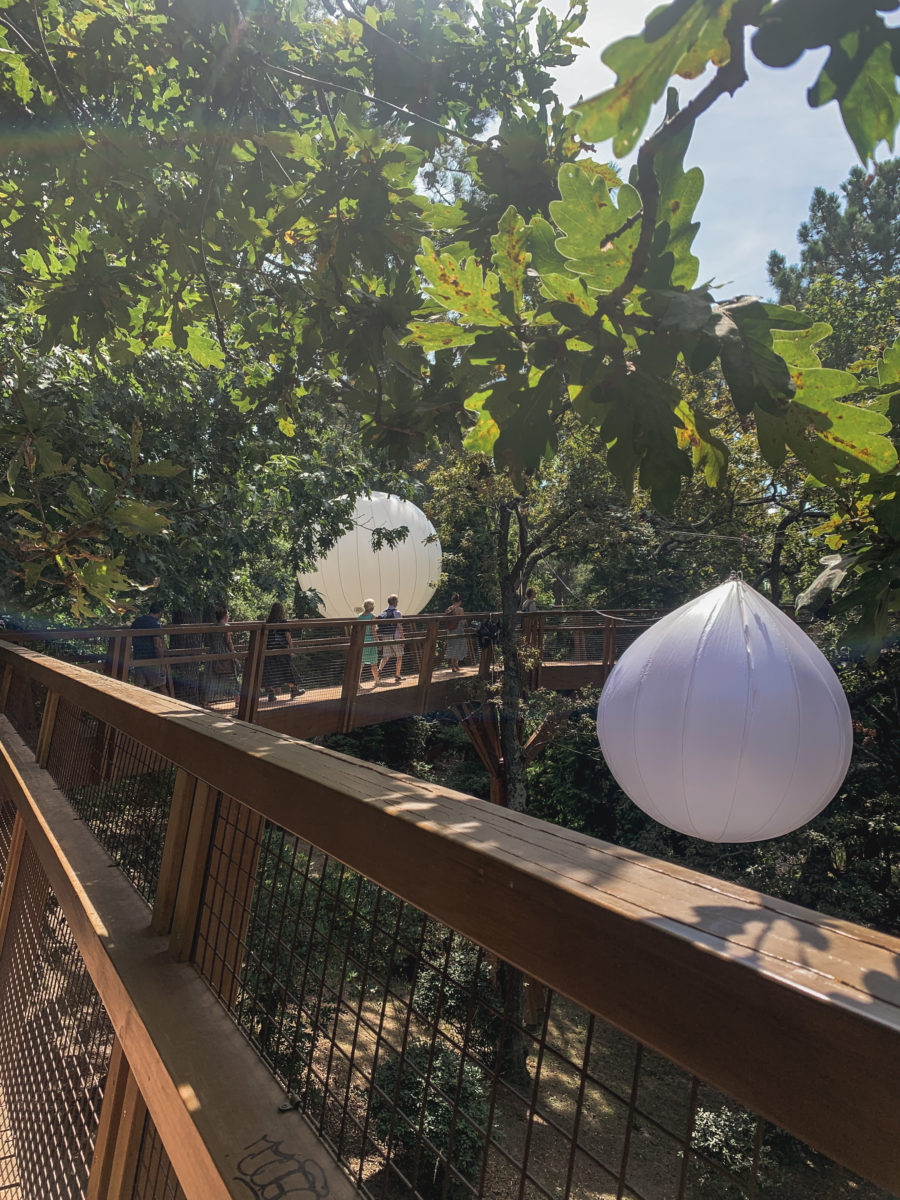

It was a nice visit, especially to admire this unusual pastel-coloured house and to soak up the peace and quiet of the park for a while. The park is made up of a wide variety of beautiful, harmoniously connected spaces: formal gardens, woods and a traditional farmhouse. Designed by the architect Jacques Greber in the 1930s, it is a singular reference point in Portugal’s landscape heritage. Special mention should be made of the adorable Casa de Cha and its ultra-hospitable and cosy environment, like an English tea house.
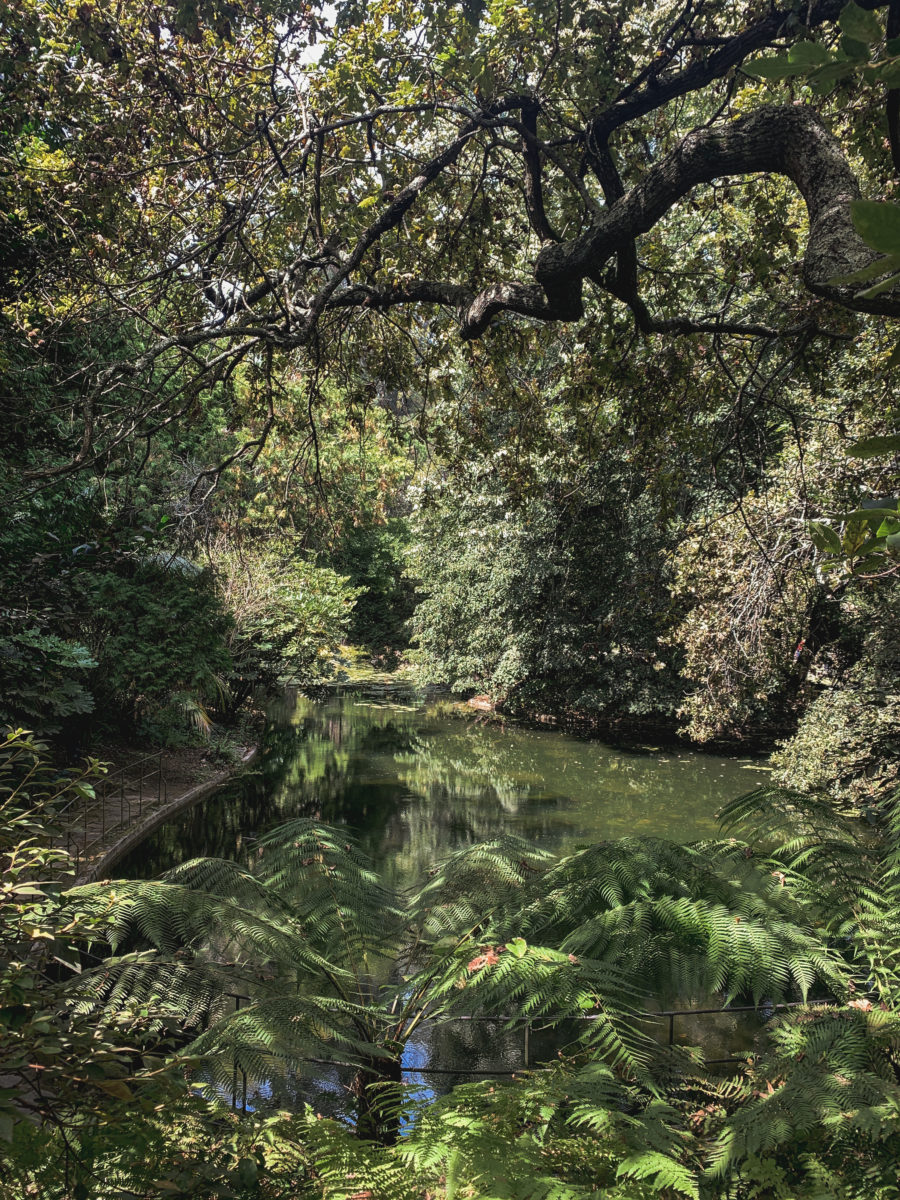
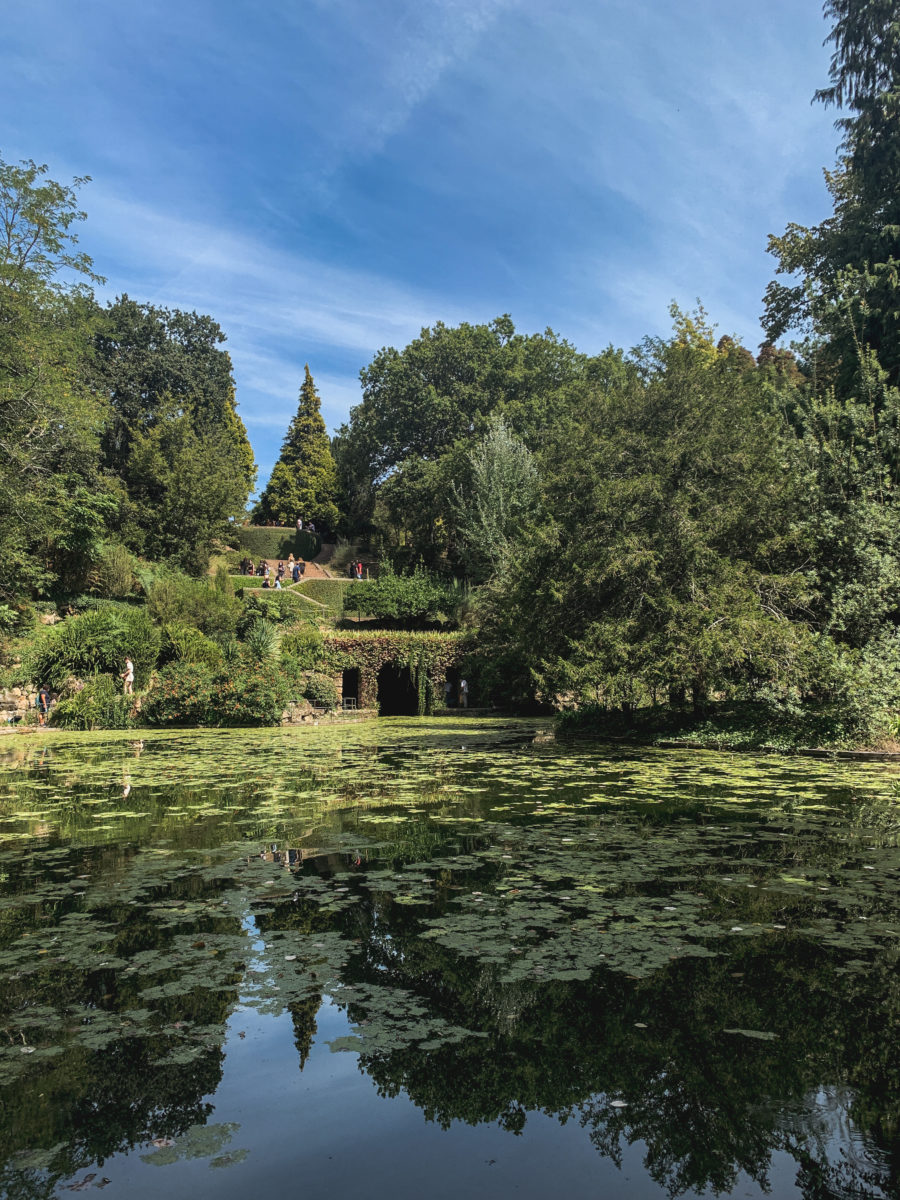
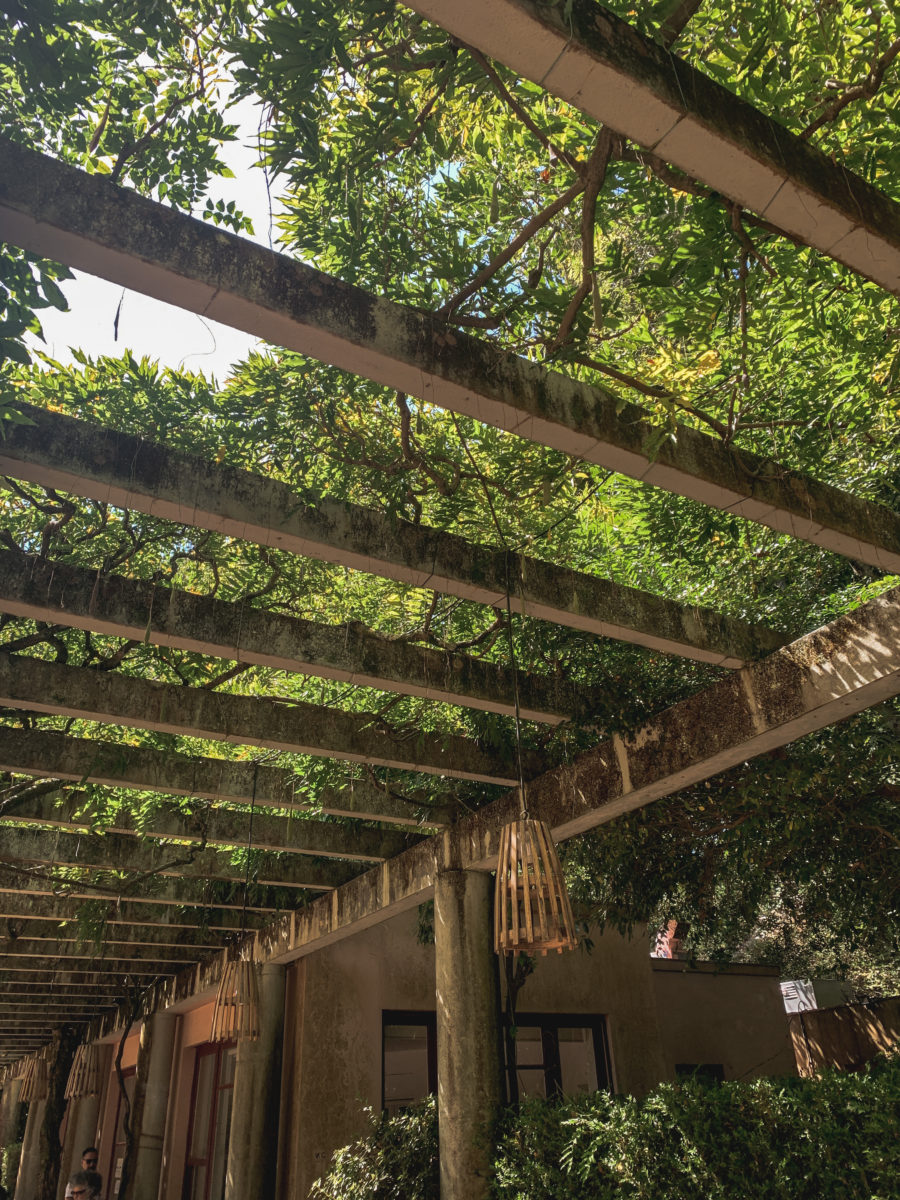
Find the most beautiful views of the Douro and the Dom Luis Bridge
Falling in love with Porto is not difficult, given the magnificent monuments and the atmosphere that emanates from the Portuguese city. It’s also hard to resist with the many views over the Douro and the Dom Luis Bridge, symbol of Porto.
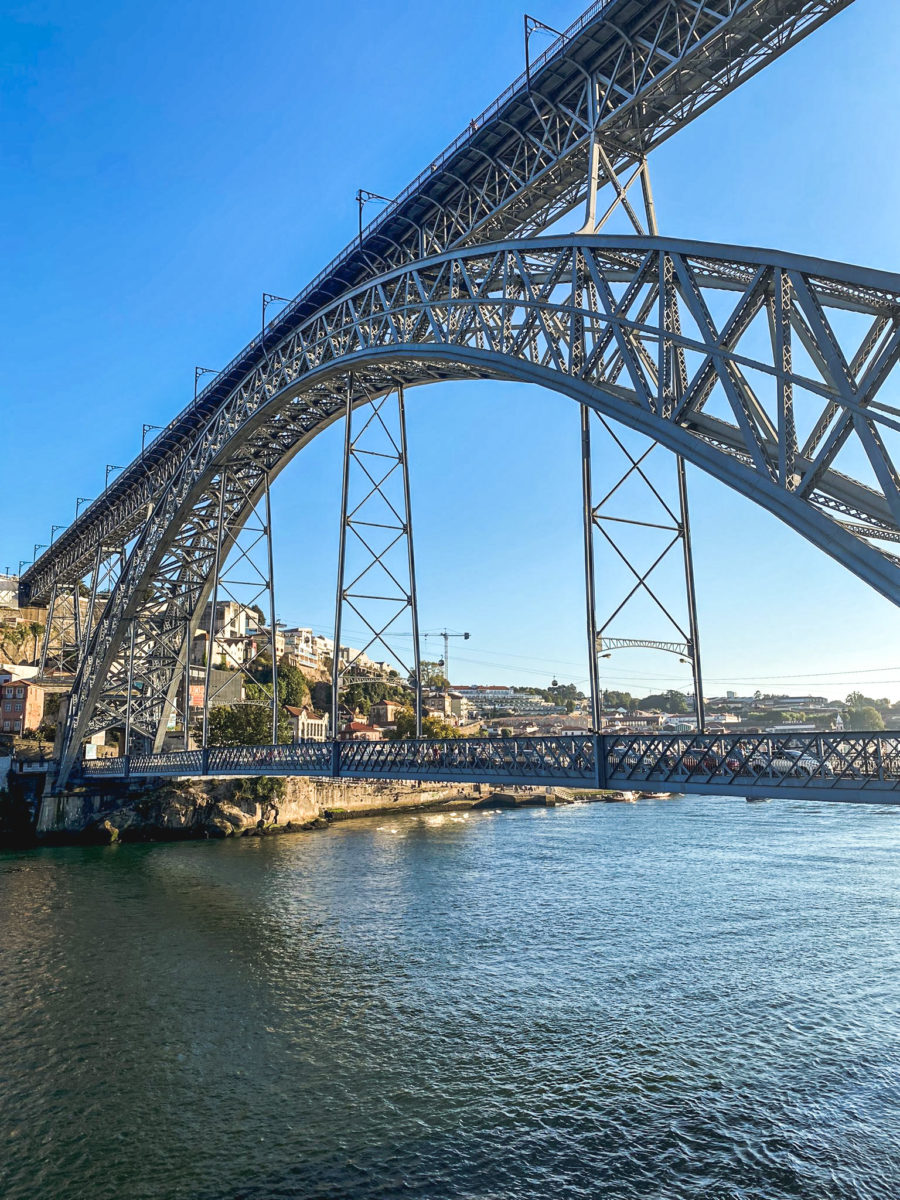
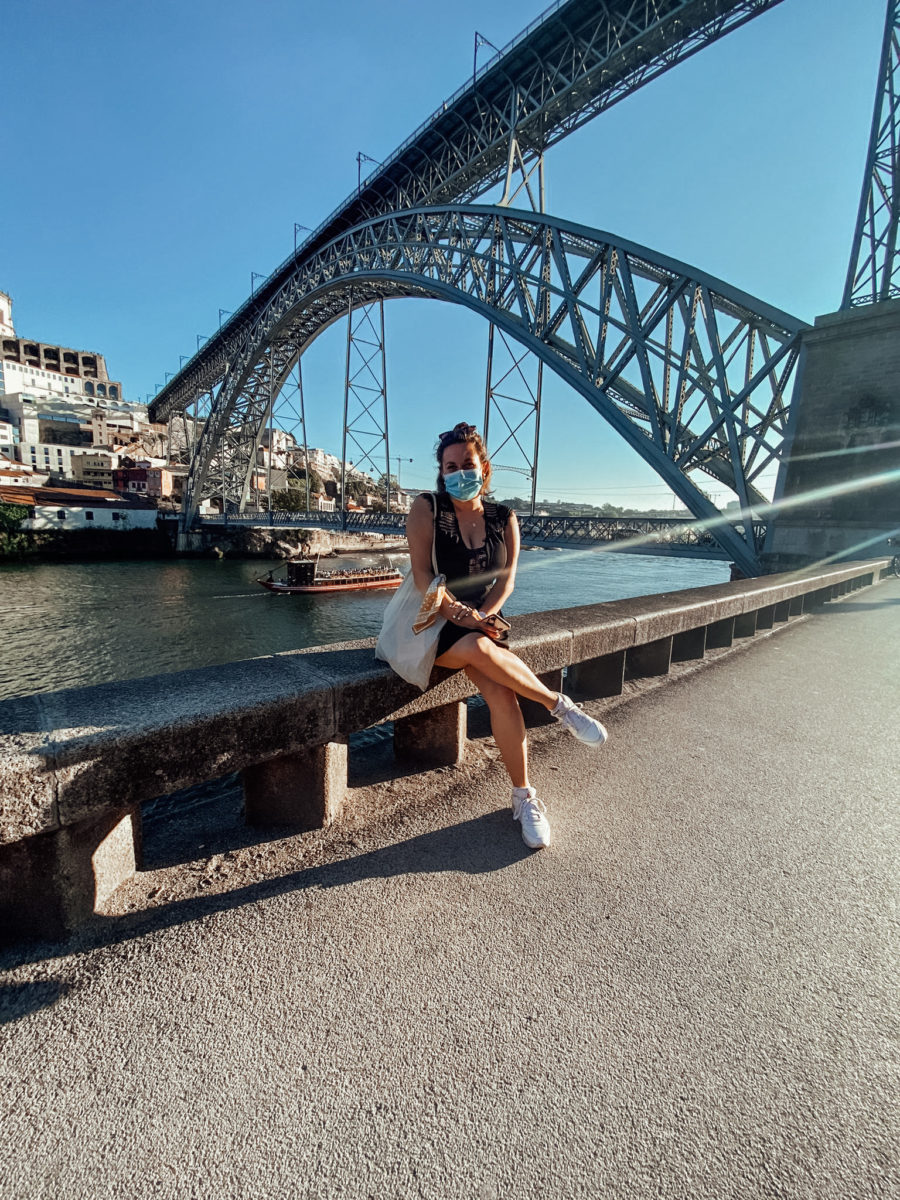
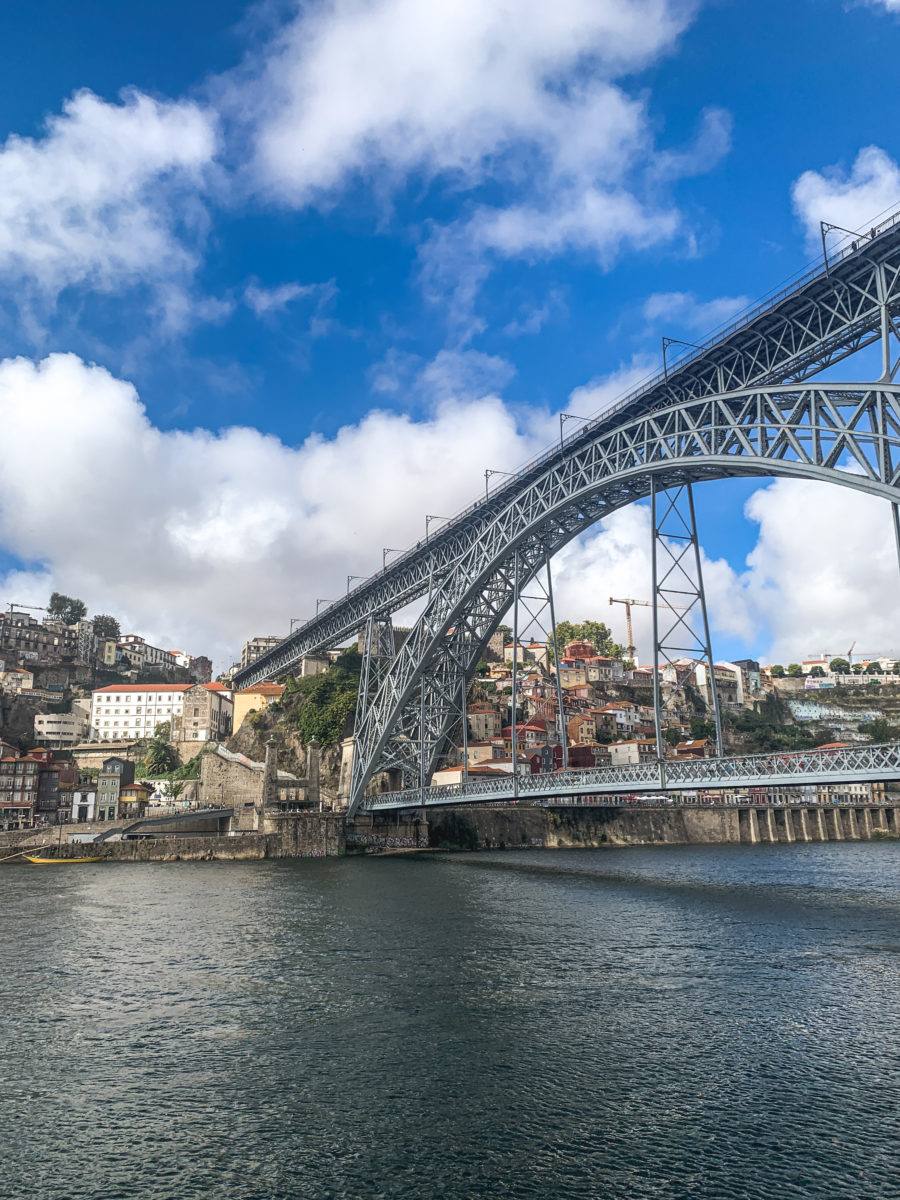
This part of the article could also be called the Instagrammable corners of Porto, as these are photos that “pollute” the feed of any visitor looking for panoramas of Porto. However, you won’t see me striking a pose, but rather showing you these beautiful places.
Like its Lisbon counterpart, the city of Porto is built on several hills, which gives it magnificent views of the river and the other districts. Get lost in the countless alleys, with all their stairs leading to these views of the city, called “Miradouros” in Portugal.
In my opinion, the most beautiful viewpoint is on the Gaia side, with the miradouro da Serra do Pilar. This is the esplanade of the old monastery. Nearby is the Jardim do Morro, which offers an even more direct view of Ribeira and the Luis I Bridge. You can also take the Gaia cable car just below the garden, which offers a nice moving view.

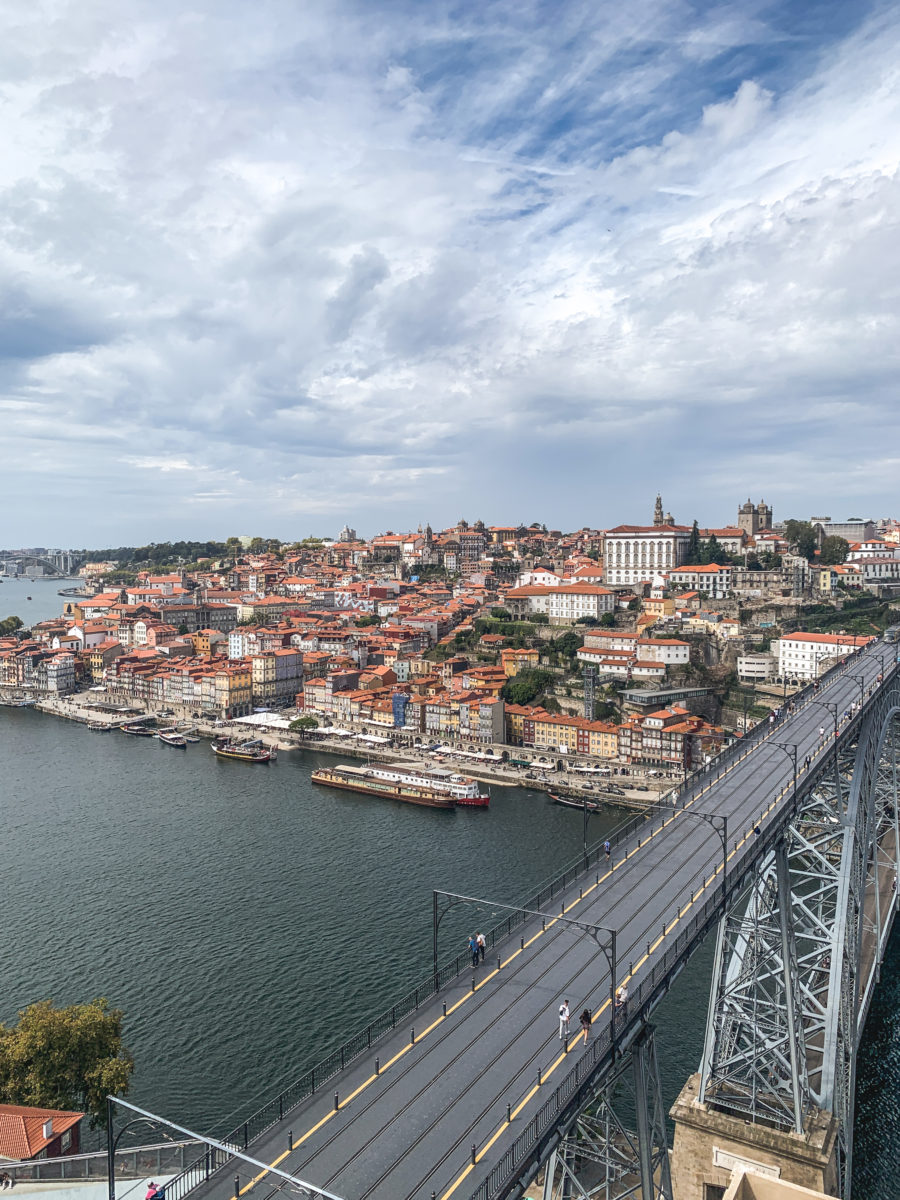
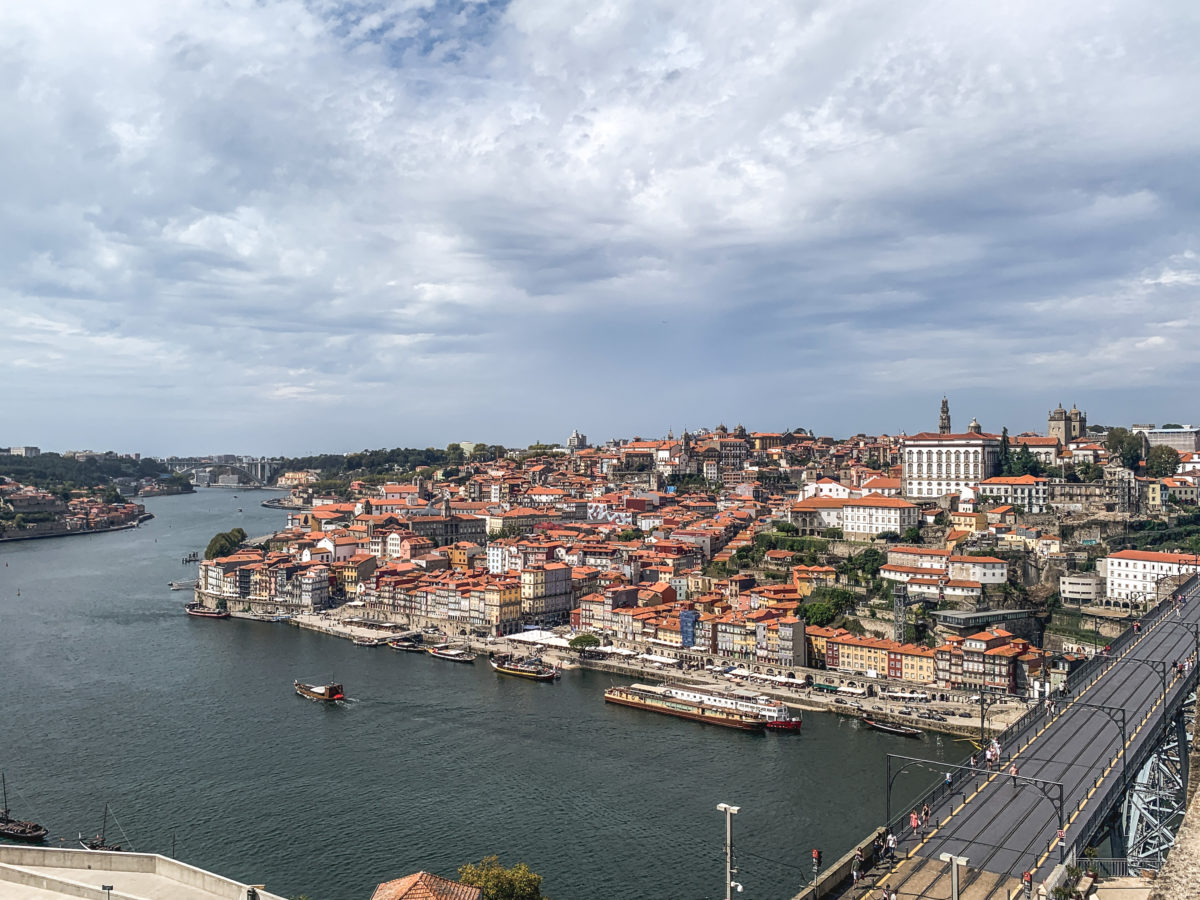

In the heart of the historic centre, you will find many miradouros. However, the most famous is the Vitoria miradouro, which is located a few metres from the Torre dos Clérigos. This tower, which is mentioned in the first point of this article, is in itself one of the best viewpoints for understanding the geography of the city.
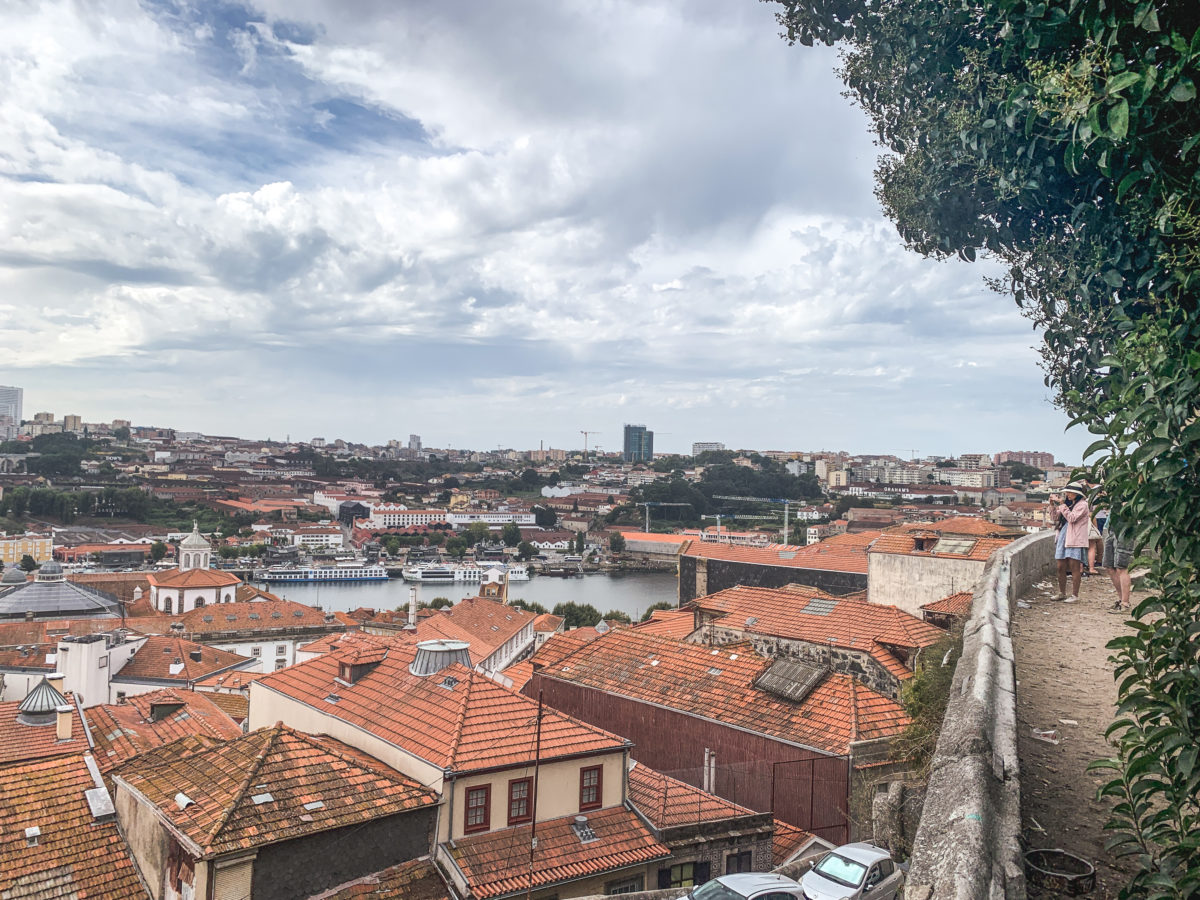
The Sé Catedral district, which adjoins the old town and Ribeira, is the perfect place to watch the sunset and the sparkling lights of the sun as it ends its day on the ochre roofs of the city. Definitely a lively and caliente atmosphere. On the way back down to the city centre, you will find other miradouros, including the Rua das Aldas.
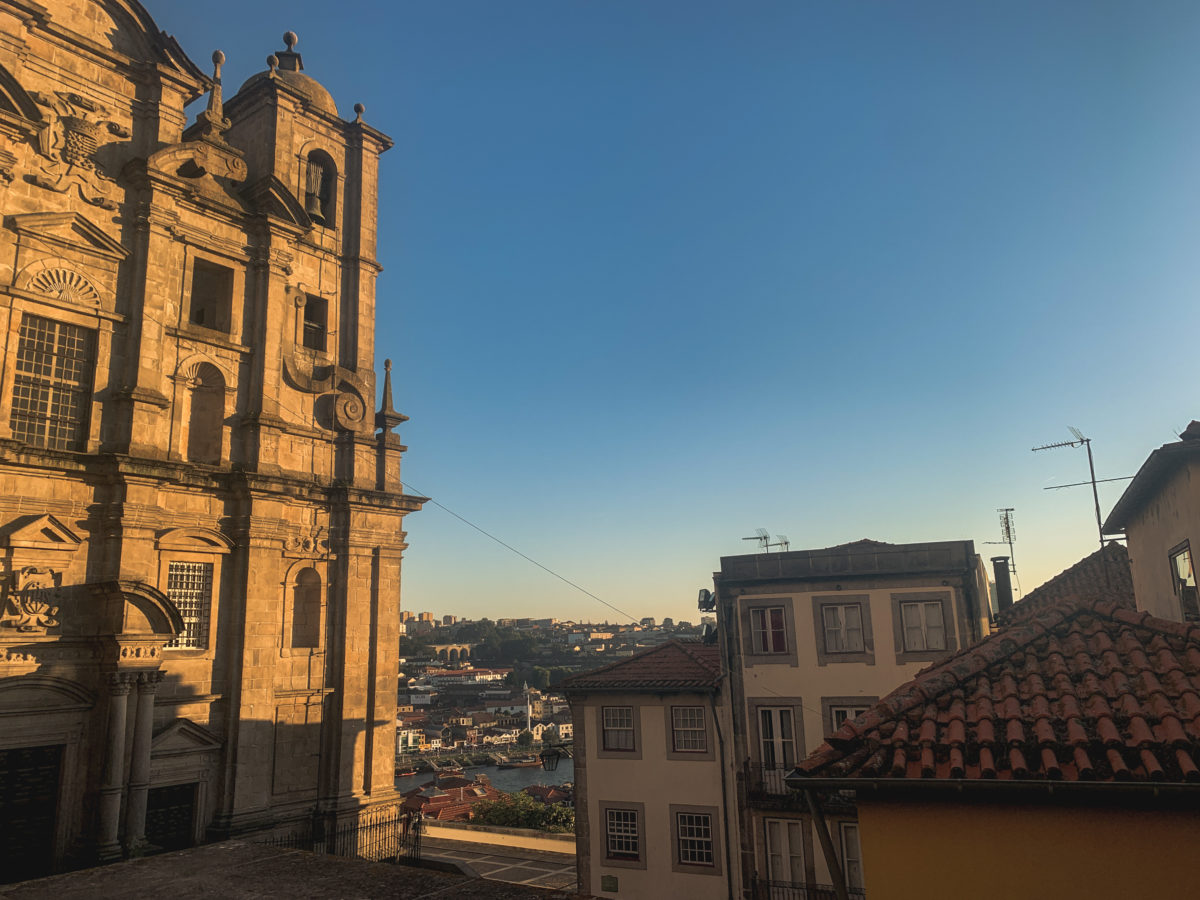
More out of the way, the district of las Fontheinas offers a magnificent view of the Pont Luis. This authentic neighbourhood is one of the symbols of the Porto of the past, but also a symbol of the present reality of a popular and rustic neighbourhood. It is a reminder of industrial Porto with local populations that are more modest and even close to poverty. An aspect of Porto that reminds us of the old adage that introduces this article, which also shows the face of a city that struggles and survives as best it can.

Its name, las fontainhas, comes from the many fountains that line the esplanade, offering a beautiful view of the bridge. These are fountains that supply the inhabitants with water and if you walk down an alleyway you can venture into the washhouses overlooking the Douro, some of which are still used by the inhabitants of this district.
Finally, on the way back to the city centre, you can take the funicular railway down to the bridge, which will once again give you a different view of this fascinating and symbolic bridge. One way costs 3 euros.
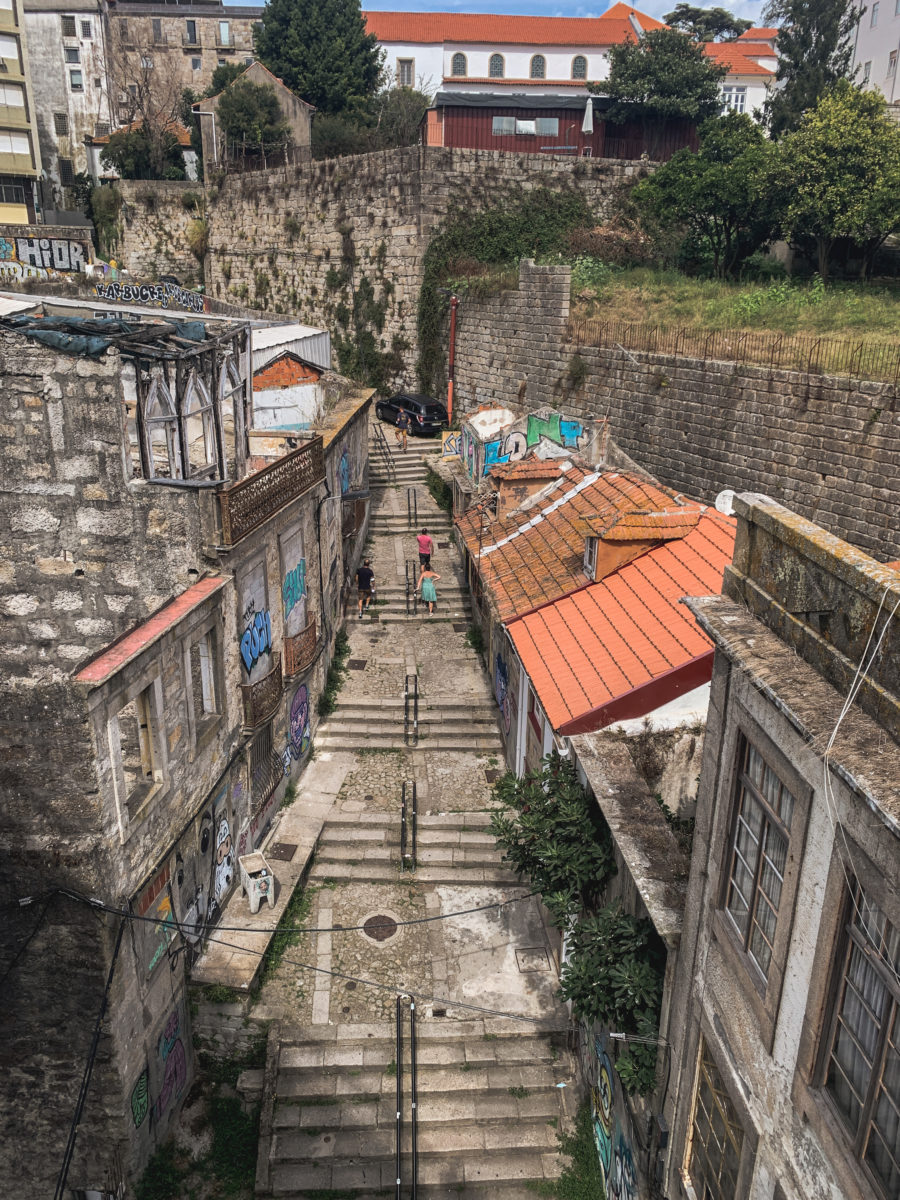
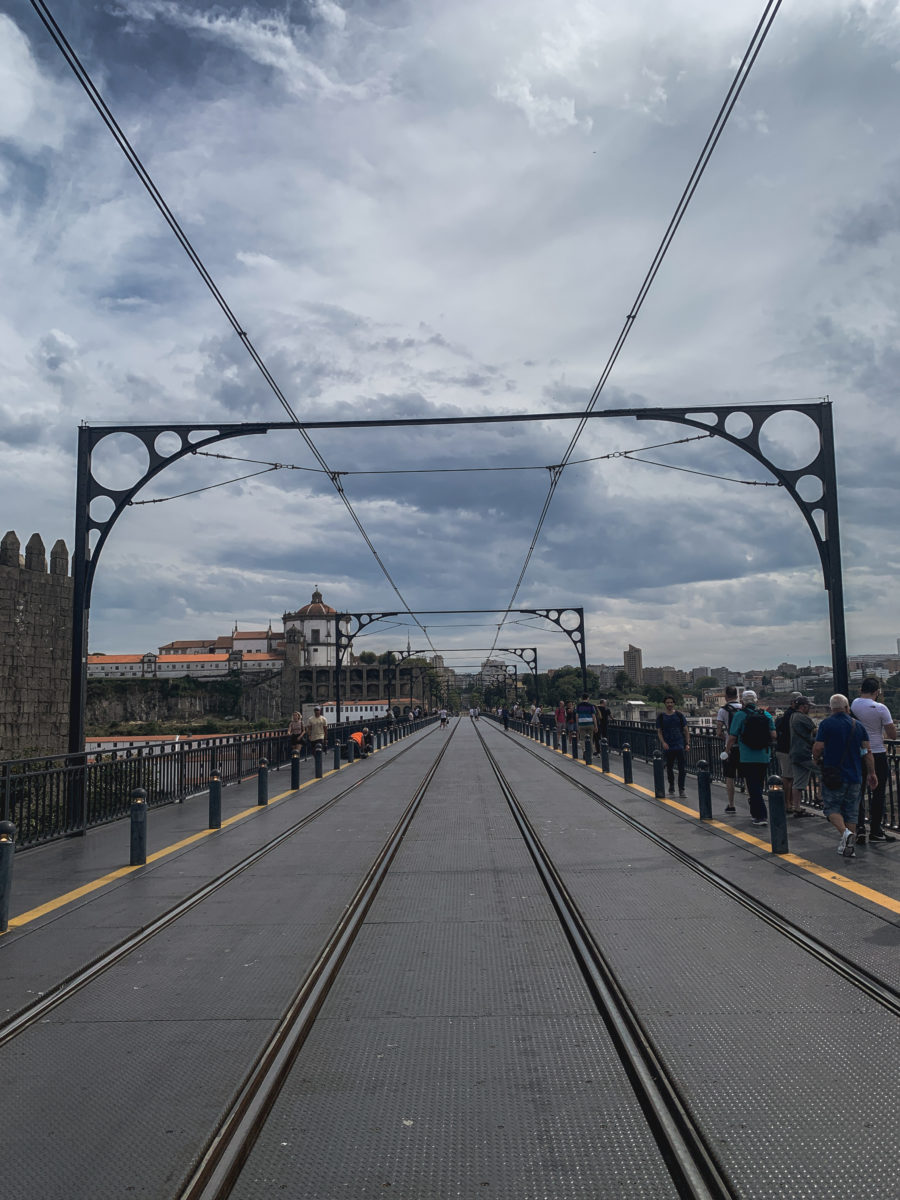
Feel the soul of Harry Potter, despite the crowds of tourists, in the Lello bookshop
Or should I say, try to feel the soul of the famous wizard, so much has this place become a tourist attraction.
At first sight, walking around Porto, you can only assume that there is a long line of people waiting in front of an almost ordinary building. Having had this bookshop on my list of libraries/bookshops to discover for a few years (who else makes such a list but me?), I didn’t think it had become so touristy. It was just an underestimation of the power of Harry Potter.
Why Harry Potter? It is said to be the place with the gothic charm where J.K. Rowling, the author who brought the famous English wizard to life, was inspired to write parts of her world-famous saga. The Lello bookshop is said to be a mirror image of the bookshop in the Flourish and Blotts Bookseller on Diagon Alley. Hence, an incredible number of Potterheads who travel to Porto to discover this place.
Personally, I discovered more about Harry Potter during my exchange in Edinburgh, and I can see how the Scottish city could be associated with the literary saga.
I wanted to admire this bookshop for its architecture and its very recognizable and beautiful red staircase. So, I took part in the business created around the Lello bookshop by taking a ticket and queuing (even if you have a ticket).
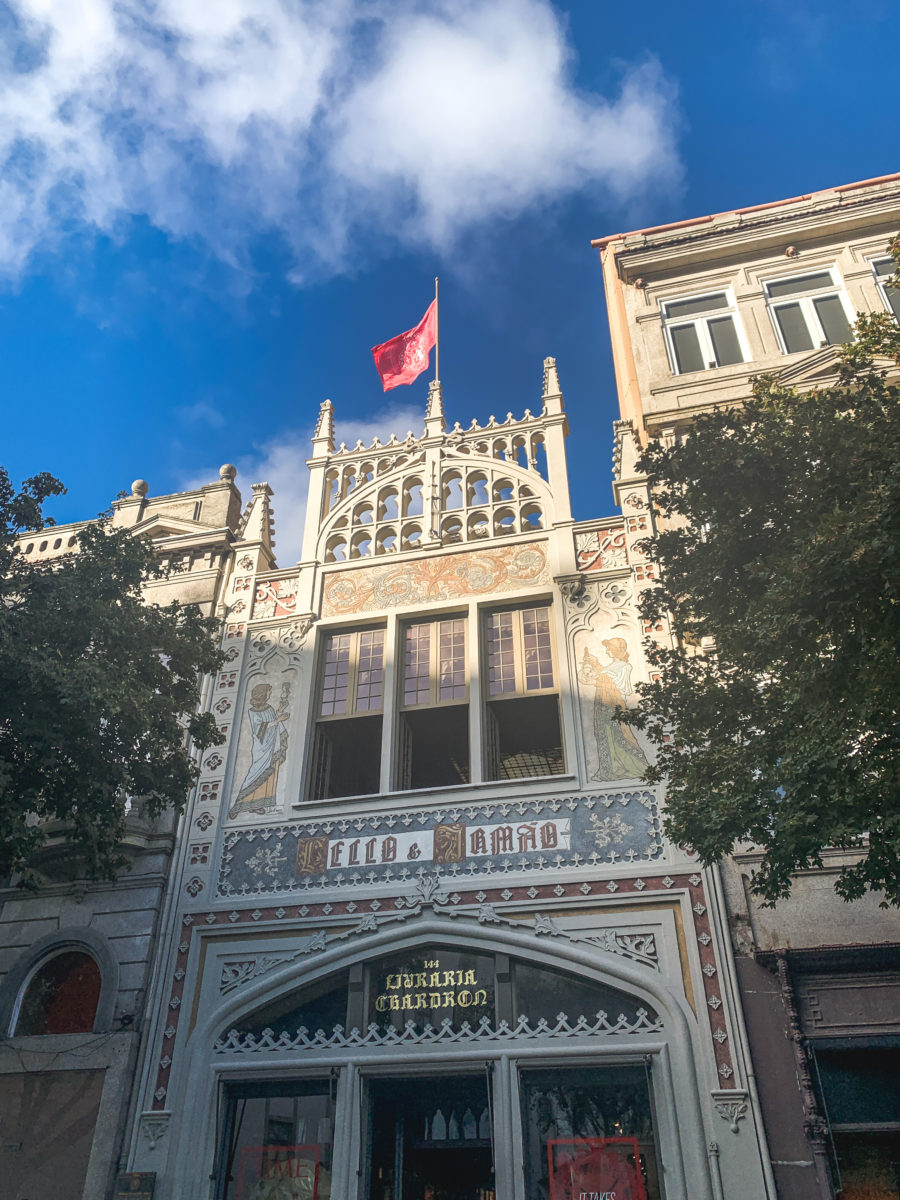
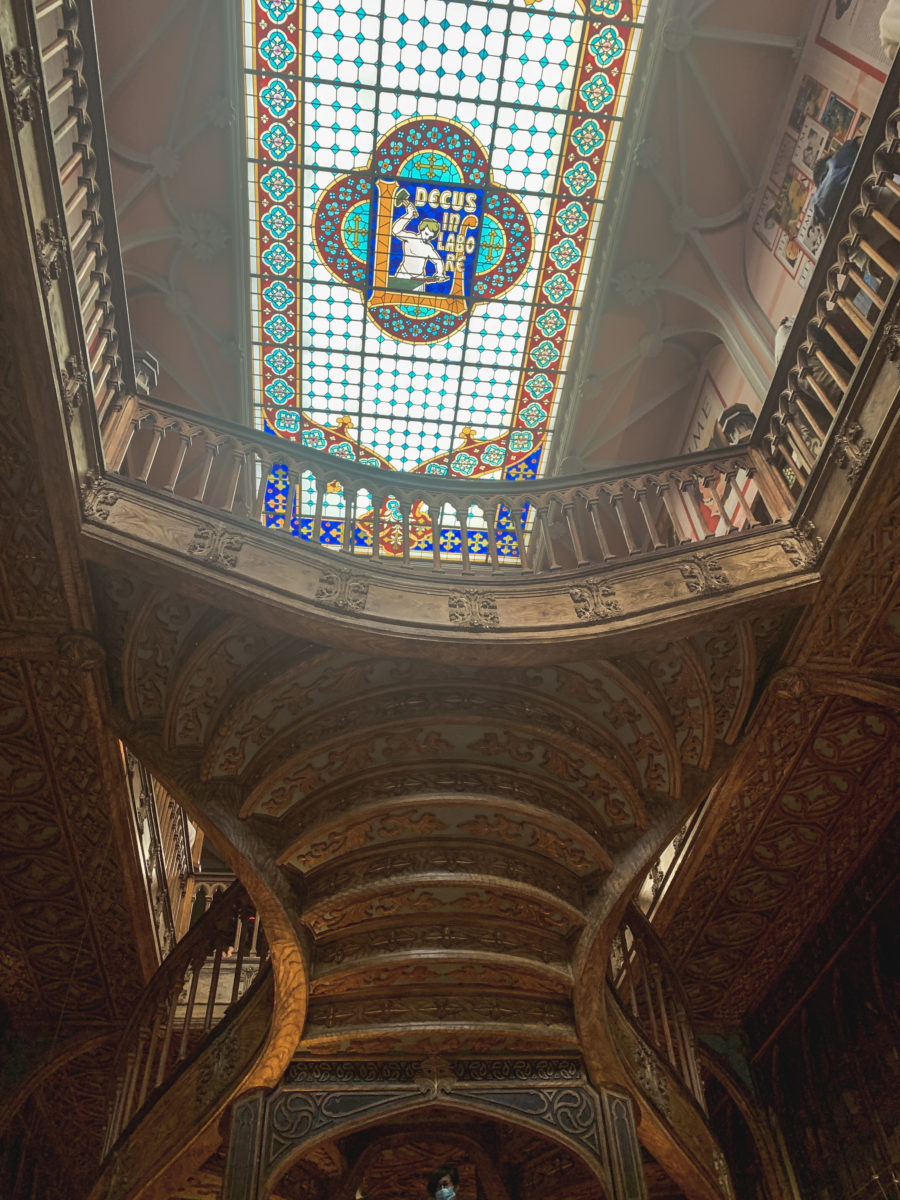

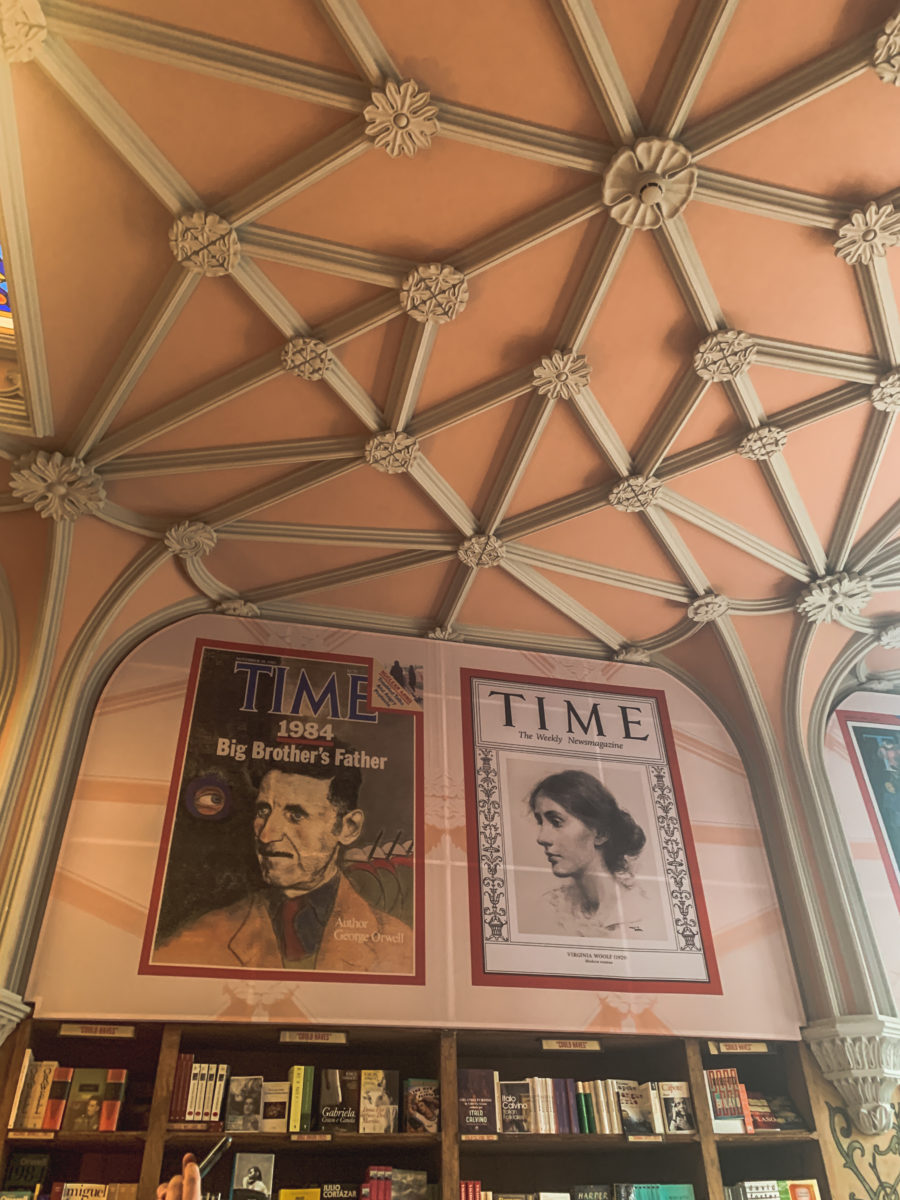
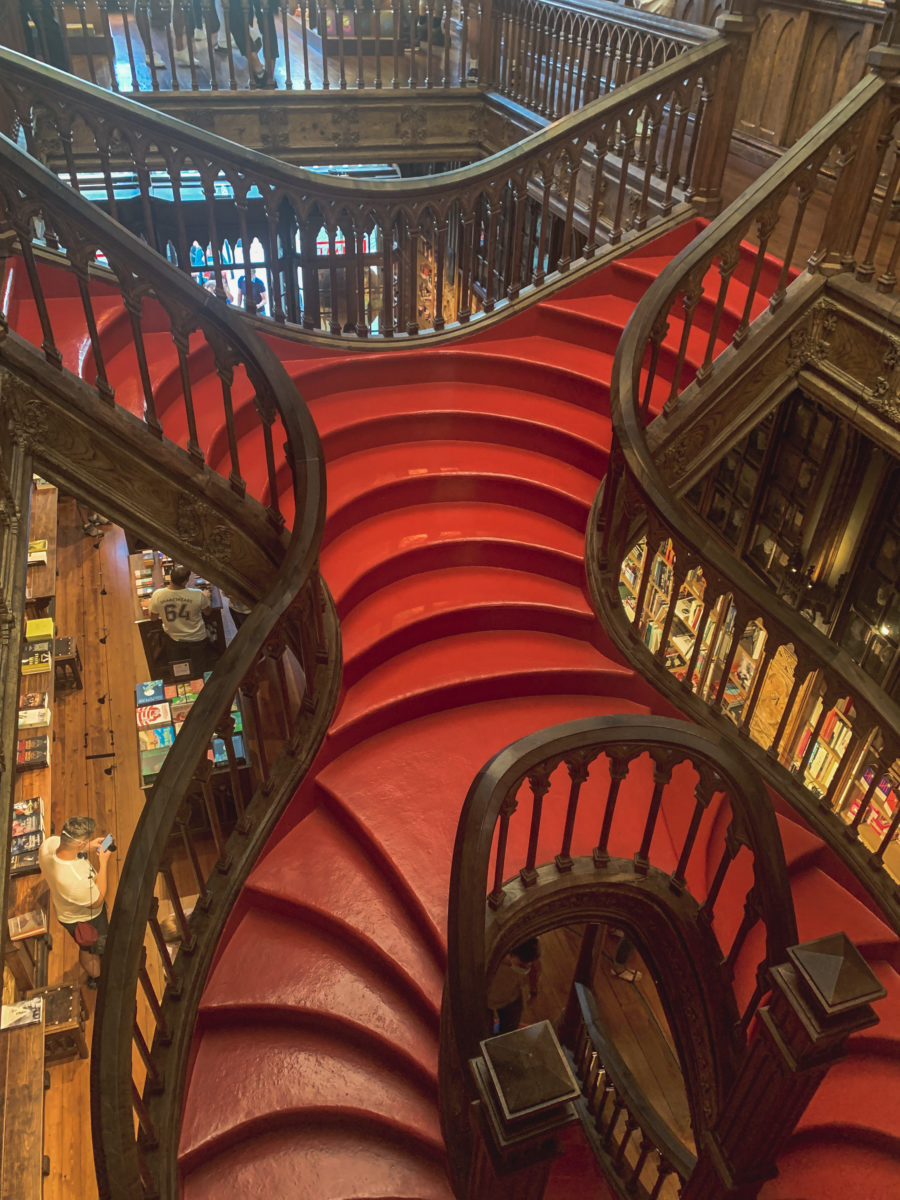

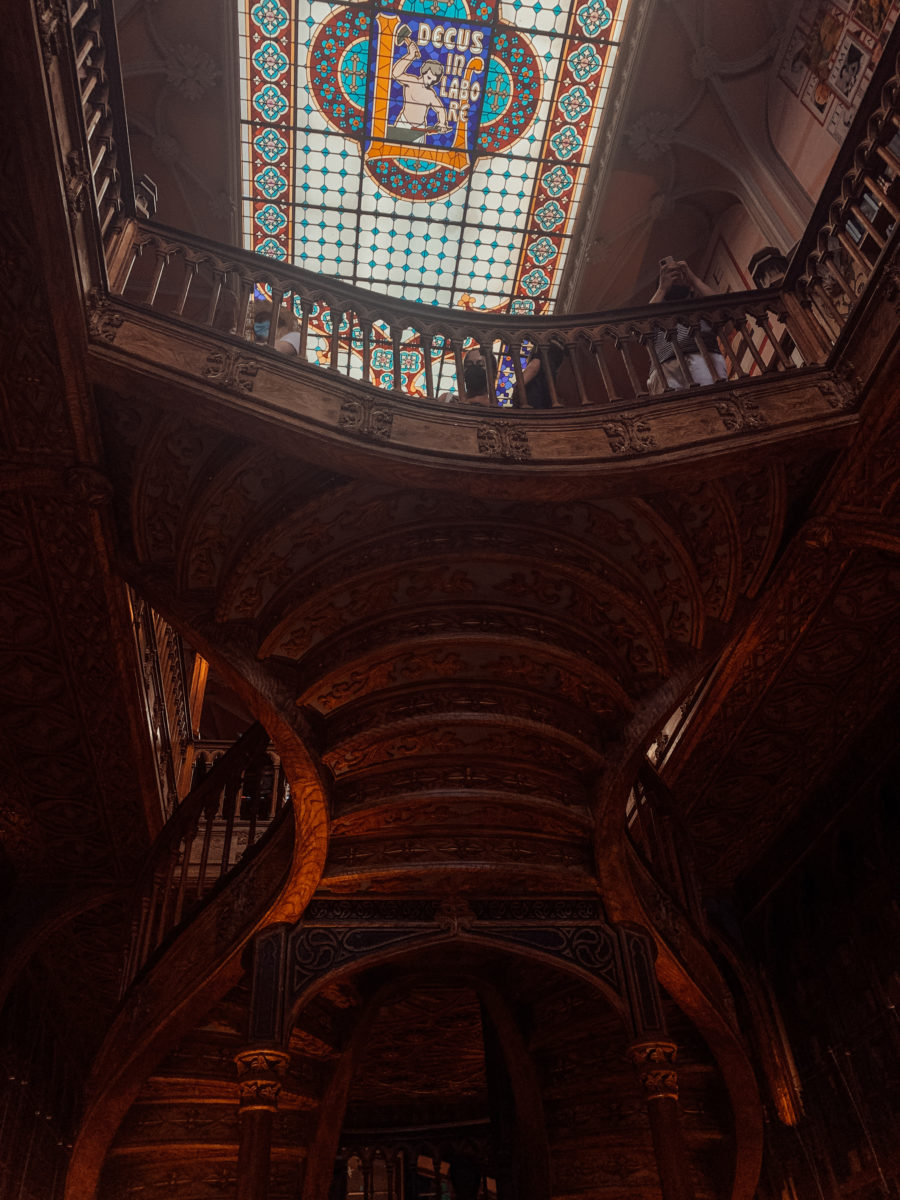

So, the interior is beautiful! But this touristification makes you lose all its charm because once inside, it is not even possible to try to discover the numerous books on the shelves, so much it is necessary to play elbows with those who seek to make the most beautiful photograph in the famous staircase.
The only good thing is that for Harry Potter aficionados, many books on the literary saga are available. In fact, my friend bought a book on Quidditch. The bookshop also has several classics in their original languages.
Porto would be crazy not to highlight its river! Because of the Portuguese history, the maritime aspect is a key element with the Douro and the Atlantic Ocean. I told you earlier in this article to go surfing, but a more relaxing and less wet activity is to take part in a cruise on the Douro.
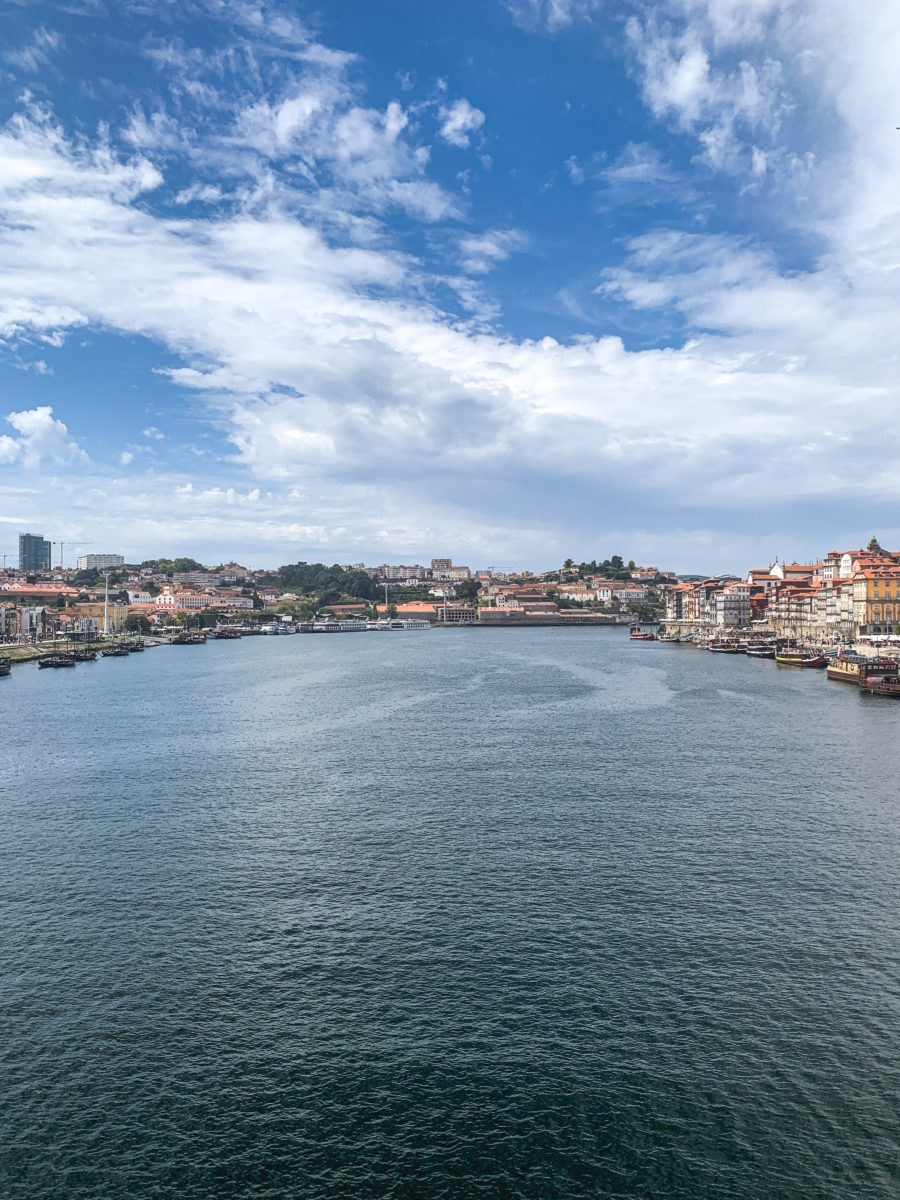
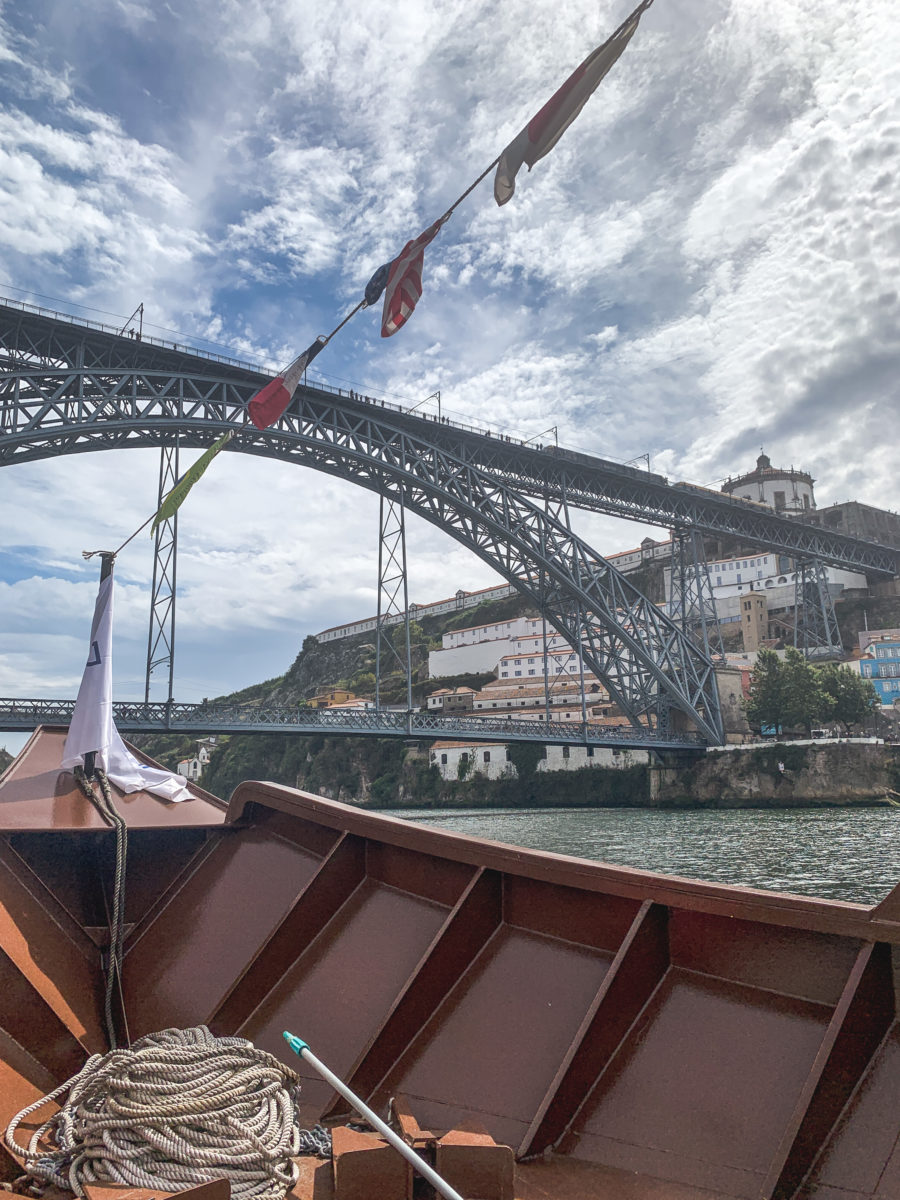
Several companies offer cruises on the river. From a simple 30-minute tour on the Douro to a multi-day cruise, you are spoilt for choice. As students, we were on the lookout for a good offer to discover the Douro.
We found an offer from a maritime company (I really can’t remember the name) that offers the famous 6 Bridges sightseeing cruise with entrance to the World Of Discoveries museum/theme park that recreates the fantastic odyssey of Portuguese navigators, who crossed the oceans to discover an unknown world. Savings, beautiful scenery and knowledge, in short, everything we could want.
The 50-minute tour takes you on a loop along the Douro to the mouth of the river. The tour starts at the Ribeira quay. Each company has its own “landing stage”, often behind the people promoting the tour. Other companies leave from the opposite quay, so from Vila Nova de Gaia.
The 6 bridges you can see on this cruise are Luís I, Infante, Dona Maria, S. João, Arrábida and Freixo. However, don’t expect a guide to explain them to you. It’s simple, there are none for the cruises that are the cheapest. So, it’s mainly a nice nautical ride that allows you to see the beauty of Porto and Vila Nova from the river.
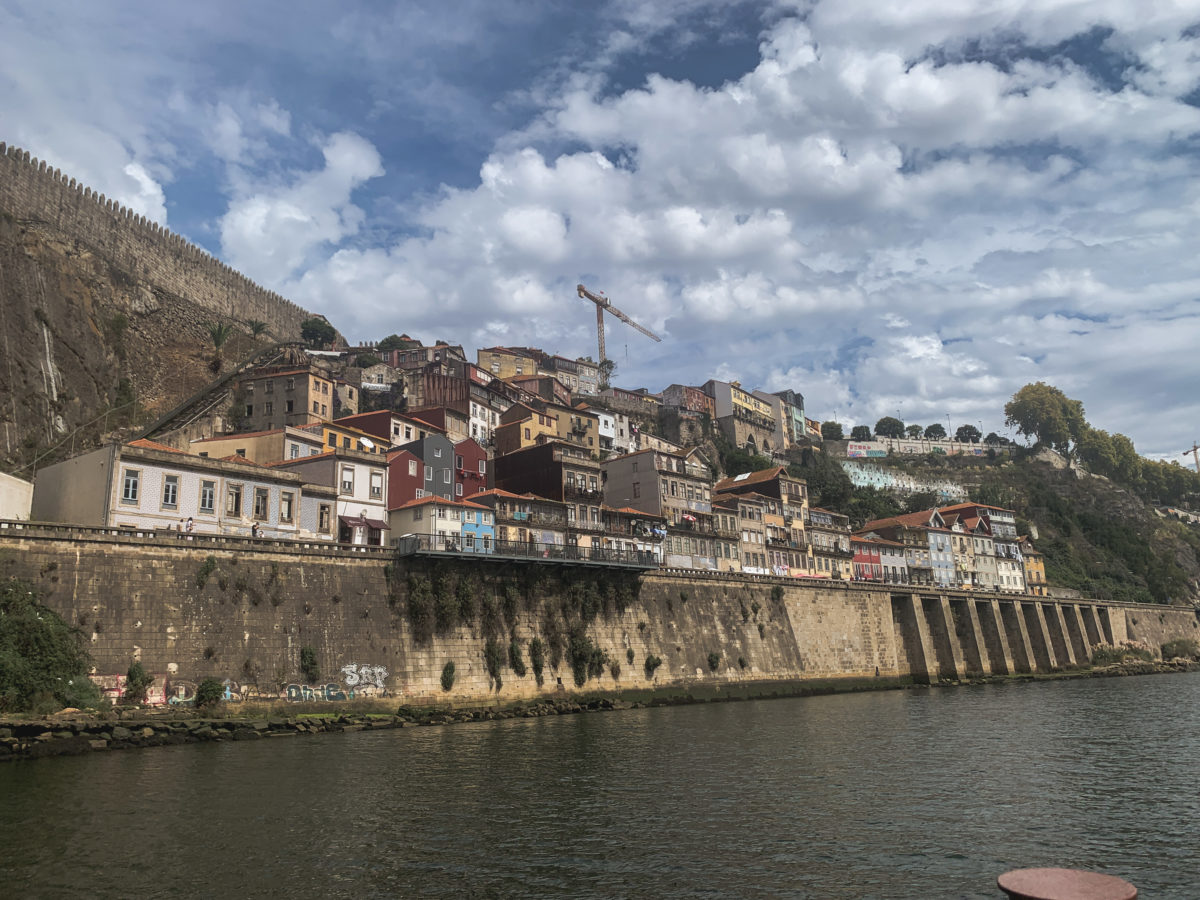
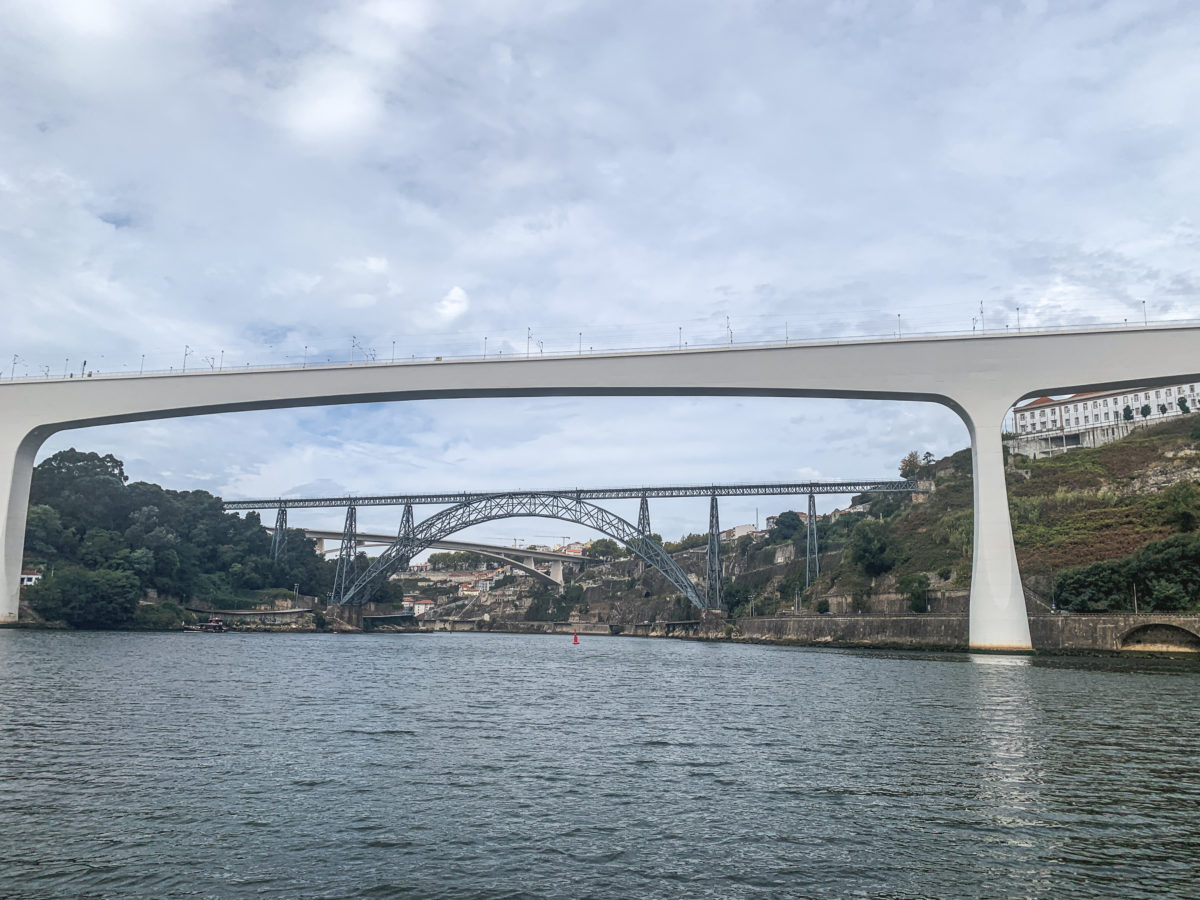
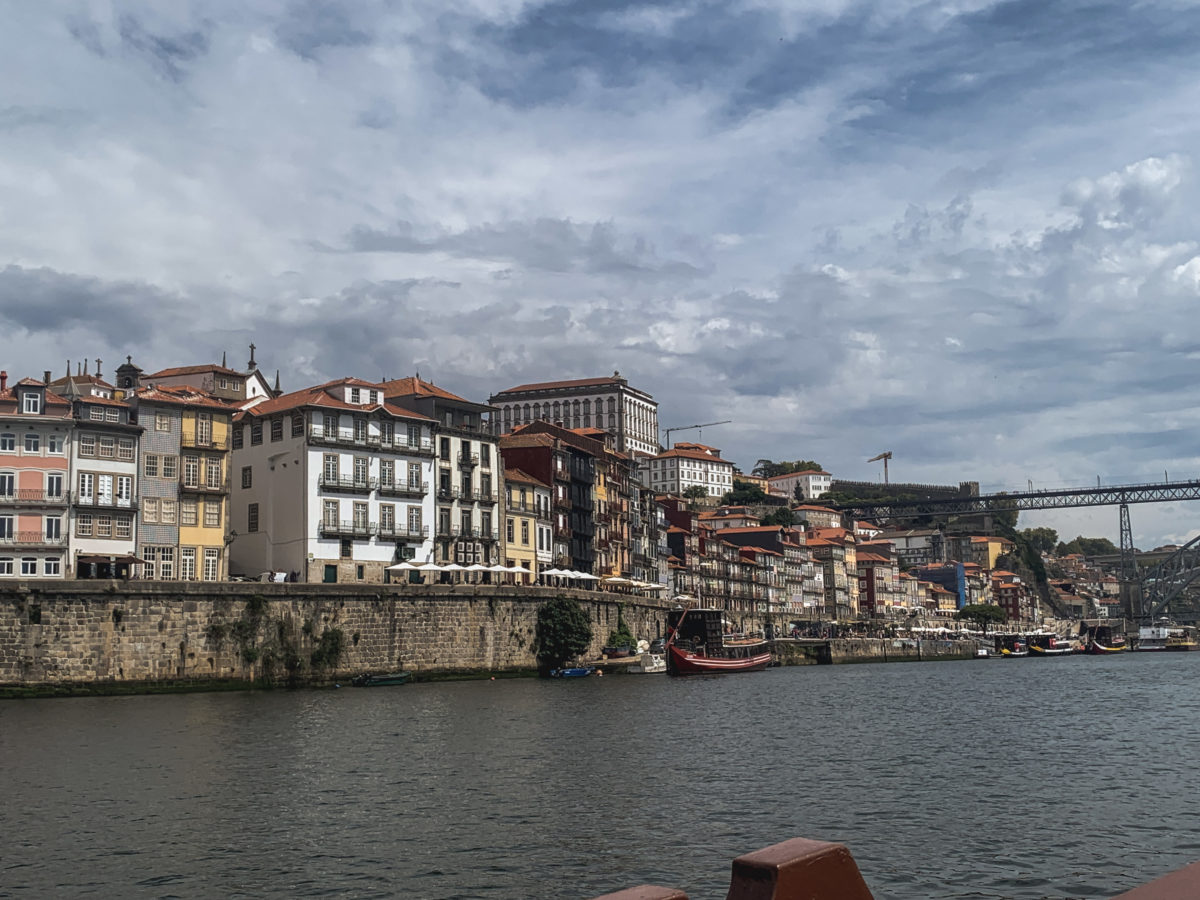
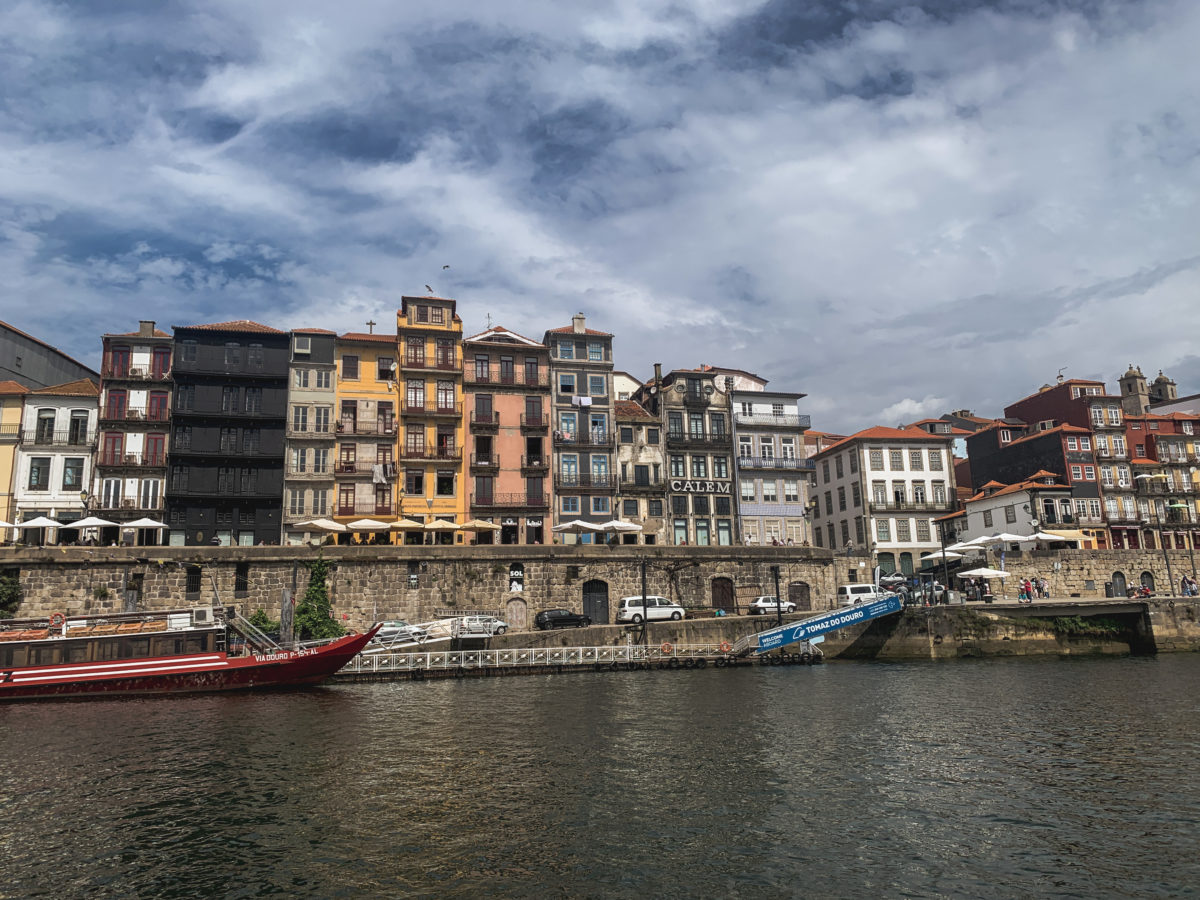
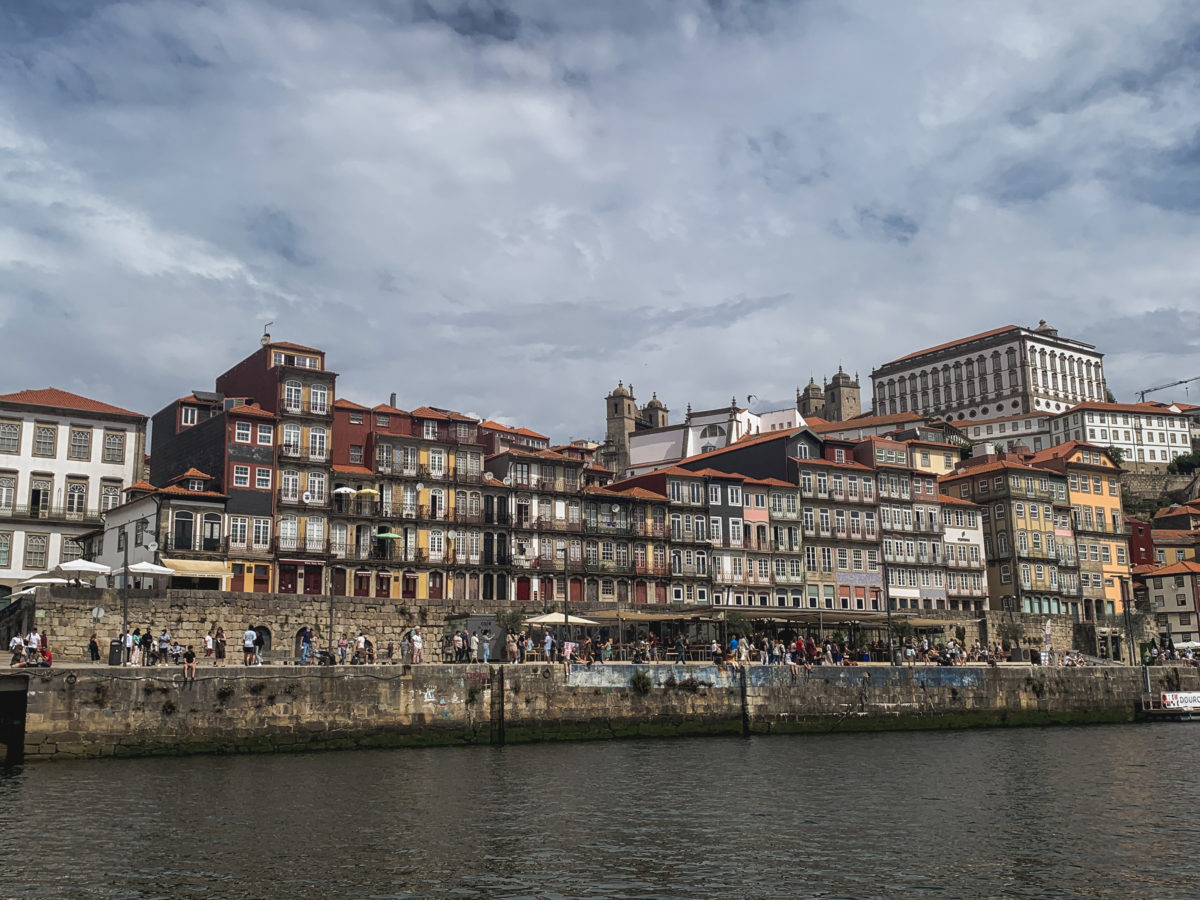
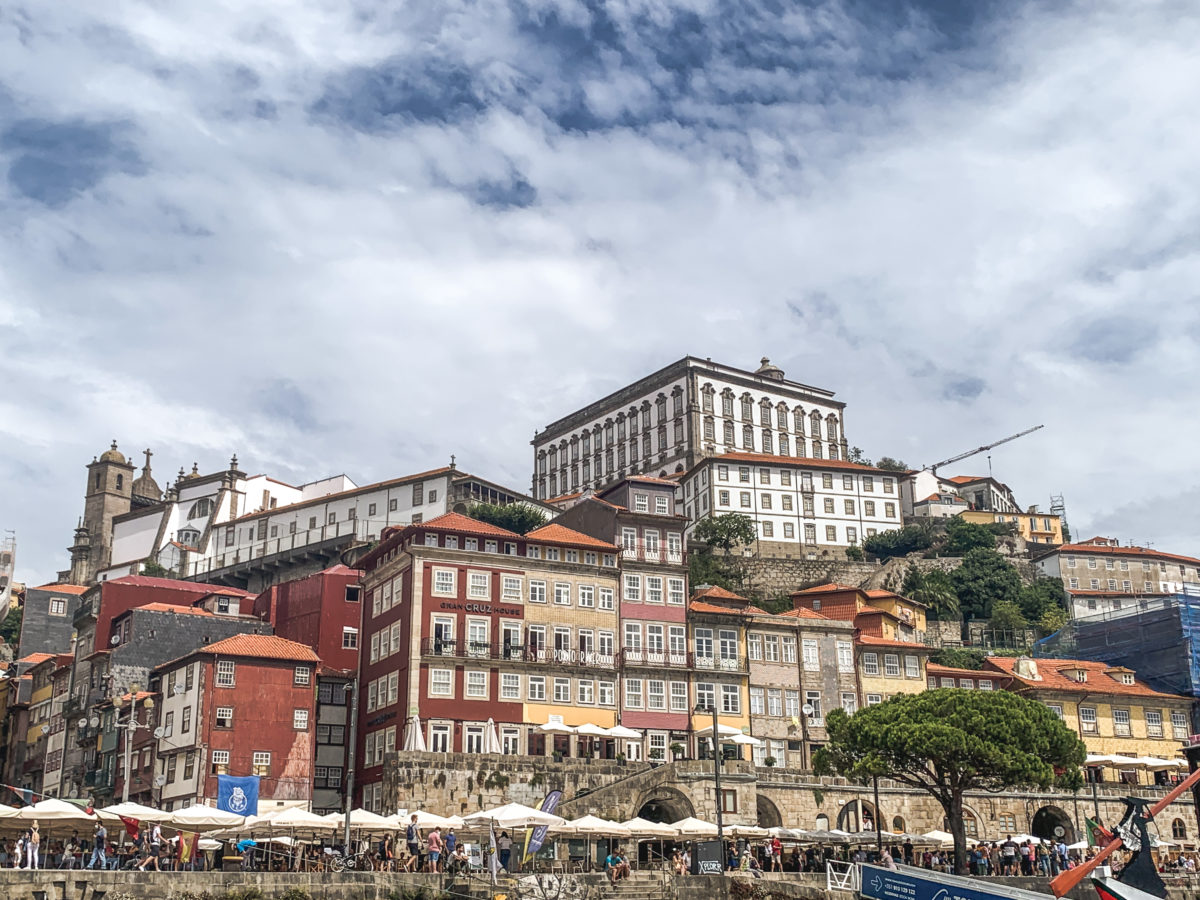
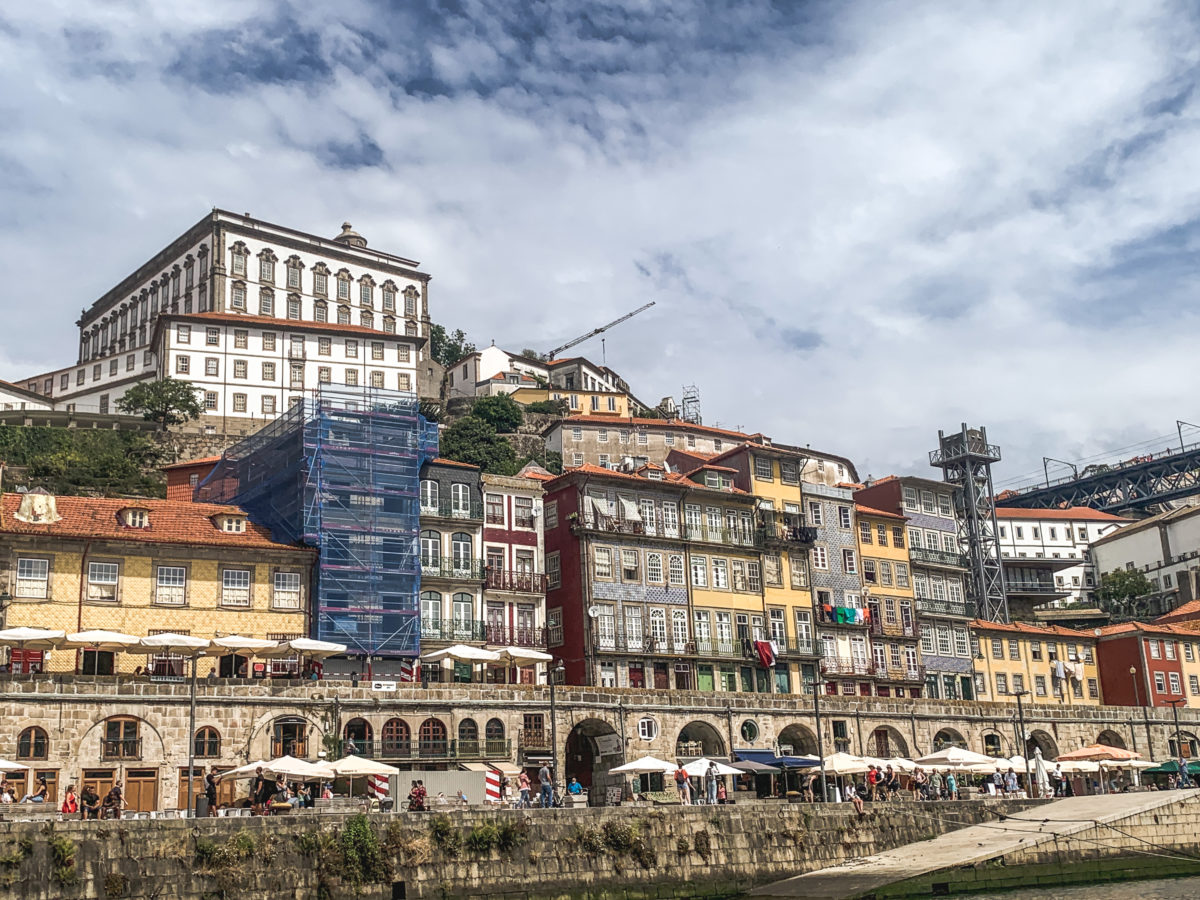

This is, in my opinion, the best way to feel the vibrancy of the Portuguese city: these typical and colourful houses, stuck to each other, the various bell towers or the Clérigos tower that emerge from the skyline of the city or a wider view of the city that almost takes us to the ocean. A little glass of port would have been nice, and I would have stayed the whole day walking around like this! Take some sun cream with you or a scarf… in September I got sunburned while my friend got a cold.
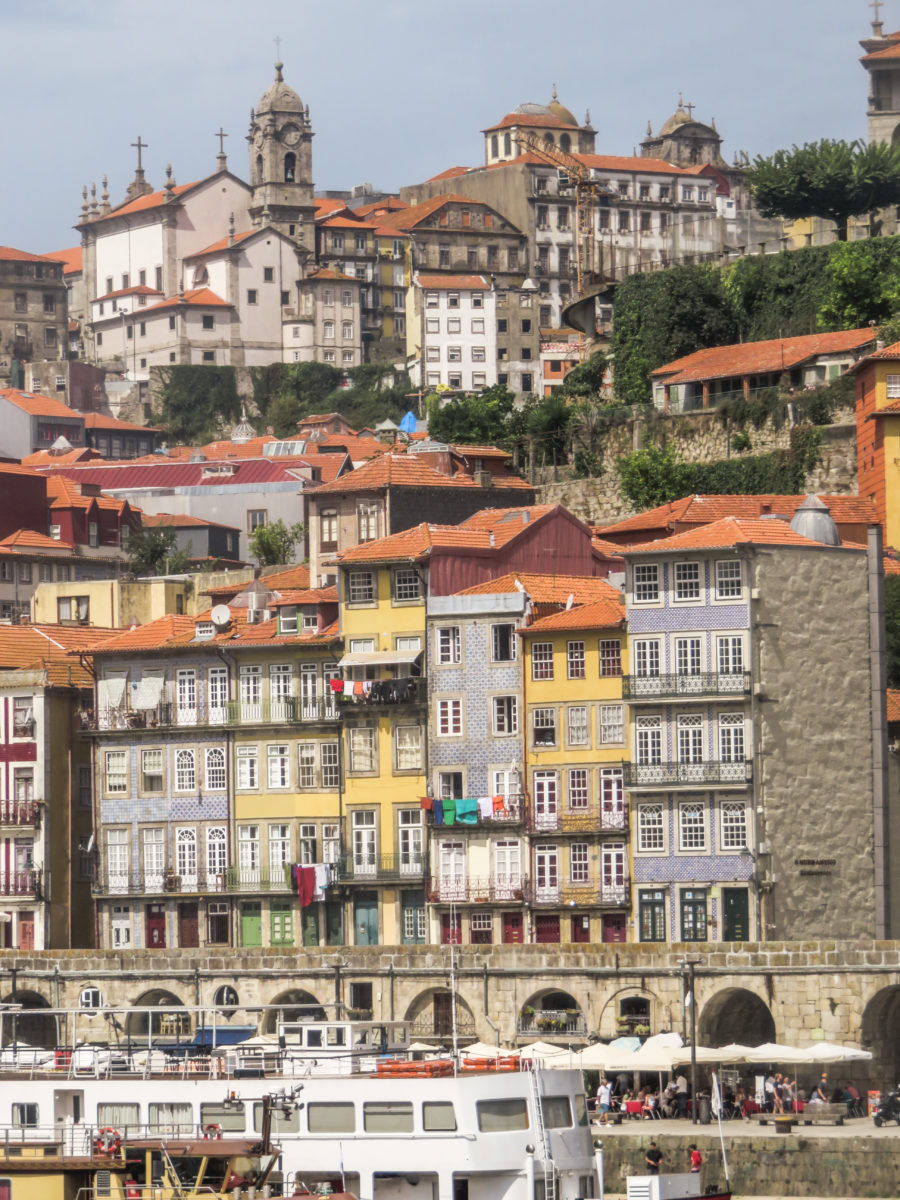
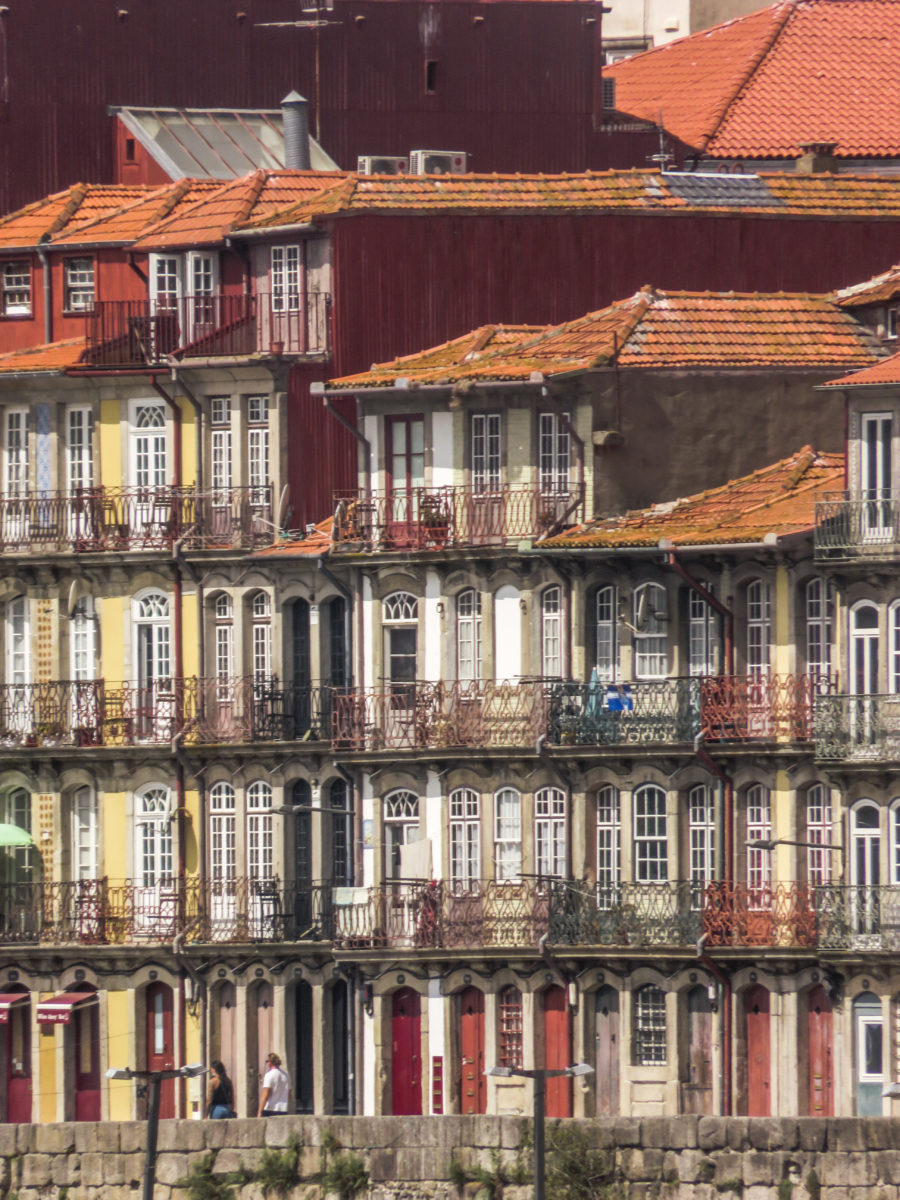
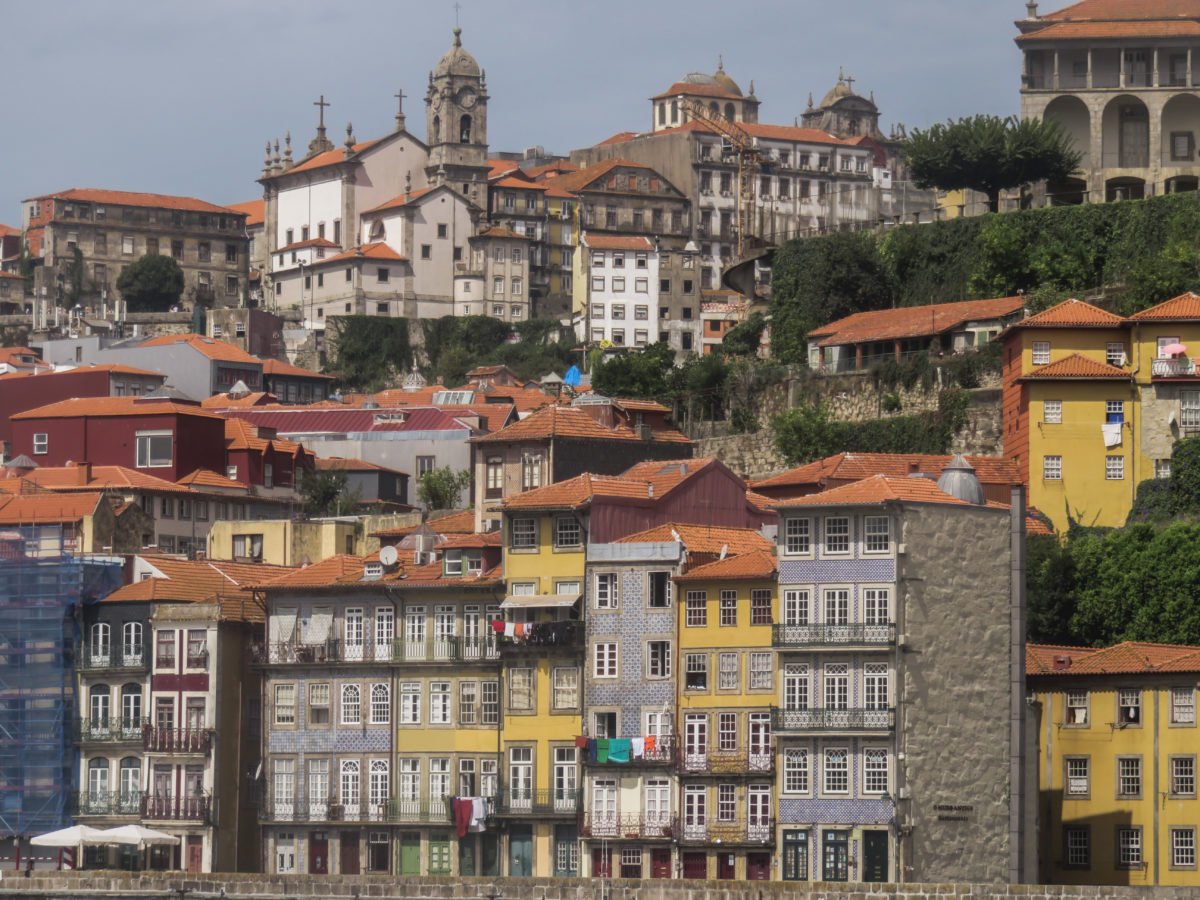
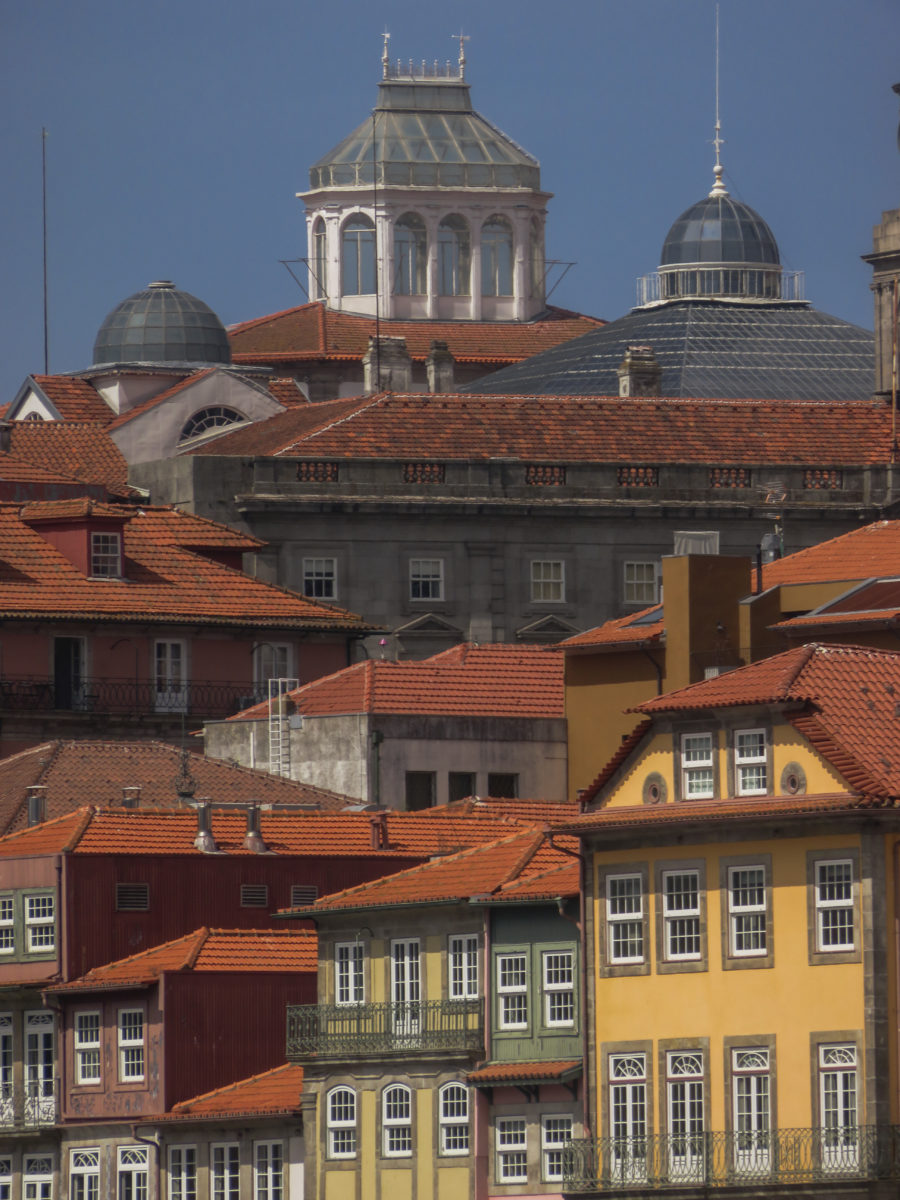

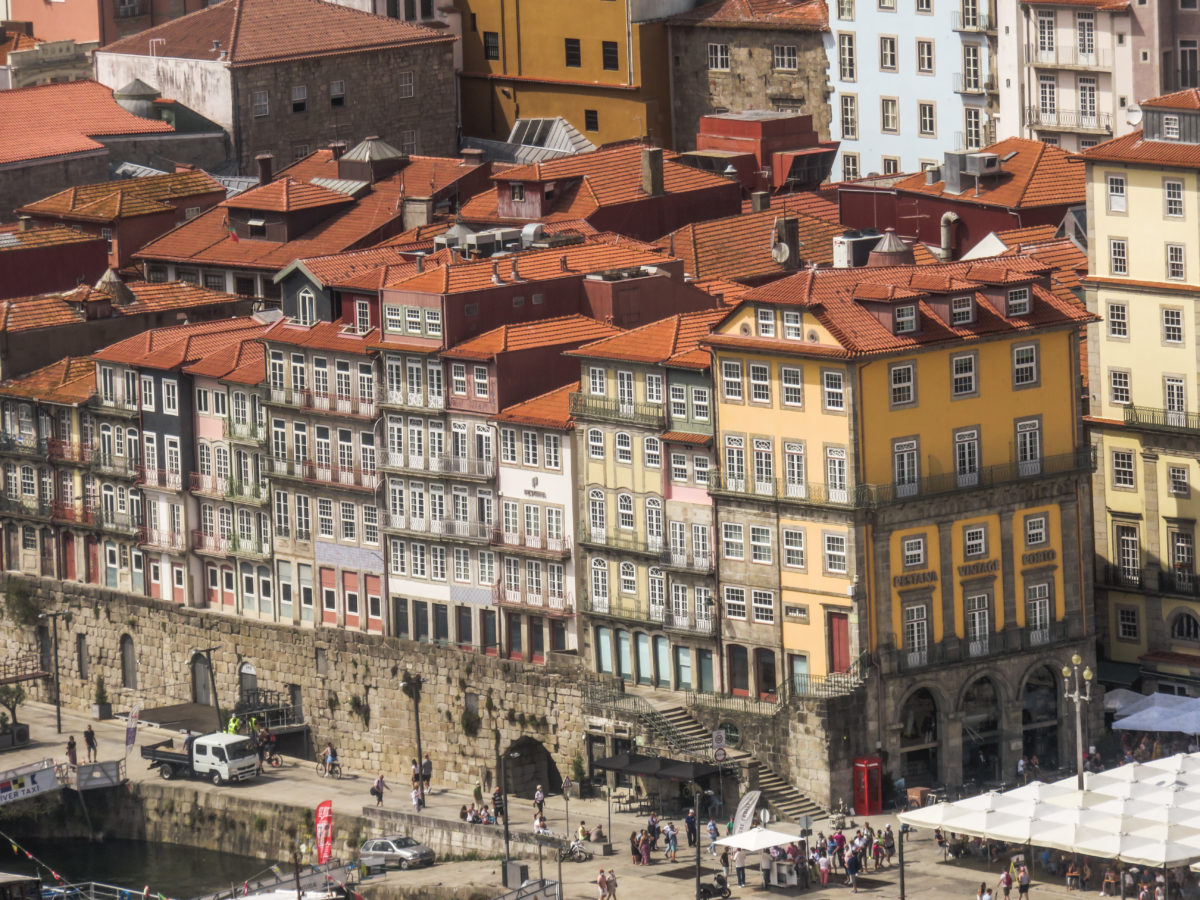
The visit of the World of Discoveries is very entertaining! The museum integrates a theme park (yes, a bit like Disneyland) where you can simply sit in a boat and discover the various adventures of these courageous sailors. You will also learn more about the various boats used, life on board, etc. A nice discovery that would not have been possible without the combined offer of the maritime cruise.
Useful information
Where to sleep in Porto
For the modest sum of 35 euros per person per night, we stayed for 4 nights in a superb Airbnb in the Cedofeita district. I recommend it; with a host, Marisa, who is a good listener and very happy to talk about her city and to welcome people from all over the world. A nice exchange! Don’t hesitate to book with her.
Best addresses in Porto
The Portuguese are warm and welcoming people who love to party, however, due to the pandemic most of the bars were closing very early (around 10 pm) so we were unable to enjoy the nightlife.
We also ate well during our trip, the next 2 addresses are in this sense:
Brunch: very or even too fond of brunch, I can only recommend this address which also has restaurants in Lisbon, Madrid and Barcelona: Le Zenith – Brunch and Cocktails Bar. What convinced me to go there? The famous tapioca dear to my heart discovered in Brazil. A treat!!! And very good prices.
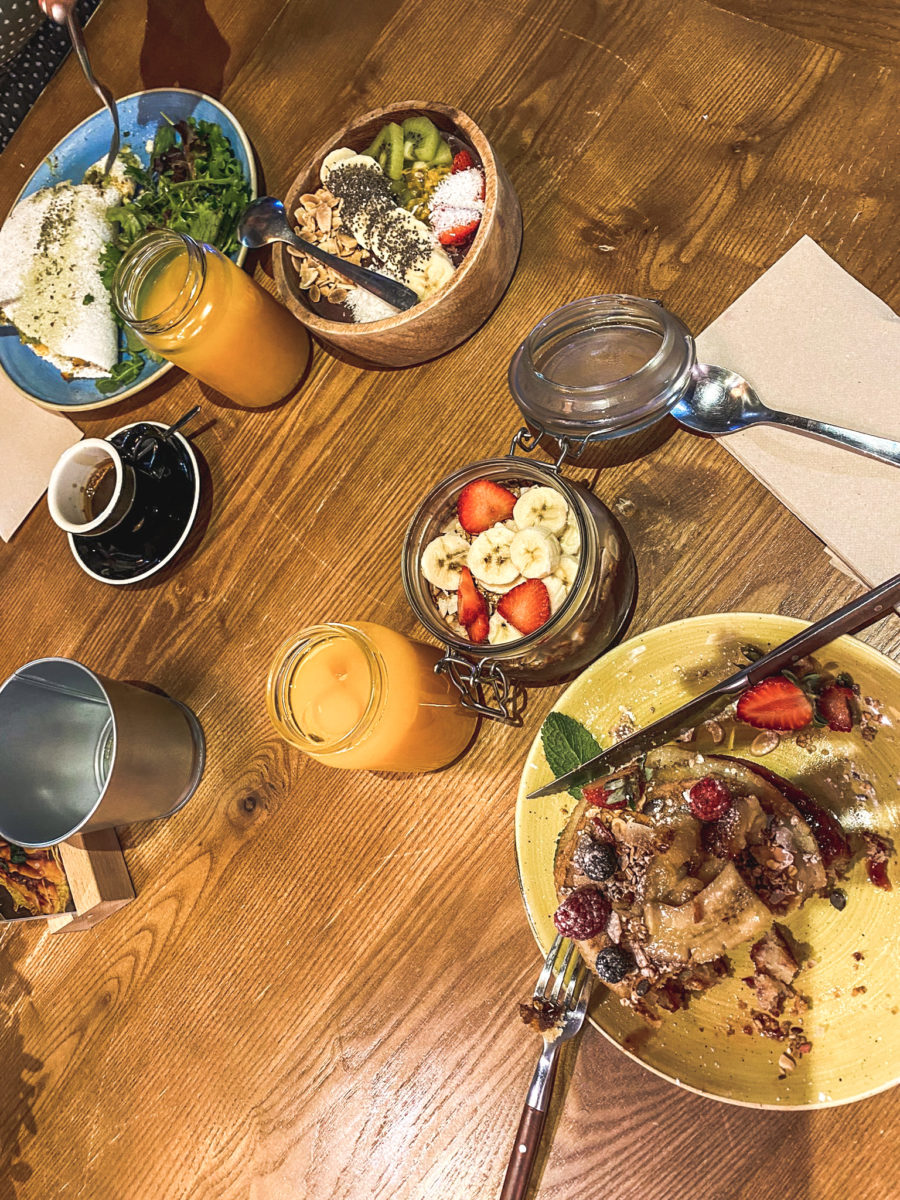
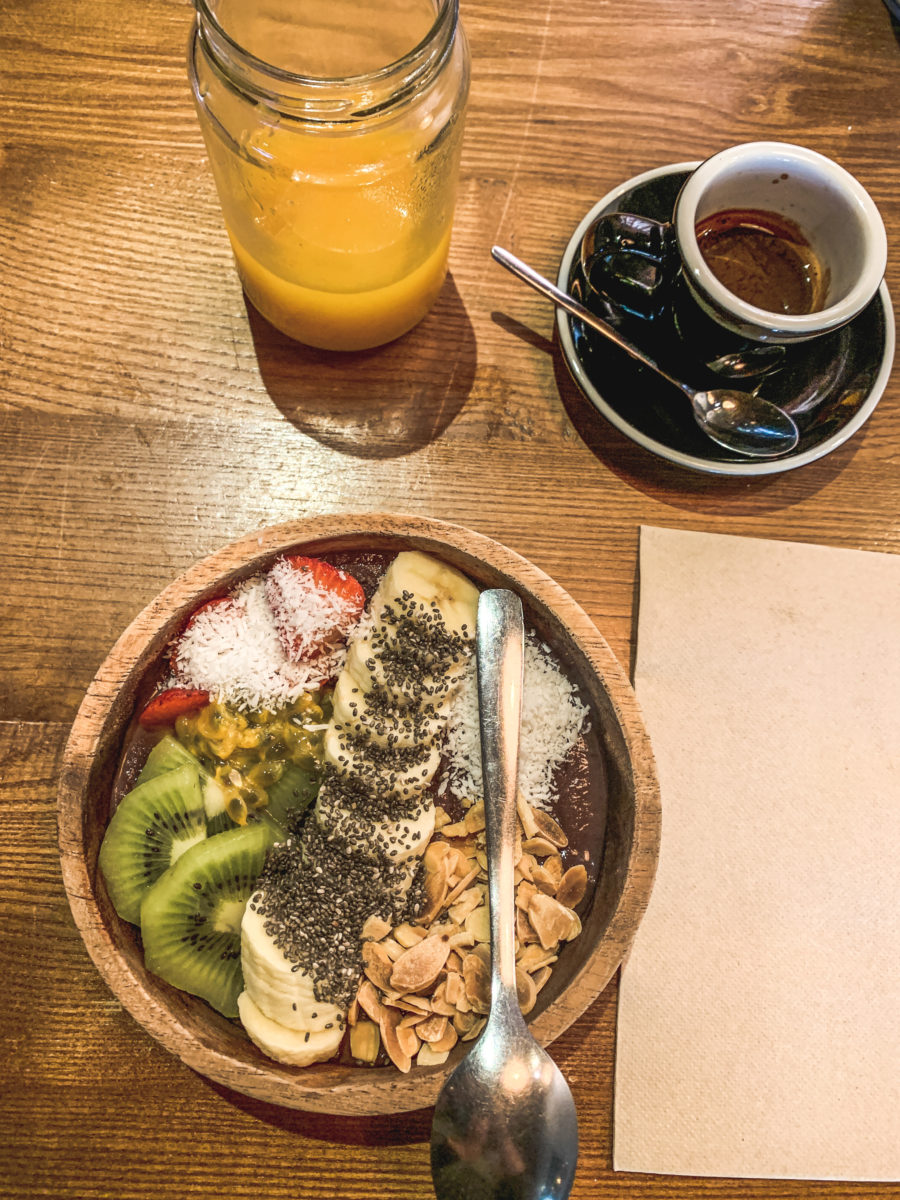
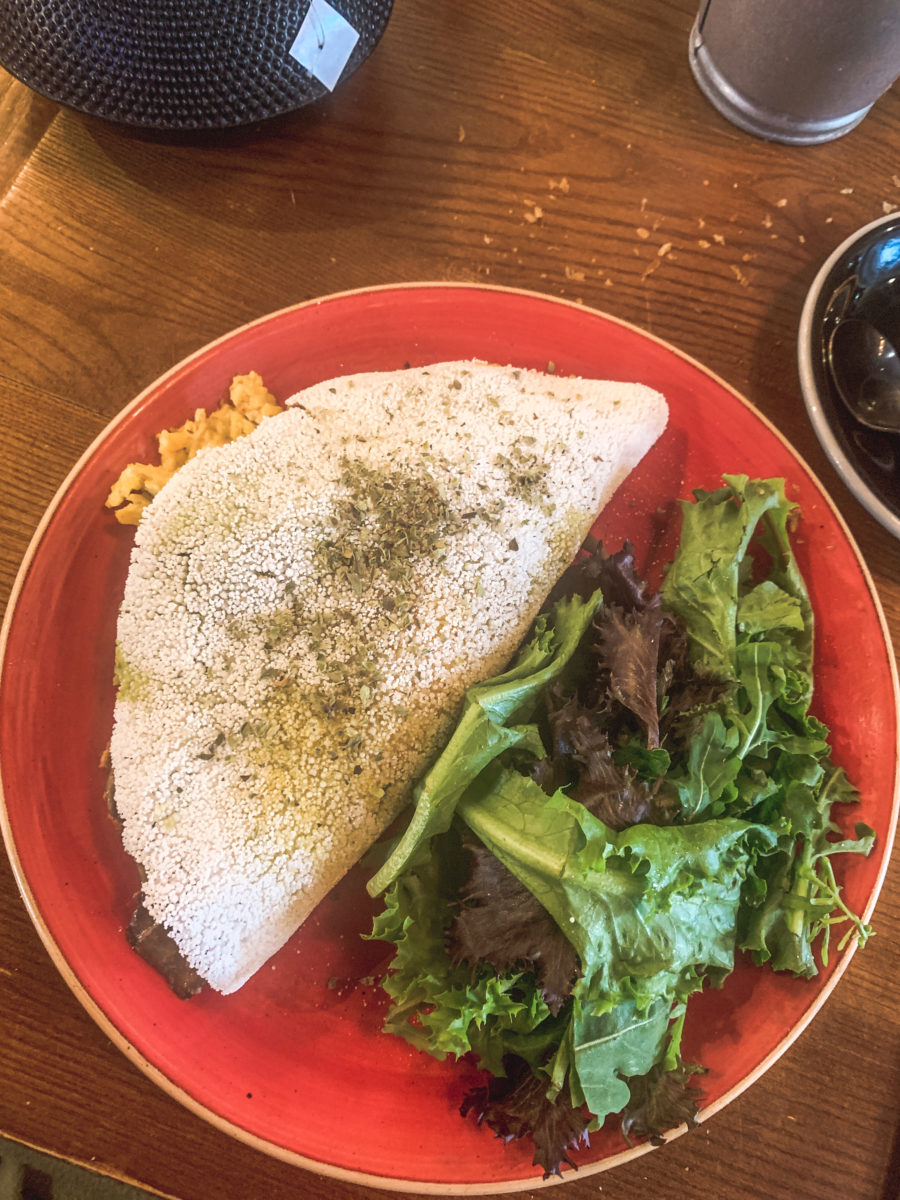
In the historical centre, we discovered a charming address with Italian flavours and more precisely Sicilian: Mizzica. The apéritif with a garnished board was delicious, as was the pasta we tasted. Fresh products that delight the palate. Special mention for their white wine list!
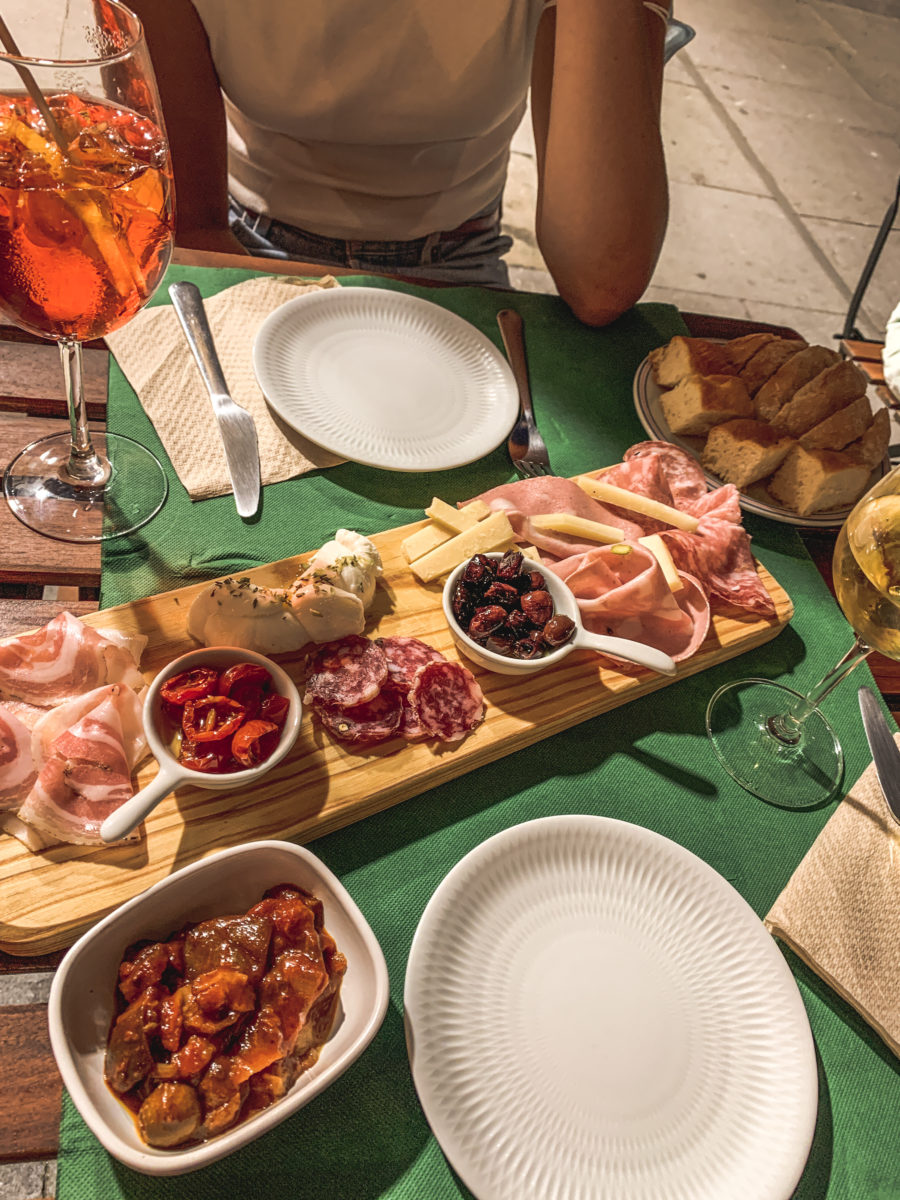
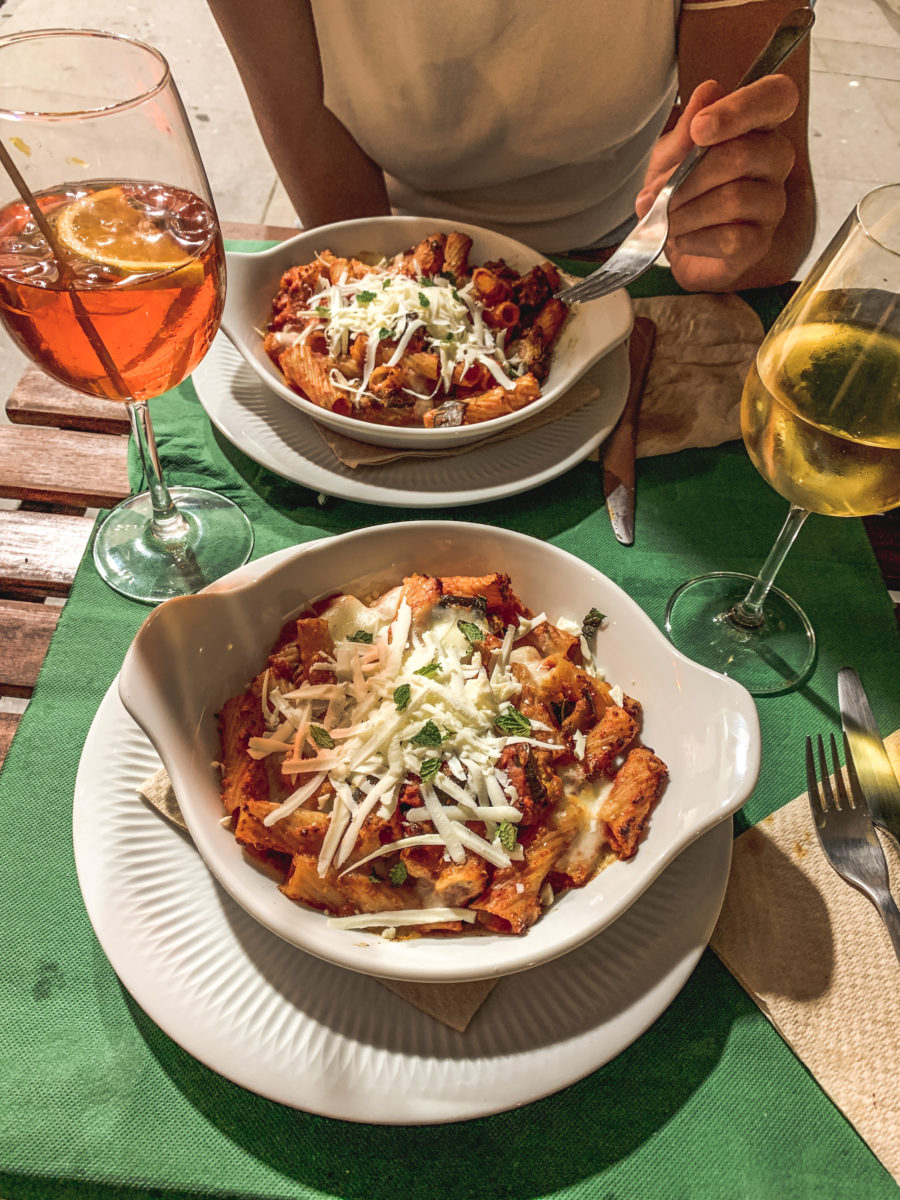
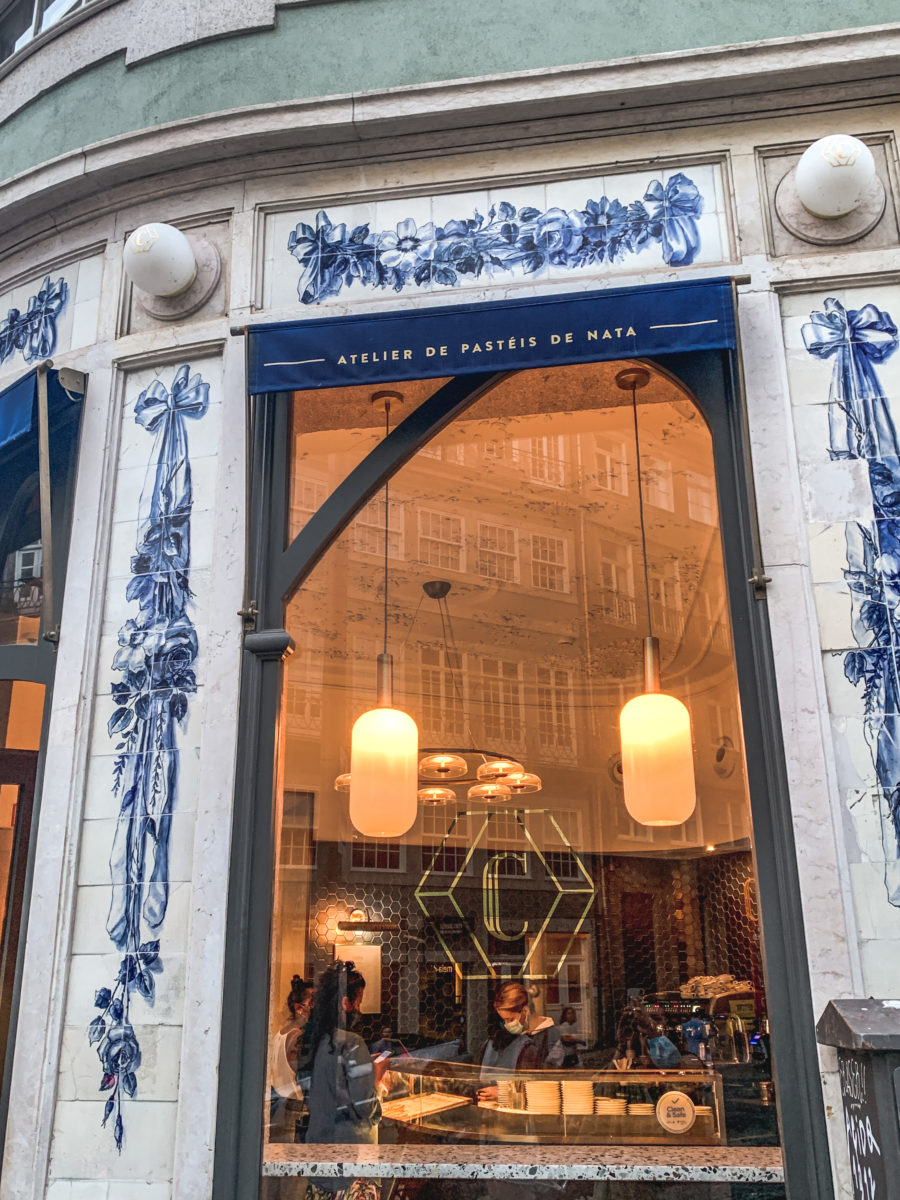
What I would have liked to visit again
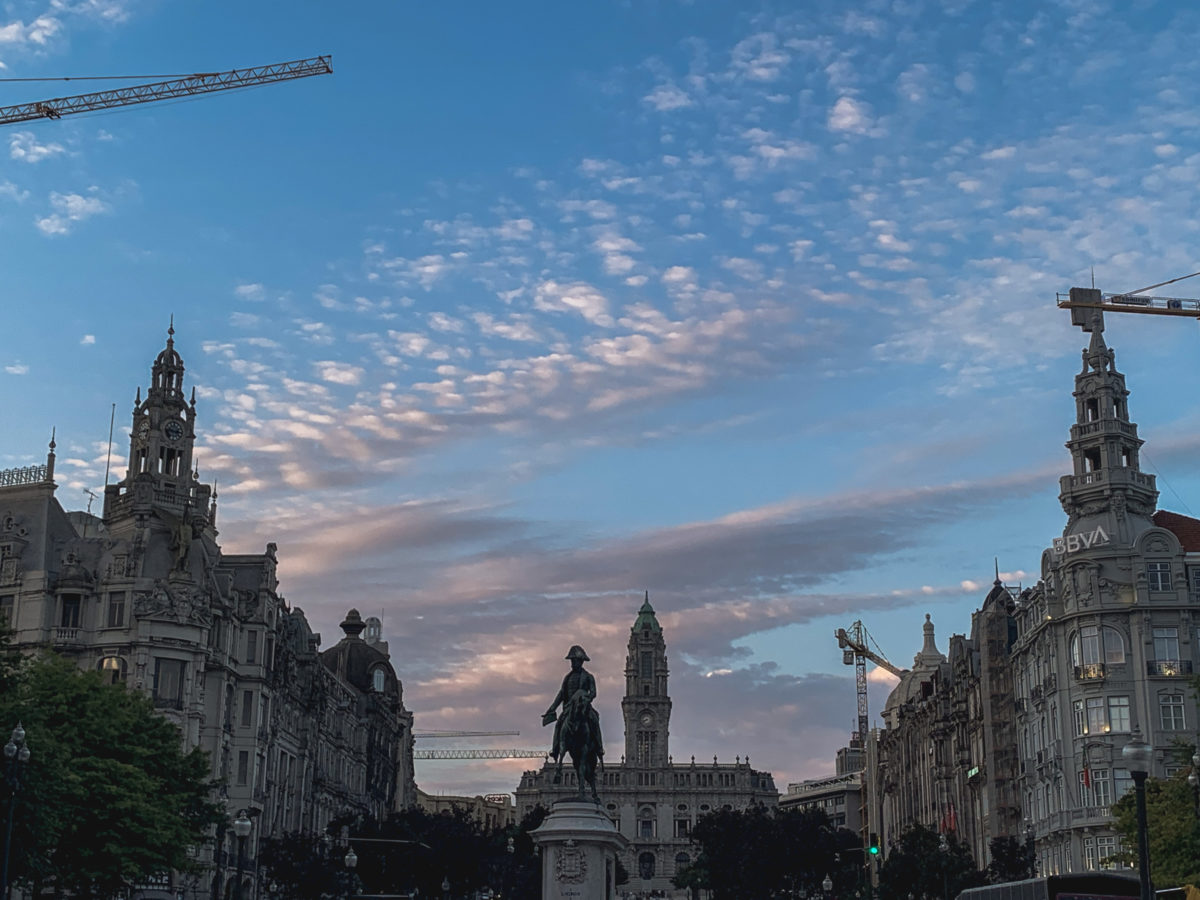
5 days were not enough to satisfy my great curiosity about Porto. Here is a small list of places I will have to visit for my next trip:
- FC Porto Museum and especially to see a match at the Estadio do Dragao
- See the Bolhao market after its renovation (estimated 2022)
- Discover other gardens, including the Palácio de Cristal
- Discover the Bolsa Palace

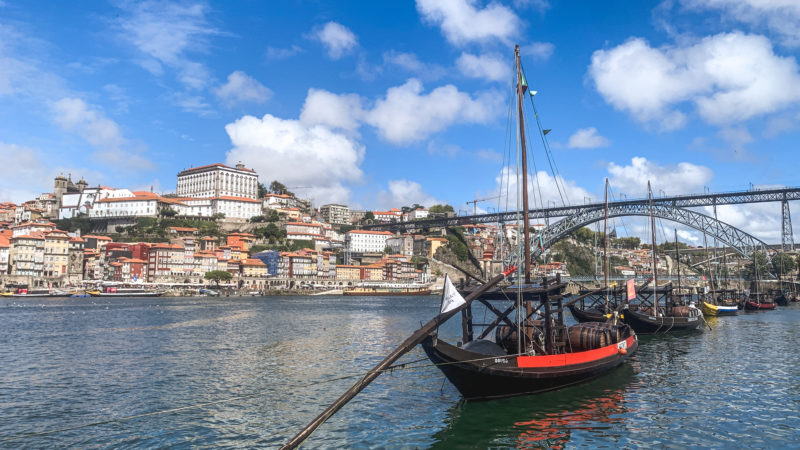
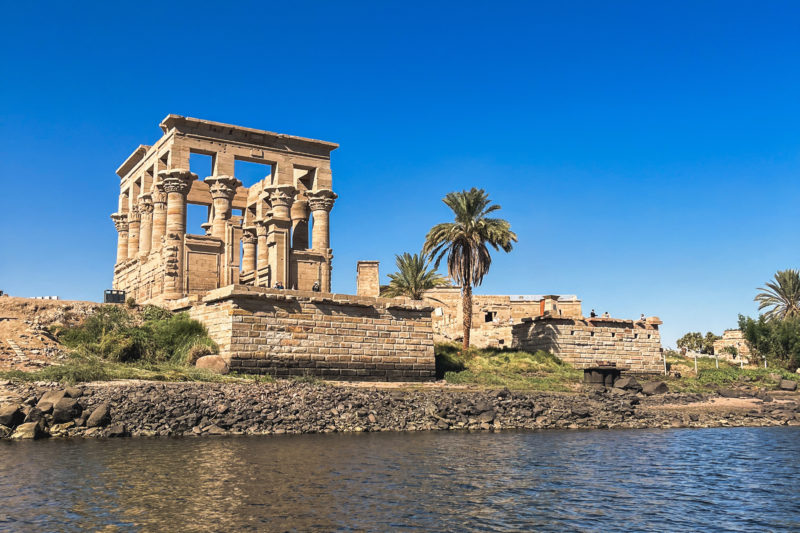

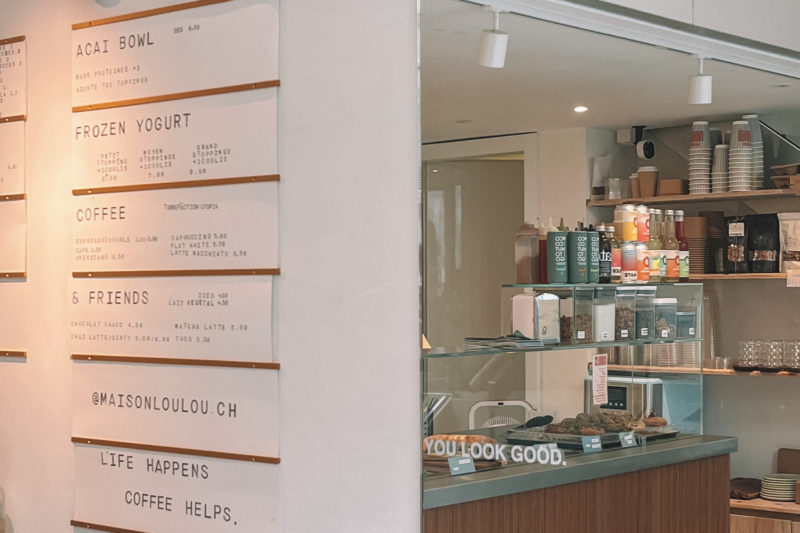

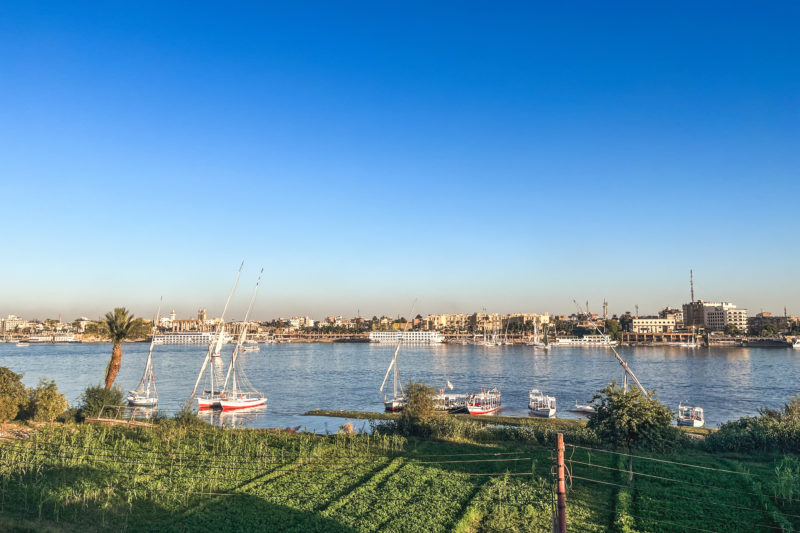

Love your writing, the bits of humor and the great pics to illustrate it all! Great article! I really want to go visit this city again, I had no clue it had so much to offer, and so diverse!
You definitively have to make a new appearance in Porto. That city will catch your breath away, Catalina! Thank you for your lovely comment.